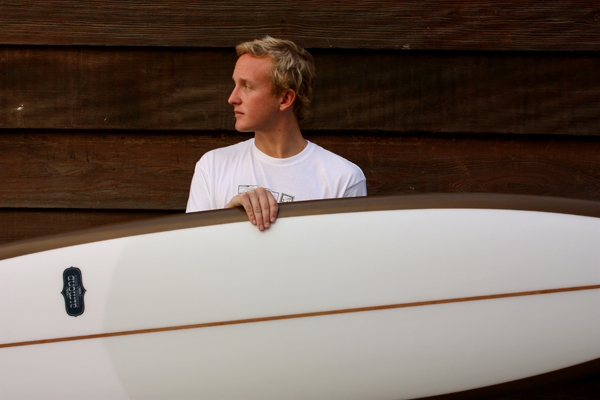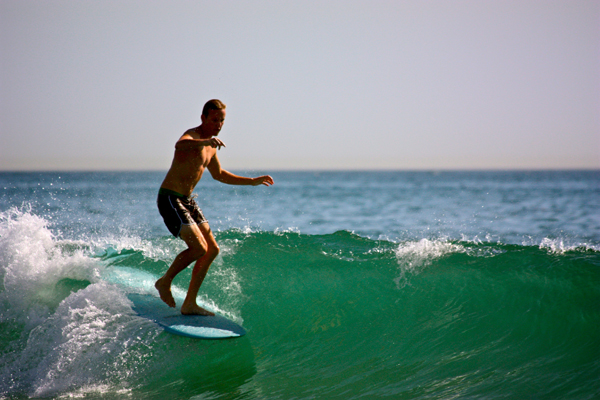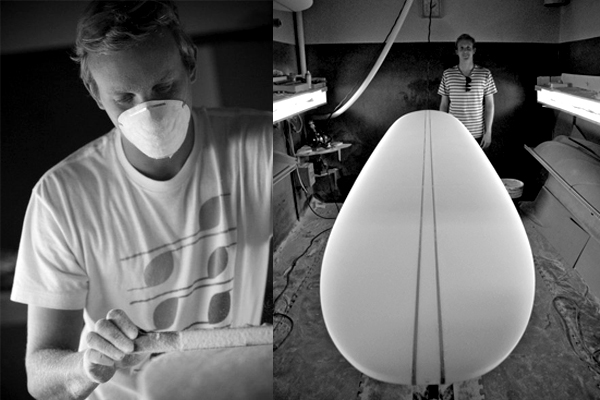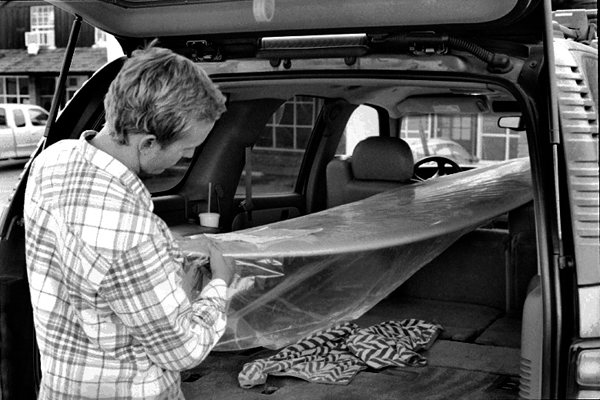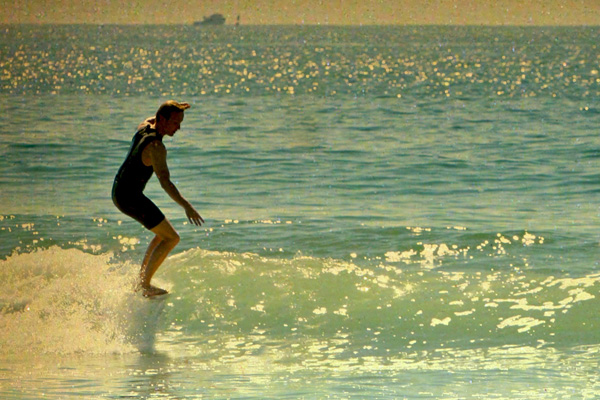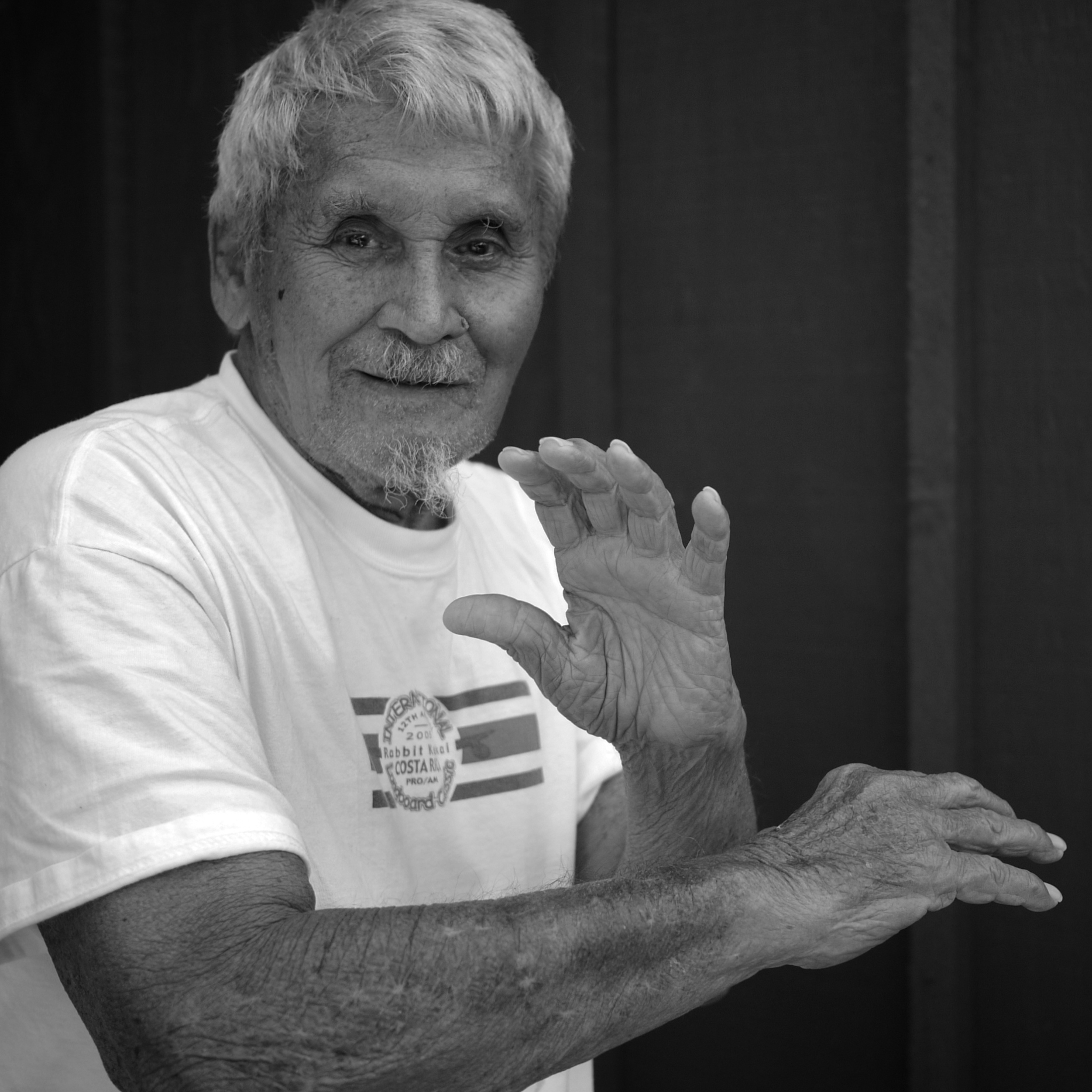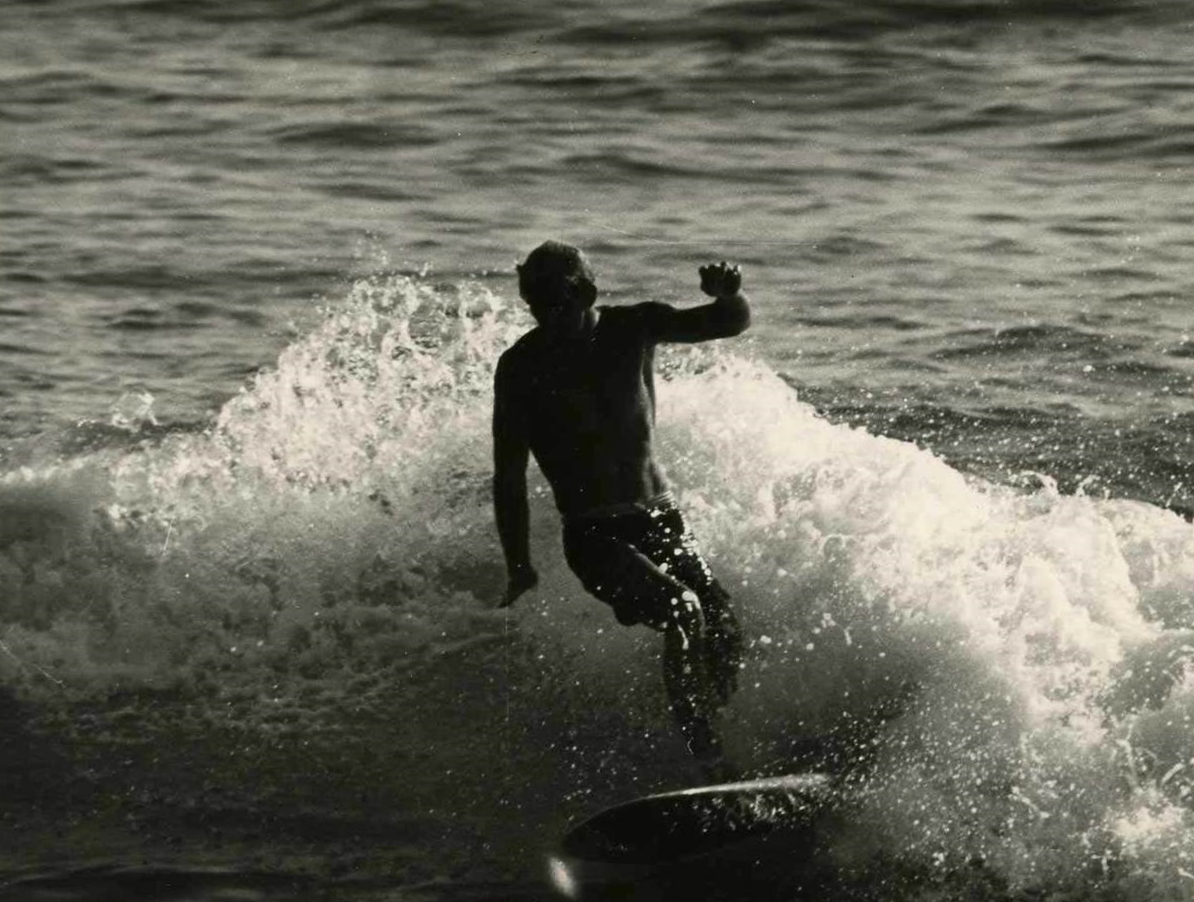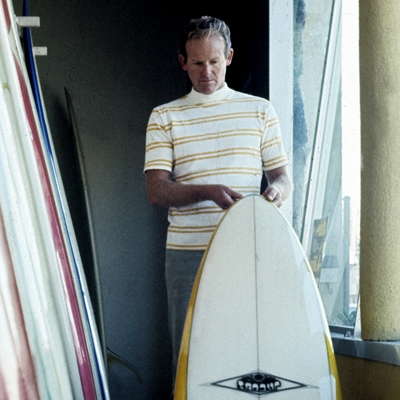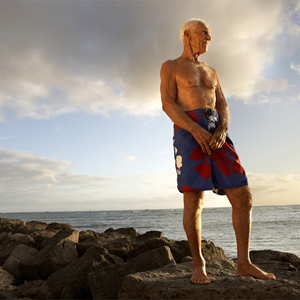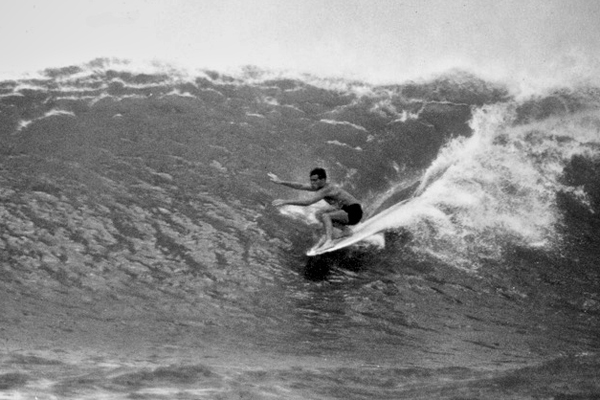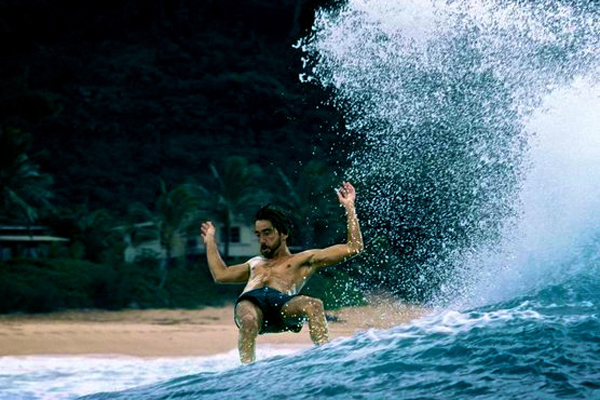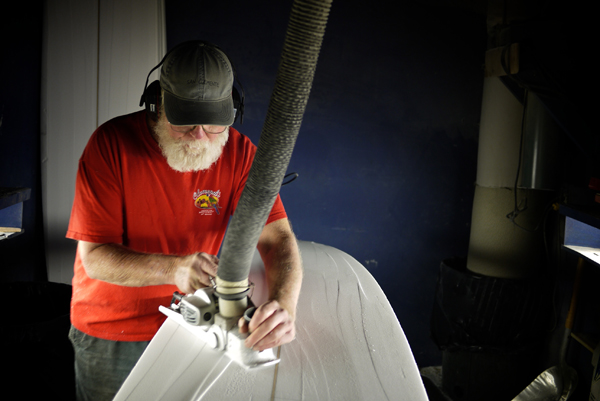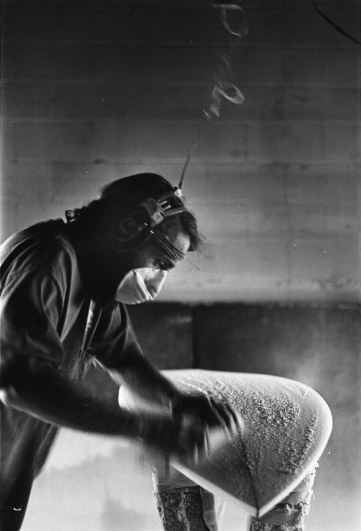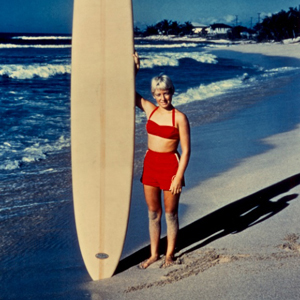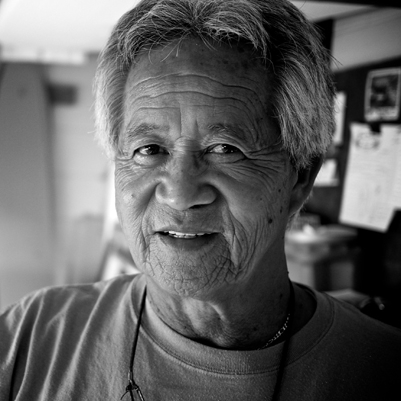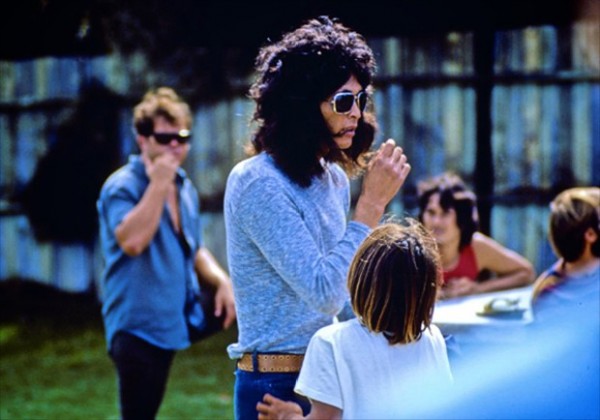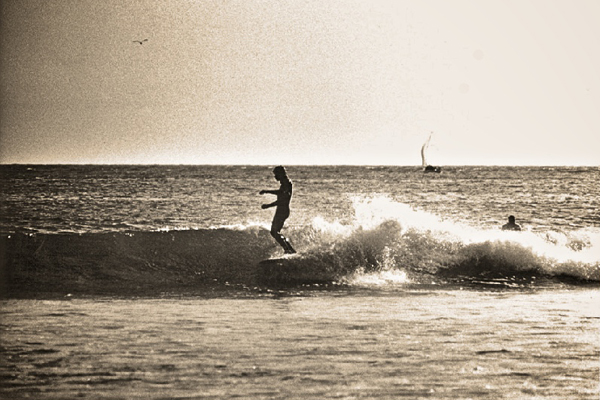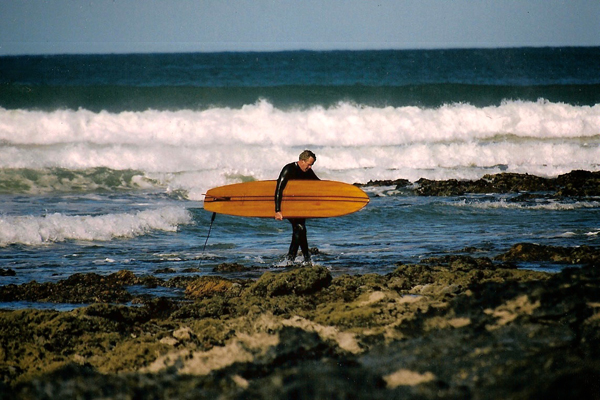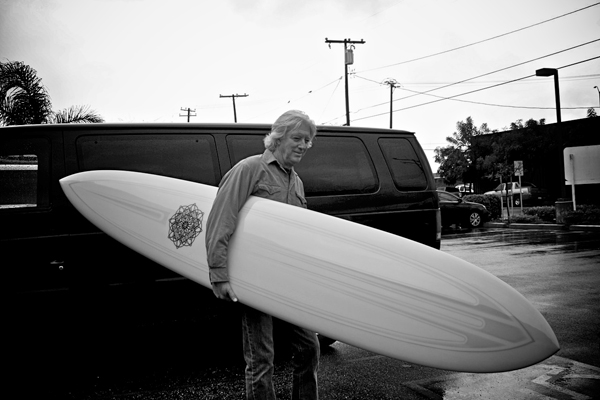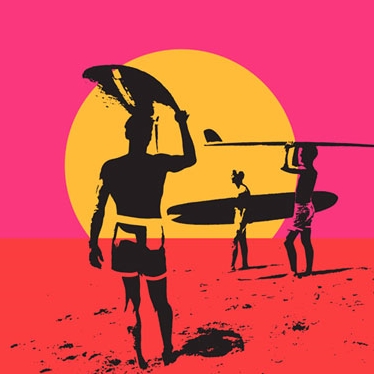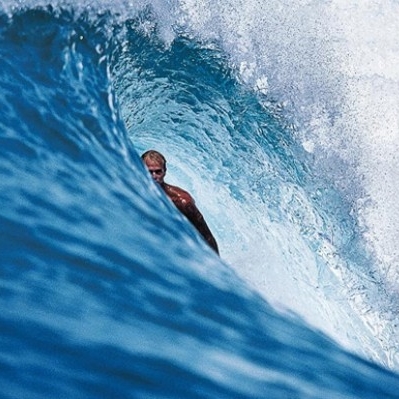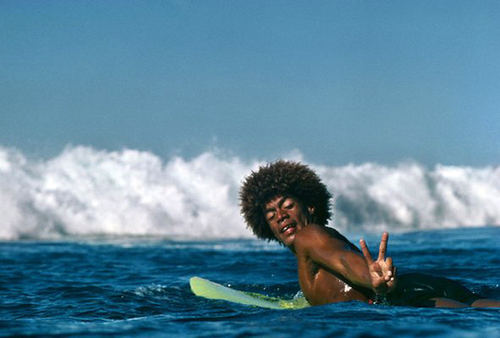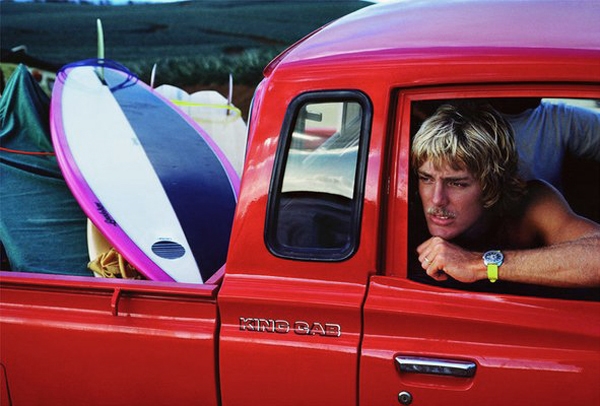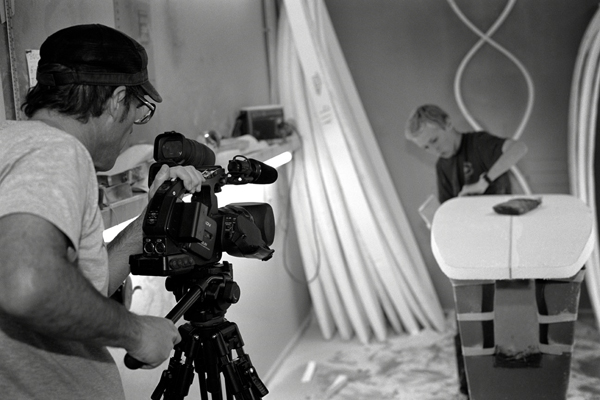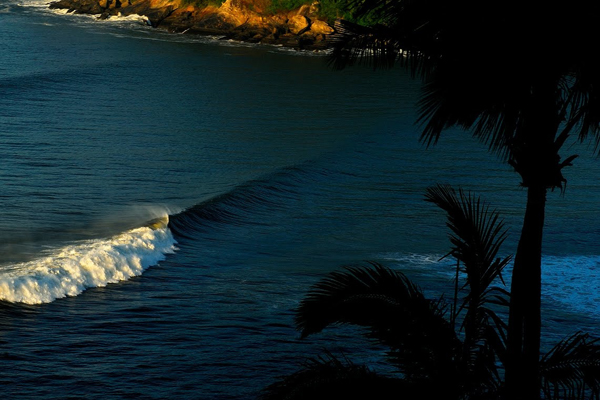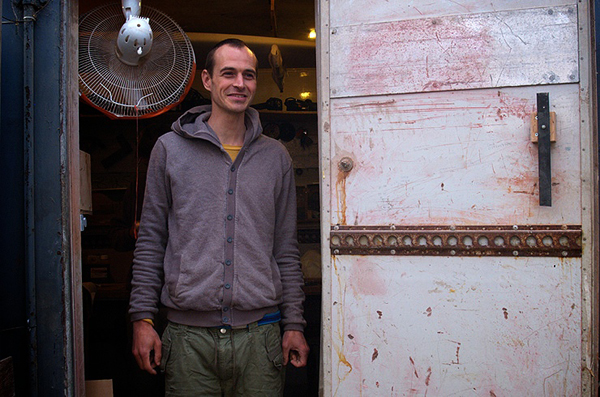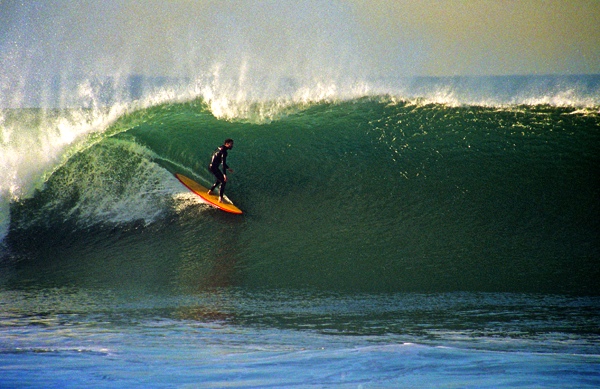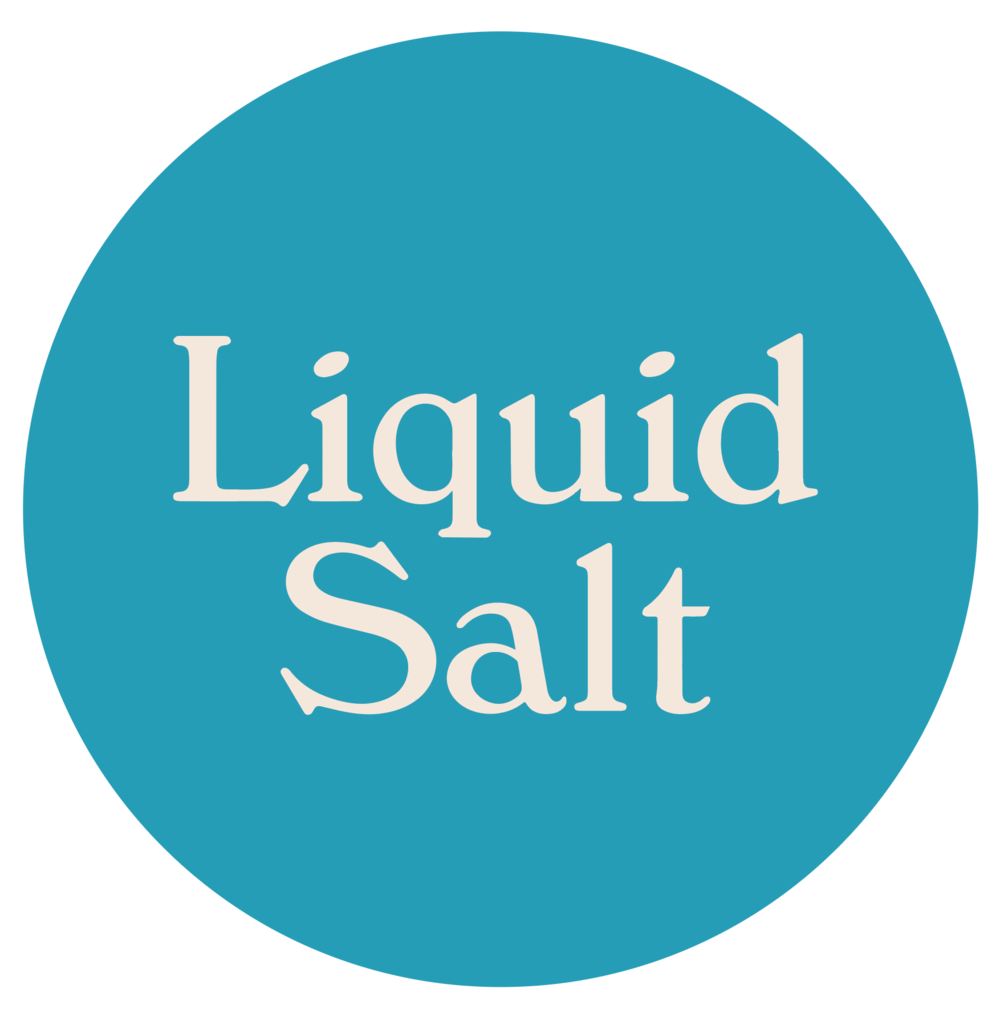Ian Zamora Interview
Ian Zamora is a California surfer/shaper. Growing up in the Phillipines, Ian has since been playing catch-up with the surf lifestyle he has grown to love. Under the tutelage of Rich Pavel and Glen Kennedy, he has quickly carved his own niche in the surfing industry. We spoke with Ian to learn more.
What was your life like growing up?
I spent the first 13 years of my life in the Philippines. We had a small beach resort out in the country, so I had a lot of time to stare at empty white sand beaches with no waves. Moving to California was a big change in my life—trying to fit in, bouncing back and forth with sports, etc. Until I was a late teen, I had no involvement with surfing whatsoever.
After high school, I was working with elderly people and working at hot rod shops. A few friends dragged me to the beach to go surfing. Since then, my life has been in warp speed trying to catch up for the years I missed out on with the lifestyle.
When did you get your first surfboard?
I learned on a board borrowed from a friend for a few months, then finally bought a used… Lost Speed demon board at the Ventura Surf shop. I think I paid $120 for it. I surfed that thing ’til it died. My first custom board was from a local shaper that became one of my mentors—Glen Kennedy.
What was the feeling you had when you first stood on a surfboard?
First time I stood up, I fell right off. I wanted to catch more! The first time I stood up and legitimately rode a wave was the day before I bought my first used board. (Laughs)
Who did you look up to and admire when you were a young man?
Because I had such a different upbringing without any involvement in surfing, I was an avid basketball and baseball player, and looked up to basketball and baseball stars of the time, but was never really interested in mimicking any specific player. Once I discovered surfing, I admired Taylor Knox for his disciplined approach and powerful style.
Of all the places you have traveled to, what place in particular stands out and why?
Each of the great places that I have been fortunate to visit holds a special place in me. Australia, Portugal, England, Bali, Hawaii, etc. all stand out in their own special way, so no particular place stands out.
Who or what inspires you?
Carla, family, people that are ready to lend a helping hand, anyone that pushes surfing and surfboard progression while still appreciating the history and old school traditional ways (like the art of trim, glide and flow).
As far as surfboard design and construction, I’ve been inspired by Glen Kennedy, Rich Pavel and the diverse crew of craftsmen that are pushing surfboard design to the next level—not to mention all the laminators, sanders, polishers and fin guys who are constantly innovating their techniques.
When did you start shaping?
I think its about seven to eight years since I started shaping. I was working at Kennedy Surfboards’ retail shop and I wanted to try out more boards, but just couldn’t afford it. One day, I asked Glen if I can buy a blank off him. Took it home that afternoon and started shaping it. I think I used our trash cans as stands and demolished our backyard with foam dust. A month later, I asked my parents if I could turn part of the garage into a shaping room. That’s when I knew I was sucked in to building surfboards.
Tell us about your boards.
The boards I shape are the boards I ride, but with the help of our team, we are constantly expanding, experimenting and dialing in our working quiver. If you can imagine it, I can shape it.
What is the greatest thing you have learned in your life?
There are a lot more things to learn out in the world than in a small room in school.
Do you have any regrets or wish you had done something differently?
If I could have change something? I would have started surfing earlier in life.
What meaning does surfing hold for you and how has it changed your life?
Surfing and its lifestyle has played a really important role in my life. I’ve met my other half (Carla Rowland), some great friends and traveled to places I always dreamed of.
What is your favorite board? Your favorite surf spot?
I’m fortunate that I get to play around with a lot of new designs. My favorite board constantly changes, but at the moment it’s my orange channel bottomed Twin Arc Tail Quad. My favorite surf spots would be First Point Malibu and Leo Carrillo—perfect testing grounds for new ideas.
What’s your favorite meal?
I’m Filipino… I eat ‘em all!
What are you currently listening to on your iPod?
My iPod got stolen, along with a couple surfboards, from my van in my driveway. Pandora is usually on while driving—Tristan Prettyman, Stone Mason, Sara Bareilles, Lani Trock, Adele, Jason Mraz. I’m diggin’ the raw sound of live acoustic tracks right now.
What are you most grateful for?
I am most grateful for Carla for standing by me and pushing me to do what am capable of, and my family for supporting and believing in me. And everyone that has continued to support us in this business.
What’s next for Ian Zamora?
It’s the time of the year where we get to travel again. Japan in May, Italy and Europe in September. New possibilities and opportunities with the new factory. Stay tuned!
Find out more about Ian Zamora and his shapes here.
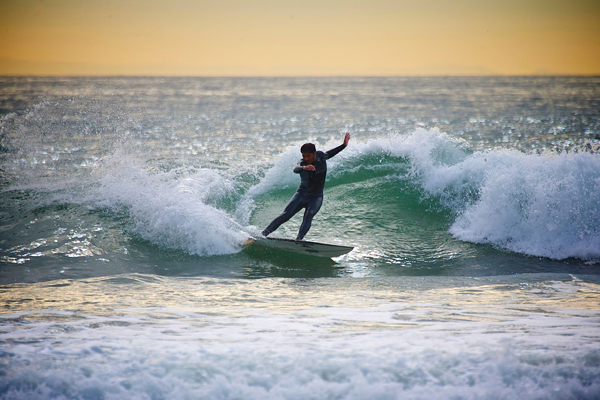

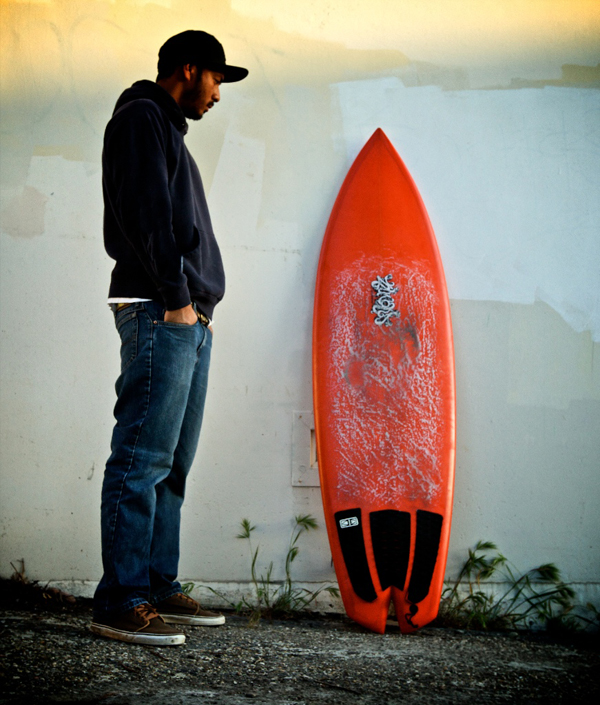
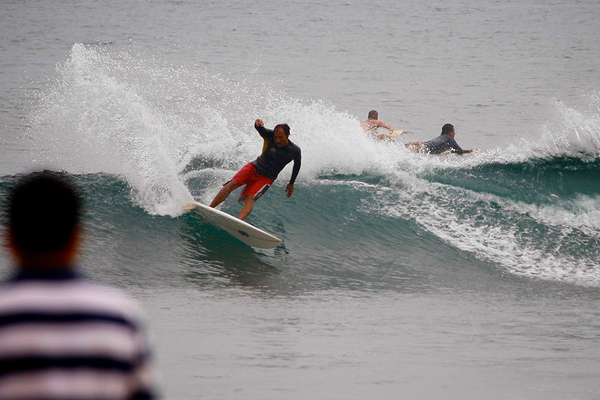
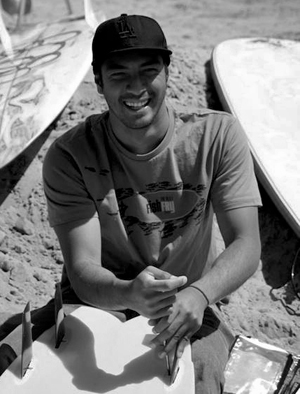
Danica Elbertse Interview
Danica Elbertse is a talented young California surfer/artist. Equally adept at sliding waves as designing an art deco poster, Danica has a unique style all her own. We took some time to learn more about what makes her tick.
What was your life like growing up?
I’m the middle child and the only girl. I have two brothers; we’re each a year apart. Weekends were “family time.” My dad loves his boat so we were always, always on the water. We traveled to the Carribean and Mexico a lot but I definitely grew up in Dana Point Harbor. If we weren’t near water, we went camping in the desert.
We ain’t really city folk, so any chance we got we were outside. My dad wouldn’t really let us watch television… and he still doesn’t. Besides playtime, I also grew up with the family business, American Eagle Wheel (started in Huntington Beach). Been making wheels since 76’ in the U.S.A. and still do today. I remember seeing lowriders at the car shows when we lived in Chino. When we moved to Orange County, my mom would pick us up from school in her lowered suburban and people would kinda trip out. This was before soccer moms had 20s.
When did you get your first surfboard?
I believe the very first board we got was when we moved back to California. However it wasn’t until I was seventeen that I really knew what I wanted to ride and got my first log. It was a Model T by Donald Takayama. It changed surfing for me completely.
What was the feeling you had when you first stood up on a surfboard?
Wish I could remember, though some days it feels like it’s the first time… .so I’d have to say goodness – with a little bit of “woah”
Who did you look up to and admire when you were a young girl?
Well I looked up to Madonna a little but that all changed when she started rapping. I looked up to my mama and papa as well and thank God they have good taste in music. People didn’t so much inspire me, I was more interested in their creative output.
Who/what inspires you?
Culture, the West, Art Nouveau, Mexicans, Christian Dior’s “New Look,” The Talking Heads, jazz, blues, Egon Schiele, Georgia O’Keefe, Agnes Martin, France, books, outer space, the South, my friend Matt Kim, Sophia of the Mermaid Bones. And all the kids ‘round here doin’ something creatively their own.
In surfing – innovators, influentials, shapers, and icons are all necessary… but I get more excited about the young “nobodys” who are strange and weird. Even the ones I will never meet. I like just knowing they’re out there doing what they do. I saw some footage of Linda Benson the other day. It made me very excited.
What is your process when you create your art?
Candles. Tunes. And a monumental mess. Of course, me crying my eyes out to Edith Piaf’s “Hymne a l’amour.” SO French.
What is the greatest thing you have learned in your life?
Love, most importantly. Also the hard lesson of learning that my parents were in fact… right.
What are you most proud of?
At this point in my life, it is good to have all my fingers and toes in tact. Otherwise, I am most proud that I am following my dreams – which two or three years ago didn’t seem believable.
Of all the places you have traveled to, what place in particular stands out and why?
Mexico. It’s the wild. It’s what California should be. I have wet dreams about Scorpion. Never been, but once things settle down a bit, I’ll be dipping my toes in that fine perfection.
What meaning does surfing hold for you and how has it changed your life?
It seems like everyday surfing becomes more valuable and necessary. There’s still those days when the water gets crystal clear, the waves are purrfect, and its quiet. It’s a different world. For me, I need that.
What brings you the most happiness in the world?
Getting my belly rubbed.
Who are some of the people you feel are shaping the path for surfing today?
Joel Tudor, Alex Knost, Dane Reynolds, Tyler Warren, Kassia Meador, Belinda Baggs, Kelly Slatez, Christian Wach, Robin Kegel, the boys at Gato, the boys at Almond, Terry Martin, Maurice at Edit Industries. As well as the influentials from the past; there’s still an impact being interpreted.
There’s still a void though for a truly stylish, feminine lady who can surf whatever and surf it well like a woman should. One day…
What is your current favorite board? Your favorite surfspot?
My favorite board is my main squeeze, my lavender Love Edit shaped by Terry Martin. A Plank. And Malibu ’til I cross the border.
What’s your favorite meal?
Spaghetti with butter and salt. French fries dipped in ice cream.
What are you currently listening to on your iPod?
Nina Simone, Nouvelle Vague, Jorge Ben, Amy Winehouse, Crying Time by Ray Charles, The Mattson 2, Johnny Cash, Brenda Lee, B.I.G. and Vikki Carr live at the Persian Room on vinyl.
What are you most grateful for?
God, my family, my love and best friend, my pup Sofie and today. Oh, and cheese & chocolate.
What’s next for Danica Elbertse?
Well, just did a job for Levi’s Europe. Finishing my degrees in Fashion Design and then Business Management. Starting my business. I would love to travel and film. A live appearance on the 24th at the Surfing Heritage Museum and possible collabo in September. As for this evening, I think I’m gonna pack up the boy, pup and boards and get my sloice.
More information about Danica Elbertse can be found here. Danica will also be appearing at The Surfing Heritage Museum on Saturday, July 24, located at the South Coast Plaza, Costa Mesa, CA. Photography by Dana Morris.
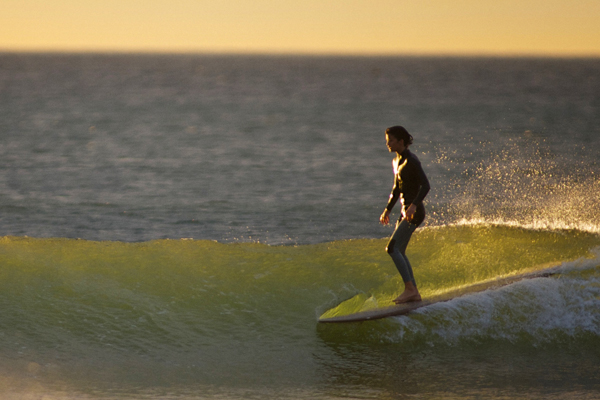
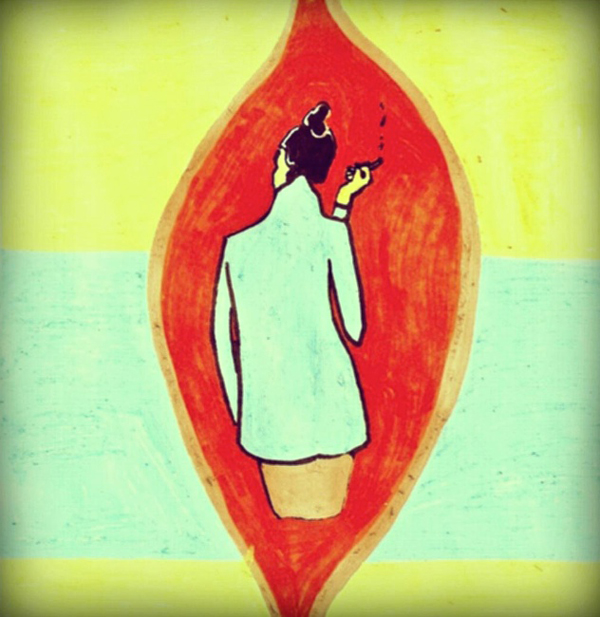
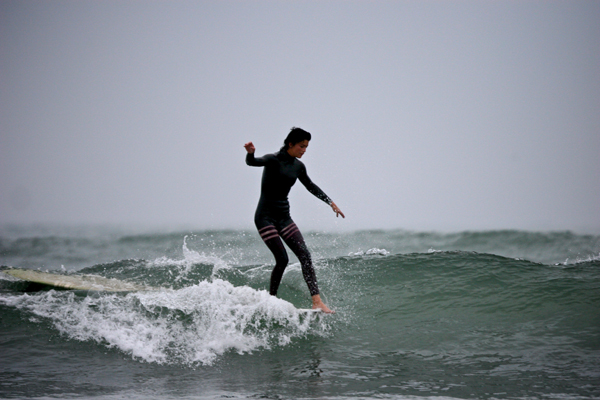
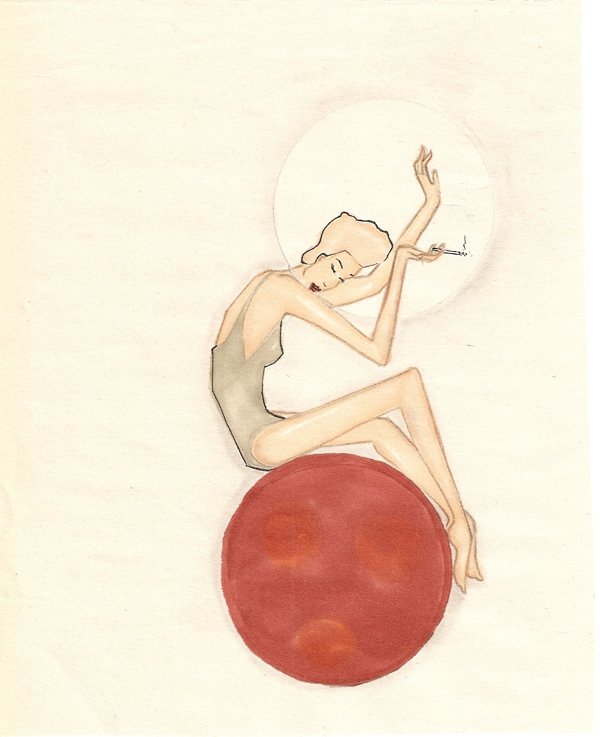
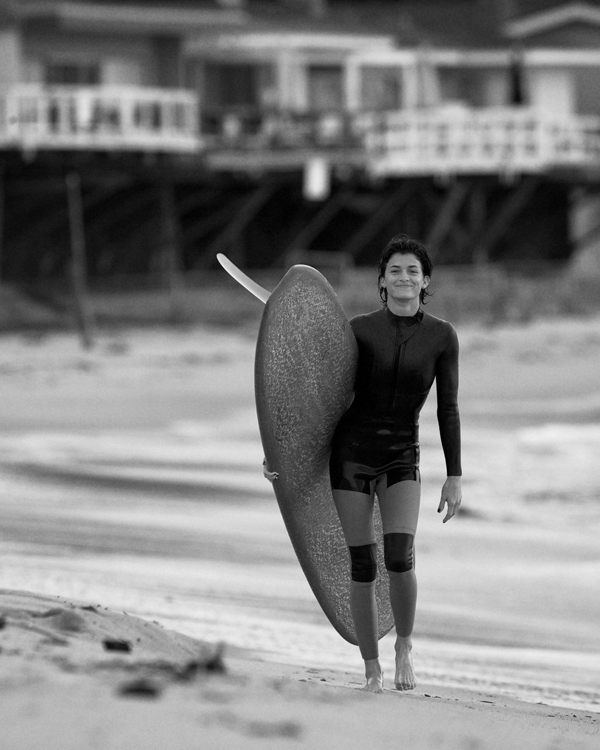
Liz Clark Interview
Liz Clark is a California surfer who travels the Pacific on a boat named Swell. Choosing a life on the ocean allows Liz to discover new cultures and to be able to find and ride that perfect wave. After corresponding for months, we finally caught up with her.
What was it like growing up in California?
I was lucky to grow up in some nice areas of San Diego, usually near the beach or open space. My favorite spot was in Del Mar, where we lived during most of my high school years. My parents rented a place one house back from the beach on 24th St and I had a pack of super fun friends and neighbors. That house became our ‘hub’ because my parents were so relaxed and easy-going. I remember lots of beach break beatings learning to surf, hot sand, riding bikes, summer high tide body surfs, sneaking into local jacuzzis, harassing the poor lifeguards, food in the fridge, lots of freedom…not too much to complain about.
When did you get your first surfboard?
I was 14 at the time. I’d saved up money in a little green box in my bedroom at our house in Point Loma where we lived then. One day, I got my big brother, James, to drive me to South Coast Surfboards in Ocean Beach. I went in and told the guy I wanted to learn to surf. He pointed me to a yellow 8’4” Encinitas Surfboards egg, and I handed him a wad of assorted cash from the green box. I don’t remember exactly why I felt so strongly about becoming a surfer, as no one in my family or close friend group surfed at the time. It all of a sudden just grabbed me after meeting this girl, Renee, at school, who surfed. I was a competitive gymnast for many years, but by that time, I was getting bored with it and ready for something new.
What was the feeling you had when you first stood on a surfboard?
I took a taxi to the beach from our house in Point Loma to the jetties in Ocean Beach shortly after buying that board. I had no idea what I was doing, I just walked out into the waves, looking at all the surfers out on the outside, and tried to catch the whitewash. I remember feeling elated after finally getting to my feet and going ‘straight’ in until the fin hit the sand.
Who did you look up to and admire when you were a young girl?
My father was always my biggest hero. I also really looked up to my gymnastics coach, Darryl Davis, and many of my schoolteachers, Mrs. Gibbs, Mr. Freeze, Mrs. Arn, Mrs. Castruita… and after reading Dove and Maiden Voyage, both books about sailing around the world when I was 12 or 13, I was in love with Robin Lee Graham, and totally admired Tania Aebi. I was never one of those girls that had posters of the Backstreet Boys on their walls.
Of all the places you have traveled to, what place in particular stands out? And why?
I’ve loved them all, but Kiribati probably, the most. It was like going back in time, true subsistence living and culturally very much in tact, homes built all out of palm and pandanus, hardly any contact to the outside world, amazingly resourceful and friendly people, healthy reef ecosystems, and some incredible waves too.
Who/what inspires you?
The natural world is probably my most constant source of inspiration. As far as people who inspire me, there’s way too many to name…but to start: my Mom, Audrey Sutherland, St. Mother Teresa, Pema Chodron, Amma, Ghandi, Martin Luther King Jr., Amelia Earhart, Helen Keller, H.D. Thoreau, Mark Twain, Herman Melville, Walt Whitman, Bernard Motesseir, Joshua Slocum, Yvon Chouinard, Tom Curren, Keoni Cuccia, Taylor Knox, Greg Long, Bethany Hamilton, Thich Nhat Hanh, Thor Heyerdahl, Jesus, Buddha, Allah, and Jah, and any person who follows their heart with good intentions for the world…
What is the greatest thing you have learned in your life?
Our lives are a reflection of our thoughts–focus on love, gratitude, and the positive side…
Do you have any regrets or wish you had done something differently?
There was this one wave at Jalama last year that I pulled back on…no, kidding, I made a heck of a lot of mistakes, but no, I don’t have any big regrets, all of them were just part of the learning process.
What are you most proud of?
My cut biceps… no, kidding… my love for my family and friends, and the planet.
What meaning does surfing hold for you and how has it changed your life?
Surfing is a sacred space for me. It has brought me unfathomable joy, self-confidence, independence, and a fantastic reason to sail around the world. My passion for it almost gets unbearable at times, but I feel so lucky to love something so strongly. And even luckier to be living my dream of surfing around the world on my own boat!
What brings you the most happiness in the world?
Being with my family when everyone’s in a good mood and perfectly barreling rights without a crowd.
Who are some of the people you feel are shaping the path for surfing today?
The surfing ‘path’ that I like most is being shaped by Dane Reynolds, Dan Malloy, Greg Long, Bethany Hamilton, Carissa Moore, Julian Wilson, Brian Conley, Dave Rastovich, Belinda Baggs…
Tell us about your relationship with Patagonia.
Patagonia has helped support my voyage since 2005. I feel great knowing that my biggest sponsor is one of the most environmentally active and aware companies on the planet. I only see our relationship getting stronger as my own voice as an adventurer, environmental activist, and nature conservationist gets louder. It’s run by a collection of amazing people and Yvon Chouinard, himself, is a true living legend – a pioneer in thought, business, and conservation (not to mention how he changed the world of climbing). A radical guy with a great sense of humor. I’m proud to be part of the Patagonia family.
What is in your current quiver? What is your favorite board? Your favorite surfspot?
Being in the South Pacific for the last few years– mostly steep, heavy waves. It seems I’m always on my thrusters. Jason Feist, of J7 Surfboards, in Santa Barbara has been my main shaper since 2001. I’ve got my essential J7 thrusters—a 5’9”, 5’11’, 6’4”, 6’8”, and 6’10”. Then I’ve got two quads, a 5’4” fish and a 5’9” heavier glass pintail quad both shaped by my friend in Nexpa, Paul Lyle. And a fat twinnie that another long-time friend and shaper, Sean Tully made. Fletcher at FCDesigns recently made me a magical 5’9” epoxy round tail and a beautiful 9’6” longboard, too. I’d love to get an alaia after having a go on Crystal Thornburg’s alaia in Hawaii last year. Lately I’ve been into bodysurfing a lot, too.
Soooooo many waves great waves out there, but my favorite’s a secret…
What’s your favorite meal?
I love spinach, blueberries, walnuts, curry, broccoli, carrots, tomatoes, coconut milk, honey, ginger, and tea. Top any meal off with chocolate lava cake and it’s my favorite.
What are you currently listening to on your iPod?
Althea and Donna, Gentlemen, M.I.A., Herb Alpert, Hooverphonic, Alpha Blondy, Arcade Fire, Hank Williams, Paul Simon, Bonnie Tyler, Beethoven, Beirut, Blue King Brown, Marcia Griffiths, Brigitte Bardot, Clap Your Hands Say Yeah, Jackson Browne, Deep Forest, Dezarie, Diana Ross, Dr, Alimentado, Lutan Fyah, Horace Andy, Jimmy Buffett, Joan Jett, Le Tigre, Todd Hannigan, Michael Franti, Midnite, Quantic, Scissor Sisters, Sean Hayes, Sigur Ros, Stevie Wonder just to start… music is my lifeline out here.
What are you most grateful for?
The love of my family and friends, and the people who believed in me.
What’s next for Liz Clark?
Now that I finally fixed the leak in Swell’s hull, I’ll be continuing west on my voyage, through the Cook Islands, Samoa, Tonga, Fiji, Kiribati, New Zealand…?? Wherever the wind blows me, I guess, and keep sharing my love for the planet with the world. I’m working on a book that will be published next year, so that’s been quite a learning process and helped greatly to improve my writing skills. I feel very inspired to continue my yoga and meditation practice, keep encouraging people to live out their passions, and look beyond the hype to seek peace, truth, and more sustainable ways of living.
Follow Liz Clark and the Voyage of Swell here. Photography by Pete Hodgson.
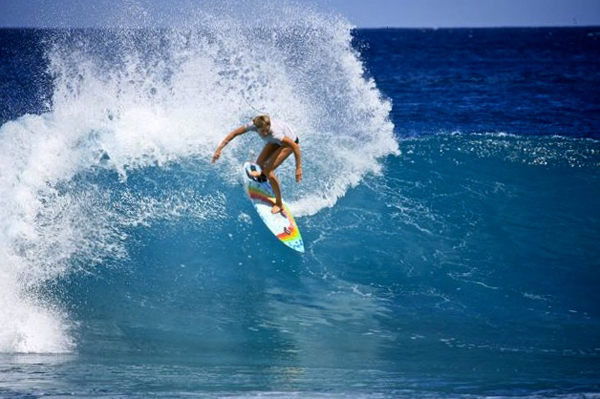
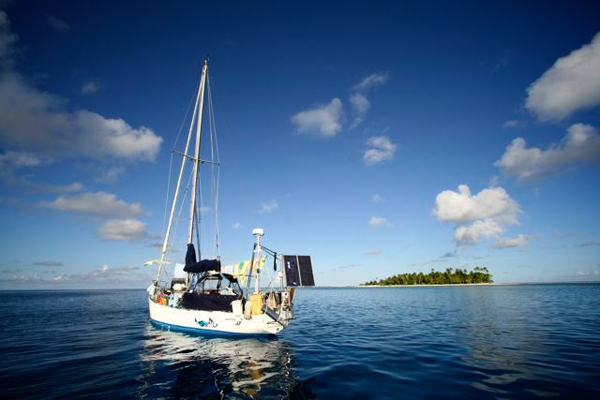
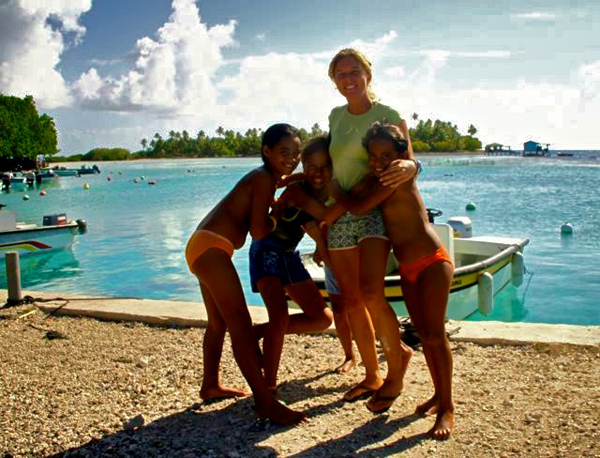
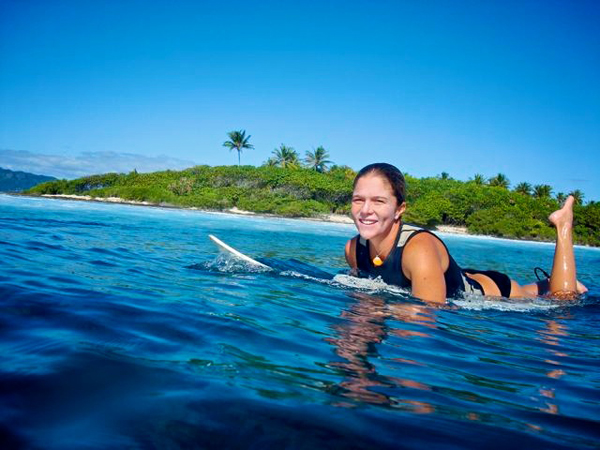
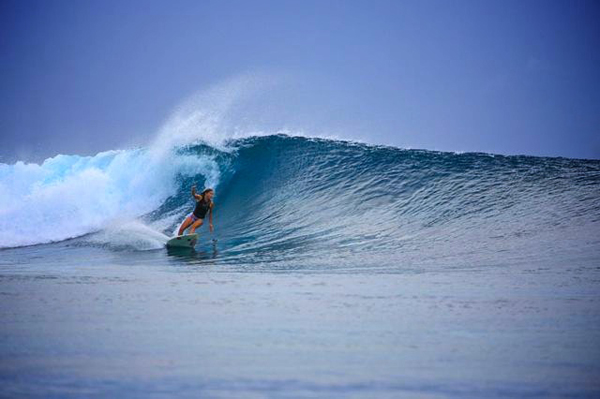
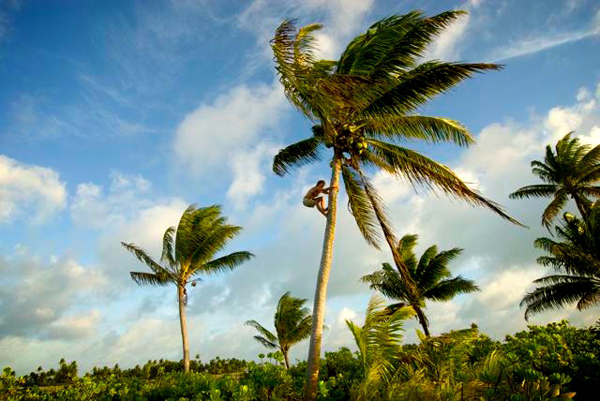
Simon Perini Interview
Simon Perini is an Australian surfer / photographer who creates layered compositions that capture the emotion and feelings of sliding waves. We got in touch with Simon to learn more about his life and approach.
What was your life like growing up?
I grew up in the inner city ‘burbs of Sydney – skating, bikes and street footy. Good times!
When did you get your first surfboard?
Not growing up near the beach, I didn’t have a surfboard till I was 17. Before that it was just boogers and the occasional mates board.
What was the feeling you had when you first stood on a surfboard?
Head over heels!
Who did you look up to and admire when you were growing up?
Being a short arse I looked up to all my mates who were getting taller every day. My parents have always been two very admirable people who I really respect and who have had a major impact on my life.
Of all the places you have traveled to, what place in particular stands out and why?
Africa — for it’s simplicity, beauty and danger. I was born there, but left too soon to remember it. When I went back as an adult, I felt this real connection and sense of belonging there. California — for it’s creativity, culture and In-N-Out burgers. If I had to leave home and move somewhere else, it’d be California for sure.
Who/what inspires you?
I get inspired by so many people and so many things — too much to say… Photography wise — Kyle Lightner, T. Campbell, Andy Mueller, Patrick Trefz, Matthew Allen, Kassia Meador, Drew Innis, Ron Stoner, and so many more. I really appreciate photographers who make there photograph a work of art, rather than just a good picture.
What do you look for in a good image?
Colour, context and creativity.
What is the greatest thing you have learned in your life?
One of the greatest things I have learned in life is the experience of grace. What it is like to have grace offered to me and then to offer that to others.
Do you have any regrets or wish you had done something differently?
No, not really. Nothing in life is ever wasted.
What are you most proud of?
Scoring the best girl in the world for my wife.
What meaning does surfing hold for you and how has it changed your life?
Surfing is a gift that I am so thankful for on a daily basis. It keeps me energized and humbled and thankful to be alive and healthy.
What brings you the most happiness in the world?
My relationship with God. My wife and the sound of her laughing. My family and friends. And a glassy Autumn morning.
Who are some of the people you feel are shaping the path for surfing today?
For me, it’s anyone who appreciates and tries to connect with the beauty and privilege of riding waves. I really admire guys like Dave Allee, Tyler Warren, and Derek Hynd. These are people who are not afraid to get a little creative in board design and innovation. I respect anyone who chooses aesthetic over aggro and advertising. Basically anyone who is having fun on any board, on any day.
What is your favorite board? Your favorite surfspot?
I don’t really have a favourite board, because they each offer something different on different days. My Almond ‘Kookumber’ is very sentimental to me. I can’t mention my recent favourite spot because the local crew will wail on me.
What’s your favorite meal?
My wife’s spaghetti bolognese washed down with an organic honey cola.
What are you currently listening to on your iPod?
Fleet Foxes, The Mattson 2, The Drums, Matt Costa, Cloud Control
What are you most grateful for?
This life that I’ve been so blessed with.
What’s next for Simon Perini?
I’m currently studying graphic design. I am really keen to grow more in a variety of creative mediums. I love photography, but don’t want to be confined to that. There’s so much more I want to explore and do. Stay tuned!
Find out more about Simon Perini here.

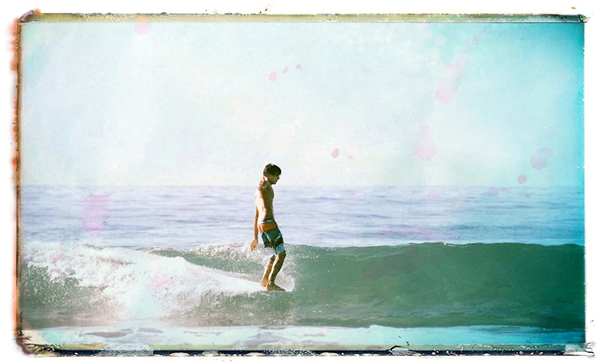


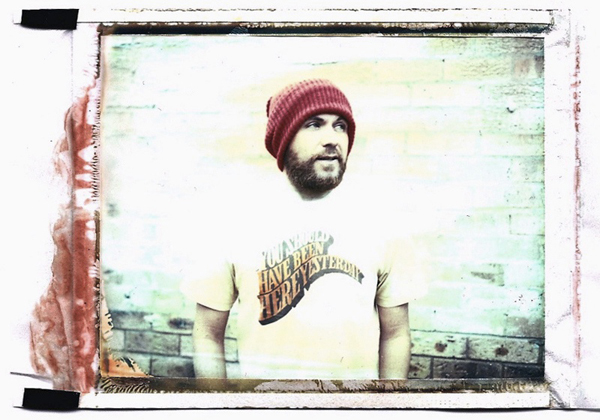
Pablo Ugartetxea Interview
Pablo Ugartetxea is a Spanish artist/surfer living in the Basque region. Inspired by surf culture, his paintings are complex compositions of mixed media that feature photographs, drawing, and paint. We caught up with Pablo to find out more.
What was it like growing up in Spain?
I had quite a normal childhood. I grew up in Bilbao, an industrial city in Northern Spain where, thankfully, you can take the tube to go surfing. My family is originally from Lekeitio, a beautiful town near Mundaka where I used to enjoy myself a lot during the summer, living in a big house surrounded by my punk cousins.
What was the feeling you had when you first stood on a surfboard?
I remember my first wave perfectly well. It was unreal to see the beach from up there. I was going so fast! I was stoked immediately. I wanted more and more!!!
Who did you look up to and admire when you were a young man?
When I was a young man, I loved comics—Tintin, Corto Maltes, Moebius and, of course, Wilbur Kookmeyer!
The art scene—I remember when I discovered Picasso. It was like a revelation, all the fun and crazy stuff you could do with a paintbrush. Rock and roll—The Rolling Stones, The Doors, Janis Joplin, the Velvet Underground, roots reggae. In literature, I liked Hermann Hesse, On the Road by Jack Kerouac. In surfing, I admired Tom Curren.
Of all the interesting places you have traveled to, what place in particular stands out? And why?
I like the Mediterranean very much; I travel to Greece as much as I can. Greece is the origin of Western culture and the light there is amazing. I’m in love with California as well. It has many similarities with Greece—the light—and also because it was the center of an ever-ruling culture. I like French and Japanese sophistication, the color and the magic in India, the Cuban sense of humor. I don’t know … I love many different places.
Where were you educated?
I studied at a Jesuit catholic school in Bilbao beginning in 1973, when Franco’s régime was already agonizing the people. The good thing was my passion for drawing helped me to survive the extremely boring classes. My name starts with a U, therefore I always sat in the last row, out of the teacher’s visual reach, and I could escape by filling my books and notebooks with perfect lineups, sexy California blondes and piers like the one at Huntington. When I finished school, I studied arts at the university in Bilbao, London and Amsterdam.
Tell us about your wonderful paintings. What do you hope to evoke with them?
My work mixes drawing, photography, oil and textures. I don’t believe in disciplines within different arts and techniques; I like to bring reality out of context, always with a great dose of humor. Having sense of humor is the best antidepressant and I use it compulsively.
Over the last few years, big waves have taken over my paintings. Now I combine city architecture with tsunamis, trying to obtain poetic images with a strong ironic and disturbing charge. There is a latent threat in my paintings. You can feel the catastrophe—buildings in flames, humongous waves destroying cities. I think this has to do with the dramatic new millennium we’re living in: crazy weather causing hurricanes in Europe, the collapse of western economy, 9/11, the latest dreadful earthquakes. It all causes an apocalyptic atmosphere that an artist cannot ignore. For me, a tsunami is a metaphor which invites us to think about human impact on nature and, at the same time, the impact of nature on populated areas—for example, how nature throws the ball back with all its strength, destroying our concrete monsters.
Last year, during my exhibition in San Sebastian on the occasion of this Basque city’s Surf Film Festibal, I came up with the term “Surfbanismo”. Surfbanism means urbanizing or, rather, “disurbanizing” through tsunamis, destroying all those horrendous maritime promenades and apartment buildings. In these creations, or should I say “destructions,” I have let the anarchist in me flow freely and I have to admit it was quite a pleasant experience.
Who or what inspires you?
Architecture, the sea, the light and the ocean. I find these sources of inspiration traveling as much as I can and taking thousands of shots. Back in my studio, I compose the cities my own way. I remove and add. I assemble different parts. I cut and paste mentally, painting imaginary cities which always have the ocean in the background. Through my painting, I can give priority to imagination, to the subversion of reality, to poetry. I feel like a billionaire and almighty city mayor who transforms the city as he pleases.
For my last exhibition in Bilbao, I completely reshaped my city. I replaced the stinking mud in the river with an epic white sand beach from Indonesia and I chucked the iconic Rio de Janeiro mountain of Pao d’Açucar in the middle, changing the grey costumes and executive suitcases worn by Bilbao citizens for swimming suits and surfboards.
In my paintings for The Surf Gallery in Laguna Beach, I bring the waves from Venice Beach to the channels in Venice, bay watcher cars pass through the Big Channel and there’s a huge wall painting of Jim Morrison on an old Venice palace. Amongst all artists who have inspired me, I would point to David Hockney and Andy Warhol for their creativity, Matisse’s color and, of course, Picasso’s genius.
What code or “golden rule” do you live by?
To be myself, to try and be true to myself.
What is the greatest thing you have learned in your life?
To focus on things you really believe in and not to waste time with bullshit. Like André Guide once wrote, “Dogs bark, cart keeps going.”
Do you have any regrets or wish you had done something differently?
No.
What are you most proud of?
I’m proud of earning a living doing what I like to do most.
What meaning does surfing hold for you and how has it changed your life?
Surfing makes me constantly be outdoors, in touch with nature, with people who think that money and material things are not their priorities in life. And you can’t forget it provides a perfect tan all year!!
What brings you the most happiness in the world?
When I catch a good wave or when I finish a good painting. In both cases, I feel extremely satisfied. It’s something priceless.
What is in your current quiver?
Right now, I am stoked on a couple of eggs—a singlefin and a 2+1—and a quad, all of them around seven feet.
What is your favorite board?
A seven foot quad made by a Brazilian shaper who lives around here. I did the colour myself—a beautiful bluish grey. It looks wonderful in the water, but very difficult to come up with when I need to repair the board! My next board will be white!!
I love to surf Les Estagnots (Hossegor), Biarritz, San Onofre, Portugal and the Mediterranean. Last summer, I caught a big swell on the island of Sardegna.
What’s your favorite meal?
I am Basque. This is a country with a huge gastronomy tradition, where men gather in private clubs to cook, where cooking is the most common subject to speak about, like others speak about the weather. To make it simple, we’re obsessed with food in general and particularly fish. I love to cook and to eat, but I have to admit that despite all this Basque cuisine tradition, my favorite food is a good hot dog!!
What are you currently listening to on your iPod?
Right now, I have Violent Femmes, The Cure, The Rolling Stones, Tchaikovsky, David Bowie, Ella Fitzgerald, Khaled, Beethoven, Gipsy Kings, Michael Jackson, Talking Heads, Duke Ellington, The Sex Pistols, Bob Dylan, Blondie, Lou Reed, Tequila, Stevie Wonder, JJ Cale, Neil Young, Tito Puente, Men At Work, Frank Sinatra, Mano Negra, Nino Rota, Marvin Gaye, Camaron de la Isla, Van Morrison, Skank, Jamie Cullum, Peter Tosh, Mongo Santamaria, Django Reinhardt, The Creedence, Charlie Parker. Actually, I’d like to be more up to date regarding music. Having taken a look at my list, I see all of them are grandpas or they have been pushing up daisies for awhile now.
What causes, projects or organizations do you support?
I collaborate with Premanande Orphanage Centre in Ongole , India, an orphanage created by a Hawaiian friend, John James, a great man. Within the surfing scene, I have done things with Surfrider Foundation.
What are you most grateful for?
For being healthy, for having had the chance to meet my wife, Ana, and for having something as valuable as imagination to create.
What’s next for Pablo Ugartetxea?
Right now, I’m finishing some paintings for the Green Room Festival in Yokohama, Japan in May. Also, there is an exhibition at the Sporting Casino in Hossegor and a huge 3D wall painting for a surf film festival.
Find out more about Pablo Ugartetxea here.
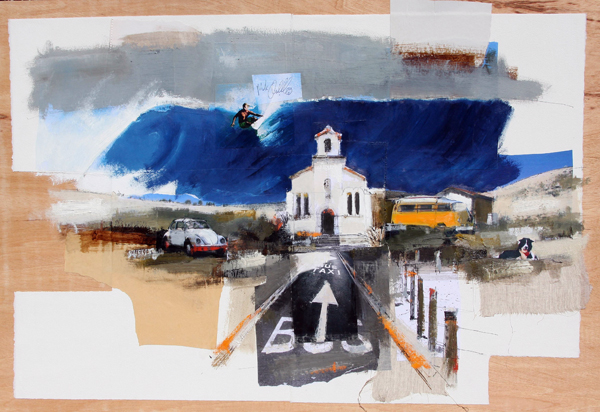
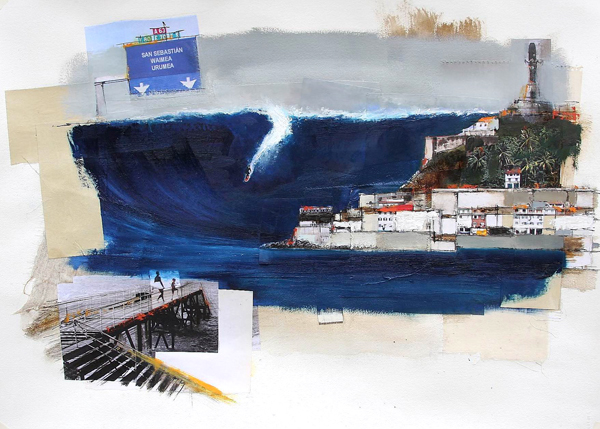
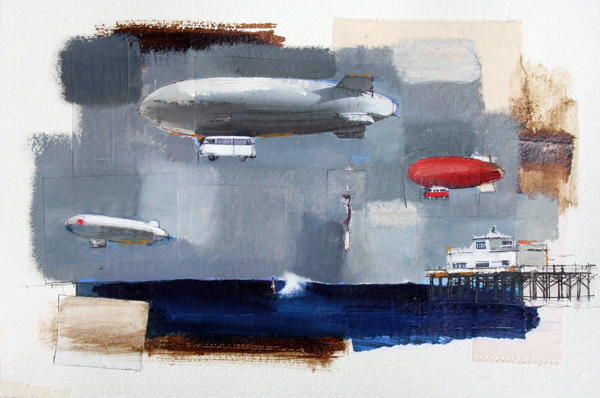
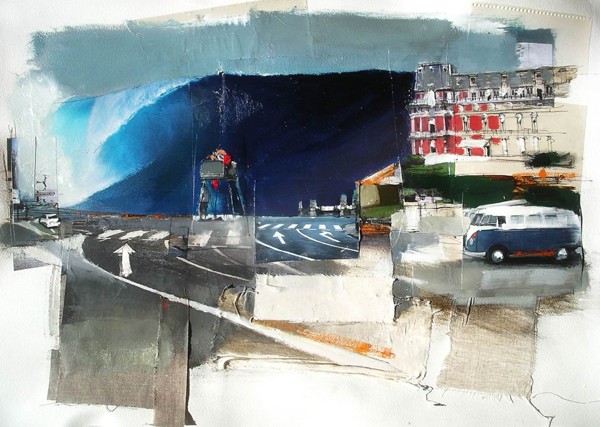

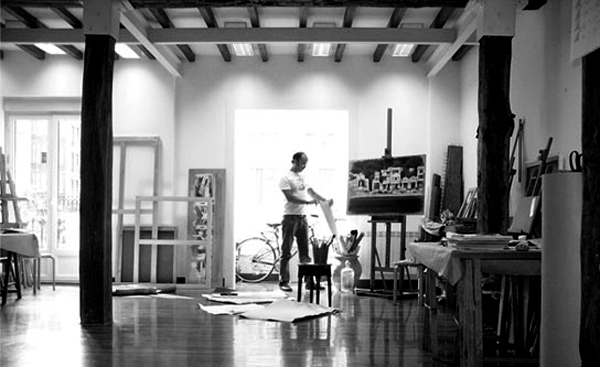
Joni Sternbach Interview
Joni Sternbach is a talented New York photographer who captures iconic images of surfers using a traditional process called tin-type using a wet collodion process. She travels throughout the year casting subjects for her project “SurfLand.” We caught up with Joni to learn more.
What was life like growing up?
I grew up in the suburbs of New York. It was not a very interesting place. As a teenager, I often went down to the Bronx River Parkway as it was the only natural looking green space. But my grandmother had a cottage out in Rockaway and Long Beach, and it was there that I learned to swim and love the ocean.
Who did you look up to and admire when you were a young woman?
I think the women I admired as a young art student were Diane Arbus and Greta Garbo. Worlds apart, they both seemed to be these fiercely independent and creative women.
When did you get your first surfboard?
I don’t surf, so I never got my first surfboard.
Where did you interest in photography come from?
I was a Fine Arts major in a college where photography was a required course. I became very interested in the camera and also with how new photography was compared to painting. After 1 1/2 years of studying it, I switched to the Photography Deptartment.
What is your process when creating your art?
When working on the SurfLand project, my process is all about happenstance, spontaneity and good will. I often just show up at a location, set up the camera and just wait to see who’s there and what will happen. When I do start talking with people, a whole new arena opens up. We talk about where we are from, what I am doing, if they’d be interested in participating. And from that place, we begin to collaborate to make a tintype photograph. I let go of control and leave a lot to chance.
Of all the places you have traveled to, what place in particular stands out? And why?
Traveling as a tourist and traveling to photograph are two very different experiences for me. When I come to Cali to shoot, new beaches are a source of excitement and and a huge thrill. Each new landscape that I visit seems to open up a whole new direction or thought about how to be in that place and how to take the picture. Like for example at San O the day I met you, the first photo I took was of Christian facing into the parking lot. I never shot into a parking lot before.
What code do you live by?
I live by the code that you should treat people with interest and respect.
What inspires you?
So many things-—the ocean, the countryside, the light, a painting, a baby’s eyes, people, energy, music.
What is the greatest thing you have learned in your life?
Not to take things personally. Wait … did I really learn it?
Do you have any regrets or wish you had done something differently?
Some, yes. In a time of crisis, it’s hard to think straight and live in a way where your love for someone is evident.
What are you most proud of?
My two children—Gabriel and Zoe.
What meaning does surfing hold for you and how has it changed your life?
Well, even though I do not surf, surfing holds a strong meaning for me and has changed my life.
What’s your favorite meal?
It depends where I am, but I love Italian food. In Montecito, there’s an awesome sushi place called Sakana and the Whodidily Cupcakes are amazing
What are you currently listening to on your iPod?
I am waiting for the new Chieftains CD to be released, but I am a sucker for Dylan and Feist.
What causes, projects or organizations do you support?
Surfrider, Doctors Without Borders and March of Dimes for their assistance (mine too) with premature babies.
What are you most grateful for?
This wonderful life
What’s next for Joni Sternbach?
I’ve been working with some of the girls from the Miss Shinnecock Teen Pageant at the Shinnecock Indian Reservation in Southampton. I am hoping to continue the project this Spring. I am also thinking about the SurfLand project and how it relates to Americana. I want my next stop to be Hawaii.
Find out more about Joni Sternbach and her project SurfLand here. All images are copyrighted and may not be used without permission.
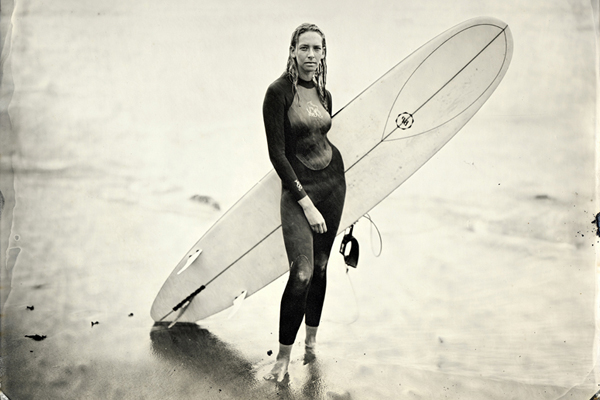
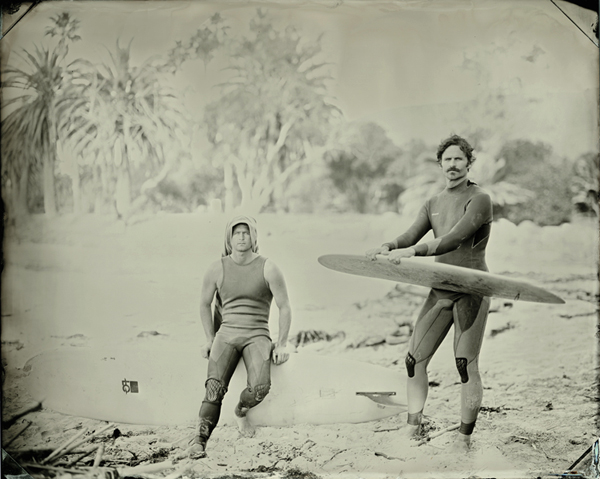
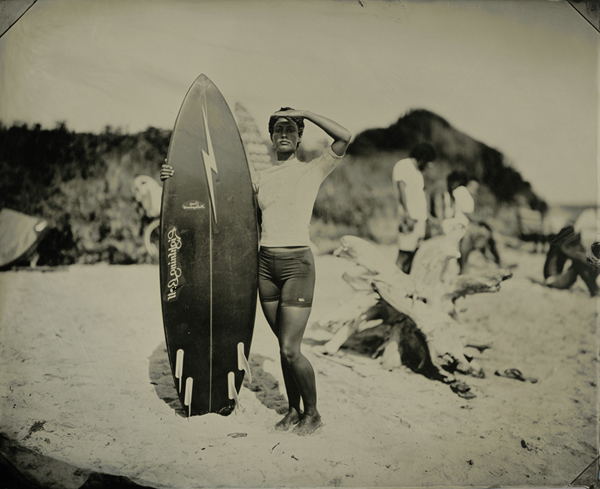
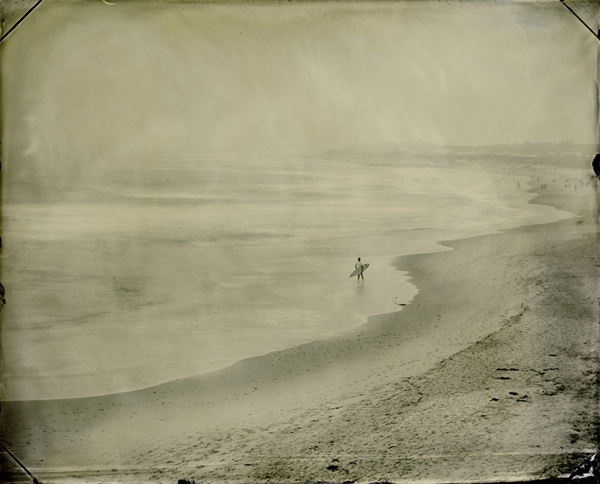
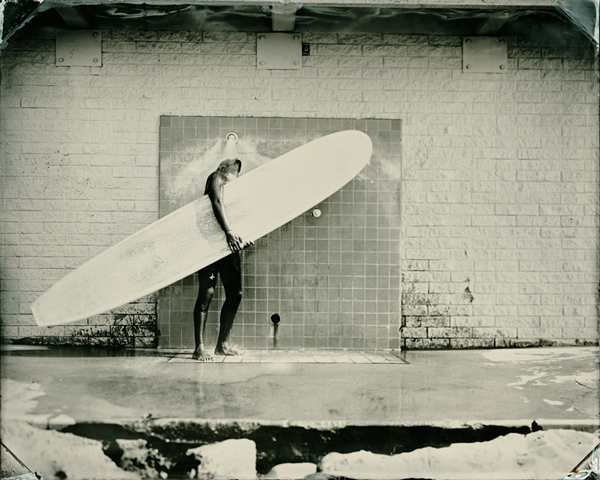
Mikey DeTemple Interview
By Chasen Marshall
Mikey DeTemple is an East Coast surfer/filmmaker who recently produced and directed the film “Picaresque.” A stylish longboarder, Mikey has won numerous pro contests and has graced the covers of Longboard Magazine and ESM. We spoke with Mikey to learn more.
So where and when did the Mikey DeTemple story begin?
Born (Aug. 30, 1983) and raised in Babylon, New York, which is in central Long Island, until I was 14. I was a part-time surfer for the most part; I surfed in the summers when it was warm. Back then, in the mid-‘90s they didn’t make winter suits for people my size, so I didn’t really get to surf in the winter. We spent the summers out in Montauk.
When did surfing come into the picture?
I didn’t start surfing until I was 12. My dad was one of the better surfers on Long Island in the ’70s, along with a handful of other guys. He surfed his entire life, and I was always around it, but I was never really all that into it. But one day it kind of clicked; it was actually my mom that got me into it. I think my dad always wanted me to surf really badly, like forcing it a little bit made me deter from it a bit. So I would always hang out at the beach with my mom, we used to go to the beach every day in the summer, regardless of what the weather was like. Eventually I just got sick of playing in the sand, so I started boogie boarding.
What was your first board?
It was like a 5’6” Nomad, made here in Florida. It had these G&S one-star fins in it. It’s a pretty rad board; I’ve still got it actually. It was my dads. I guess he bought it on a trip down to Florida at some point in the late ’70s. It has like blue water droplets over it, like the old splash containers, it’s pretty amazing.
I know you’ve had some health issues in the past, tell me a little bit about it.
I was like 11 years old when it happened. I used to play ice-hockey and I broke one of my ribs while playing, I had to go to the hospital, and I guess it’s like hospital procedure to do an EKG on anyone who has a chest problem, and they found it on the EKG, and it was like the broken rib didn’t even matter anymore. They were tripping out. They found something called third-degree heart block, which is like an electrical problem with the natural electrical system of the heart, where the ventricles aren’t able to communicate with each other. So they wanted to do an emergency surgery that night and they ended up transferring me to a different hospital a couple hours later, to one with a much better pediatric unit, a couple hours away (Stony Brook University Medical Center). I was there for like five days.
How did that change your life?
They put me on heart monitors and the first month was kind of weird, doing all these tests and trying to figure out what they were going to do. They were trying to figure out whether to put a pacemaker in me. They came to the conclusion that it was asymptomatic, which basically means that I had what they found, but I didn’t show any symptoms of having it. So my doctor back then basically said, I don’t want to fix something that’s not broken, so we’re just going to do check ups every six months and see how you’re doing. He kind of guessed that once I got into my late teens or early twenties that I would start having some problems, that then they were going to have to put a pacemaker in. My first cardiologist completely nailed it, that’s exactly what happened. I was 19 when I started passing out and wasn’t asymptomatic anymore and was showing full signs of having third-degree heart block. That’s when they went and put the pacemaker in.
And did that improve your quality of life?
Oh, gosh, it was night and day. I didn’t understand how I lived like that for so long. Right after I recovered from the surgery I had so much more energy, I was so much more alive, it was just completely, like I said, night and day. It was like getting a new engine or something.
Talk a bit about the East Coast surfing scene. What sets it apart?
It’s so different, every little town, city, every state, I mean, the East Coast has 14 states that are touching the Atlantic, and each one is so different: Florida, which is like a hotbed for professional shortboarding; you go to Georgia which is a really weird 12 miles of coast, kind of rednecky; South Carolina, North Carolina. North Carolina has completely different types of waves, where it’s just dredging, barreling. You really get everything. You go up to New York City and there are stockbrokers surfing.
When did you start taking surfing seriously, making it more than recreational?
I moved to Florida when I was 14, my parents were just kind of over the cold of New York and the economy was pretty lousy there in the late ’90s. Things were just so dirt cheap in Florida, so they moved down here and bought a three-bedroom condo on the beach in Indialantic, near a pretty decent sandbar. I used to have to drive 40 minutes to get to the beach from my house in New York, so just being able to walk out back to surf was just the best thing ever. I would surf every single day. I would surf before school, after school, during school – without telling my parents [laughs]. I was surfing so much. I was surfing okay when I was living in New York, but with surfing every single day, whenever I wanted to, without any hesitation, it really started happening where I was progressing so much faster than in New York.
What is it about surfing that makes it such a fixture in your life?
I was just really brought up on the beach. And New York is just so different. In Florida and California, everyone really takes going to the beach for granted. In New York, you really kind of harness the beach and the weather, and how you really only get those three months out of the year to embrace the weather and the sand and the ocean and stuff. Otherwise, it’s just so brutally cold. I was always around the beach, my dad was a commercial fisherman, so, I’ve always been drawn to the ocean. It pretty much came natural.
When did you decide to pursue the contest scene and make a career of sorts out of surfing?
I used to do all the ESA (Eastern Surfing Association) contests in Florida, and there were some really good kids, and I started winning a couple of those contests. I started traveling a little bit more. When I was 15 I made the final of a pro contest, the Easter Surfing Festival at Cocoa Beach and Joel Tudor was in the final, and Dodger Kremel and, I think, Cody Simpkins, or someone like that, and I got second or third, something like that and I made $1,200 and I thought, I might be able to make a little bit of money doing this. Kind of got really motivated to try.
How and why did the movie-making thing come about?
I was doing contests for so long, I would travel places with three of the same boards, three 9’0”s with three fins, one ounce glass, and I’d go to all these cool places and I’d do the contest and leave. Some of the sponsors I had at the time used to tell me, “When you’re done with the contest you go home, you don’t stay and hang out. We don’t pay for you to hang out, we pay for you to do well in contests.” I thought the whole contest and longboarding thing kind of started to get really lame. And I started to get really burnt out on where it was going, and the things that were being done. So I just thought, going to all these cool places that I’ve been, why not just go and surf all these places instead, and just do photo trips. I think it was on a photo trip to the Maldives like three years ago, and all we had was a photographer on the boat, and there were like five of us and the waves were insane, and I thought “Man, this would probably be one of the sickest video sections ever if someone was actually shooting! Why do I go on all these trips and no one ever shoots video or film?” I just started thinking I wanted to make something cool. It’s just going on trips and shooting sections of a movie in different locations and stuff.
Picaresque was your first movie, which came out in 2008. What’d you learn from that experience?
Oh, man it was amazing. I didn’t know anything going into it. I basically have Dustin Miller to thank for even getting it done, because I was so clueless on half of the things I needed to do. I didn’t understand music licensing, or time lines or deadlines. I just knew I had a vision, and I knew what I wanted it to look like, but I didn’t know the backend stuff that goes into producing or directing a movie. Like I said, I knew what I wanted it to look like and I knew who I wanted to be in it, and I knew where I wanted to go, but that was really it. Actually doing it and having investors and having deadlines, I learned so much. I probably learned more working on that movie than had I gone to film school for four years.
So, is there another project on the way?
Yeah, I’ve been working on another film the last seven months; we’ve shot a couple locations. We were up in Maine back in November, building boards with the guys from Grain, the LaVecchiabrothers, and hanging out up there. And I did another trip to the Bahamas recently. Kind of a far out-there island that’s really difficult to get to.
Have you been getting waves?
We got Maine pretty dang good for a log, and the Bahamas were really fun – it was a very, very interesting trip. We ran out of food, we ran out of water and our boards got stuck on the island for 45 days. But we came back with what we needed.
Details? Are there a couple customs guys with a new quiver or what?
No, the only way to get to this island is by private charter flight. And they changed the flight on us the morning of the flight. They sent a different plane, and the plane they sent wouldn’t fit our boards and they were kind of taken hostage by the guy who owned the marina. To make a long story short, I had to fly over to Nassau a few weeks ago and had to pick them up off a government mail boat and then bring them back through customs and ship them out of Florida back to Kassia Meador and Scotty Stopnik and I took my boards back home. It was great, makes good stories.
Do you have a name for the movie yet, or is that on the hush-hush?
I would love to make up some sort of bullshit story on how I want to keep quiet on what it is, but really I just can’t think of a name. I’ve been forcing it so hard, I’ve been flipping through the dictionary. Picaresque just fell into lap; it was the easiest thing ever. That’s probably why I’m having such a hard time, because it was such a good name and it came so easy. Where as this one, I can’t think of anything.
When are you trying to have it done by?
I would like to have it out in stores before Christmas, but you say that, and it will probably be out the next summer. Just how it goes. Whether you’re waiting on music to clear or any of the million other things that can go wrong when you’re making a film. We’re off to a good start though.
Through the movies and surfing, you’ve done quite a lot of traveling, what destinations stand out and why?
I always say this, but I love the northeast in fall more than any other place in the world. It’s got so much going for it: there’s so much swell in the water, it’s so uncrowded because Labor Day has passed and people go back to work and summer houses are done. You get a lot of quality surf by yourself and the weather is amazing. You still get those days where it’s 70 degrees and the wind blows offshore, I rave so much about the northeast.
Can you still find secret spots up there?
I surf New York by myself all the time, especially that time of year. You’re still in 3/2s, and you’re not wearing booties and it’s not cold yet. It’s the best. There are other places that obviously have better surf that time of year. France is one of them, which is one of the most gorgeous places in the world.
So are you done with the contest thing altogether?
I still do a couple contests on the East Coast, mostly because I can ride a log in them and I don’t have to ride three-fin longboards and do kick flips and stuff. I could never stick those [laughs].
So what role does surfing play?
Right now I just love to travel and ride a bunch of different things, and go on different trips to new places, and make little films about it and stuff like that. More what people were doing before the contest scene came into play. Just cool trips to unique places. Even not unique places, but making normal places unique somehow.
Is that where you see the longboarding thing going?
Yeah, I think so. Just the whole way longboarding is going, I wouldn’t even pigeon-hole it as longboarding, I would call it more just surfing, because I definitely don’t have more than one or two longboards in my bag when I travel. Usually I have more shortboards and oddly shaped things, whether they are Stubby’s or some sort of single-fin or a rounder-style shortboard or something like that. Always going on trips bringing all sorts of different things. I think that’s where it’s going.
That takes me to my next question: what’s currently in your quiver?
Chris Christenson is making the majority of my boards. I’ve got a 9’9” pintail log, which is unreal in glassy type waves. I’ve been really addicted to this 6’2”, I guess it’s like a Hull outline, without a Hull bottom, and with a far forward single fin. He calls it a Stubby. It works insane when the surf is kind of lined up and it’s super fun when it barrels. I’ve got one of Jon Wegener’s peanut alaias, a 5’8”, which always comes with me everywhere. And then I’ve got a 5’4” roundtail quad that I always bring with me. That’s kind of my go-to set-up. You can ride anything on those four boards. There’s no way you can ever not have fun on one of those boards in whatever conditions are thrown at you.
What excites you about surfing right now? What’s going right in surfing?
A lot of people are riding everything. There are so many people that shred on so many different things, like Harrison Roach surfs amazing on anything, Chris Del Moro surfs absolutely anything that’s handed to him and surfs better than most people that specialize in just one thing, whether it’s a longboard or a shortboard. I think that kind of stuff is cool, that’s what excites me. Not seeing people ride one board in every type of wave. I don’t know, I would get really bored. I don’t know how I used to do that. I spent a lot of time trying to figure that out.
What’s wrong with surfing or the industry right now?
I just don’t think there’s enough money in it. I don’t think there’s anything, per se, wrong, maybe everyone’s shorts are too long [laughs], but I wouldn’t say that anything is really wrong with it. Maybe marketing money is being spent in some of the wrong places some of the time, but I think a lot of the companies have the right idea of what’s going on and a lot of companies are backing some alternative style stuff and that whole deal.
Now some general personal questions: what are you listening to these days?
The lead singer from The Shins just came out with a new project called Broken Bell, that just came out a few days ago and it’s unbelievable. There’s a band from Florida, they are from Palm Beach, and they’re called Surfer Blood. None of them surf and they’re super young, but they play amazing music. They’re like Modern Day Pavement, kind of. That’s kind of weird for a band like that to come out of a cultureless south Florida town.
What are you reading?
Actually, I just finished reading “The Diving Bell and the Butterfly,” a couple of weeks ago. It’s written by the editor-in-chief of French Elle and it’s about when he had a stroke and it left him with a condition called locked-in syndrome. He basically wrote an entire book by dictating his entire story to a nurse by blinking. She would recite the most frequently used letters and he would blink when she got to the proper letter. Amazing. Really, really crazy.
What else is going on in your life that we should know about?
Just making that film , traveling a whole bunch, I just signed another two-year contract with Hurley, which is pretty awesome. Those guys are very supportive of everything that I do.
Last thing: what’s next?
I’ve go about four more trips to do on the movie, so that’s really going to occupy the rest of my summer. Hopefully be full-on editing by August. I’ve been learning Final Cut a lot more and I’ve been laying out this whole project myself. SO it’s been very, very time consuming logging and capturing. The last one I didn’t really do any of that on my own.
Find out more about Mikey DeTemple and the film Picaresque here.
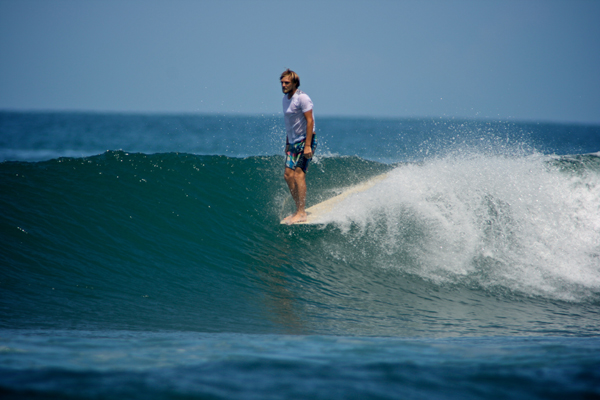
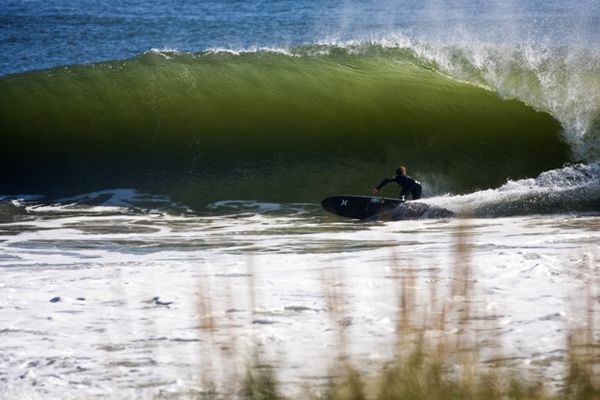

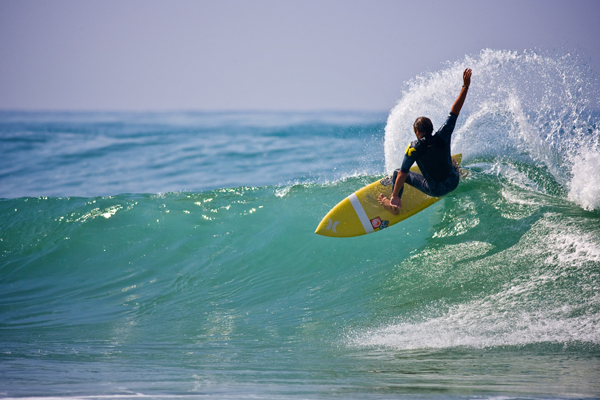
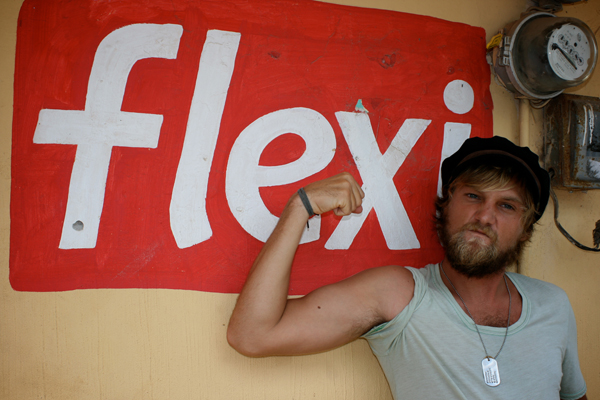
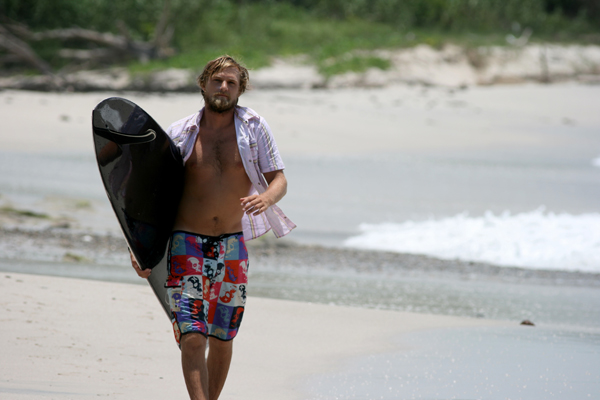
Jean Paul Van Swae Interview
JP Van Swae is a California surfer/photographer who is the assistant photo editor at Surfer Magazine. The grandson of legendary Whitey Harrison and former apprentice to master photographer Art Brewer,JP carries surfing’s legacy to the next generation. We spoke with JP to learn more.
What was your childhood like?
Holes in my shoes and bell bottom pants hand-me-downs from my brother, which came from my cousins prior to that. But for all that we didn’t have, there was an endless supply of fun and love for what was all around us. Lots of days at the beach, and a lot of great family and friends around. There was never a dull moment.
When did you get your first surfboard?
The first board that was actually all mine? I think I was around eight. It was a 6’8” Quad shortboard made by Max Surfboards that my dad had bought me. It was a bit too thick and big for someone my size, but it rode well enough to ride and have fun.
What was the feeling you had when you first stood on a surfboard?
My first memories and experiences of surfing were not by choice and quite a bit of resistance was involved. My brother and sisters would play along the shore at San O, jumping over waves, just being kids having fun as mom, dad, grandfather and whichever other family members that were with us would be out surfing. And at any moment, either my dad or grandfather would just snatch you off the beach and take you into the surf. The waves were probably only waist high, but as a child they seemed enormous and scary. So, as they would take off, they would have to pry you fingers from the board and stand you up. But once you were there, you were hooked!
Who did you look up to and admire when you were a young man?
It all ways seemed to be family. My grandfather was great at anything to do with the sea. Surfing, paddle boarding, fishing, diving, sailing and more. And my mom and dad were into all kind of things as well as surfing. As far as surfing talent, I always admired Mark Richards’ awkward style.
What inspired you to begin shooting images?
My dad had shot for Surfer mag when I was young, so I decided to take a class in high school. It didn’t work out to well and I ended up despising photography. I returned to it after running into Art Brewer, a good family friend, and found myself loving everything I could find out about it.
What do you look for in a photograph?
Composition and the forethought that you had intentions of creating a perfect image—not that it just happened to be in front of your lens. Take time and visualize what you want and go get it. And be proud of it.
Of all the places you have traveled to, what place in particular stands out? And why?
Any third world country away from the city always stands out. You see so many people getting along with so little and are so happy. It’s humbling.
Who or what inspires you?
Seeing someone with STOKE. Those who do instead of talk and people who look at things a little differently.
What is the greatest thing you have learned in your life?
Keep doing what you love to do. Look both ways before crossing the street. A good bottom turn makes your surfing that much better. Keep your other eye open when shooting and without friends and family, it’s hard to get by.
Do you have any regrets or wish you had done something differently?
Yeah. I shouldn’t have eaten all of those hot dogs in Tijuana.
What are you most proud of?
Being a dad, enjoying life to the fullest and being able to involve others in your fun.
What meaning does surfing hold for you and how has it changed your life?
I don’t know anything different; I have always lived close to the ocean and have been surrounded by surf culture. So, it hasn’t changed my life at all. It is my life. Without surfing and the ocean lifestyle, I couldn’t imagine who and where I would be.
What brings you the most happiness in the world?
My beautiful three year old daughter, Abby Lynn Van Swae.
Who are some of the people you feel are shaping the path for surfing today?
It’s a pretty broad path these days, so we’re all involved somehow, but you can’t ignore the up-and-coming youth like the Kalohe Andinos and the revival of style within longboarding like the Alex Knosts. The backyard shapers and inventors are really what drives us forward.
What is your favorite board? Your favorite surfspot?
My 6’8” Patterson before I broke it at Blacks. Favorite spot is Lower Trestles.
What’s your favorite meal?
Abalone hamburgers and a good bowl of poki.
What are you currently listening to on your iPod?
Hank Williams III, The Clash, White Buffalo, and The Arctic Monkeys.
What are you most grateful for?
After all of the stupid things I’ve done, probably just being alive.
What’s next for JP Van Swae?
I was wondering the same thing. If you find out, tell me or just keep me in the loop. Maybe Mex.
Find out more about JP Van Swae here. The Whitey Harrison Festival will be held on June 27th, 2010 in San Clemente. Details can be found here.
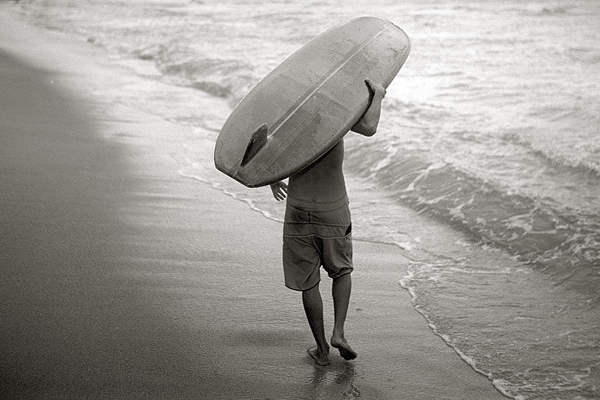
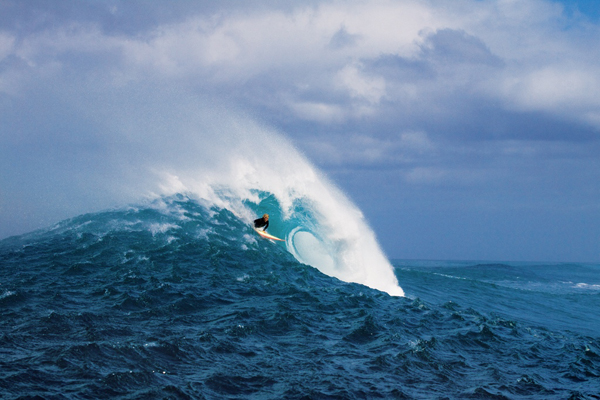
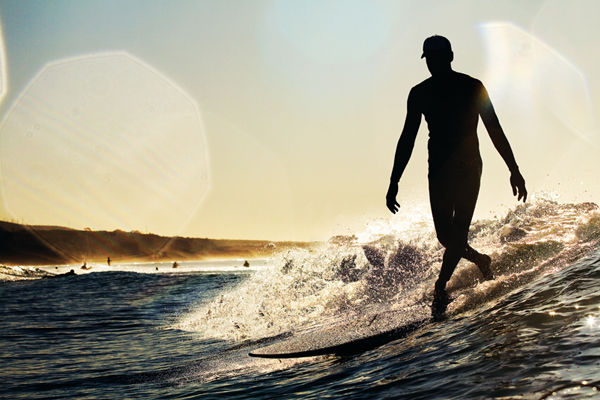

Ron Croci Interview
Ron Croci is a talented California surfer/artist who creates colorful and fluid paintings which express the surfing lifestyle. A surfer for over 49 years, Ron shares with us his life of creating art.
What was your life like growing up?
Although I was born in Chicago of Italian parents, we moved to Half Moon Bay in San Mateo when I was 12. It was a wonderful time for young kids to grow up; this was a time before stoplights, before hippies, before drugs and before commercial development and the restraints that are commonplace now. At that time, there was only the breeze across the dunes and empty beaches. Near the town of Half Moon Bay, there were mostly farmers and beatniks. On the weekends and in summer, we would leave home in the morning and return in the evening with no worries on the part of our parents.
Then, we discovered surfing. Basically, we were among the first surfers. We were the first to watch Mavericks. From the farmlands on the cliffs, we kids would stare in amazement at the huge green peaks that would glisten white against the blue sky as the offshore wind cascaded from the wave tops. With our beaver-tailed wetsuits and balsa/foam boards, we as kids pioneered almost all of the now popular breaks. Then, there was open farmland to the many beaches. We were like Tom Sawyers with surfboards.
When did you get your first surfboard?
All of my surfboards growing up were junk and I can’t really remember how I got my first board. There were no shops except for O’Neill’s in Santa Cruz and old boards drifted from hand to hand. We were not like modern kids with beautiful new shortboards; everyone’s board was at least nine feet long and really heavy. To walk from the Coast Highway to Ano Nuevo took 45 minutes with two guys carrying two boards—nose and tails. My parents were poor Italian immigrants, so we could not afford such a luxury as a surfboard. They would say, “What is a surfboard anyway?”
What was the feeling you had when you first stood on a surfboard?
My first stand up ride was at Cowell’s Beach in Santa Cruz—long and slow, but I felt like the god Mercury, traveling from one celestial realm to another.
Who did you look up to when you were a young man?
I was inspired by the likes of Salvador Dali, Phil Edwards, Ben Cartwright, John Coltrane, Art Blakey, my father and uncle plus many more. However, as a kid I was so egocentric that there was hardly any room for anyone but me.
How did you get involved in art?
When I was 15 years old, two interesting things happened at the same time. First, I watched beatniks on the Peter Gunn detective show. They played cool jazz and painted abstract art, which I thought was so absorbing. I was completely enthralled by “the scene.” Then, at the same time, I was walking down a library aisle in the art section, which was odd at the time since I knew nothing about the subject, when I saw a book protruding out from the shelf. It was a book about Salvador Dali. On the cover was his famous painting “The Persistence of Memory”. As soon as I saw the image, my consciousness screamed out, “That’s what I want to do!” The rest is history.
What is your process for creating your art?
Inspiration, contemplation, then to thumbnail sketches, to enlarged drawings, color comps and finished art. My overriding concern is always how to make it beautiful. I strive for completion, not correction. (For my process, see Club of the Waves: http://www.clubofthewaves.com/art_interview_ron_croci.php)
Of all the places you traveled to, what stands out?
That’s easy—the Kaiser Bowl in Waikiki. I have surfed that strip from Three’s to Ala Moana over 2000 times. I have seen there … perfection, degradation, sunshine, camaraderie, addictions, sadness and death.
What inspires you?
I am inspired by the greats in any field whether it is art, science or motherhood. All forms of creativity inspire me—from the beggar with his sign to the Sistine Chapel.
What is the greatest thing you learned in your life?
Be attentive and careful of what you do as it will always come back to reward or punish you.
Do you have any regrets?
There are at least 50 things that I have done that I regret terribly and I have paid the price for my misdeeds. Here is a short list: people I have taken unfair advantage of, raising my voice in anger, stuff I swiped as a kid, thinking my opinion is the only way of looking at things, not putting love before ego and trying to be controlling.
What are you most proud of?
All the typical things one can be proud of (such as family, love, achievements of all sorts). However, from a professional perspective, it was my role and accomplishment in the development and design of the Hawaiian Maritime Museum. In my role as lead designer, I developed most of the maritime exhibits depicting the past, present and future of Hawaii and her link to the sea. Thousands of Hawaiian children have visited this wonderful museum and have gained insights to their heritage.
What meaning does surfing hold for you and how has it changed your life?
It means a lot—the sea is my mistress. However, it has really not really changed me since I caught my first wave in 1960. Before that I was a man; after that I was a surfer. I have surfed and participated in water sports basically for 49 years—most of my life. These sports have kept me sane for most of these years.
Who are some of the people that are shaping the surfing path today?
Anybody who has read a surf magazine or seen a video is very aware of the current leaders in innovation, so I don’t need to go into it. However, a lesser-known aspect of shaping the “path” applies to the path of surfing art, which is what we are talking about here. I think Wade is really leading the way. His recent seascapes are dark and brooding with a mixture of dread and beauty. His work reminds me of background art for 1950’s Tarzan book covers. On the other hand, Drew is a super surrealist whose work is appealing to kids and adults alike. Drew has opened the surf art door to artists and admirers alike.
What is your favorite surfboard? What are favorite surf spots?
My favorite board that I have owned is a nine foot Sparky from Honolulu. But, come on … we are talking 49 years of surfing and I can’t remember all the boards I have ever had.
My three favorite surf spots are: Palos Verdes’ Cove in California, Kaiser Bowl in Hawaii and Sanur Reef in Bali.
What is your favorite meal?
I have two kinds of favorite meals. First is my mom’s homemade raviolis. My mom and dad would spend an entire afternoon making raviolis for the holidays. The second is lobsters or Calico Bass that I catch myself. I simmer the creatures in lots of butter and garlic. Then, a Manoa lettuce salad with ciabatta bread and homemade cheese, sweetened with sugar and dried fruit.
What is on your ipod?
I don’t own an ipod, however if you are asking what kind of music I enjoy listening to: Stravinsky, Ravel, Debussy, Chopin, Coltrane, Armstrong, Blakey, Getz, Allman Brothers, Dylan, Cobain, Eminem, 50 Cent, Afro-Cuban, Balinese, Bosa Nova, Tibetan chanting, Spike Jones. The list goes on. I love all kinds of music—no matter when or where composed.
What causes or organizations do you support?
I promote and I am a member of Pangaea Seed, which is a marine activist group from Japan which is attempting to curb the use of shark as a food source. I try to help the many good causes that I am asked to donate to.
What are your grateful for?
I am grateful that I still have the opportunity improve myself spiritually, artistically, personally, morally and mentally. I still have my health, and that means everything.
What’s next Ron Croci?
I just finished the Indonesian Surfing Competition artwork, which is sponsored by Coca Cola. This art was created for t-shirts and prints. I have also designed several new t-shirt designs for the summer season. I am creating four new seascapes that are going into print as limited edition giclees.
I am also painting thirty-two 12 x 12 inch water color illustrations for the book titled Lil G. Lil G is an inspirational book for young children teaching them about gratitude. It will be my 12th book. I am having artwork in the new SIMA calendar. And am part of an exhibit titled “Art in Motion” in Redondo Beach. I also have to continuously supply artwork to my galleries (McKibben Studios, Beach Street Gallery, Montanero Gallery and Kohala Coast Fine Arts). I will be spending time this year also helping to promote the book Surf Story.
Ron Croci’s website can be found here. Find out more about the Surf Story Project here.
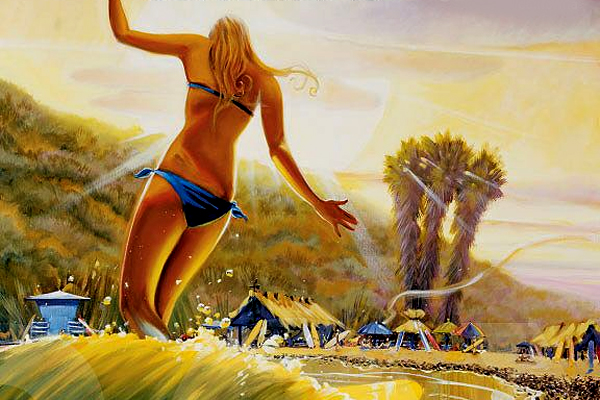
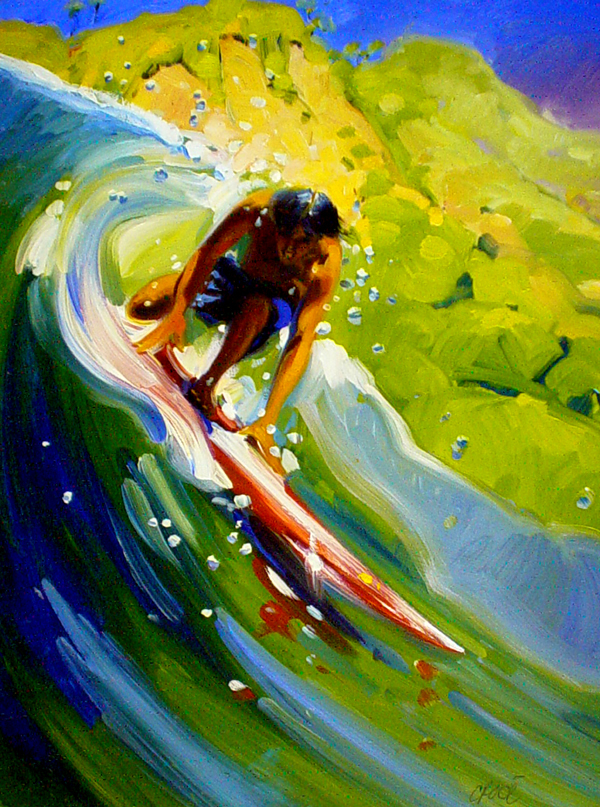
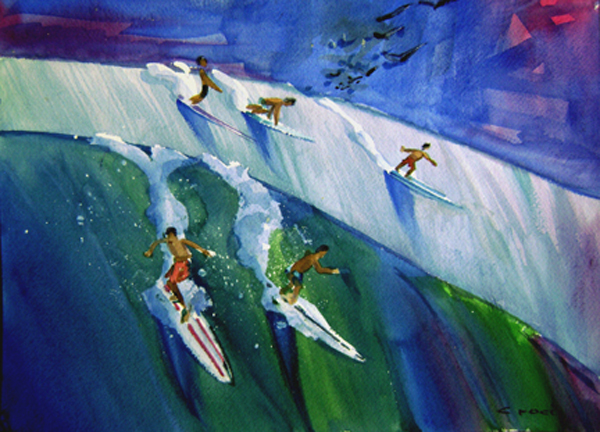
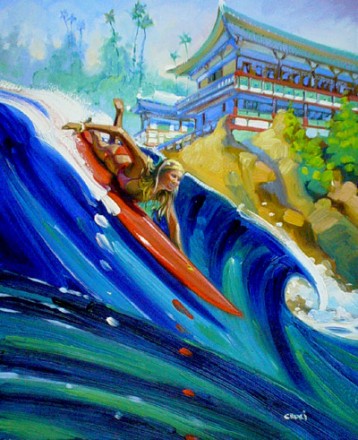
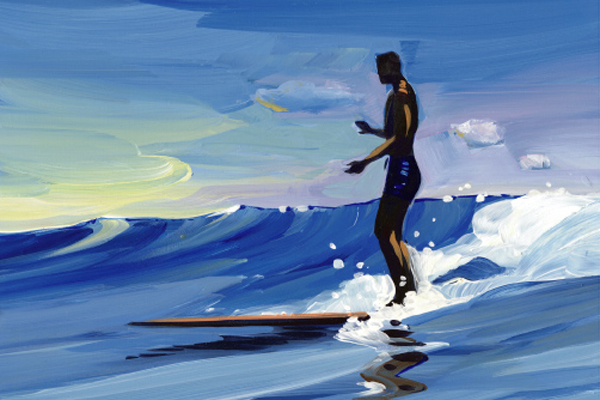

Fly Van Swae Interview
Jean Pierre Van Swae is a California surfer/shaper who goes by the name of “Fly.” A popular surfboard shaper for over 40 years, he started his board building career making fins for Fred Wardy. Fly explains why it’s so important to “keep the stoke” and to spread aloha in our daily lives.
What was it like growing up?
I was born in Europe and I came to the United States when I was five years old. Raised in California, we lived inland in places like West Covina and Monterey Park. It was alright, we would slide down hills on boxes for entertainment. That part of my life was mediocre but still fun.
It wasn’t until ’58 when we moved to Laguna Beach that I saw guys riding waves. It was like a door opened up. It was like “Wow!” We’ve got the ocean, guys riding surfboards – it was something all new to me. The whole experience just tickled the hell out of me. Surfing was love at first sight.
Do you remember the first time you stood up on a board and the feeling you had?
Yes. It was at Doheny in 1959, on a balsa wood board from Hobie that I paid 60 bucks for. There was nobody out in the water and it was a small day. It was frustrating at first because I would pearl or I would miss the wave. And this went on numerous times because the board had very little rocker – it was almost like a tabletop! I finally caught a wave and it was such an exhilarating feeling when I did stand up, it felt like I was literally on top of the world. There are two things in life you will never forget – your first wave and your first gal.
Tell us about your first job
I hung around Fred Wardy’s shop so much they finally put me to work. I started learning about things like fins, fiberglass, resin, and foam. I really learned how to make a board from start to finish. It was a job that wasn’t really a job. It was a bunch of guys that worked together and we had a blast. We would all go surf Trestles and come back and then do our work, have dinner, a few beers, and get ready for the next day. There was a lot of camaraderie and we knew what to do.
Who did you look up to at that time?
People like Dale Velzy. Wardy. Phil Edwards. Mickey Munoz. All local people who were veterans. Seeing people like Joey Cabell, how smooth he was. Watching guys who really knew positioning, and knew how to judge waves – and to just be smooth about it.
How important is style?
You can watch people out in the water and everyone has their own style. Without even seeing their face out there in the water, you can tell who it is. Surfing is like a dance and you don’t want to be awkward. If you’ve got style you can actually use that in your favor to get into and out of situations. Besides just looking good, you can throw your arms out and can gain a little speed. Style is functional.
What do you love about surfing?
That each day is a different day. With waves, you don’t really know what Mother Nature’s gonna throw at you. Everybody has a different feel for it. Some people use it as a form of meditation. Those that have frustrating jobs and they need to vent it out. For myself, I enjoy what I do – making boards, so for me it is a gift. Basically each wave that I get is a gift that I enjoy.
Each wave that you catch is a treat. A gift of nature. It’s being in harmony with the whole environment – the ocean, the swell. It’s you and the ocean melting together. With a certain amount of dedication, it’s kind of like a reward. I’m happy if I can stand up and hoot and holler!
What is your process for making boards?
I try to find out how long they’ve been surfing, what they surf and where they surf. I get a feel for where they are in their surfing. Everybody has a different way they want to have fun.
What’s your favorite part of shaping?
It’s the whole process. It’s like a sculpture that you are doing for someone. When I get a blank, it’s like a raw canvas. Shaping is done in segments starting with the plan shape, the rails, contours of the nose and tails. All of these things add up and then a picture unfolds. It’s like doing a painting.
How long have you been shaping?
I’ve been on my own since 1970, shaping my own boards and glassing them. My old shop was in a barn so I did everything – from shaping to glassing. I even made my own fins. I always look at something and think: “How can I make it better?”
Of all the places you’ve traveled to, what place in particular stands out and why?
I spent some time in Tahiti which was fun. I didn’t get to surf a lot of the neat spots over there but I did get to surf some real enjoyable places. But I have to admit, being in Kauai was one of the best times I’ve ever had. Friends that I knew and friends that I met – along with the sheer quality of waves. There were places that were really good – like left break waves. Pakala’s is a great wave. You can longboard or shortboard and even get barreled there.
Who/What inspires you?
There are people like Mickey Munoz – he’s kept the stoke. People who are still surfing that are still pumped up. Also Fred Wardy, Del Cannon, Terry Martin – these guys have taught me a lot. Not only are they my friends but they’ve been willing to pass on to me what they’ve learned.
Life inspires me. It’s really a leaning process. Everyday I go out I try to learn a little bit and maybe help someone out. I try to keep the aloha spirit out there.
What are you most proud of?
I’m proud of all of my kids. They’ve done so well. My youngest Jean Paul is an excellent photographer and he’s got the best job. I’ve got a wonderful granddaughter. I’ve taken all of my kids out in the water at the age of one so that they can share the stoke and grow to love surfing like I have.
Oh, and my ’55 Chevy station wagon named Peggy Sue that I have been busy restoring…
Who do you feel are some of the people shaping the path for surfing today?
There are so many good shapers today. Timmy Patterson I’ve known since he was a little tiny kid. I would have never guessed that he would be such a great board builder. He grew up to be an excellent shaper and has even taught me a few new tricks! His Dad would have been very proud of him if he were still alive.
What’s your favorite board you are riding these days?
Right now it’s a big board. It’s 10’7″, 27 inches wide, 4 inches thick that was made for a customer who didn’t want it because a pinline was left off of it! At San Onofre, it is such an easy riding board that can catch anything that you can see. It’s just downright fun! I call the board “Eddie.”
What’s you favorite surf spot?
It would have to Lowers even though I haven’t surfed it in a while. It’s a good wave and it’s so much fun. I’ve had numerous good times surfing there, uncrowded – back when the Marines used to chase you off the beach. Now it’s open to the public and it’s like Malibu. I like to keep the fun in surfing. And surfing with 60 guys is just a little too much. I have more fun surfing at San Onofre with a bunch of good friends. It’s the fun factor. I always ask “How’s the fun meter – is it cranked up yet?”
What kind of music do you listen to?
Elvis. Bob Dylan. Led Zeppelin, Crosby, Stills, & Nash, Cream. Older guys, sure but there is some really good stuff in there. Blues like B.B. King – Jazz like Dave Brubeck and Take Five. If it’s soulful and has a great beat – even AC/DC!
What are you most grateful for?
Coming to California and making it to the beach! And for my Mom getting job and making it to Laguna Beach. I am so damn grateful.
What’s next for Mr. Van Swae?
I’ve gotten numerous requests for stand up boards. This is new territory for me as a shaper. Some people don’t like it and that it’s going to the “dark side.” People are really having a good time with them and it’s good exercise.
Basically I want to refine my business and make it as good as I can. And I simply enjoy the fact that I am on the beach making surfboards.
Find out more about Pierre “Fly” Van Swae and his surfboards here. Photographs of Fly surfing by JPVan Swae. All other images by Glenn Sakamoto.
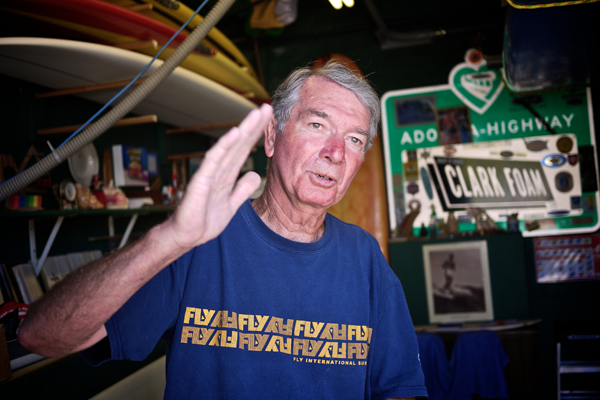

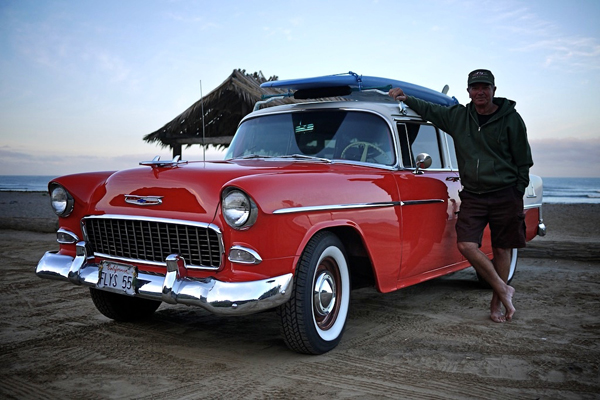
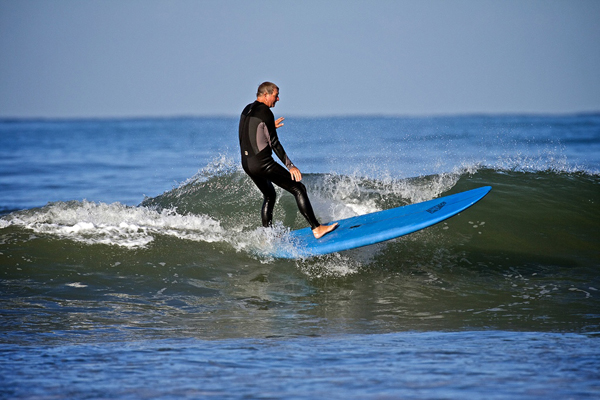
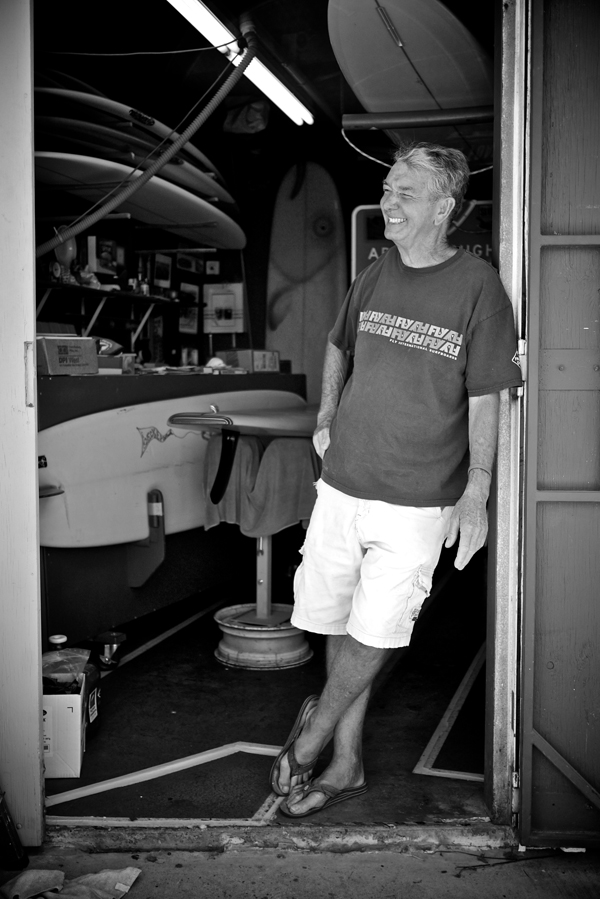
Daniel Costa Interview
Daniel Costa is a surfer/shaper/photographer from Portugal who is the creator of the popular blog Retro Movement. Interested in keeping traditional board riding alive, Daniel documents the surfing lifestyle through images, texts, and board building. We caught up with Daniel to learn more.
What was life like growing up in Portugal?
It was okay, but when I was young Portugal had just come up from a civil revolution that for ages closed the country to the world. I guess that kept us a bit behind the rest. When I was around 16, things started to change. I was lucky in some ways because I grew up on a farm instead of a city, so I had a pretty good childhood—always liked to be outside doing my things. I was stoked on learning and would do anything like build my own toys or do some agriculture to get some money cause my family was just a simple countryside one. I always felt that something could be better than that. For some reason, I think I always knew that I was different from all my friends where I grew up.
Who did you look up to and admire when you were young?
I don’t think there was anyone who I admired, to be honest, until I found surfing at age 15. I was on holidays, and saw Surfing magazine for the first time covering an interview with Darrick Doerner, with really impressive images in black and white of Waimea. And that was it. That was the changing point to me. Then, I would say my heroes were guys like Tom Curren, Gerry Lopez and Tom Carroll with his famous snap in the curl of Pipe. Now, the ones I most like to watch gliding is Skip Frye, Terry Fitzgerald and Derek Hynd.
What was the feeling you had when you first stood on a surfboard?
I remember I felt something like I never had felt. I still remember arriving at the beach to learn surfing. It was wintertime and I didn’t have a wetsuit. I’d been working all summer, but it was only enough to buy the board; the wetsuit had to wait another summer, but it didn’t matter. I never felt the cold; I was completely stoked. For the first time, I was feeling really alive. It was like I had just been awakened from a long, long sleep. I still remember like if it was today.
Where did you interest in art and design come from?
With shaping, I was pushed by my best friend. His words to me were, “Hey, man, you are really good working with your hands. You really have to try shaping a board.” At that time, we were together all the time because we were running a surf club in the town we lived, so he really pushed me into it. The photography? It’s an old passion that I have never had a chance to go forward with because of the money issue. Then, when the digital was cheap enough, I bought my first Nikon and it has been my escape ever since. Now, I have a couple of old Nikons and I really love to shoot film.
Now, with the stupid crowds in the lineups, most of the time I just go away inland to stay alone, away from all the crap surf scene that is out there nowadays. I just stay cool, looking for something to shoot. Now I only like to surf when there’s no one out. I don’t have the passion to be in the water with a bunch of jerks.
Tell us about Retro Movement.
It’s was supposed to be a project around my surfboards, mostly about lifestyle—the lifestyle we had the first years I started surfing back in the 90’s, when surfers were a different kind of people from the man in the streets. I still have in mind a couple of ideas (like starting some clothing using my photography).
I have another thing starting to happen next autumn. “The Retro Experience” basically brings together people that want to surf relaxed on cool waves without the crap around. We’ll give them the opportunity of riding all kinds of different boards—all real surfboards built by me and not those plastics things. We will have longboards, classic noseriders, twins, singles, quads, etc.
I still have a couple more things I would like to do. I especially want to try to give back something to the sport that made me what I am today.
Of all the places you have traveled to, what place in particular stands out? And why?
The East Coast of Australia. It’s a wonderful place to spend a couple of months. There are incredible places with long pointbreaks away from the crowds—just perfect for longboarding. The people are great and their relaxed lifestyle is really a good vibe to feel and share. Also, I’ve made great friends there and met one of the kindest men on earth—Alan Crosky. He gave us shelter for two months on his place, and shared with me plenty of stories and knowledge.
Who or what inspires you?
In the shaping, I need to have the feeling. For example, let’s say I have a nice noserider on order. I will not start shaping till I feel like it. Normally, it comes after a good session in the water. When waiting for the waves, I’m thinking on the last wave and the board I’m using, and it’s gonna start developing in my head the idea of the next board. If I view in my brain the board I want, then I leave the water and go straight to the shaping bay. This is how I like to do it. Sometimes my customers have to be patient, but I’m lucky; they already know how I work and they are quite happy with this idea because 90% of my customers know really well what they want. They don’t want a crappy board made in China.
What is the greatest thing you have learned in your life?
That life isn’t about acquiring wealth and a big house with the garage full of Ferraris and Mercedes. Life is about joy and sharing with the ones you love. It’s about simple things—like riding a wave with your mates, putting your child to sleep and feeling the unconditional love from her, meeting a nice human being …so rare these days now. I am lucky and found great friends all over the place. That what counts and that’s what I’m trying to teach my daughter.
What are you most proud of?
Searching for my goals. Everybody said that I was crazy giving up the best engineering degree to work on boats to watch the ocean and get money to go away and see the world. The first year people from Portugal were able to visit Indonesia, I straight away get the flight. Then, I went to Australia to live there for six months and came back with the certainty I would never work from 9 to 5 again. In a week back at my parents, I was done. I bought a caravan, asked the guy to drive to a camping area on the southwest coast of Portugal and, for the next seven years, that was my home. I was on top of the world, had achieved what I thought was impossible.
What meaning does surfing hold for you and how has it changed your life?
When I saw those images of Darrick Doerner at Waimea, I thought to myself that it could change my life. So, I started to search for more information about the surfing world. I found what I was looking for: a goal, friendship, complicity among members of a totally different tribe from the man on the street.
From an “A” student with the normal goal to achieve wealth, I changed to a simple guy just trying to surf as much as I can and totally absorbed by the surfing culture. Eventually I quit college. My parents freaked out. I started to be seen as the black sheep of the family, but didn’t care.
Nowadays, I can live and be happy with what I get instead of searching for a bigger house and a better car than my neighbor. I fulfilled most of my dreams and have had my work recognized by people who know what they are saying. Next May I will be exhibiting my photos in Japan at the Greenroom Festival. I’m stoked and comfortable with what I’ve got.
What brings you the most happiness in the world?
Every day, I wake up my daughter to take her to school and she’s always happy like if it was the best day of her life. That’s the ultimate happiness. No matter how long the tube rides or hang tens you’ll do, nothing compares to the smile of my daughter Zoe.
Who are some of the people you feel are shaping the path for surfing today?
There’s a lot of new guys out there. But, to be honest, I still believe that “the masters” are still the masters. To me, Donald Takayama and Skip Frye are the best ever.
What is your favorite board? Your favorite surf spot?
Hmmmm, it’s difficult to say just one. Nowadays, anything that noserides well and I’m stoked. I also would say my first pig; I drew the template on my board bag from what Alex Knost was riding in the Salinas Longboard Festival. It’s based on the Velzy Pig and I just loved it.
My favorite surf spot would have to be the place I used to live in my caravan. I got there the best waves, and the biggest too, of my life with no one or just with friends.
What’s your favorite meal?
Seafood with friends and family—that’s the best. I have some friends that are fisherman, so sometimes the great meals are at my place.
What are you currently listening to on your iPod?
I’m always changing, but some things are always there: Ben Harper, Pearl Jam, AC/DC, TSOL and the Litmus soundtrack.
What causes, projects, organizations do you support?
Right now, I’m a bit disappointed with organizations in general. I think they are run for the wrong reasons. On top of that, I have so many things going on in my life that I have no space to support anything.
What are you most grateful for?
I’m grateful for finding surfing back in the 90’s. I could feel and try the lifestyle, the culture, the stoke of meeting another surfer, surfing another wave. People who learn to surf today don’t have a clue what surf is. Also, I’m grateful for my friends I have that I known I can count on no matter what. I’m also grateful for my skills; I’m the worst salesman, but, on the other hand, I’m able to build whatever I want to.
What’s next for Dan Costa?
Good question. I ask the same question to myself over and over again. I want to take even further my surfboards. I’ve accomplished so much more than I was expecting, but now I know that it can be better. I want to take forward the Retro Movement project, my photography and, most important, be 200% present in my daughter’s life, giving her the tools to be a great human being. Pay my mortgage… that’s important too. If possible, next year I would like to go to California, but I would need a great summer!!!!
Find out more about Daniel Costa and Retro Movement here.
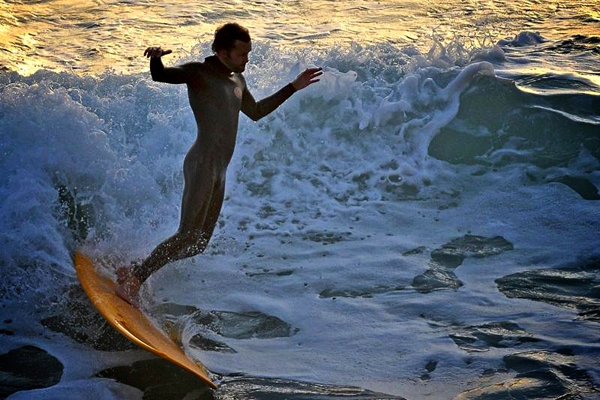
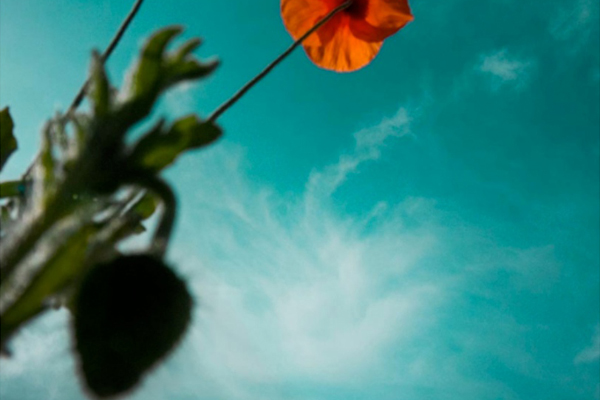
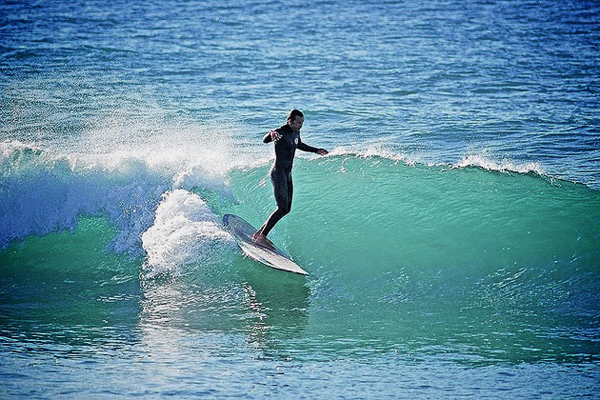
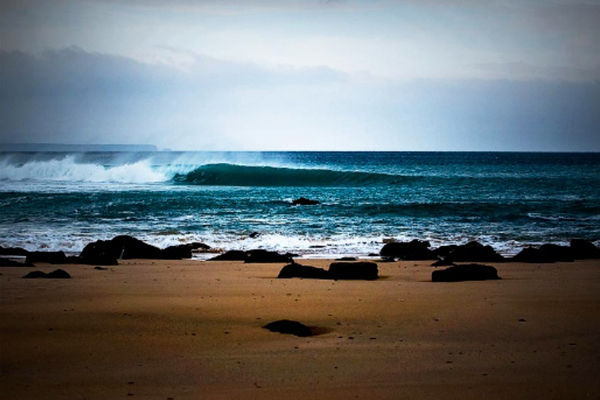
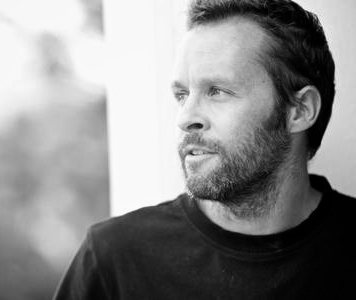
Miles Thompson Interview
Miles Thompson is a talented California surfer/artist whose paintings are a mixture of pop culture, island tiki, and surrealism. His work is like an endless stream of consciousness that flows from his mind to his brush. We spoke with Miles to find out what makes him tick.
What was life like growing up?
In ’71, I was born on a Navy base in Pensacola, Florida. Four months later, we moved to El Toro at the end of Laguna Canyon Road. I spent time at the beaches in San Clemente, Dana Point, and Laguna.
Huge lines of beefcake belly rash that lasted all summer from my first generation Morey Boogie at T Street and skimming at Strands morning, noon and twilight. I was a lucky, bespectacled and blistered kid for my first 14 summers.
I liked sponges so much I bused to Salt Creek daily in 8th grade to get tubes on my used Mach 7 and loved the graffiti under the bridge there—marveling at aerosol painted waves before the Ritz was even an idea: Anarchy! Locals Only! No Fat Chicks! Kooks Go Home! I spent a year and half in Australia and spent months on the Gold Coast, along the reef in between 8th and 9th grade. Sydney was amazing. Later, I graduated high school in Encinitas while living in funky Leucadia, surfing Beacons daily.
Who did you look up to and admire when you were a young man?
I looked up to the Bionic Man more than anyone for long time. I stuck tight with my boogie boarding, BMX big brother, gathering the vocab necessary to trash talk him. I learned to refine my drafting skills by watching the pencil of my stepfather, who was, and is, an architect. Around the time of high school, I really admired my dad’s wild nature. He took me out on Hobies, Sabots, weekend Catalina jumps galore and jaunt or two on an 8m Cup Runner or two.
When did you get your first surfboard?
My first board was a 5’10” channel bottom double fly swallow tail thruster that I got about a month after I started surfing. That was a Tubeline and I loved it like chips. I was 14.
What was the feeling you had when you first stood on a surfboard?
A drifty, falling downstream weightlessness was my first real sensation as I surveyed the water below my feet moving all around over orange sandy eddies. I had dropped into plenty of waves, but this was a whole new perspective on wavecraft—laughingly similar to an elevator’s cord being cut.
Where did you interest in art come from?
I just liked the way certain things looked that had a sense of personality, style and individual quality. I always loved good newspaper comics with systematic black spotting, whether or not they were inked with a brush or a pen. When a pen or brush touches paper, it can carry a lot of impact. Rick Griffin, printed in stacks of Surfer mags in every garage of my neighborhood growing up, was God. He can’t be topped … ever. (Sorry Robert.) For cartooning, there was only Mad, ZAP, Playboy and EC … the best.
What is your process when creating your art?
My stuff is now more about the research than it is about the craft and technique. The approach does vary depending on what I want out of the process, and it is always subject to change. Currently, I’m finishing a portrait of Dora this week that I started months ago.
With gouache painting, I try to honor the thumbnail sketch, but it often evolves as I sit with it and sometimes an idea becomes disproportionately ambitious. I love what I do, so I do it as best I can.
Of all the places you have traveled to, what place in particular stands out? And why?
My brightest oceanic moment lies in a single night between the Pacific islands of Hawaii and the real west, about half way out, on a dead calm sea, fertile with phosphorescent microjellies spreading giant gently slow rolling pointed V’s off the bow wake below the pulpit on a mirror that seemed to end at about 50 feet off. I was calmly, cosmically and stone cold soberly buffeted by the cotton candy of the milky way from horizon to horizon. Green/white waterbound lights, accompanied by corporate satellites overhead and perfect water all around, fused into what seemed was an island. It was peace.
Who or what inspires you?
My 7 year old daughter. Those that are self-possessed, without being self-righteous about facts, who elect to manifest their own honorable version of their history—history inspires! Venus, a girlfriend, music, art, food, sex, tiny nerds with big ideas, cameras and writing.
What is the greatest thing you have learned in your life?
That you go now. Patience. And that familiarity breeds contempt.
What are you most proud of?
My daughter. I’m constantly asking the universe, “She’s really mine?”
Who are some of the people you feel are shaping the path for surfing today?
Nobody is. The waves are shaping the future path of waveriding, not surfers or shapers. Nobody is leading surfing anywhere it hasn’t been already. The ancient surfers went straight so that they could share waves as communion.
What is currently your favorite board? Your favorite surf spot?
By far my favorite board is a 6’6″ Klaus Jones stringerless “Arc board,” inspired by Esteban Bojorquez’s surfboards like all of Klaus’ hulls. Klaus made this board for himself. Now, it’s mine. I also love my 9′ CC Slider when it’s flat or lulled out—such a fun one
Rincon is my favorite spot because of the community; it’s less of a hassle than surfing L.A. County.
What’s your favorite meal?
Ahi Tuna Ponchartrain at The Palace Grill in Santa Barbara. I just had some serious pumpkin, red pepper and cashew action—that’s pretty good. Sweet potatoes and thyme, ginger, breads, nuts, beans, salad and cheese. I still eat animals, but am doing it less and less in an effort to curb carbon impact.
What are you currently listening to on your iPod?
I’ve bought and sold music since junior high. I like heritage jazz a lot. I like everything but punk from Orange County in the ‘70s. I’m not impervious to the whimsy of a Moog, a Thermin or the human voice.
What are you most grateful for?
My ex-wife—her life after a year of cancer treatment, her love as a friend. We were 13 years together, so she’s family and I just love that she’s alive. I’m immune to all shit thanks to entirely to this one natural miracle.
What’s next for Miles Thompson?
Promoting Ocean awareness and Global Fishery Management.
In July, I’m taking on a one man show in Leucadia with an old friend. Planning an art board or two—maybe do some limited edition fins— with portraits of surf history, such as the Duke, Da Cat, Da Bull, Greenough, Liddle, etc.
I’m curating a Tiki Ti 50th Anniversary event in 2011 and publishing a volume of that show as well as producing my own inaugural ceramic set with Munktiki for that event.
I really want to continue my series of California portraits, and am planning a show a year and a half out with Jim McMillan on another portrait show.
All images courtesy Miles Thompson. All rights reserved.
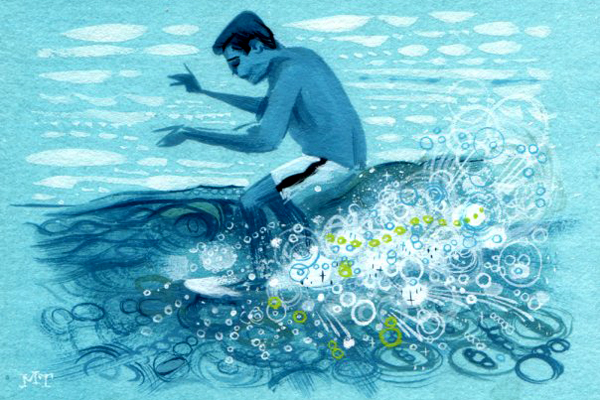
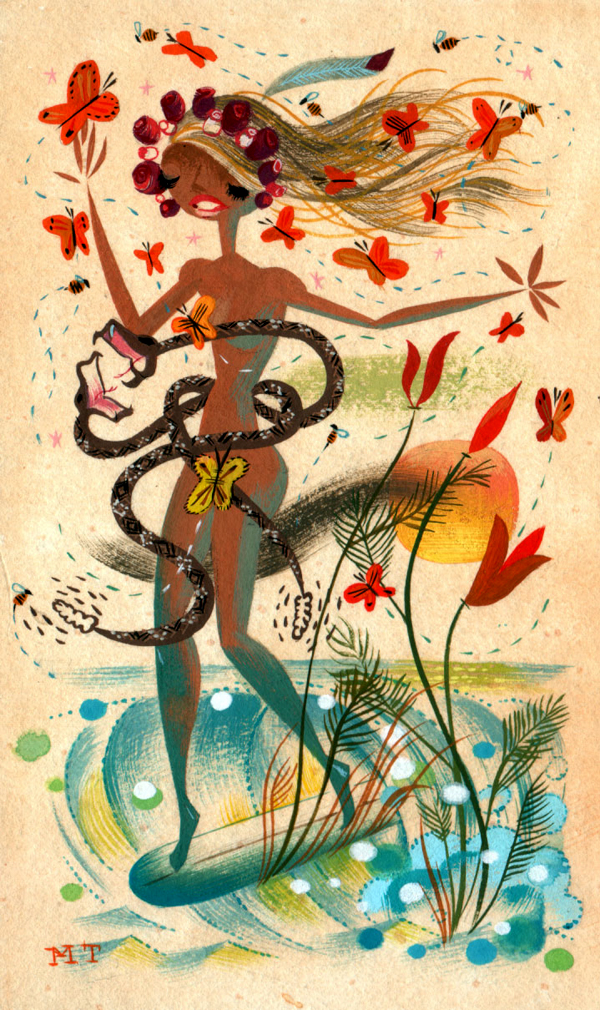
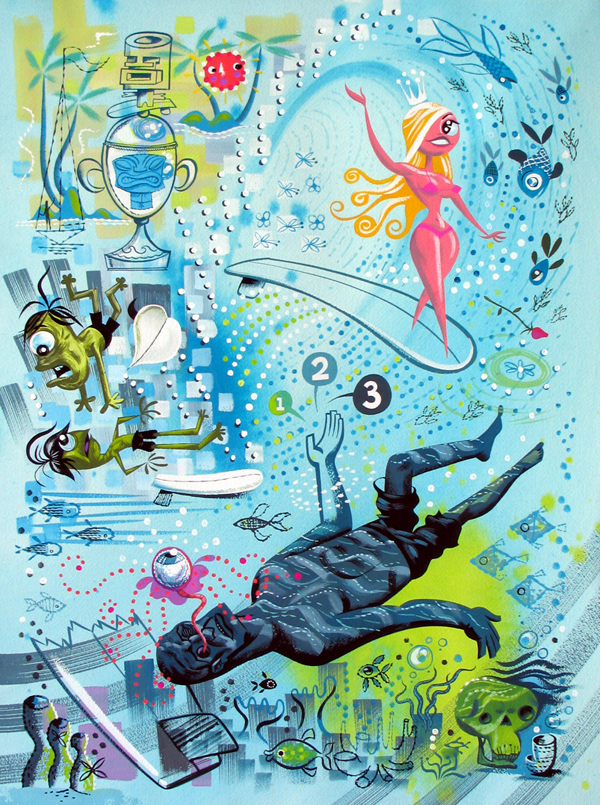
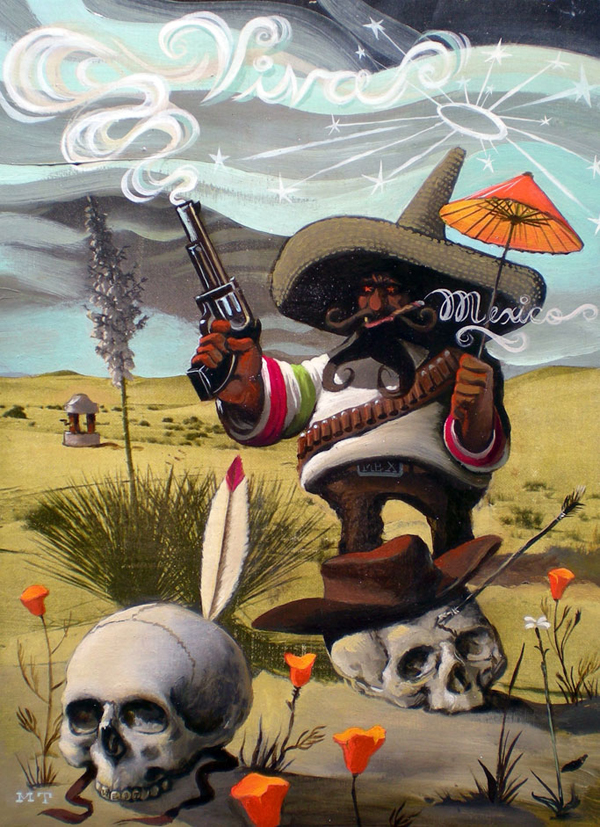
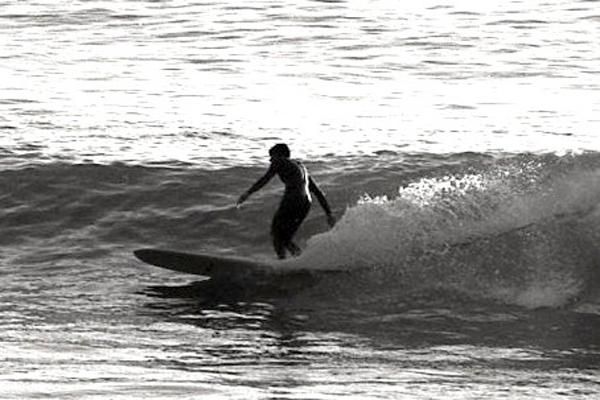
Matt Calvani Interview
Matt Calvani is a California surfer/shaper who heads up the Bing brand of surfboards. Matt continues the tradition of the South Bay surfboard building legacy while adding his own modern touch. We asked Matt to share with us his life of shaping.
What was life like growing up?
I grew up in rural Massachusetts near the ocean. My mom was a housewife and my dad had a business restoring old antique lighting—a self-taught craftsman. My parents got divorced when I was eight. I lived with my mom. She was truly remarkable and went back to school at 37. She got a B.A. in interior design. Then, it was off to California in 1984. I was in the middle of eighth grade and we lived two blocks from the ocean in Hermosa Beach. I was stoked because I always loved the ocean and got into surfing right away.
Tell us how you got started shaping
I became a typical surf shop gremmie and got to know a local shaper by the name of Tom Stanton. I started hanging out at his shaping room on 26th Street and became totally fascinated with the craft. I think he got sick of all my questions and finally gave me job helping him airbrush surfboards.
They became my second family. Tom was a perfectionist and a master craftsman who gave me a solid foundation to go out on my own. Like most fledgling shapers, I started in my garage shaping for local South Bay surfers. After getting a couple hundred boards under my belt, I rented a small unit next door to three of the main historical South Bay factories of the 60’s—Bing, Greg Noll and Rick. Some of the legends were still around shaping surfboards (like Hap Jacobs, Phil Becker and Lance Carson).
This was when I learned the old school art of shaping and longboard design. Meanwhile, a revolution in design was going on with the shortboards. Boards went from bulky flat rockers to extreme rockers, foils and ultra narrow outlines. Al Merrick was leading the revolution and Shoreline Glassing, in Hermosa Beach, was glassing them. I was airbrushing a lot of the Channel Islands back then. It was an exciting time, and I took complete advantage of the entire goings on. Dennis Jarvis of Spyder surfboards was tapping into Merrick’s designs and had a superstar surf team. I ended up with a job “rough-shaping” for Spyder and part-time for Hap Jacobs. This was also when the first crude shapes were coming off the KKL shaping machine and I mean crude.
Merrick was one of the first to jump on the technology and Dennis was always right behind. With the machine coming into the picture and the need for “rough shaping” not as prominent, I decided to go with a job offer at Becker Surfboards. This job was a trial of nerves. Phil Becker told me I had to work up to 11 shaped boards a day by hand or they would hire another shaper and I would lose half my income. I made the plunge but… man… that was the hardest year of my whole career. After seven years of that—I was done.
Tell us why you chose the Bing brand as your business.
I was already shaping single fin designs for Rick Surfboards with my friend Jeff Stoner and for Lance Carson when I ran into Bing in Baja Mexico on a random surf trip with some buddies. I told him I was building Ricks and owed him some royalty money for a few Bing & Rick boards Jeff and I had built. Then, I offered to shape his boards if he ever needed anyone to do it. As luck would have it, his good friend and one of his original shapers, Mike Eaton, who was the current licensee for Bing Surfboards, happily relinquished the name since he was quickly approaching retirement himself. This couldn’t have happened at a better time for me. With Channel Islands and several other companies dominating the shortboard niche, I quickly realized that if I continued down the path I was on, I would struggle for a long time to carve out a place for myself in this competitive market. Bing gave me just the opportunity that I needed to move forward in my career as a shaper.
I always knew that I wanted to take Bing Surfboards in the direction of “a core high-end brand”. The Bing brand has always had a mystique about it—from its association with David Nuuhiwa and Dick Brewer to the Campbell Brothers bonzers—that has made it a part of surfing history. I started introducing and refining those amazing historical shapes. My goal was to capture the essence of those eras in surfboard history while adding the knowledge I had learned in my own journey.
How come there isn’t a Matt Calvani brand?
I strongly believe in a “brand,” a company that goes far beyond its original founders. I don’t want this company to be about me. It’s more about carrying on the Bing legacy, setting my ego aside and focusing on building the brand to the extent that I don’t even sign the boards. In the 60’s, Bing employed a lot of talented shapers, but in the end it was the brand that stood the test of time. Take the Ford Mustang, for example. Not too many people know who designed that car, but people know that it was a quality product because of the Ford brand name.
Who inspires you?
Pioneer shapers Matt Kivlin, Joe Quigg and Bob Simmons, who inspired Dale Velzy and Hap Jacobs in the balsa era. That led to the first surf shops and surf brands like Bing, Rick and Jacobs. This, in turn, made way for the shapers I worked with, like Dan Bendicksen, Dennis Jarvis and Phil Becker. They all, directly or indirectly, inspired me or taught me what I know today.
Do you shape your boards by hand or do you use a machine?
I guess the easiest answer is BOTH. I started shaping boards before the machine was really even relevant, grinding my way through shape after shape at Becker. When the computer came along, I began to see its value as a tool just like my Skil or Rockwell. When I opened my own surfboard shaping and glass factory, the machine really became crucial to my production because in order to keep nine guys fully employed and busy, it takes volume. I just wasn’t able to manage a business, employees and shape that many boards a day by hand. I learned to use the technologies to help in the production, but hand-shaping is equally as important and critical to my business.
With each design idea and concept for a certain board model that has specific performance goals, I typically go through an R&D phase. I hand-shape iterations (sometimes 10 to 20) of a new model until I arrive at the one that works and has the aesthetics that I envisioned. Then, that final shape is scanned and programmed to be milled on the CNC machine. The outcome is that I can maintain the quality and consistency of every board and have the ability to scale the master shape’s dimensions by length, width and thickness.
What is your favorite board? And favorite surf spot?
I have a lot of go-to boards for certain conditions that I know will work, but most of the time I’m trying new concepts and testing them. In that regard, I really don’t have a favorite board.
La Saladita, Mexico for longboards. It’s a left and when the swell and size is right, it can break just like Malibu. For shortboards, it would have to be Tavarua— Cloudbreak and Restaurants. Both are places that I know the wave will be near perfect and always break the same year after year.
What do you love about surfing?
When surfing, the two favorite places I like to be are on the nose or in the tube.
What is the greatest thing you have learned in your life?
The greatest lesson I have learned is how to manage my life, relationships and finances so that everything is in balance.
What are you most proud of?
That I believed in myself and persevered. In high school, my career counselor kept telling me I needed to go to summer school or I wouldn’t graduate high school. He said, “What are you going to do?” I told him I was going to make surfboards. He told me, “You can’t do that!” Everyone told me I couldn’t make a living making surfboards. I sometimes regret not going to college, and I think I got pretty lucky. I usually tell kids that have an interest in shaping to go to school first to have something to fall back on.
What brings you the most happiness in the world?
When my life is in balance. When my guys have work. When Margaret and I are getting along well and everyone around me is healthy. I don’t consider myself materialistic, so I don’t need a lot of unnecessary things. I’m grateful for what I’ve got.
What’s your favorite meal?
Growing up in an Italian household, it’s pretty much anything Italian. The runner-up is sushi.
What kind of music do you listen to?
Anything that sounds good or inspires me.
What are you most grateful for?
My family and friends. And for Margaret Yao, who is the best thing that ever happened to me and who will become my wife this fall.
What’s next for Matt Calvani?
I’m going to expand the Bing line of alternative shortboards with my team rider, Chris Del Moro. He’s a super talented surfer and person, and it’s one of those shaper and surfer relationships that happens so rarely. So we are looking forward to the results from his involvement and the impact it will have on the Bing brand.
Find out more about Matt Calvani and Bing Surfboards here. Matt Calvani is also shaper for Jacobs Surfboards.

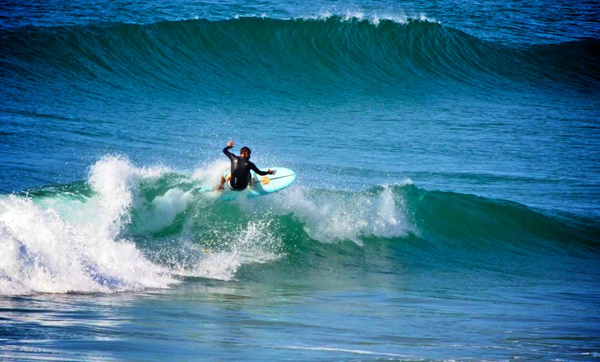
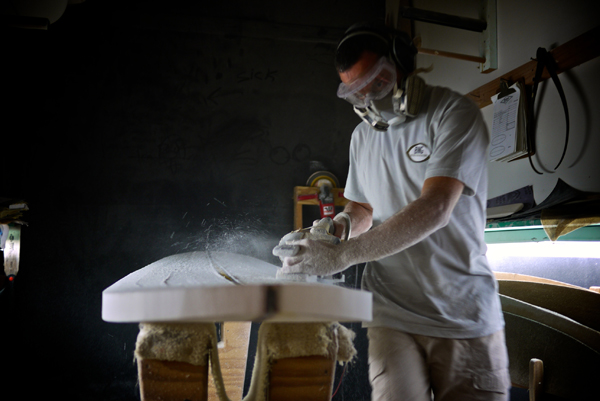
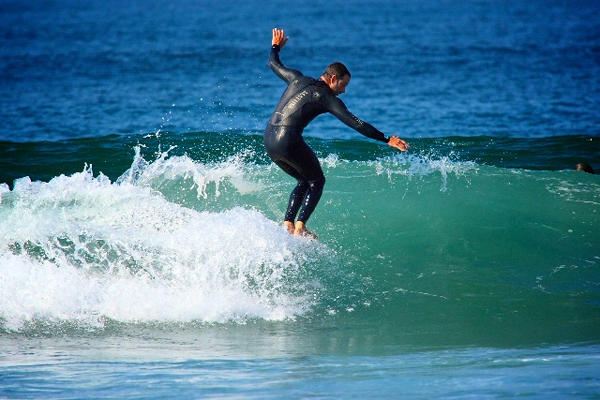
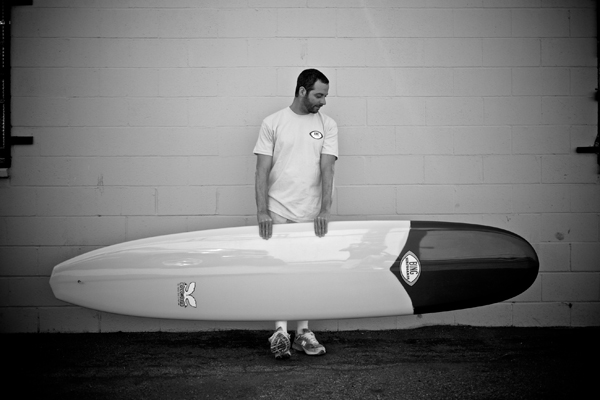
Prue Jeffries Interview
Prue Jeffries is a talented California surfer born and raised in Australia. She recently appeared in a film about the history of women’s surfing, Dear and Yonder. Formerly a competitive surfer, Prue now spends her time surfing for the sheer pleasure of it and practicing holistic healing for others. We spoke with Prue to learn more.
What was your life like as a young child?
I grew up in Sydney, and my childhood revolved around being around the beach and being in the water all day. I started surfing because of my dad. I spent a lot of time surfing with him and a lot of the boys in the neighborhood. I had two brothers and a lot of uncles who were always doing something, so I grew up with a lot of activity. When I was young, I also tended to ask a lot of questions. Not all of them were answered to my satisfaction back then. I imagine it probably wasn’t very easy on the adults!
Do you remember the first time you stood up on a surfboard?
Yeah. It’s funny because my middle brother and I would egg each other on when we were little. He used to surf and I was body boarding at the time. I used to watch him. I didn’t want to do just the whitewater thing. I remember standing up and riding the green face and that feeling in my stomach like I was going down a big hill. My heart was in my mouth, butterflies in my tummy and in awe of how beautiful water is as it moves.
Tell us about your first board.
It wasn’t mine, but a community board! In Australia, they have these foam boards called “foamies” and that’s what you learn on. Eventually, I progressed to a fiberglass board. It was a board I borrowed from my uncle, a red single fin. It was my first real board that I learned to surf on.
Who did you look up to and admire when you were a young girl?
I was odd in the sense I didn’t really look up to anybody. However, there were certain qualities I admired in people—people who were more generous in nature, quiet, kind. When it came to surfers I could look to, it would be people like Tom Curren …those who were a bit quiet and humble with their abilities. I also read books by Krishnamurti and had admiration for those types of people.
You have a deep interest in spirituality. Can you tell us more?
I remember being a small girl wondering, “Why am I here?” It was a very significant question for someone being of a young age. I still don’t have that explanation. (Laughs) I don’t need to anymore, and I that is a big difference. It is something innate I was born with. Different things in my life have made me aware of how important that is for me. I spent time in the library reading books written by the Dalai Lama or those kind of subjects.
Even while I was competing, I was reading things like the Tao Te Ching. I had a lot of conflict about my spirituality and competing. For ten years, I simply could not put the two together. There was a lot I learned about being human and being in the world. When I stopped competing, I was really happy. Finally, I didn’t have to be someone other than what I already am.
Tell us about your other interests
I’ve been working on something for the past couple of years. It is a healing art called BelliWay. And I love it more than surfing. (Laughs) I was looking for something that can make me as happy as surfing. It’s about helping other people. I’ve had a lot of people put a lot of energy into helping me and my career. I never forgot that and it had quite an impact on me and my life. Now I can give back. It’s like surfing because every person who walks in the door is different—just like every wave. You never know what is going to happen.
What is it about surfing that you are drawn to?
Before surfing, I was a high-strung person and I needed an outlet. Surfing definitely provided that for me. Now that I am away from competing, when I do go in the water it is to connect and enjoy what the ocean is. All that stuff about competing has just fallen away. Before, I couldn’t imagine why people would just sit in the water and socialize. I would think, “What are these people doing?” Now, it is okay for me to just go out and enjoy it with friends. It really helps me to be in the moment and not really think about much.
Tell us about your experience being a part of the Dear & Yonder film.
I wasn’t really thinking about surfing much when Thomas (Campbell) called me. We had a long conversation about it and I was like. “Yeah! That’s cool!” Then I didn’t hear from him in a few months. Finally, Thomas and his wife, Tiffany, invited me to be a part of the film and wanted me to come down to shoot at Saludita, Mexico. It was funny because the break they wanted to film at, I had already gone down there previously with Linda Benson and some friends a little earlier. It was a real surprise as I have not been involved in the surfing industry for a couple of years. I was real thankful for the opportunity. The whole crew was so chill; it was a really laid back experience, probably one of the most positive experiences I have had in my career.
What meaning does surfing hold for you and how has it changed your life?
Surfing is a source of peace for me. It was originally a physical outlet, as I had an abundance of energy that needed channeling. It has changed my life as I traveled so extensively, through surfing, that I have had experiences and connections with so many diverse and different people. It has shaped where I am now and who I have become in a very broad way.
Who are some of the people you feel are shaping the path for surfing today?
I would say anyone that surfs and is happy to be exactly who they are.
Who or what inspires you?
People that are fearless with their search of truth.
What brings you the most happiness in the world?
Feeling love in my heart. Seeing children play.
What are you riding these days and what is your favorite surf spot?
My quiver consists of mainly fishes these days. My favorite is my Donald Takayama 5’4” quad with Halo fins. He calls it the Huma Huma Nuku A Pua’a. Every time he makes me a new board, it goes just a little bit faster. (Laughs) I like the glide and speed. There is an effortlessness to the fish that I quite like.
I live in Encinitas, so I am always at Pipes. If I had a choice to go travel again, I would probably go to Pasta Point in the Maldives or the beach breaks in Hossegor, France.
What is your favorite meal?
The thing I do get cravings for is Vietnamese vegetarian phở. Anything vegetarian – tofu, broccoli. And, of course, chocolate.
What kind of music do you listen to?
I have been on a classical bend for a couple months—Vivaldi and some Puccini. When I was younger, I listened to a lot of heavy metal. But these days, I cannot bear it any more. I don’t mind some upbeat music here and there, like jazz, but basically if I had a preference, it would be classical. (Laughs)
What are you most grateful for?
Life, the ability to love and the people to love too.
What’s next for Prue Jeffries?
Continue to develop our BelliWay. I’ll be focused on getting that up and going!
Find out more about Prue Jeffries and BelliWay here and here.
Photographs of Prue Jeffries courtesy of Tiffany Campbell.
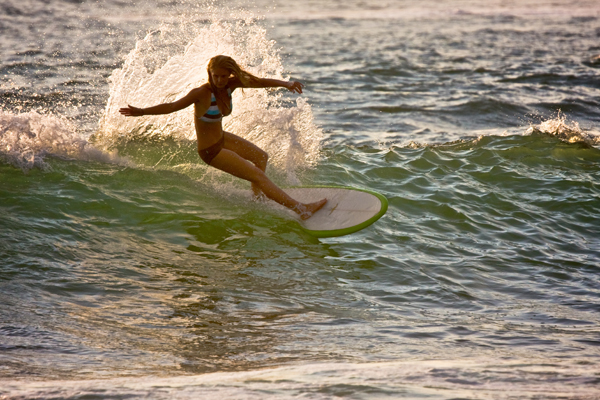
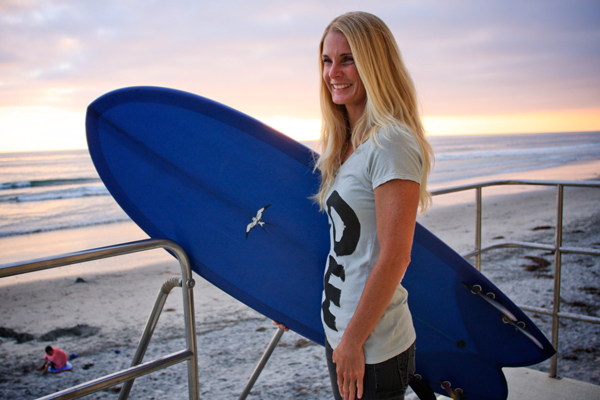
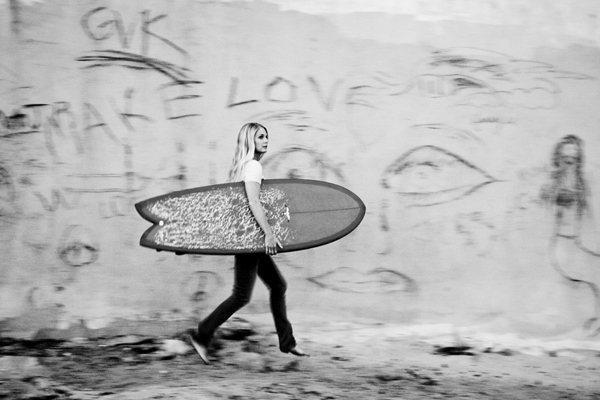
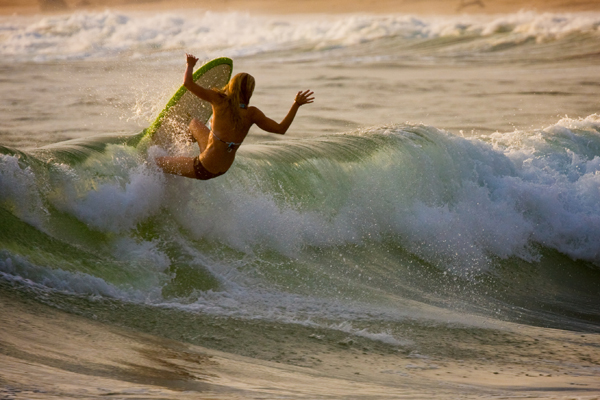
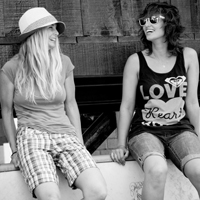
Nolan Hall Interview
Nolan Hall is a California surfer/photographer who captures today’s contemporary surf scene with such notables as Alex Knost, Robbie Kegel, and Andy Davis. He is also a commissioned photographer for Vans and RVCA. We spoke with Nolan to learn more.
What was life like growing up?
I grew in Capistrano Beach. I started surfing when I was about 8, I think. My dad would take me down to Doheny and San O. I would pretty much hang there all day. I met a bunch of kids the same age as me—Robbie Kegel, Tyler Warren, Alex Knost, Bobby Blankenship, Jeremy King, Cody Faircloth. We would just surf all day. It was awesome
Who did you look up to and admire when you were young?
My mom for sure. She is a plein air painter. She has always encouraged me to be creative and follow my dreams, but on the beach it was Jeremy King, Cody Simkins, Thomas Campbell, Joel and Andy Davis. Me and Alex used to drive down to Andy’s house on the weekends. We’d surf and paint and make art with him. At the time, I was freaking out. I had FREE ads on my binder at school, and I was kicking it with Andy. He was such an inspiration to me growing up. Thomas has been amazing too—helping me with my photography. When The Seedling came out, it was like our bible. It was our own secret club.
What was the feeling you had when you first stood on a surfboard?
When my dad first took me out, I hated it. I might have been too young. I didn’t like the cold water and waves crashing on me. But as soon as I was able to turn and surf comfortably, it just clicked for me. And making friends that I surfed with all day was great.
Where did your interest in photography come from?
I think just from being around such creative people. I wasn’t ever very good at drawing or painting, but loved shooting photos. Picking up photos from the lab was the best feeling – I was always so excited.
What do you look for in capturing a good image?
Well-balanced composition, emotion and an overall feeling.
Of all the places you have traveled to, what place in particular stands out? And why?
Japan and Australia are amazing and I always love going there. There always seems to be so much good energy there. Japan, in general, is just a really interesting place, and Oz is such a beautiful country. I recently went on a U.S. tour when Japanese Motors toured with Modest Mouse Traveling through the U.S. was pretty cool. Inner America, and the Bible Belt, was a really neat experience.
Who/what inspires you?
I get inspired when people jump outside the norm, people like Josh Lazcano, Barry McGee, Hamburger Eyes, Ed Templeton, Aaron Rose, Megawords, ANP Quarterly, Jim Goldberg, Bruce Gilden and some of the Magnum photographers. THIS Los Angeles just started up—a super amazing gallery.
What is the greatest thing you have learned in your life?
I’m not sure I’ve learned it yet.
What are you most proud of?
I guess my photos. Eventually, I’d like to put out a book with all my favorite shots.
What meaning does surfing hold for you and how has it changed your life?
I think it makes me see things differently … and it’s such a positive outlet.
What brings you the most happiness in the world?
Being with my friends, doing fun things and getting good photos.
Who are some of the people you feel are shaping the path for surfing today?
The ones that go against the grain. Alex (Knost) is so fun to surf with; he has so much energy and it’s always so much fun. Dane Reynolds too. I’m over in Australia right now, and watching him surf is really interesting. The lines he draws are so different and creative.
What is your favorite board? Your favorite surf spot?
I don’t really have a favorite board. I’ve had the same two boards for like five years. I just got a 7’4″ Tudor mid-length. It’s super fun, but needs a shoulder-high point break. Favorite spot could be Scorpion; its just a flawless wave.
What’s your favorite meal?
Anything home-cooked.
What are you currently listening to on your iPod?
Atlas Sound, BRMC, Christmas Island, Black Lips, The Strange Boys, Brian Jonestown, Julian Casablancas, The Darkside, Ariel Pink, Girls, King Tuff, Loop, Spacemen 3, Sonic Youth, Deerhunter, Moon Duo, Suicide, Crocodiles, Spiritualized, Wire.
What causes/ projects/ organizations do you support?
Nothing right now. I’m just trying to support myself at the moment … and barely scraping by.
What are you most grateful for?
My family and friends. I owe a lot to Alex. I don’t think I would be where I am today without him.
What’s next for Nolan Hall?
Right now, I’m in Australia shooting photos for Vans. We’re on the Gold Coast right now. Then we’re going to West Oz, then Torquay. I’m stoked to see my friend Ryan Heywood! Haven’t seen him for awhile. but on a greater scale I really have no idea what I’m doing. Sometimes I feel like a jellyfish—just floating through life, going wherever the water takes me.
Find out more about Nolan Hall at his blog here.
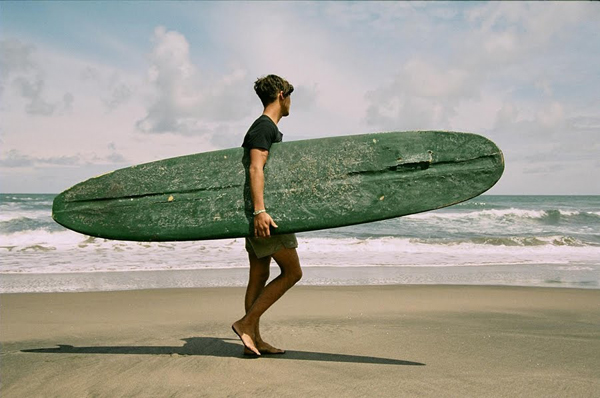
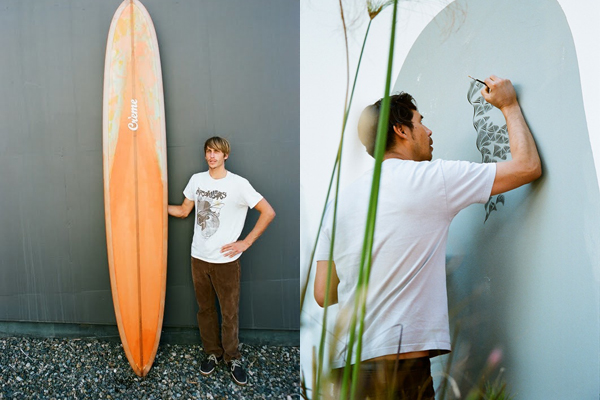
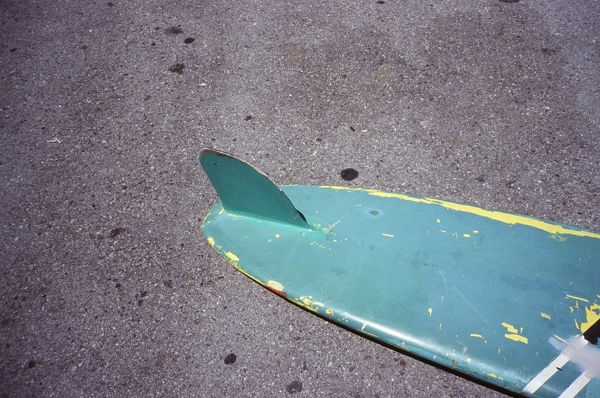
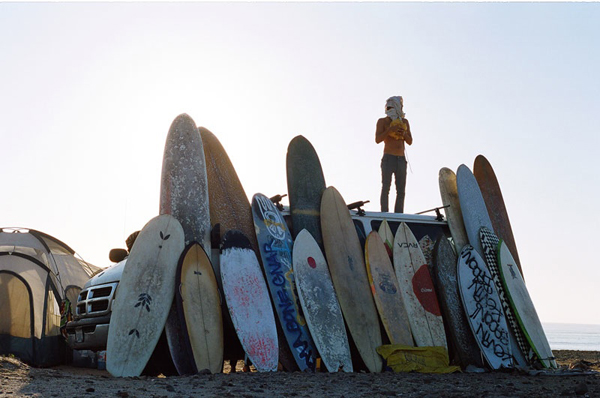
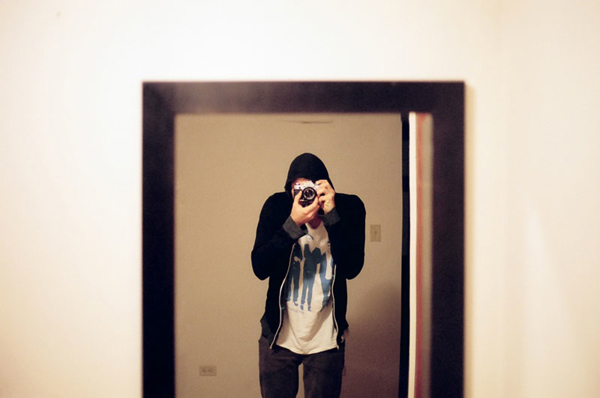
Jeff Johnson Interview
Jeff Johnson is a California surfer/writer/photographer who stars in Woodshed Films’ 180° South – A trip that mirrors the legendary journey of Yvon Chouinard and Doug Tompkins. An accomplished writer, his works have appeared in Surfer’s Journal, Surfer, and Alpinist. We spent some time with Jeff to learn more.
What was your childhood like?
I grew up in Danville, California in the East Bay San Francisco. Lots of open space in my neighborhood—very few fences. Grassy, rolling hills. Oak trees and walnut orchards. The girls rode horses. The guys rode motorbikes.
When I was about 12 or 13 years old, I quit all the team sports, got a haircut and a skateboard, and was immediately at odds with all the jocks, parents and teachers. Suddenly, I had a new, small group of disenchanted friends who all felt the same about our surroundings. We wanted out.
In the 80’s, surfing still had an outlaw/counterculture vibe. I was naturally attracted to it. I started surfing when I was old enough drive to the coast. It took over my life. It’s all I wanted to do. I moved to Hawaii just after high school graduation in 1987. I was back and fourth till I moved permanently to the North Shore of Oahu in 1990. This was my home base for about 15 years.
When did you get your first surfboard?
There was a guy named Jimmy Olson who lived on my block when I was a kid. He was about four to five years older than me. The guy was like a god to me. He and his buddies were the only surfers in Danville. They looked different and acted different. He built surfboards in his garage, start to finish. When I was about 15, he took me to a remote pointbreak north of Santa Cruz. He told me it was a “secret spot” and we were “kooks” from inland. I took this as a warning: Secret spot, good. Kooks, bad. I caught my first wave that day, but it didn’t really get me till a year or so later. Then, he sold me a used board. I think it was a 6’0” thruster with shallow rocker, full rails, wide tail—full-on 80’s board.
What was the feeling you had when you first stood on a surfboard?
It was an overwhelming sensation—all this water moving beneath me. I felt weightless watching the water pass by the rails. It making me kinda dizzy. I couldn’t believe this sensory overload taking place in only a few seconds. These seconds I played over and over in my head as I lay in bed that night. The bug. I remember not wanting to rinse off the salt the ocean left on my body—laying there with salty hair dreaming of the next wave.
Who did you look up to and admire when you were a young boy?
My dad has always been my biggest hero. He was once a ski patrol, an excellent skier. Still is! He had me snow skiing when I was four years old. He’d wake me up at four in the morning to drive to Tahoe. I’d sleep on the floorboards of the truck and would wake up with the first light at Donner Pass. It was so great to watch him move over snow—so graceful and fluid. I’d try my hardest to emulate him. Those early years had a huge impact on me. I still love waking up long before the sun and going on crazy missions. You eventually become your parents, you know. I’ve become my dad in many ways.
I was skating in the era of Christian Hosoi and all the Bones Brigade guys, but I was into learning about Jay Adams and Stacy Peralta. I’d search for all those old Stecyk articles and Friedman photos. I’d learn their old tricks and mixed it up with the new ones.
As I got into surfing, I didn’t care who won the world title—you’d think I’d be into Potts or Curren or whoever was hot at the time. But, I was into reading about Miki Dora and Pat Curren, Mead Hall and the North Shore in the 50’s and 60’s.
As a climber, it was Yvon Chouinard and Royal Robbins and Yosemite’s Camp 4 in the 60’s.
All these guys were way before my time, but they were the ones I looked up to and still do.
What inspired you to become a storyteller?
My Dad is a great storyteller. His stories are so good that I often tell them myself. Even now, he’ll say, “Have I ever told you about … ?” And I will say “no” just so I can hear the story again.
I didn’t start reading till after high school—then I continued incessantly. Authors like Charles Bukowski, Cormac McCarthy, James Salter, John Fante have inspired me to write and share stories.
What was it about Yvon Chouinard and Doug Tompkins that inspired you to create 180 South?
Around 10 years ago, my friend Amy Kumler handed me a dusty old videocassette tape. She worked for Patagonia and said she found it locked up in a vault. She had to sneak it out of there because no one outside the office was supposed to see it. “Mountain of Storms” was written on it. Chris Malloy and I popped it in the VCR one evening. It blew our minds. In 1968, Doug and Yvon and friends drove a van from Ventura, California to Patagonia, Chile to climb Mount Fitzroy. They surfed the way down there, climbed live volcanoes and basically goofed off. They filmed the entire thing. But it was what these two men later became. Yvon would come home and name his clothing company Patagonia. Doug, who had already started and sold The North Face, would create the clothing company Esprit with his wife.
Doug sold his share of Esprit in the late 80s. He put all his money into creating the world’s biggest privately-owned land conservation project down in Patagonia. Yvon’s environmental efforts with his company, Patagonia, would set a standard on the outdoor industry and have an effect on the way business is done worldwide. We knew right away that this forgotten film we were watching was the beginning of a journey for these two men. It was the trip that changed their lives.
Chris had made some successful surf films already. We were inspired to do a similar trip (either following in their footsteps or something in the same spirit) and make a film about it. In 2006, it all started to come together as 180 South … a dream come true.
How are surfing and climbing similar?
They are both about working with nature rather than trying to control it. This kind of effort attracts a certain individual—one who is open and creative. So, it’s not as much the actual acts that are similar. It’s the culture.
Of all the places you have traveled to, what place in particular stands out? And why?
I would have to say Rapa Nui/Easter Island. I sailed through there on my way to Chile while filming 180 South. I had always wanted to go there. I’ve been all over Polynesia and going to the furthest corner intrigued me—the most remote habitable piece of land on Earth. It has the most interesting history, too. The island is in a really good place right now.
I found some fun surf there, too. There’s no perfect set-ups, mostly peaky, ledgy reefs. Small waves and some big wave spots. You can surf alone if you want.
What is the greatest thing you have learned in your life?
Compassion.
Do you have any regrets or wish you had done something differently?
I’m really stoked right now. If I had done something differently, my life right now might be totally different. So, I guess I have no regrets. You can always look back and see how you could have done something better. But that’s how life is. It would suck if you did everything perfectly; it’d be boring.
What are you most proud of?
Following my heart, sticking to my guns, like my heroes have taught me.
What meaning does surfing hold for you and how has it changed your life?
When I was heavily into skating, I was kinda going down a crooked path—spending time in The City, doing drugs, getting arrested and so on. Then, surfing came along and demanded a healthier lifestyle. I wasn’t gonna show up at the beach in my leather jacket all f*cked up. Not to say surfing kept me out of trouble … just a different kind of trouble.
I knew surfing could be a long life for me. Do it till you die. I watch what I eat. I stay fit. Do a little yoga here and there. I still skate, but surfing became a lifestyle for me. The addiction forced me to work odd jobs. It led me to Hawaii, sent me around the world, introduced me to so many people, friends, culture. Without it, I’d be a totally different person.
What brings you the most happiness in the world?
This might sound cliché but … freedom.
Who are some of the people you feel are shaping the path for surfing today?
I have no idea.
What is your favorite board? Your favorite surf spot?
Right now I’m riding this board Fletcher Chouinard made for me. It’s a 5’8” quad, wide like a fish, shallow rocker … super fast. I rode his on our last trip to Indonesia and was freaking out on it, so I had him make me one. You can glide through flat sections like on a fish, but then you can turn it on a dime too. It works really well in slow, mushy crap and it performs in overhead surf as well. The board is a variation of the Quark model, so he calls it the Fark.
As far as my favorite surf spot? That’s a tough one. Though I never really dedicated myself to it while living on the North Shore for all those years, but I’d have to say Backdoor. I got some of the best waves of my life there. Nothing compares. Living in California now, I’d say its right-hand pointbreaks. Even my friends in Hawaii froth over the pointbreaks here when they’re on.
What’s your favorite meal?
When you’ve been surfing all day, you’re starving, and you’re in the middle of nowhere and your buddy hands you a sloppy peanut butter and jelly sandwich? I’d say that is the best meal ever. My favorite.
What are you currently listening to on your iPod?
I’ve been tripping on these freaks from Malibu lately—a guy named Blake Mills, and a band called Daws. They both used to be in a band called Simon Daws—way ahead of their time. The White Buffalo, Ugly Cassanova, Wilco, Metallica’s first three albums—out of control good. Mason Jennings, Todd Hannigan, White Stripes. Local band here in Ventura called Rey Fresco—killing it. Mozart when I read or write. X is always in there—one of my all-time favorite bands. A little Devo here and there. Driving back from Yosemite the other day, I listened to Neil Young for four hours; all this bootleg live stuff with a small audience. What a legend! Still making relevant music after all these years.
What are you most grateful for?
Another cliché …having the best friends in the world and a supportive family.
What’s next for Jeff Johnson?
I have no idea. First, I’m gonna get up and out of this chair.
Find out more about Jeff Johnson here. For more details about the film 180° South click here. To visit the 180° South Patagonia site click here.
inShare
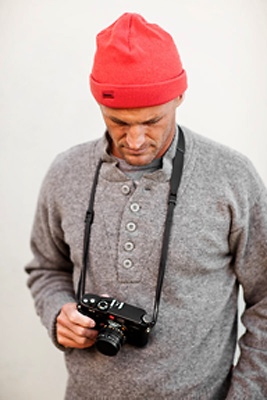
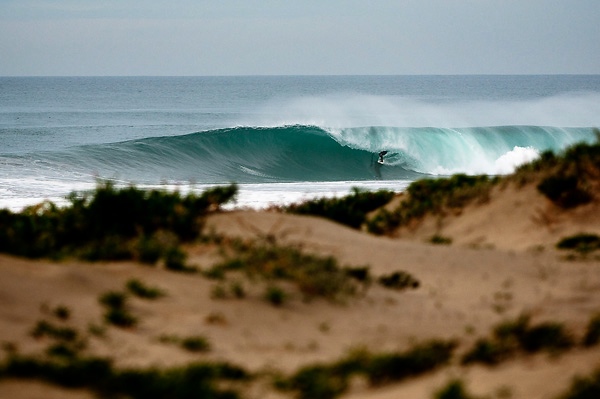

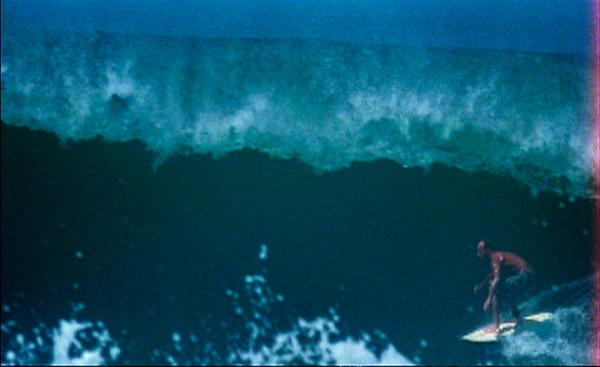


Wade Koniakowski Interview
Wade Koniakowsky is a talented California surfer/painter who is known for his vivid depictions of the ocean lifestyle. His work is shown in galleries all over the world and he recently collaborated with Dick Brewer on a series of board paintings. We recently spoke with Wade to learn more.
What was your childhood like growing up?
Lost in a fertile imagination. My mom helped channel it into some structured art instruction. And I drew incessantly.
What was the feeling you had when you first stood on a surfboard?
Floating, I suppose. It’s one of the more vivid recollections of my childhood. It was 1966. I was 12.
When did you get your first surfboard?
My first board was wooden. My dad took Tom Blake’s plans, which had been published in Popular Mechanics magazine, and modified them slightly. I learned from this that the kook boxes needed all that thickness for flotation. My dad’s version was smaller and thinner, but didn’t float well. Soon after, I got my first board—a Pop-Out. My brother and I bought it for $60 and paid the guy $5 a week until we paid it off.
Who did you look up to and admire when you were a young man?
Mike Doyle, Joey Cabell, Paul Strauch… guys like that. And a few older local guys.
Where were you educated?
Texas State University. I did a program that combined fine art and commercial art. It was a decent foundation for the years I spent in advertising and graphic design as well as my current pursuit of fine art.
Tell us about your wonderful paintings. What do you hope to evoke with them?
First, I want reach a broad audience; I want to appeal to anyone with an affinity for the ocean. I want it to evoke what the ocean evokes: tranquility, power, beauty, light, color and a connection to the lifestyles that revolve around the ocean.
Of all the interesting places you have traveled to, what place in particular stands out? And why?
These days, when I travel I like to paint and surf. One of the best places I’ve found for good surf and inspiring views is Hanalei Bay. A day of surfing and painting around Hanalei and the North Shore of Kauai in general is hard to beat. And thanks to a good friend, I have a very comfortable place to stay and work when I’m there.
What code or “golden rule” do you live by?
Life is a gift. Any sense of entitlement runs contrary to that.
Who or what inspires you?
Anyone who steps out and takes hold of all that life has to offer. Artistically, I’m inspired by early California art. I’m inspired by artists who make significant breakthroughs—like Jackson Pollock—or artists like Warhol, who doesn’t take it all so seriously. I’m inspired by artists who simply make a living at art. That’s an art in itself. I see so many people doing art and so few really making a living doing it. And I’m inspired by a lot of artists who are friends of mine. I get to observe them deal with life in the midst of pursuing their art.
What is the greatest thing you have learned in your life?
God is in control.
Do you have any regrets or wish you had done something differently?
Yes, but I’d rather not remind myself of them.
What are you most proud of?
My children.
What meaning does surfing hold for you and how has it changed your life?
Surfing is a teacher. It’s helped to show me my place in the universe.
What brings you the most happiness in the world?
Creating.
What is in your current quiver? What is your favorite board?
I’m down to one longboard—a 9’8” noserider—and a couple of mini logs in the 8’ range. Then, a bunch of old school mid-lengths between 7’ and 8’ as well as a couple boards in the 6’8” range. The board I ride most is a 7’ fatty tri, two plus one.
What’s your favorite meal?
Hole in the wall Mexican food.
What are you currently listening to on your iPod?
Edward Sharpe and the Magnetic Zeros.
What causes, projects, organizations do you support?
Surfrider and art education
What are you most grateful for?
Family and friends.
What’s next for Wade Koniakowsky?
We’re just finalizing a deal to open a new ocean art gallery with Aaron Chang in the Cedros Design District in Solana Beach.
Learn more about Wade Koniakowsky’s and his work here. All work is copyrighted by the artist.
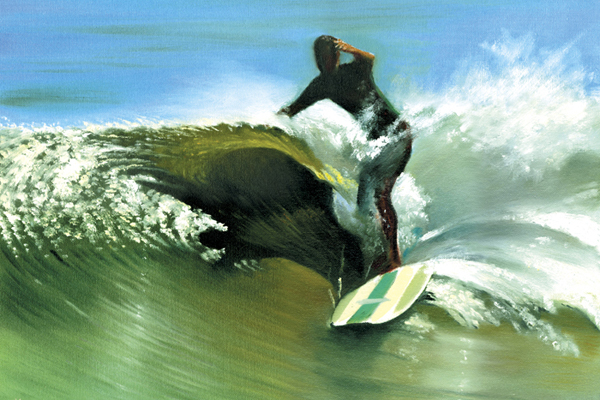
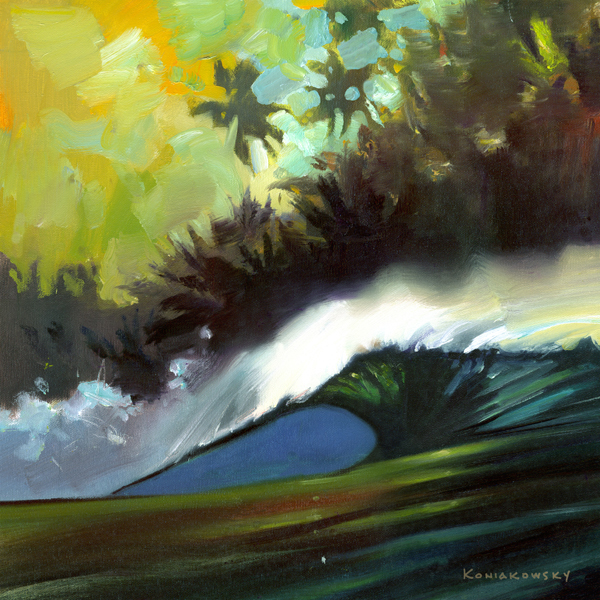
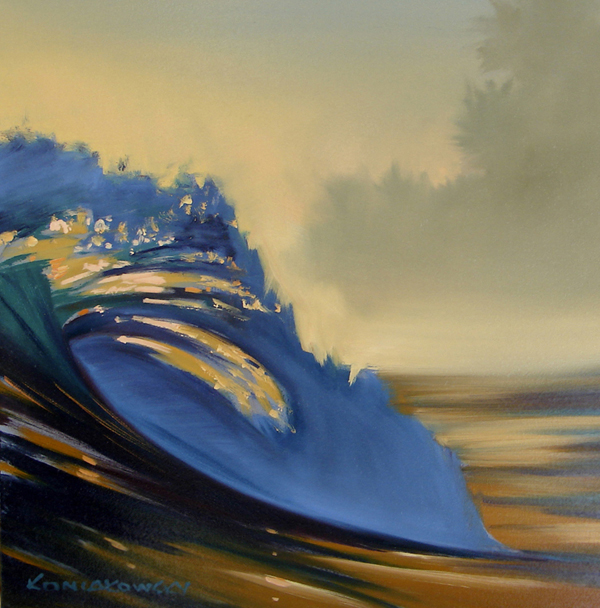
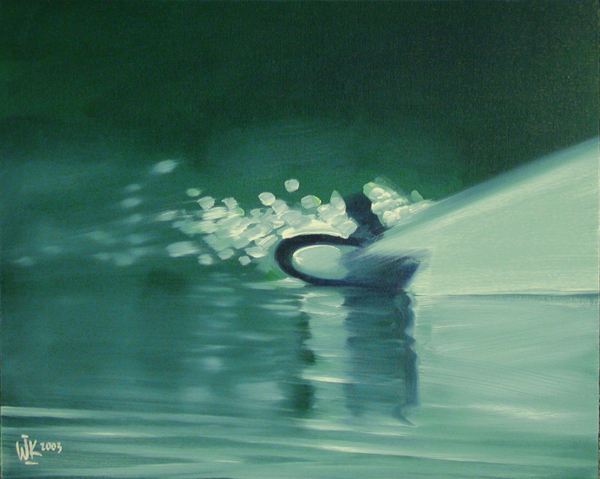

Richard Kenvin Interview
By Mary Mills
Richard Kenvin is a California surfer/filmmaker and the creator of the film Hydrodynamica. Kenvin’s roots are steeped in San Diego surfing history and he is a huge proponent of the Simmons’ school of board design. We were fortunate to be able to speak with him about his life.
What was your life like growing up?
We moved around a lot, but I had a good childhood. I loved nature and music and books. My mother was a beautiful English woman, and my dad was a mathematician and musician from Ohio.
I started surfing when I was nine years old. When I was a teenager, my dad started drinking heavily. My mom left, and the family fell apart. That was tough. My brother Peter and I moved out and lived on our own with some older surfers on Draper Street near Windansea. We were still going to high school. We were young—like 16. Lots of drugs around. It was 1978. My brother was a rock and roll prodigy and is an amazing musician. From that point on, it was the “School of Rock and Roll Windansea”. I took the proficiency test and got out of high school.
I lived on the North Shore in the winter of 1979 and in Queensland/NSW in the spring
of 1980.
When did you get your first surfboard?
In 1970. It was a red 6’0” round tail single fin with a Fins Unlimited (I think) Greenough-style skinny flexie fin. It said “Atlantis” on it. It was made by Dan Bridgeman for my friend Colin Brown, who turned me on to surfing. Colin has lived in San Francisco for years now and has been charging Mavs for a long time.
What was the feeling you had when you first stood on a surfboard?
Best wave of my life. Stood in the whitewater at the Shores and the wave hit a deep spot and reformed. I trimmed across this tiny wall on the red Atlantis. Unbelievable. Pure stoke.
Who did you look up to and admire when you were a young man?
David Bowie, Lou Reed, Iggy Pop.
San Diego surfers Skip Frye, Gary Keating, Tim Lynch, the Bridgeman brothers, Chris O’Rourke, Rex Huffman, Steve Lis, Jeff Ching, Henry Hester, Butch Van Artsdaalen, the Orloff brothers and Tom Ortner.
Late 60’s/early 70’s surfers Reno Abellira, B.K., Gerry Lopez, Jose Angel, Larry Bertlemann, Buttons, Stephen Cooney, Terry Fitzgerald, Ben Aipa, Bunker Spreckels, Jeff Crawford, Sam Hawk, Owl Chapman, James Jones, Jimmy Lucas, Jeff Hakman, Jock Sutherland, Michael Peterson, George Greenough …all those guys. And, of course, Miki Dora.
Jay Adams and Tony Alva for 70’s skating. Christian Hosoi is someone I look up to immensely and if you have not seen Rising Son you should.
What is the greatest thing you have learned in your life?
To trust God. To love and be loved.
Do you have any regrets or wish you had done something differently?
I have tons of things I would do differently … and plenty of regrets. But I can’t change the past. I have to live today as best I can. I regret being an asshole in the water many, many times. I wish I would have lived on Oahu from 1978 to 1983. Oh well, at least I got to visit.
What are you most proud of?
Any time I’ve helped someone. Reading, writing and learning without a college education.
What meaning does surfing hold for you and how has it changed your life?
In the film Chariots of Fire, which is about a runner who goes to Oxford, there is a scene where he expresses how running makes him feel. He says that when he runs, he somehow seems to feel God’s pleasure and joy at His creation. Surfing makes me feel that way. It’s hard to express—riding a wave puts me in the moment like nothing else. Just like Dora said… all that dry land shit just goes over the falls behind me—drugs and other crap took me away from surfing for a long time. Surfing is a huge positive force that helps pull me out of that stuff. There was a sticker that said, “Skateboarding saved my life.” I can relate. Surfing is a powerful affirmation of the positive side of life.
How do you think the world of surfing, especially in terms of the surfboards most people ride, would be different had Bob Simmons not died in the 1950’s?
Well, Simmons was building a boat and trying to bail to Western Australia and other zones to surf by himself. That was his dream. So maybe he just would have gone unnoticed in isolation, but he had already created major design breakthroughs. They were misunderstood and rejected for a number of reasons. The timing of his death had a lot to do with it. He died right at the birth of surf media. Bud Brown’s first film was released in 1953.
Anyway, the short version is that three things—big wave Hawaiian guns, single fins and noseriding—took center stage for design and performance after Simmons died. It stayed that way until Greenough came along and finally changed everything. Simmons had spent nine months on Oahu in 1953 and he did not like the board he had over there, surfing big Sunset on a dual finned planing hull and having the tradewinds get under the nose, etc. Simmons was planning to go back to the North Shore with a new set of boards, based on all that experience he had in 1953 over there, but he got killed in 1954. I talked to Pat Curren about this and Pat felt that Simmons probably had some really good design concepts ready for his next trip to the Islands, but he got killed so it never happened.
Simmons kept his boards at Peter Parkin’s place near Windansea. Parkin was the first surfer/skater. Started skating in 1947. Simmons always tried to improve everything from surfboards to ping pong paddles to boomerangs. So, sometimes I think had he lived, he would have improved skate wheels and trucks early on. Who knows? Simmons is still changing the world of surfing today, and he’s still stoking people out with his boards. Planing hulls are user-friendly and are really fun to ride, and fun is contagious.
What is your ultimate goal with respect to your film Hydrodynamica?
Finishing it is pretty high on the list. Beyond that, I think about a non-profit foundation dedicated to preserving the cultural heritage of surfing and skating. I hope the film puts some things into context. It’s one thing to make a bunch of cool boards and ride them and document them. It’s another to put Simmons and the rest of this story into its proper social and historical context. This stuff had a profound effect on culture worldwide, very similar to effects of art and music.
The music of the 20th and 21st century has its roots in Africa; board riding has its roots in Hawaii. I would like to help contribute somehow to help Hawaiian surfers preserve their surfing traditions and to acknowledge their cultural contributions to the world. The paipo and the alaia—those boards are the root of everything that became shortboard surfing and modern skating. Without Hawaii, there would be no surfing or skating or snowboarding.
What brings you the most happiness in the world?
Love.
When someone steals your stoke, how does that happen and what’s the best way to get it back?
Stoke burglars. I’m talking about being betrayed by people I helped and trusted, being used by and disrespected by people. Being spiritually beaten down by oppressive communal negativity. Being hurt by people. Well, I have to forgive them to get my stoke back. I have to admit where I was wrong. What part did I play? What can I do to make things better? That’s hard. I’m a selfish human and I need God’s help to be able to do that. Or, as my friend Geraldine tells me, “Keep your eyes on the prize. All the rest is bullshit.”
Who are some of the people you feel are shaping the path for surfing today?
Tom Pohaku Stone, Valentine Ching, and Buffalo Keaulana by nurturing and preserving true Hawaiian surfing culture. Skip Frye, Larry Gephart, Steve Lis, the Pendarvises (Steve and Cher) by creating, refining, preserving and staying true to San Diego design. Second generation surfer/shapers like Eli Mirandon, Timmy Patterson, Akila Aipa, and Daniel Thomson for bringing the past into the future and carrying on the legacy of their fathers. John Elwell for keeping the knowledge of the Simmons planing hull alive.
Carl Ekstrom—the one and only, once and future futurist, schooled by Simmons as a kid. Anna Trent Moore for preserving an oral history from her father, Buzzy Trent, and his friends, including George Downing and many more. Today’s big wave paddle guys like Twiggy and the Long brothers, Lyle, Derek Dunfee, Squirrel, Shane Dorian… the gnarliest of the gnarl those guys command full and total respect for doing what most of us don’t have the balls to do. Derek Hynd… for blowing all our minds. Tony Alva… still surfing and skating with full on stoke at 52 years old. Absolutely incredible. Jon Wegener has stoked me out a lot. Tom Henry Ciletti. Christian Beamish. The Joske family for bridging the gap that brought alaia-inspired boards to the rest of us. Scott Hulet at the Surfers Journal for giving a voice and venue for the many facets of surfdom. Dave Rastovich… just thanks for surfing, Dave… insane. Andrew Kidman. Alex Kopps. Ryan Thomas. Tyler Warren. Danny Hess. Stretch and all the Santa Cruz guys.
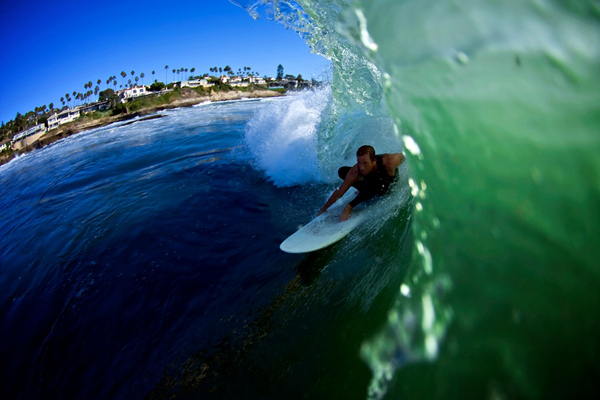
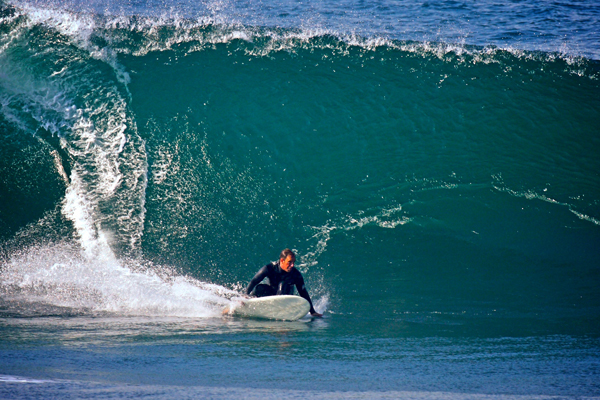
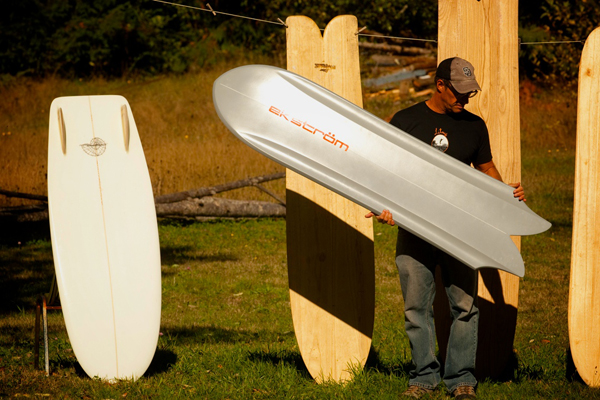

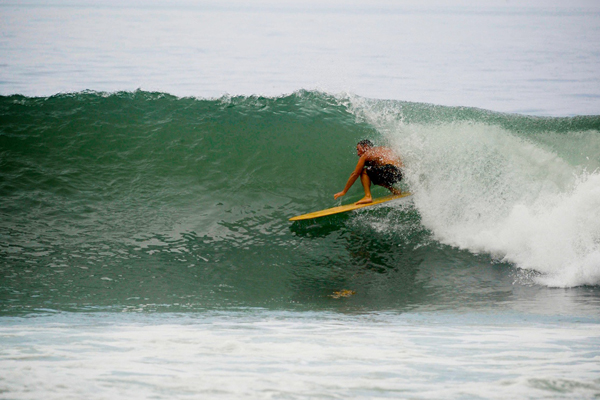
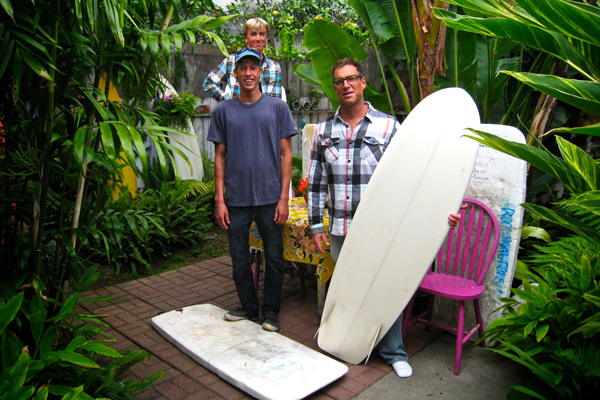
Jair Bortoleto Interview
Jair Bortoleto is a Brazilian surfer/photographer who is adept at capturing that elusive moment. He is well known for his talent and believes that everyday is an opportunity for him to become a better person. We caught up with Jair to find out more about his life.
What was your life like growing up?
I grow up in a suburb of São Paulo, far away from the ocean. My dad was a metallurgic worker and we had a simple life, but a very good one. My family used to go to the beach for vacation, but when I was little I hated the feeling of sand in my feet. Only after some years did I discover the pleasure of feeling sand between my toes.
When did you get your first surfboard?
On a family vacation to North Coast, my dad bought me a 5’8” thruster and I started to surf. I was around 9 or 10 years old. When I was little, those styrofoam boards were very popular around the area we used to spend vacations, and I used to belly surf with those things. It was so much fun. I only felt that again when I belly surfed with an alaia and fins.
What was the feeling you had when you first stood on a surfboard?
I can’t really remember the first wave, but I remember getting so happy when I went down the line. I can still feel the same rush in my heart every time I remember it.
Who did you look up to and admire when you were a young man?
I grow up as a Jehovah’s Witness. So my role model is Jesus and his father, Jehovah. They are my models to try to be a good man… even with all my faults.
How did you get involved in photography?
I always loved art class in elementary school, but never had an idea that I would really get involved with art. I start to travel the world when I was 18, and always brought a “point and shoot” camera with me to document everything. After my first trip to Hawaii, I showed some photos to some friends and all of them used to say that I was a pretty good photographer. I went to Boston to learn about jazz, art, real life. And I met some photographers and artists. One of them, a photography student named Tiffany Knight, gave me a black and white roll of film. I shot with it and after I saw the results, everything changed. I started to see the world completely in black and white! I looked at everything in black and white… even if colors are there. I decided to use more and more rolls.
What is your process for creating your art?
I’m not the kind of photographer that brings the camera always with me. I just don’t work like that. Actually, I wish I could, but I simply don’t work like that. I’ll see something and come back later to photograph it. Or I have something in my mind and then I bring the camera and shoot. I always like to think that each frame is a painting, and if I can get many paintings in one roll, then it’s all good.
Of all the places you have traveled to, what place in particular stands out and why?
I would say many places, but I just love Hawaii. Everything in that place makes me feel so good. After I came back last time, it makes me feel so much yearning. It’s a word in Portuguese that people say that you can’t really translate. The word is “saudade”. Saudade is that feeling when you miss something so bad that it really hurts you. You can feel real pain in your heart. I feel saudade from Hawaii, and just like Rick Kane in the North Shore movie: “One day I will came back to the North Shore”. That’s what makes me feel good—the memories and the chance to come back one day.
Who or what inspires you?
In photography, I would say Cartier-Bresson. He was the best and, to me, still the best photographer ever. Also, surf photographers like Leroy Grannis, Andrew Kidman, Kyle Lightner, Thomas Campbell, Joe Curren. Most of the 60’s and 70’s photography.
What is the greatest thing you have learned in your life?
Try my best to be humble. We are surrounded by so many egos that we always need to look into ourselves and try to be humble. Also to love. The world is such a crazy place right now, that most people forget to love. I forget to love sometimes. And I’m sorry to all that I made feel bad or unloved.
Do you have any regrets or wish you had done something differently?
Oh, yeah… many regrets and I wish I could go back in time and change it all.
What are you most proud of?
My relationship with God. Also, I should say my book, Alma Santista (published in 2007 to create and curate the Santos SurfArt exhibitions—especially the second one). Showing my work in Japan for the Greenroom Festival 2009.
What meaning does surfing hold for you and how has it changed your life?
Surfing was a dream when I was a child. I was away from the ocean, and it was all about vacation time, magazines and some stuff on TV. So, having a chance to make images related to surfing is like living a dream. The act of surfing is something hard to describe. Most people call it an athletic thing and stuff, but surfing is more like being in touch with nature. It’s like being on another dimension, that all that matters is a wave, the board and you. Of course, friends around, sun… but the feeling of surf alone on a wave is unique and can definitely change someone’s life forever.
What brings you the most happiness in the world?
A smile. Most of my time, I was a worried person. But today, I try to smile more, and don’t close any door that it can’t be opened again. We should all smile non– stop. (Laughs)
Who are some of the people you feel are shaping the path for surfing today?
Richard Kenvin with the Hydrodynamica thing. It’s so old and so new at the same time. All this new/old movement is so good for surfing and opens so many paths in life that are nice to see. It is nice to see the new era of surfing on tour. I would lie if I say no. That kid Gabriel Medina is incredible and for sure is one of the top scientists on surf.
What is your favorite board? Your favorite surf spot?
I have my boards that are special. I have my new signature model, shaped by Felipe Siebert. It’s a 5’8” hollow wood keel fish. I love surfing close to home— walk all the way to the beach, surf, and come back home. It gives me so much pleasure.
What’s your favorite meal?
Brazilian food. I love barbecue with friends. Beer. Chocolate.
What are you currently listening to on your iPod?
I’m listening a lot of Bön Iver, William Fitzsimmons, Neil Halstead, The Mattson 2, Ray Barbee. Also, old stuff like Bob Marley, Lynyrd Skynyrd, Pink Floyd. I love jazz – everything… like John Coltrane, Chet Baker, Monk, Miles Davis.
What causes or organizations do you support?
Anything related to surfing. I’m one of the Jehovah’s Witnesses, so we try to keep busy on talking to people about God’s Kingdom.
What are you most grateful for?
Life. To be able to see a new day. Waking up to see the sun shining. To see birds flying above the ocean from my window.
What’s next for Jair Bortoleto?
My main goal is always to be a better man—make less mistakes and choose the right paths in life. I want to keep taking photos. I’m not that active anymore, but continue taking photos with my eyes and soon will be on film. And Hawaii always will be in my future. I really want to go back.
Find out more about Jair Bortoleto at his blog here. The Bortoleto Keel Fish shaped by Felipe Siebert can be seen here.

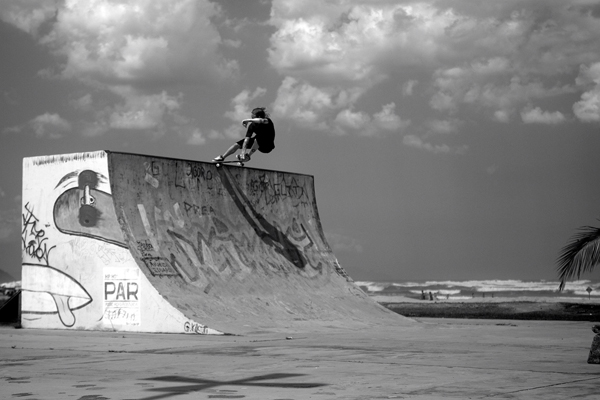
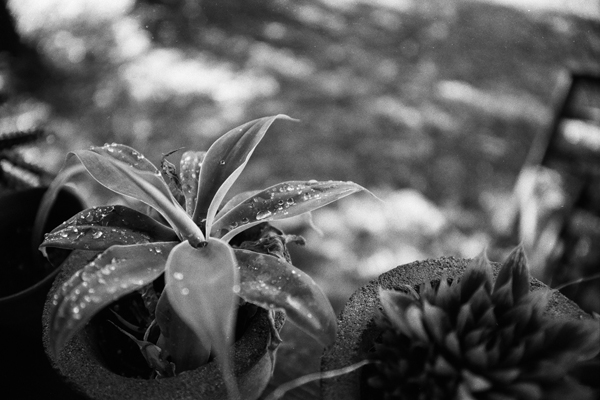
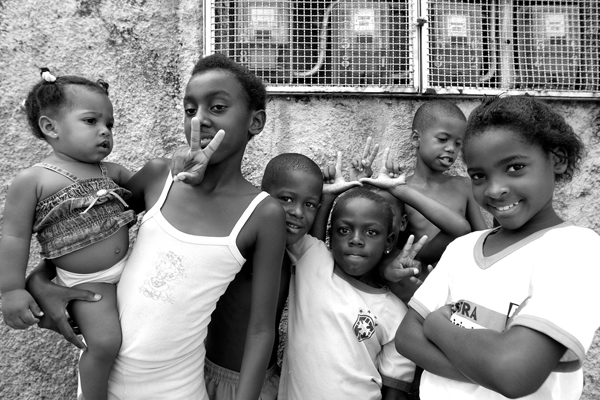
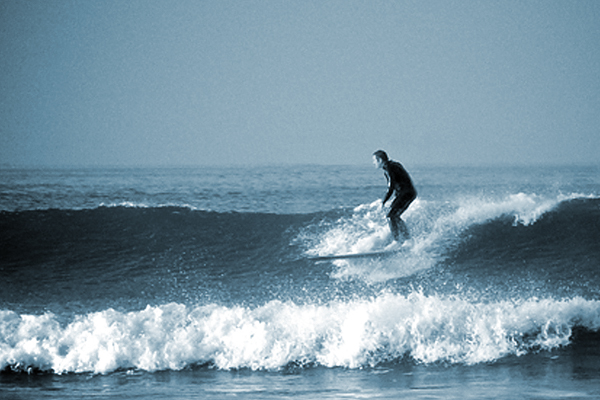
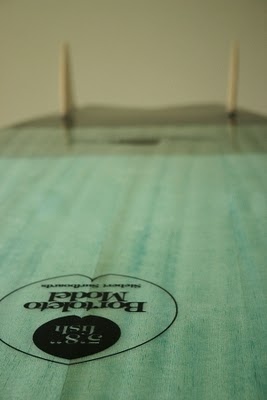
Susan Wickstrand Interview
Susan Wickstrand is a talented surfer/artist who creates colorful ocean-focused collages that combine photography, artifacts, and painting. Her work is exhibited internationally and has recently collaborated with photographer Art Brewer on a series of paintings. We spoke with Susan to find out more.
What was your life like growing up?
Pretty charmed in the sense that my parents are still married going on over 50 years and I lived in La Jolla. We’d spend time together going to the beach or tide pooling at Hospitals. Then, we’d have a picnic on the grassy area above Hospitals with my grandmother, Grace. My favorite pastime was collecting shells, crabs, rocks or honestly daydreaming up in the clouds trying to find as many shapes, things, pets, people as possible.
When did you get your first surfboard?
I’m embarrassed to say. Honestly, not until six years ago when I started dating my now husband, Kevin Roche, and we’d spend time going to 25th Street in Del Mar with our friends. I grew up watching Peter King, Drew Littlemore, David Eggers, PK and RK do their thing as surfers at Windansea, and it was fun. Little did I know how good they were at the time; I just thought that everyone naturally ripped.
What was the feeling you had when you first stood on a surfboard?
“Holy shit! This is fun!” One day last summer, I had my friend Sam take me out with my goal to catch as many waves as possible and to get my first perfectly clean wave. Sam shadowed me in the water, letting me know when to paddle and where to be, sacrificing her entire morning to help me meet my goal. Well… success! I paddled as hard as I could when she said and down the face I went. So much fun!
Who did you look up to and admire when you were younger?
I really admired my Swedish grandmother, Grace Wickstrand. She was fearless, outspoken, loving, talented, a missionary, an amazing cook and an artist. She used to live in Calcutta, India during the 1920’s. She also lived on a reservation as a missionary with the Navajo Indians teaching some rather mischievous boys. My grandmother taught me to love strong, to follow your passion and to care for the ones around you. Her steely core and faith that grounded her grounds me to this day. She was my “Amazing Grace” and my daughter’s middle name now.
How did you get involved in art?
On a whim. It was always the “easy A” class to take. I never really painted much growing up—did things more with my imagination than paint. I was enrolled in the Entrepreneurial Program atUSC doing well grade-wise and all, but I was miserable. I felt like I was living a lie. During the spring break of my sophomore year, I had an epiphany that I wanted to become an artist. I announced it to my parents who said, “That’s great, but what have you painted?” I assured them that I just knew I could do it. They assured me with a tuition like USC that the four years of studio work would be done in the two remaining ones in the budget. The University purchased one artwork a year from a promising student, and after winning that honor and money for two consecutive years, I starting thinking, “Hmmm, maybe I can make money doing this.” I sold out my senior show and never looked back.
What is your process for creating your art?
I think that all things are created twice. First, we conceive them in our mind’s eye. Something sparks our imagination. Then… pop!… I have to create something. Almost everything I create is first completed in my mind’s eye, and I just follow the path to that place. It’s like a roadmap I follow in my brain. Even when I use photos for reference to oil paintings, I still put a twist on things and make it my own. Then, I’ll go back and refine the artwork to match it to what’s in my mind’s eye.
Of all the places you have traveled to, what place in particular stands out and why?
Italy. I studied there for a semester abroad and chose Florence. I had never been to Europe but I felt a strong pull to Italy to study photography (with one of Ansel Adams’ assistants) and painting with Syracuse University.
Who/what inspires you?
Truth and beauty in lyrics, photography, film, people, architecture and artwork. I’m a huge fan of painters April Gornik, Darren Waterston, Caio Fonseca, Gerhard Richter as well as photographers Peter Beard, Irving Penn, Alfred Steiglitz, Art Brewer, Jeff Divine and, of course, Kevin Roche. I’m a visual junkie.
What is the greatest thing you have learned in your life?
I think it would be “Never give up!”
Do you have any regrets or wish you had done something differently?
To be brutally honest, for a time I thought that a divorce some time ago was going to be my biggest failure in life. Divorce really sucks, especially when you’re an oversensitive like myself. Having parents that are still happily married can be a lot to live up to. However, after putting the pieces back together, I learned that I am much stronger than I had ever thought I was and far more resilient. If at that defining moment, I had not chosen to pursue my deep-seeded dreams of having a family and pursuing my art, that would have been my biggest regret.
What are you most proud of?
Our daughter, Chloe Grace. She’ll be the best collaborative piece of art that I’ve ever had the honor to help create. She’s a character; she’s strong and independent already! This is my most important role in my lifetime—being her mom. I want to get it right or much else won’t matter. She and
I will most definitely enjoy surfing together with “Daddy”.
What meaning does surfing hold for you and how has it changed your life?
Surfing has always been in the background of my life in one way or another. I have always been an avid fan and now I am a humble student. I think since I’m married to an avid surfer, surf photographer and we live in Encinitas, surfing is more in the foreground now. More of my artwork is now influenced by it than ever before. Surfing has been seeping in through the collages and some of the oil paintings. I think the notion of surfing has changed my life for the better and connected me with such amazing friends, new friends, other artists, photographers and places to travel.
There is such elegance and beauty in the sport when it’s done well that it can stop you in your tracks. That sequence from Thomas Campbell’s Sprout of the “ladies that glide” kills me. I don’t think I started adding India Ink to my collages until I saw the artwork images for the movie Sprout. It definitely influenced me and I hope to meet Mr. Thomas Campbell someday. My hats off to Belinda Baggs, Monica Rose, Ashley, Maureen and Kassia Meador for making it look like all ladies were meant to walk on the water. Simply gorgeous.
What brings you the most happiness in the world?
My faith, family, friends, art and the ocean… in that order.
Who are some of the people you feel are shaping the path for surfing today?
Young gun filmmaker, Cyrus Sutton—so talented and inventive. Local ripper Ryan Burch. Have you ever seen Ryan Burch surf in person? Simply unbelievable. Also, watching Kelly Slater take a wave at Alligators on the North Shore (with no one else out) just connect one wave after the other like a madman was pretty mind-blowing. I still get a thrill watching our local heroes, like Machado and Tudor, surf out at Cardiff Reef.
What is your favorite board? Your favorite surf spot?
My favorite board is my 7’11″ fun board. My favorite spot Barneys because I’m just a greenhorn and the sandy bottom is a softer landing for my 42 year old ass.
What’s your favorite meal?
Sam the Cooking Guy’s “Kate’s Mom’s Salmon”. It’s a mirin/ginger marinade for salmon that’s out of this world. That with lemongrass rice and roasted asparagus, or steamed artichokes with curry, is my favorite.
What are you currently listening to on your iPod?
One would shudder. Let’s just take one day—like today after painting for five hours. We had Fugazi, Goldfrapp, Zeppelin, Beck, Tom Petty, Band of Horses, Dr. Dre., The Raconteurs, The Roots & Cody Chestnutt, and winding it down with some Anya Marina, Tristan Prettyman and Bob Marley.
What causes or organizations do you support?
San Diego Coastkeeper, San Diego Surfrider, Scripps Cancer Center and Carla Mann’s Bright Future Foundation (which provides college scholarships for at-risk youth). Environment, health and education are always worthy causes for our family.
What are you most grateful for?
This amazing gift called life—may I do it justice.
What’s next Susan Wickstrand-Roche?
Lots of art shows! With our daughter now in preschool, I feel like I’m just getting warmed up again, ready to kick it up a notch. Lots of work left in me to create. Next up, “Blue Realm” group show on Sat. May 15th. I’m ready to show the town I grew up in, for the first time really, what I can do. I’ve painted for over 20 years, but I’m just getting started.
All images are copyright, Susan Wickstrand. Find out more about Susan here. Information about the Blue Realm group show is here.
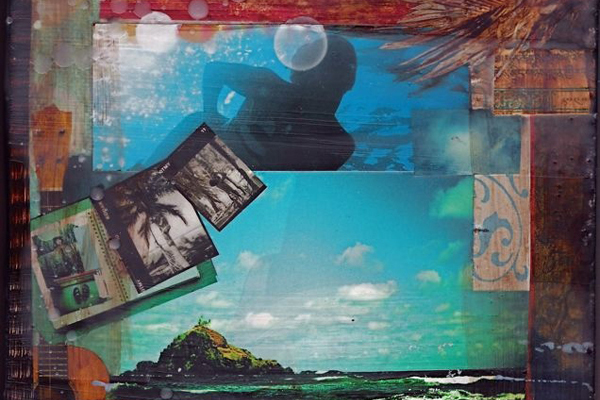
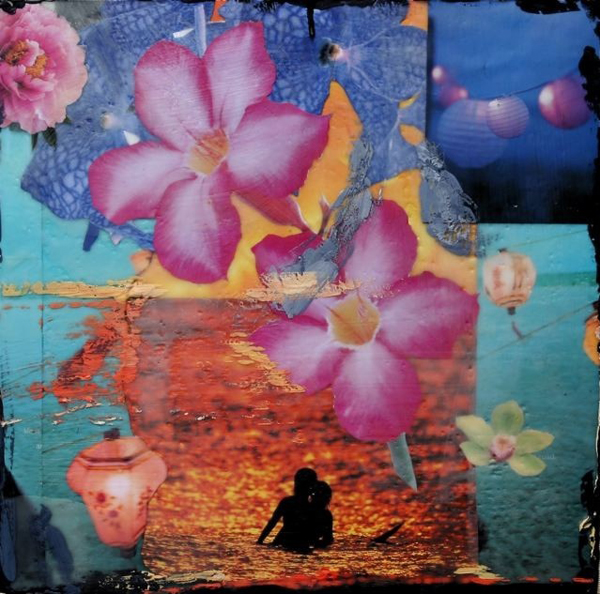
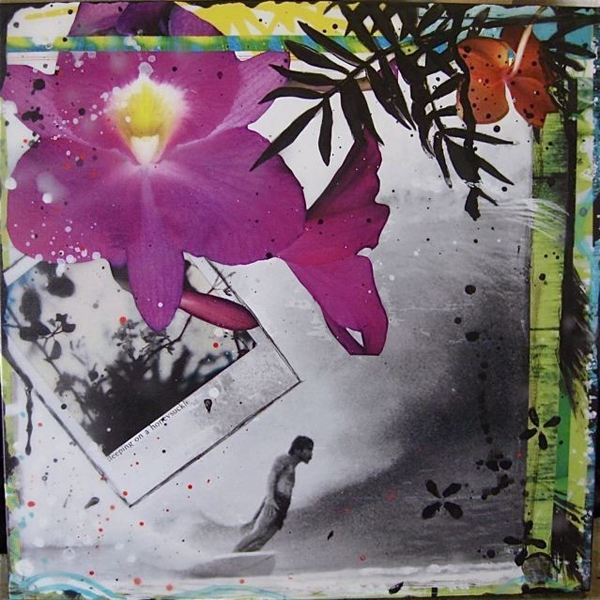
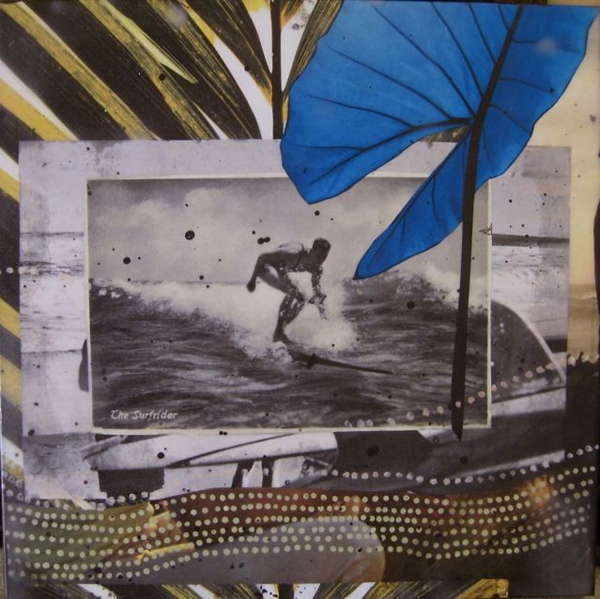
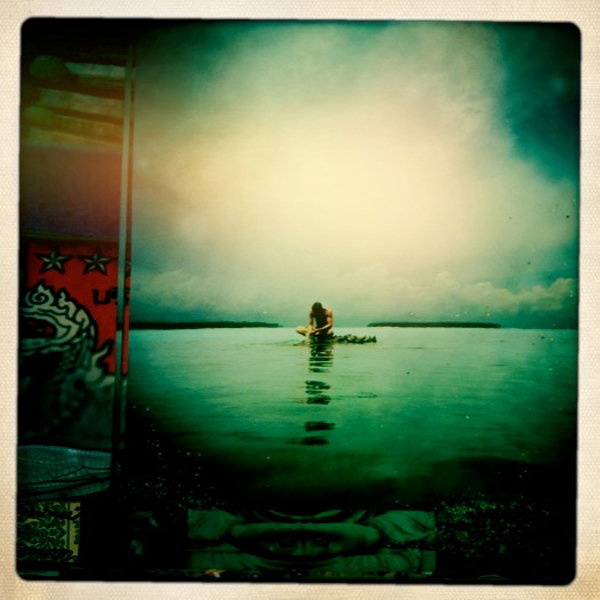
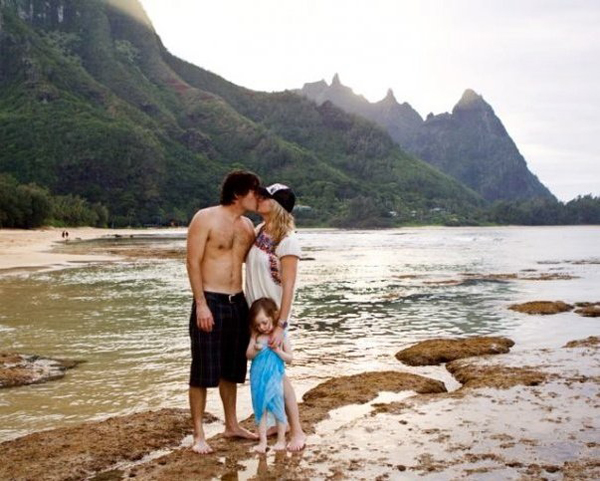
Mike LaVecchia Interview
Mike LaVecchia is a Maine surfer/shaper who is the co-founder of Grain Surfboards. Utilizing the latest technology, LaVecchia creates hollow wooden boards that possess both beauty and function, attracting surfers like Kassia Meador and Dave Rastovich. We caught up with Mike to learn more.
What was life like growing up in Maine?
I actually grew up in New Jersey, and only came to Maine about five years ago by way of Vermont. We lived in a suburban town not far outside of NYC. It was a good place to grow up, lots of friends around, plenty to do. We spent most of our time either riding around on BMX bikes or skating little rickety quarter pipes that we built. As we got older, we spent more time in the summer down at the shore, and lots of time in the winter in Vermont. So, we really learned to enjoy every season for what it had to offer.
Who did you look up to and admire when you were younger?
I guess that would depend on which time of my life we’re talking about. I’m sure the list would include Hulk Hogan, Craig Kelly, Tony Hawk, Bjorn Borg, Uncle Jimmy, my dad, Jake Burton and John Candy.
When did you get your first surfboard?
About nine years ago. It was a used Yater Spoon.
What was the feeling you had when you first stood on a surfboard?
Pretty indescribable really—not so much when I first stood on a surfboard, but the first time I actually felt myself picking up speed and going down the line. I always had a feeling that once I started surfing, it would change the course of my life. That first wave confirmed it.
Where did your interest in wood-based surfboards come from?
I’ve been sailing for most of my life and, in recent years, working on and around boats as a captain, boat builder and sail maker. I fell in love with wooden boats early on… maybe because they were the only things I could afford. To own a wooden boat, you either have to be handy or wealthy; I knew I could learn to be handy. One of my favorite things to do was to check out boats and how they were constructed.
One day, while I was replacing the deck of a boat, I began thinking about how I could take some of the different techniques used in building boats and transfer them to surfboards. Boat styles, designs and constructions vary from region to region around the world. I thought, “How cool would it be to build surfboards in different regions of the world (or even just the US) using local woods and local techniques?” In the Northeast, we had Northern White Cedar, and what made it such a great wood for boats made it a great wood for surfboards.
What is your process when creating your boards?
Like most boards, they start as an idea. That’s pretty much where the similarities in the process end. We translate our ideas carefully into a 3D model. In the computer, we’re able to tweak the shapes, send images to our customer for their input or gather other surfers and board builders around to comment on all the design elements.
Our boards are hollow, and building them is very much like building a small (or at least thin) boat. Cedar is lightweight and strong, but is heavier then other common woods used in surfboards, such as balsa. We build our boards around an internal frame that comes from the 3D model and which defines just about the entire shape of the board, the outline, rocker, deck, bottom contours and most of the rail shape. Starting from the bottom up, we use a combination of techniques, many of which are derived from different boatbuilding methods. A combination of wide, book-matched planks go on the top and bottom of the board with special strips used around the rails to fill in the area where the top and bottom can’t meet.
We buy rough sawn lumber from mills here in Maine and mill out the planks, rail strips and blocking ourselves. Each step leaves an offcut, and that offcut is used to create the next part down the line. The whole method creates as little waste as possible—most of which goes to mulch or compost. Compared to a chambered balsa board, where the insides are completely turned to dust, our boards use about one-third of the material.
Aside from the design phase, each builder here at the shop (either John, Brad or myself) takes each board through the entire process of building, shaping, glassing and polishing. This helps to keep things interesting for all of us, plus allows us to get to know every little knot or grain change and how it might effect later steps.
Who are some of the people riding your boards?
For starters, all of us at Grain ride wood boards pretty much every session, but that might be obvious. Last autumn, we had Kassia Meador, Mikey DeTemple and Scotty Stopnik trying out our boards at our home break here in Maine. When they weren’t surfing, they hung around the shop for a week building their own boards— Kassia a 5’4” fish, Mikey a 5’0” Simmons-inspired twin fin and Scotty a 4’5” Paipo. We designed a slim little funshape with Layne Beachley specially for her home break in Australia and Dave Rastovich has a 6’9” mini-gun that he also helped us design. He and my business partner, Brad, built it together on the front lawn of the Billabong house on the beach at Pipeline during the Triple Crown. We recently heard that Donavan Frankenreiter surfed it not long ago at Sunset.
It’s funny that most of the pros that are riding our boards actually built them themselves. Helping people build their own boards is something that we’re really pumped on. So aside from everyone who is surfing the boards that we built here in the shop, there really are hundreds of people that are surfing Grain boards that they built with their own hands.
Of all the places you have traveled to, what place in particular stands out? And why?
Having only been surfing for a relatively short time, my surf travel is limited to most of the East and West Coasts, and Costa Rica (where a good friend used to live). I was lucky to have great job with Burton Snowboards back in the 80’s and 90’s, and that allowed me to travel around most of the mountainous regions of the U.S., Canada and some of Europe. I also did a bunch of traveling while working around boats, up and down the waterways of the East Coast (from Down East Maine to the Keys, the Caribbean, Gulf of Mexico and Panama Canal). The places that stand out the most seem to be the more rugged landscapes where the mountains come down to the sea, places like the British Columbia and Ireland. Life seems simple, but everything has a purpose.
What is it that makes you such a nice person? What code do you live by?
Hmm, some people say I’m overly sympathetic. I’m the devil’s advocate. I come from a large family, have been lucky to be surrounded by the best friends one could have. I’m community-based. I love companionship; I do best when everyone around me is happiest. I don’t know really. I’m an idea guy. I thrive on enthusiasm.
Who/what inspires you?
I’m inspired by hope and optimism, I guess—the idea that things continually improve and evolve. I’m inspired by people who don’t set limits on their knowledge, and by my friends and brothers who are all so talented.
What is the greatest thing you have learned in your life?
To accept how people look at situations differently. To be tolerant of people that might not agree with your point of view.
Do you have any regrets or wish you had done something differently?
I wish I stood up for myself more in high school. My revenge is knowing that most of my classmates are still living in New Jersey selling insurance or analyzing computer data.
What are you most proud of?
That I knew when to say “when” with each transition in my life. That I never followed a path past the point of unhappiness.
What meaning does surfing hold for you and how has it changed your life?
Right now, surfing has filled a big void in my life. I’ve always been happiest when I’m close to the water. I’ve learned that it doesn’t really matter what type of vehicle I’m on. Surfing has helped to confirm that life does not need to be filled with possessions, that the simpler I can exist, the happier I’ll be.
What brings you the most happiness in the world?
An egg sandwich, coffee, and a view of the water.
Who are some of the people you feel are shaping the path for surfing today?
Anyone really who is thinking outside the box and trying new things: Tom and Jon Wegener, Tyler Hatzikian, Scotty Stopnik, the Malloys, Richard Kenvin and Cyrus Sutton are just a few that come to mind.
What is currently your favorite board? Your favorite surf spot?
My 12 footer on a chest high day in front of the Nevada at Long Sands.
What’s your favorite meal?
Depends on who makes it. If I’m making it, spaghetti with meat sauce. If it’s my mom, meatloaf with mashed potatoes and peas. If I’m going out, maybe pad thai or a burger with fries.
What are you currently listening to on your iPod?
My iPod mostly sits on a shelf collecting dust. You might say that technology frustrates me. If I were to put some music on, it might be Crosby Stills and Nash, The Doobie Brothers, The Shins, Nick Drake or Frank Sinatra.
What causes, projects, organizations do you support?
Most of the support I lend has always come in the form of action. That’s what led me to work with non-profits like the Lake Champlain Maritime Museum and the Gundalow Company—encouraging boatbuilding and hands-on education, and teaching maritime history and ecology by way of traditional sailing vessels. Through Grain Surfboards, we’re able to promote and practice environmental awareness, sustainable forestry and full lifecycle thinking. I look up to and admire organizations as big as Sea Sheperd Society and as small as Vermont Family Forests.
What are you most grateful for?
The experiences we had as family growing up and how those experiences introduced me to the life and the friends that I now have.
What’s next for Mike LaVecchia?
Eating some lunch, answering some emails and hopefully going for a paddle.
Find out more about Mike LaVecchia’s company Grain Surfboards here. Photography courtesy of Nick LaVecchia.
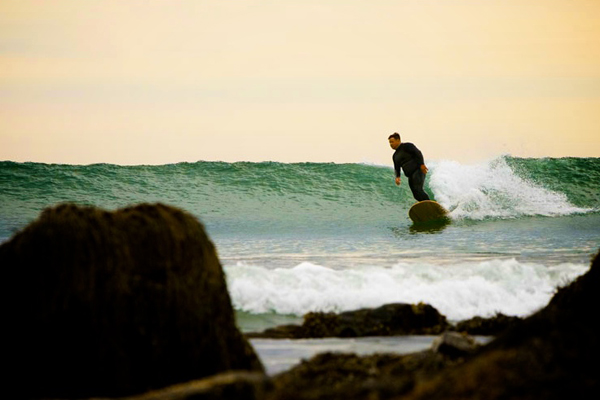
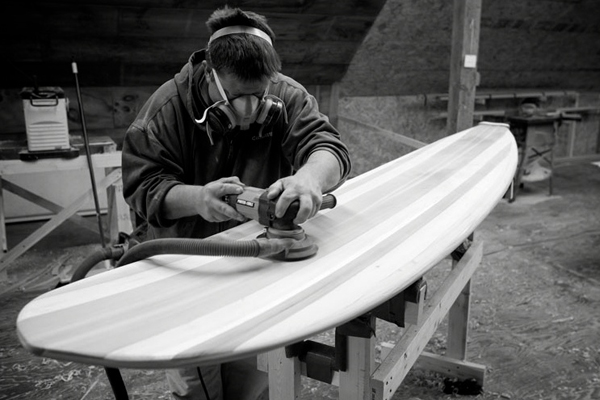
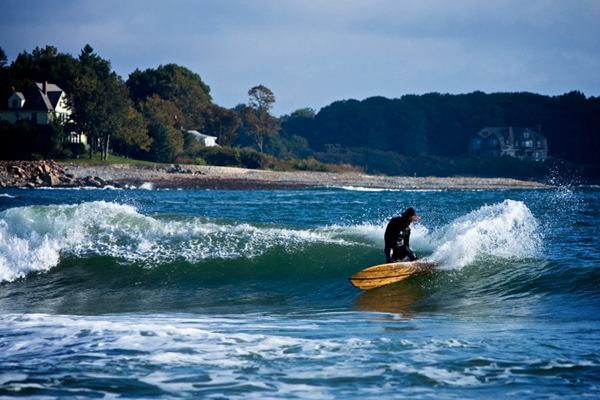
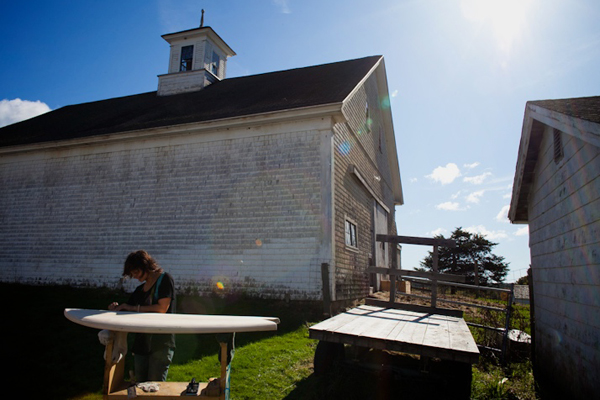
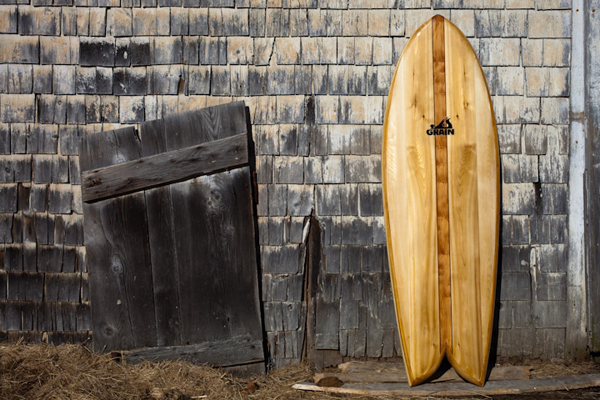
Margaret Yao Interview
Margaret Yao is a California surfer who is also the general manager of Bing/Jacobs surfboards. Her attitude in the water and in life is to make every moment count. We recently spoke with Margaret to find out more.
What was your life like growing up?
I grew up in Southern California, but nowhere near the ocean. I was raised in Arcadia, a small suburb near Pasadena. My parents immigrated from Taiwan, so naturally education was a priority. I also took to competitive swimming around age 11 and learned to love sports.
When did you get your first surfboard?
During my sophomore year at UCLA, my best friend and I decided we would get a couple surfboards and learn to surf. So at age 20, I started surfing. We checked out a couple surf shops in the area and finally settled on a 9’0” Wave Tools for her and a 9’0” bright yellow, late 80’s Infinity for me. The board was probably 3 ½” thick; it was a monster.
What was the feeling you had when you first stood on a surfboard?
My friend and I were teammates on the UCLA water polo team, so when we started to learn surfing, the paddling part was a cinch. Unfortunately, the standing up part wasn’t so pretty. I think on our first go-out, we paddled for the same wave and ended up crashing into one another. So, within a matter of seconds, we had experienced our first wave, our first crash and our first surfboard dings! It was disappointing, but I wasn’t discouraged and eventually I got the hang of it. And I definitely learned the “one person to a wave” rule really quickly!
Who did you look up to and admire when you were younger?
Definitely my parents for all the challenges they faced building a new life in a foreign country. My teachers and professors for the inspiration they instilled in me to enrich my own mind and continue to learn throughout life. My coaches for pushing me when I wanted to quit. And Hap Jacobs, not only for his kindness and wisdom, but for introducing me to a love of surfboards.
How did you get involved in the surfboard business?
I’d been surfing for a few years when Hap Jacobs invited me to be on his team. It was such an honor. One day, when I dropped by to talk about my next board, he told me he was retiring and introduced me to the guy who would be taking over his business and factory. His name was Matt Calvani. I instantly remembered his face because I had surfed the same peak at El Porto with him just days earlier and he didn’t once glance my way or give me the time of day! I was pretty sure this wasn’t a good thing, having to order my boards from this rude fella. Matt would prove me wrong over the next couple months and eventually he asked me out. Those were some of the happiest days of my life.
But sadly, those days came to abrupt end when my dad passed away in a fatal car accident. I was 25 and my little brother, Wes, was only 14. My life felt like it had unraveled. I decided to take a leave of absence (from my job) and move home to live with my mom and little brother. Meanwhile, Matt always checked in to see how I was doing. Matt’s support was probably the most critical part of my recovery and ultimately led to my biggest life change.
He had moved into Hap’s factory and was building surfboards for the Bing, Jacobs, Lance Carson and Rick Surfboards labels. Board orders were flooding in, but he was slowly drowning from the administrative side of the business. I had been a business consultant for four years, so getting a little startup surfboard business organized and running efficiently was definitely within my abilities. So, I agreed to help him out for four to six months while I prepared for my exam and filled out applications (for business school).
My first order of business was to purchase a computer and set up a small office in the factory. Before we knew it, it had been six months and it was time to take my exam and start my graduate school applications. But something had dramatically changed. It was a no-brainer; I threw out my applications and embraced the foam dust!
Of all the places you have traveled to, what place in particular stands out and why?
The first big surf trip Matt coaxed me into taking with him was to Tavarua, Fiji. At the time, I was strictly longboarding and was nowhere near ready to surf the kind of waves they had there. Matt shaped me my first shortboard—a 6’4” that was airbrushed pink with a flower on the deck. This was Matt’s sixth trip to Tavarua, so he gave me the rundown on how things operated. Keep in mind that I could barely paddle a shortboard into a wave and get to my feet.
So, the first day on the island, I’m standing with a group of all guys with my pink shortboard under my arm, waiting for the boat to pull up. We’re the last ones to get in and, after Matt gets in, the broad-shouldered Fijian driving the boat cracks a huge grin, showing two missing teeth, and says with surprise, “Hey lady, you gonna surf Cloud Break???” I could’ve burst into tears if I hadn’t been so mortified by embarrassment. With what little shred of pride I had left, I reluctantly sulked into the boat and awaited my doom.
We pulled up just outside of where the wave broke just to see a set wave crash onto the reef and send six feet of feathering spray into the air. I WAS TERRIFIED. Everyone hopped out of the boat frothing to get into the lineup. A few more dreadful minutes of silence passed while I watched everyone catch amazing glassy left-hand peelers that looked so fun. Then, Mr. Smiley Face finally broke the silence, “Well, lady, are you going to surf?” I don’t know what came over me at that instant, but I grabbed my board and leash, and hopped into the water and paddled over to the lineup.
I went for a few small ones at first and got pretty battered by the lip of the wave; it just came so fast and so powerfully I barely had time to react. I probably sat for a good hour outside trying to work up the nerve to go for a bigger wave. Then, the whistle for everyone to paddle in sounded and the lineup was starting to empty. I had run out of time and was starting to feel pretty defeated when suddenly this wave started coming right for me. Maybe it was beginner’s luck, but somehow I had managed to paddle in, get to my feet and then the wave opened up perfectly and it was pure euphoria. Everyone in the boat cheered when I kicked out and paddled back to the boat. I’ll never forget that day at Cloud Break.
Who or what inspires you?
The strength of my family in overcoming the challenges we’ve faced. People who pursue their passions despite the obstacles that lie before them.
What is the greatest thing you have learned in your life?
Making every moment count. Some have accused me of being a “busy body,” but I just can’t bear the thought of a wasted moment.
Do you have any regrets or wish you had done something differently?
I could say that I regret not discovering surfing earlier in my life, but I feel too blessed to have even found it at all and to be able to build my life, love and career around it. So, no regrets.
What are you most proud of?
Making the then difficult decision to leave the corporate world and pursue a different career path in an uncertain surf industry. A lot of people tried to talk me out of it; they said that my job was stable and so was the paycheck, that if things didn’t work out in the surf industry, it would be super hard to come back. But if ever there was a calling, this was it.
What meaning does surfing hold for you and how has it changed your life?
Surfing started out as a hobby, but along the way, it evolved into a lifestyle and then a saving grace during a rough time in my life. Now, it’s become my livelihood and life’s passion.
What brings you the most happiness in the world?
The comfort of knowing that my family is safe and happy, that my world is in balance and that I’m making the most out of the precious time I have on this Earth.
Who are some of the people you feel are shaping the path for surfing today?
There are too many, but I’ll just name a few that come to mind. I know I’m biased, but of course Matt Calvani, who has such a deep dedication and love for the craft of board-building and despite his 20 years in the business, surprises me with his enthusiasm for new designs and constant refinement of existing designs.
And surfers like Chris Del Moro, who is so talented in so many different facets and has made a name for himself in the professional surfing arena without having to compromise on the kinds of boards he rides or the ideals he stands for. Also, filmmakers Tiffany Campbell and Andria Lessler for creating a beautiful film (Dear and Yonder) that brings awareness to the history, power and beauty of women’s surfing.
What is your favorite board? Your favorite surf spot?
It’s like asking a girl what her favorite pair of shoes are. My “go to” longboard that I bring with me on practically every surf trip is my single fin, rounded pintail Jacobs Traditional Noserider. It works in just about every “longboardable” type of wave. But lately, I’ve been obsessed with quad fishes.
What’s your favorite meal?
Sushi.
What are you most grateful for?
Being able to love what I do, make a living at it, travel the world and all the while sharing every moment of it with my best friend.
What’s next for Margaret Yao?
Gearing up for another busy summer, squeezing in a quick surf trip and then Matt and I have finally made the time to tie the knot this Fall. We figured if we could work, surf and live together all these years, it’s definitely meant to be.
Find out more about Margaret Yao here.
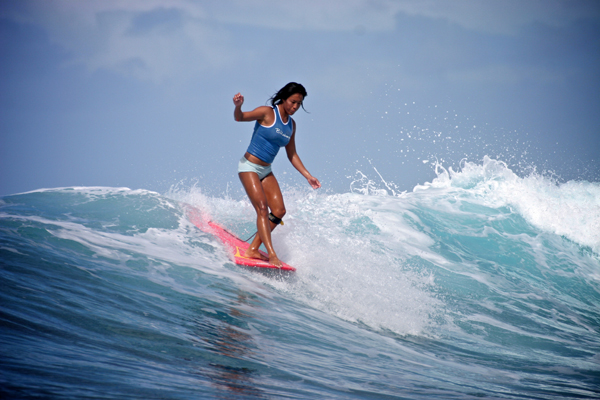
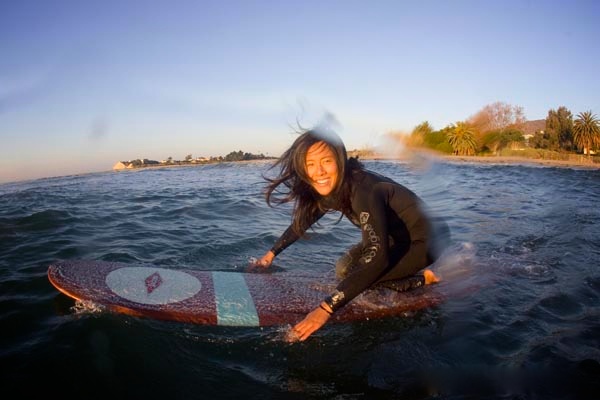
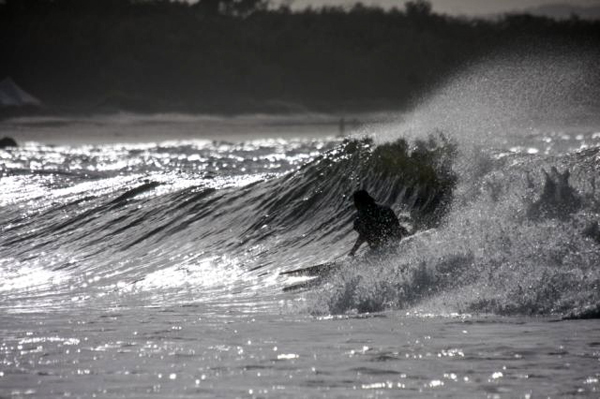
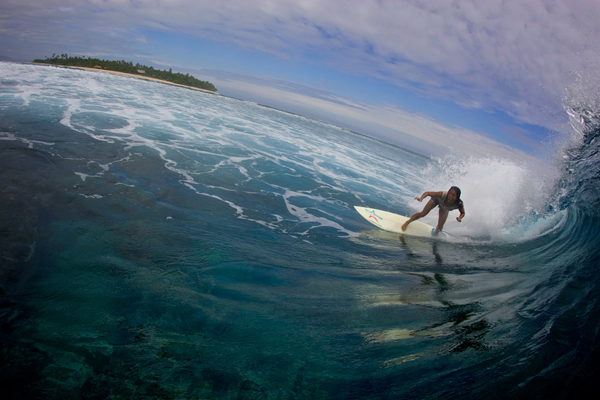
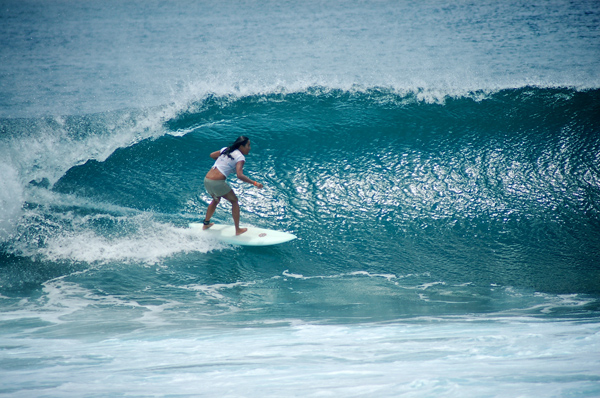
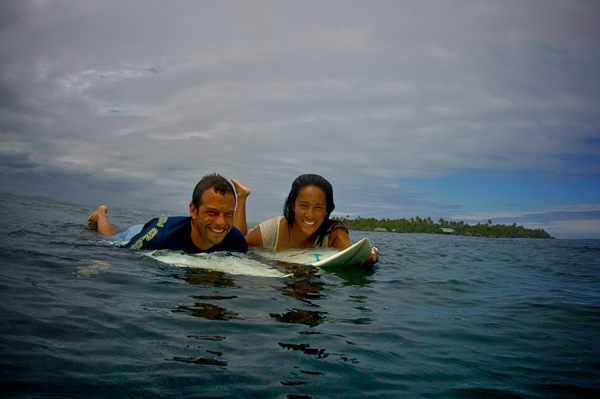
Nathan Adams Interview
Nathan Adams is a California surfer/musician whose unique wave approach stands out even in the crowded line-ups of San Onofre, Trestles, and Doheny. Nathan is also known for his casual demeanor, musical talent, and noseride take-offs. We caught up with Nathan to learn more.
What was life like growing up?
I grew up in Irvine, California until the summer before 6th grade. It was a good place to grow up. There weren’t too many hills there so it was easy to get around on a skateboard or a bike. My street had a bunch of kids my age so I always had someone to play with. I moved to Dana Point when I was 12. I started surfing because we lived so close to the beach.
When did you get your first surfboard?
I think I was 12 when I got my first surfboard.
What was the feeling you had when you first stood up on a surfboard?
I felt more legitimate, because I rode boogie boards before.
Who did you look up to and admire when you were a young man?
I looked up to my older brother Justin. I pretty much did everything he did.
Who/what inspires you?
People who are content with themselves and appreciate the beauty in life. Innovators. As far as what – design, music, surfing, and beautiful places.
What is the greatest thing you have learned in your life?
To not take life too seriously.
What are you most proud of?
My progression in surfing.
Of all the places you have traveled to, what place in particular stands out and why?
I just visited Santa Cruz and Monterey for the first time and I really like it up there. There’s a few good right point breaks, and the scenery is beautiful.
What meaning does surfing hold for you and how has it changed your life?
Surfing is what I’m most passionate about in life. It’s given me something to look forward to and keeps me motivated.
What brings you the most happiness in the world?
Being a part of life and having good friends to share it with.
Who are some of the people you feel are shaping the path for surfing today?
All the people who surf because they love to do it.
What is your current favorite board? Your favorite surfspot?
My current favorite board is my signature model with Almond. It suits the waves perfectly at my favorite spot San Onofre. And also a 10 foot finless Doyle.
What’s your favorite meal?
I like to mix it up a lot but it seems that In ‘N Out always hits the spot.
What are you currently listening to on your iPod?
Breaking Away, El Pico by Ratatat, Pulp Fiction, Warm San Francisco Knights by People Under The Stairs, and Magic Spells by Crystal Castles.
What are you most grateful for?
Friends, family, and people I can depend on.
What’s next for Nathan Adams?
To live and to learn.
Find out more about Nathan Adams and his Almond board here. Photography by Cam Oden.
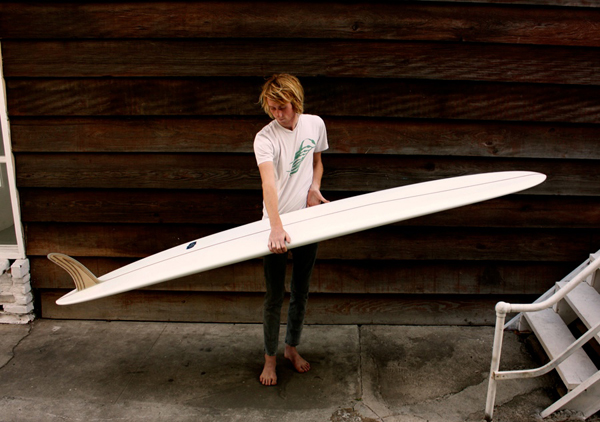
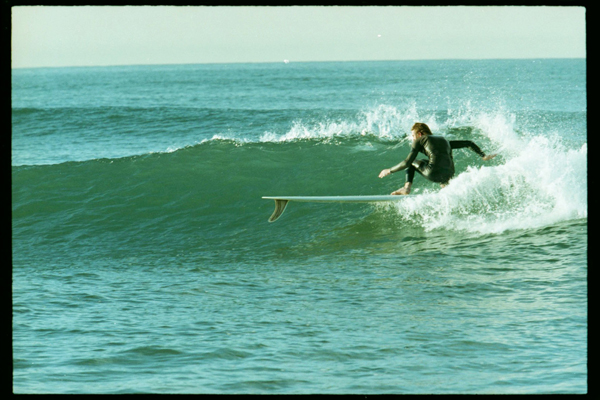
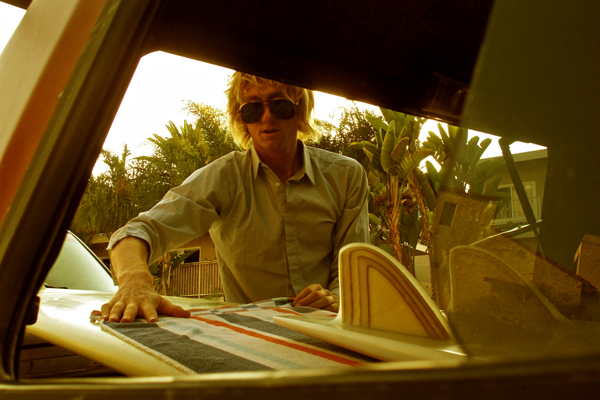
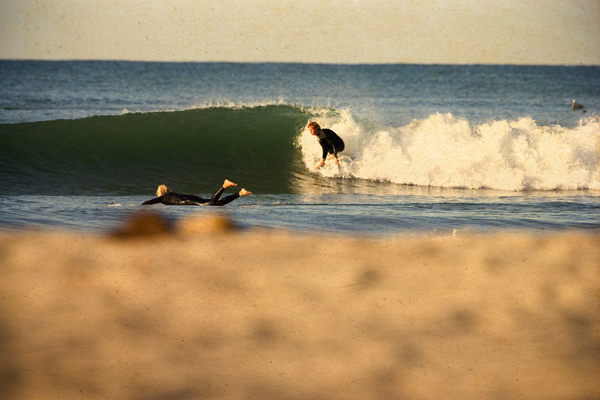
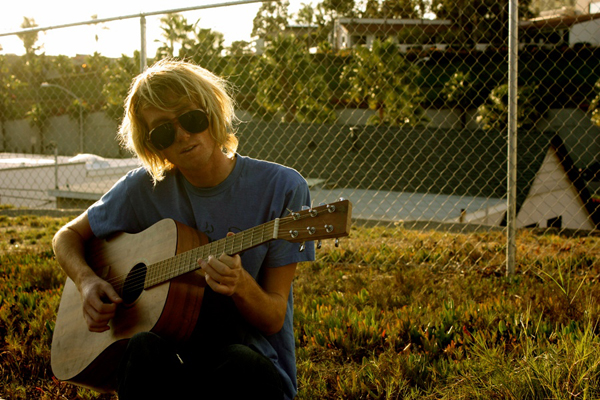
Kenneth Mockett Interview
Kenneth Mockett is a California surfer who created the unique surf shop Icons of Surf. Based in San Clemente, the store recreates the vibe of surf shops from back in the day. We spoke with Ken to learn more about his life and his inspiration.
What was it like growing up in California?
California was an awesome place to grow up. I grew up in the South Bay (Hermosa Beach). I wasn’t into organized sports, but I loved the beach and I found surfing at an early age.
When did you get your first surfboard?
10 years old.
What was the feeling you had when you first stood on a surfboard?
It was so exciting and I was so scared. It was 4 feet and I was on a 10′ Jacob pig and 10 years old. I was hooked the first time I surfed.
Who did you look up to and admire when you were a young man?
Barry Kanaiaupuni (BK) was my idol…
Of all the interesting places you have traveled to, what place in particular stands out? And why?
Japan and Hawaii, I love to visit Japan, surf and meet new friends. I love to surf Kauai. It is my favorite island in Hawaii.
Explain how the idea for your surf shop “Icons of Surf” came about
I worked in surf shops as teenager in the 1970’s. Surfing and surf shops have a special place in my heart. I was sad that I could not find a surf shop near my home San Clemente that gave me this feeling. I decided to create my own shop that cared about the surfer and about the quality of handmade surfboards.
How do you go about choosing the shapers and designers you feature in the store?
We have many brands of surfboards in our shop. They must all be of high quality. Basically, our customers decide which brands remain in the store.
Who/what inspires you?
Every surfer that is a part of the past, present, and future inspires me. Surfing inspires me and my heritage inspires me. Thank you to all surfers that came before me. You’ve created Icons of Surf.
What is the greatest thing you have learned in your life?
I learned that all people have beauty to share. And that cultural diversity creates oneness for all of mankind.
Do you have any regrets or wish you had done something differently?
I know this sounds simple, but our past creates all that we are today. I have no regrets. Everything is perfect as it should be for my growth.
What are you most proud of?
My children.
What meaning does surfing hold for you and how has it changed your life?
Surfing has given me an experience to stay young and has given me balance in my life.
What brings you the most happiness in the world?
Love, passion and knowing I make a difference.
Who are some of the individuals you feel are shaping the path for surfing today?
I feel that each and every person who contributes to surfing in their own way. This changes the path of surfing.
What is in your current quiver? What is your favorite board?
Wow! I have a big quiver:
1) Bing Diablo 9’5 Intrigue
2) Bing 6’6 Lotus
3) Chocolate Fish 5’9 quad
4) Chocolate Fish 5’8 twin
5) Wegener Asymetric tail 2 +1
6) Boss 5’10 Piglizard
7) Eric Christenson 7’0 custom single fin fish
8) Chris Christenson 11′ quad glider
9) Chris Christenson 5’9 fish quad
10) Jeff McCallum Mini Simmons
What’s your favorite meal?
It would have to be a rack of lamb, cheese, pâté’ and wine.
What are you currently listening to on your iPod?
My Ipod is currently empty?
What causes/projects/organizations do you support?
Many. I believe that all of mankind should give back to people less fortunate. I believe we all can make a huge difference with little effort.
What are you most grateful for?
I am grateful for my health and young spirit.
What’s next for Ken Mockett?
Only tomorrow knows, but the surfing world will always know where I am.
Learn more about Icons of Surf here.
Matt Beard Interview
Matt Beard is a California surfer/artist who paints the state’s rugged coastline in dreamy colors and fluid shapes. Matt’s work has recently been published in both Surfer Magazine and the Surfer’s Journal. We talked with Matt about life of surf and painting.
What was your life like growing up?
I wore a lot of goofy hats and endlessly annoyed my older brother.
When did you get your first surfboard?
I must have been about 10 or 11. It was a 5’2” Cheyne Horan style teardrop shape with a winged keel fin. I had no idea what that board was all about until years after I had given it away.
What was the feeling you had when you first stood on a surfboard?
Well it wasn’t a verbal feeling, but as soon as it was over I figured I’d like to do a lot more of it!
Who did you look up to and admire when you were a young boy?
The world pretty much began and ended with my older brother (which explains his endless annoyance with me). When I really started surfing, it was all about Curren. As I got into art, my big influence was Griffin. Pretty much your standard hero stuff.
How did you get involved in art?
I don’t know how I couldn’t have. It’s always been there in one way or another. I guess a defining moment for me would be my junior year of high school, when I couldn’t get into the drafting class I wanted, so I took art for an easy grade. There was an older kid who was all into the punk scene who would draw the weirdest stuff, kinda made me see a bit of the freedom in art that had been stifled by a few well-meaning but horribly uninspiring art teachers along the way.
This art class was taught by the school’s track coach who had used to paint signs for a living, so he laid a solid representational foundation with a bold and graphic approach. None of that high-falutin’ art theory stuff. Then there was Rick Griffin. I was 15 or 16 when he passed away, and that’s when I was really turned on to his work, which really opened some doors for me to embrace the union of surfing and artwork as a viable path.
What is your process for creating your art?
I just try to keep my eyes open, you know? It’s a far from perfect world we live in – littered with the wreckage of human lives and shattered hopes. Yet there’s something good in it, too. Something beautiful. I’m just always looking for ways to tap into that. At least that’s the beginning of the whole process, and probably the part that matters most. The rest is just alternating between carefully pushing paint around and making a repeated mess of everything, until the beauty and the wreckage balance out.
Of all the places you have traveled to, what place in particular stands out and why?
I haven’t traveled too much, but the few times I’ve been anywhere outside the U.S., I’ve always been struck by just how unrestricted simple life can be. Just set up camp and live until you die. Life is a very raw and basic thing, and I think we kinda forget that a lot of times.
Who/what inspires you?
Life itself is pretty inspiring. It’s all fair game out there, really. Bob Dylan is always someone I’ve looked at as a reminder to stay true to my own art, whichever direction it goes, and to not become creatively trapped by past successes.
What is the greatest thing you have learned in your life?
Wow. That’s a big question… I’m gonna keep workin on that.
Do you have any regrets or wish you had done something differently
Well, I’ve done a lot of dumb things, and probably hurt a few folks along the way. Not sure what I could have done to change any of that, I just wish it weren’t so.
What are you most proud of?
My children’s laughter.
What meaning does surfing hold for you and how has it changed your life?
I don’t make too much of what surfing is. It’s just playing in the ocean like a little kid, really. I suppose it’s kinda helped to keep my priorities pretty simple. Enjoy the moment. Tune in to life’s rhythms. Avoid full time jobs. Stuff like that.
What brings you the most happiness in the world?
My wife’s laughter. At me or with me, it doesn’t matter, as long as I can see her joy.
Who are some of the people you feel are shaping the path for surfing today?
Dane Reynolds on one side, and all the stoked and smiling kooks on the other. One is showing us what can be done, the others are showing us how little really needs to be done.
What is your favorite board? Your favorite surfspot?
My favorite board is broken beyond repair. It happened at my favorite spot, but I can’t tell you where that is.
What’s your favorite meal?
I could really go for some quinoa stew, and chunk of warm bread right now.
What are you currently listening to on your iPod?
Absynth Quintet, Jimmy Cliff, Bob Dylan, Fugazi, Tommy Guerrero, Woody Guthrie, Sebadoh. Waterdeep. I’m all over the place these days.
What causes/organizations do you support?
Surfing Heritage Foundation, SurfAid, Walking on Water, Surfrider Foundation, and random missionary friends working all over the planet.
What are you most grateful for?
Peace with God. There’s really nothing like it.
What’s next Matt Beard?
I don’t know. Just gonna keep my eyes on the horizon…
Find out more about Matt Beard here. The Surfing Heritage Foundation in San Clemente will host an opening of his work onSaturday, May 1st. More details here.

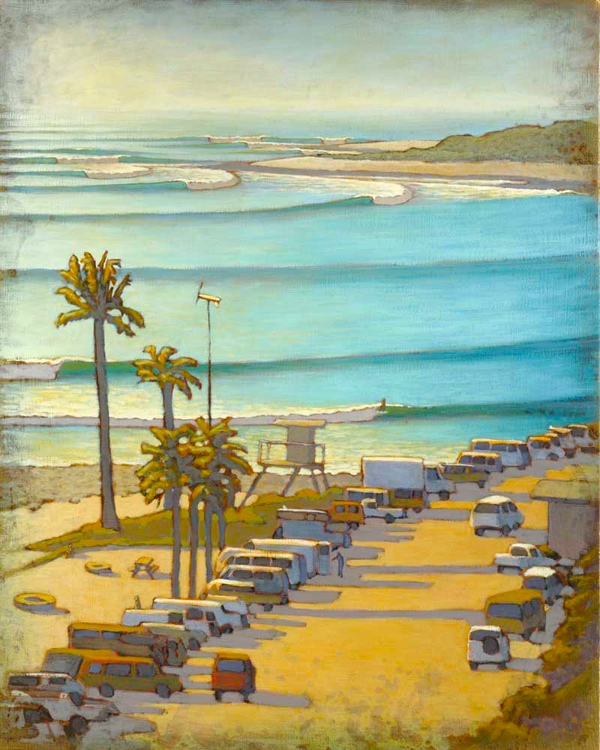

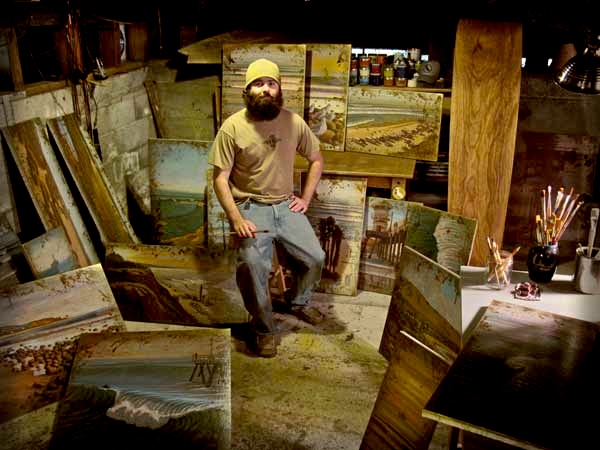
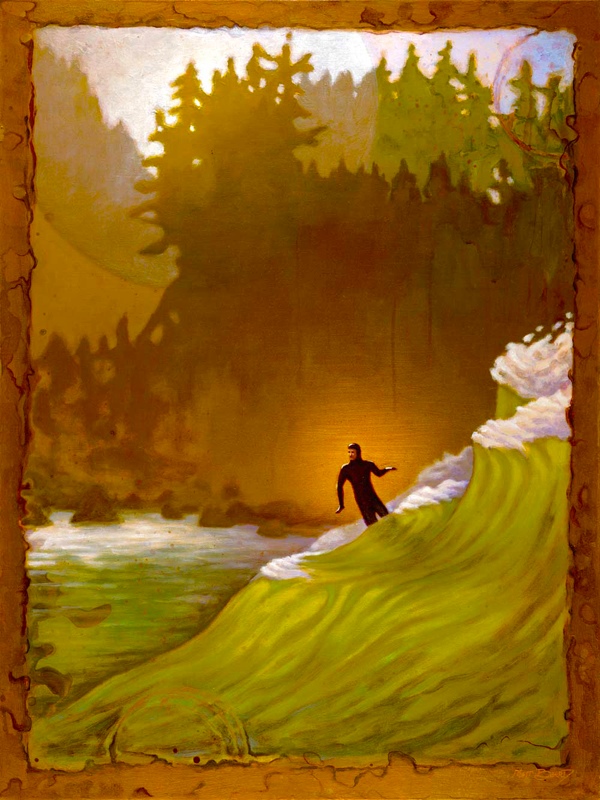
Mark Roberts Interview
By James Kamo
Mark Roberts is an Cornish surfer/shaper who is the creator of Glass Tiger, a line of handcrafted wooden surfboards with a lightweight foam core. His boards are known for their durability and their minimal environmental impact. We caught up with Mark to learn more.
What was it like growing up in the UK?
I grew up a long way from the coast, so I always had to travel to get to the surf. I mainly surfed South Wales with the odd trip down to Cornwall.
What was your first surf board?
My first board was a 6’4″ pop-out. It was a bit of a pig, but at the time I thought it was the best thing ever. It was complete with 80’s graphics.
Do you remember the first time you stood up on a board?
Yep. It was on the pop-out pig.
Who inspired you when you were young?
Occy, Tom Curren, Tom Carroll—they all had good, powerful surfing. I enjoyed watching those guys the most.
How does the surfing culture in England differ from the rest of the world and how has it affected you?
It’s still pretty small over here compared to places like Oz and the west coast of America. It will never get that big here, which in a way is a good thing. It can still get crowded, however, and Cornwall is still is the centre for surfing in the UK.
I think the scene here has loads of good points, and there are people being really creative with surfing and all the peripheral stuff that goes with surf culture. I love living in Cornwall. Dare I say, it seems to be a very happening place right now.
How did you get involved in shaping?
Since I was a kid, I wanted to shape boards and, in a very roundabout way, that’s what I’ve ended up doing. After school, I went off to study 3D design. I hated the course but had a ball being away from home for the first time, meeting some great people. As soon as I finished that, I moved to Cornwall and started working in boatyards. I used to make boards for myself, just copying other designs and just teaching myself through trial and error.
The big turning point came when I started to research how the sandwich construction boards were put together. This opened a whole can of worms for me. For a couple of years, I spent time just taking this concept and running with it. Picking holes in the concept was a tangent that has led me to where I am today.
What is your process for shaping a board?
The exact process is a bit of a secret, but it involves hand shaping EPS, vacuuming on skins and bending rails. It is all done by hand.
What were the factors that led you into the wood surf boards?
Basically, turning the way a normal surfboard is made on its head and wanting to make something that looks beautiful, lasts and is more environmentally friendly.
What has been the reaction to the wood boards?
Lots of people say nice things about the boards, but what I really want is people out on them surfing. It takes a bit of commitment for a surfer to part with hard earned cash for a surfboard that has no external glass, and to believe me when I tell them it will outlast all of your other boards if you look after it.
It’s taken awhile for the penny to drop, but it’s the best feeling to know guys are really stoked with how they surf, how they last and how they like being a part of looking after the board.
Of all the places you have traveled to, what place in particular stands out? And why?
I haven’t travelled a huge amount, but Ireland and Morocco are a couple of my favourite places I’ve been to—both consistent with great point set-ups.
Who are some of the people you feel are shaping the path for surfing today?
Shaping wise, I love the way Tom Wegener has really opened the door for wooden surfboard shapers … and all his standing-on-his-head thinking really out the box. Guys like Danny Hess and Josh Dowling are producing some very beautiful wooden boards with sound construction techniques.
What is in your current quiver? What is your favourite board?
At the moment, I’m riding a 6’4″ single fin egg, which I’m loving. My quiver changes all the time with what I can lay my hands on and what I can surf before someone buys it or borrows it for an extended “demo”.
What’s your favourite meal?
My mum thinks its boiled ham and parsley source, so to keep her happy I’ll say that. (Laughs)
What is the greatest thing you have learned in your life?
Man, these are no small questions!
I love philosophy but have no time for it; there’s a contradiction I think.
Well, I would say a Beastie Boy lyric always pops into my head at times like these: “Be true to yourself and you will never fail.”
What are you currently listening to on your iPod?
Portico Quartet.
What’s next for Mark Roberts?
Keep doing what I’m doing.
Find out more about Mark Roberts and Glass Tiger surfboards here. Surfing Photograph by Ian Butler.

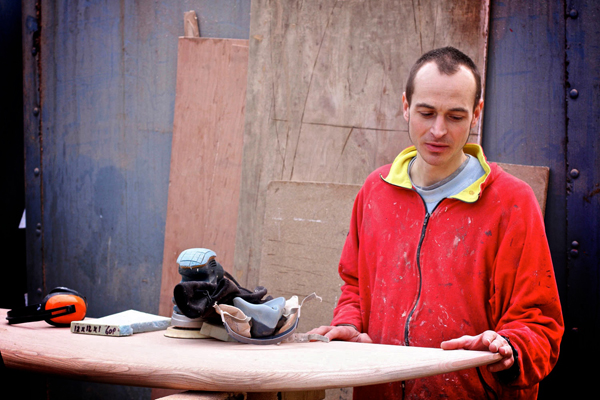
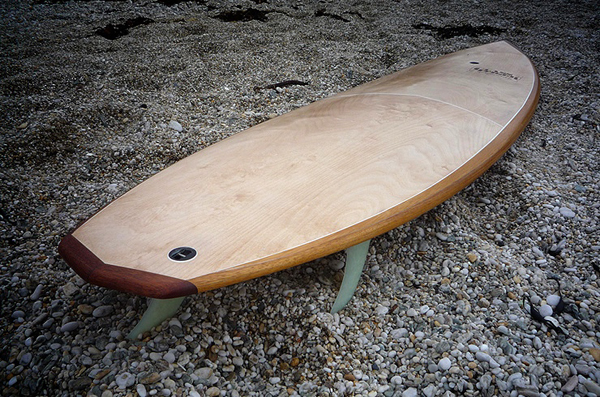
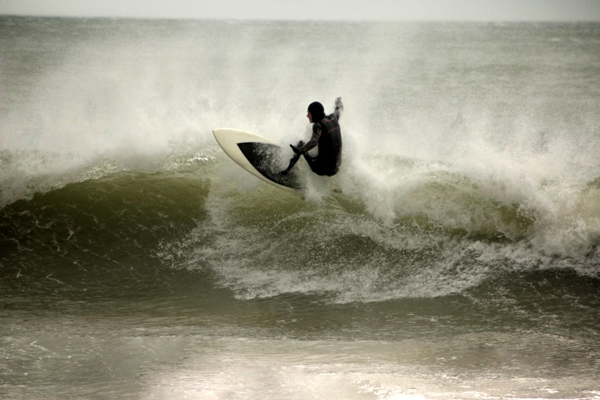
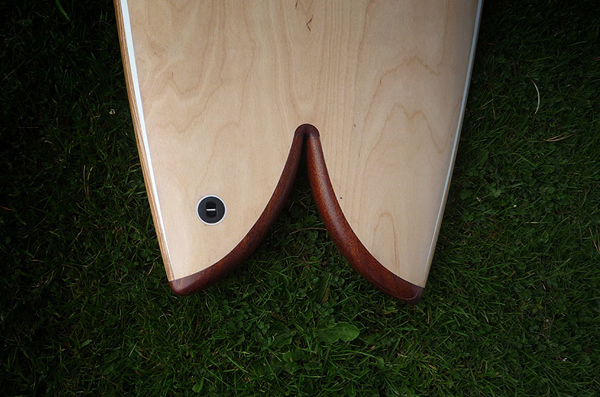
Bill Ogden Interview
Bill Ogden is a California surfer/artist who made a mark in the industry with paintings that depicted the beauty of the ocean with swirling colors and fanciful lines. 35 years later, Ogden’s work has found a whole new audience. We spoke with Bill to learn more.
What was it like growing up in California?
My parents were from Oklahoma, which made me a CIO, or a “California Improved Okie.” I grew up in Gardena, which was about 6 miles to the beach. During the summer, my brother and I would ride our bicycles down Redondo Beach Boulevard to the Redondo Breakwater. We were pier rats and we caught and sold fish there and got into the kind of mischief little boys sometimes do. At the age of 9, we later moved to West Covina where I stayed until I was 18 when took off for the coast and moved to San Clemente.
What was it like when you first witnessed surfing?
It was at the Breakwater. I saw this guy just planing on a wave riding a flat piece of plywood. He was going so fast he was practically bouncing off the wave. He wasn’t surfing – he was planing. It was pretty far out seeing all of that speed.
Tell us about your first surfboard
Riding my ten-speed bike from West Covina to La Puente I came across a bike shop. Going inside I noticed a cardboard box that contained a surfboard inside. It was a molded cast foam surfboard that had glass, catalyst, and everything. I absolutely flipped! I was obsessed from that second on. I had no money, so I went up to the counter and sacrificed my ten-speed that was worth at least three times the value of that surfboard kit. The guy looked at me and said about the board. “Get that thing outta here!” When I built it, I didn’t use enough catalyst in the resin so everything at the beach would stick to it – sand, shells, you name it.
What was the feeling you had when you first stood up on a surfboard?
That feeling of moving without a motor, I felt the ocean carrying me along – it was a free ride, like a magic feeling – yeah! No motor, no sail and here I was standing up and really moving. It was quite empowering. I just had to do it again, and again, and again.
Tell us about your experience with shaper Bill Holden
It was my first experience at a real surf shop. It had a mystique. I would just look at the walls covered with photos, smell the scent of resin, and just dreaming of the day when I could afford to get my own board. I remember painting a cartoon character with the flower baggies with the name Bill Holden Surfboards on my car. I saw Bill not too long before he died and he was aware of my art for many years. I told him he made me first real surfboard. When I told him of this fact, he was just so honored.
When did you get interested in art?
People always ask me “Why do you make art” and the response is usually “Because I have to.” Even at the age of three, I always had this feeling that I was late and what I did was a serious deal. I even got kicked out of Kindergarten for teaching the other kids how to draw! The kids would look at me with their wide eyes and say “How do you do that?” as if what I did was magic. I told them “You can do this, too!” I wanted to empower them.
Why do you feel it is important to reveal the beauty of California in your art?
As an artist, you always “get into” your own environment. However, having traveled a bit and then returning to California, I see that it has everything. I am currently sitting here just above Palm Desert and I am 2 hours from the coast, 2 hours from Mexico, and I’m 2 hours from Big Bear. I am within striking distance from 4 or 5 different terrains and each one has its own beauty depending on the time of the year. It really is a place where an artist can’t go wrong.
Tell us how the ocean factors into your art
All surfers talk about when they were kids and how they would go to the beach with their parents. It was an experience that just gets stuck in our heads. So I guess we are all trying to relive that wonderful experience of the ocean and adventure that we had when we were young. Also, you can look out to the horizon and not see anything man-made. Sure, you might see a sailboat or ship, but for the most part you can see for a very long distance. This perspective gives you a very comfortable feeling of being free.
How important is integrity in art?
I don’t see how you can be an artist and not have integrity. But it seems that there is as little integrity in art as there is in real estate.
How many years have you been painting?
I did my first oil at 12 years old. It was a paint-by-number kit given to me by my girlfriend. I destroyed it because I tried to paint outside the lines by trying to blend the colors. It just made me more determined to paint what I saw in the art books. To answer your question, it would be about 53 years.
What brings you the most happiness in the world?
Most artists believe it is their purpose to give the world beauty. To be able to show the beauty that is already here. As artists, we point out these things to people who may be too busy in their lives to notice. It is our mission to carry that torch for beauty, truth, and integrity through symbolism in our art. A beautiful landscape is going to give someone a feeling of peace and quiet and if an artist can deliver that emotion – that is a really great reward.
Do you still get out in the water?
Not in a while. As a matter of fact, I am going to do some serious looking for a wetsuit, board, and racks. I know a longboarder and artist named Jesse Miller who wants to take me out to Old Man’s in San Onofre. Oh man, I would have never surfed there in my younger days (laughs)!
What motto do you live by?
I look at life as a great adventure. All the things that have happened to me made me stronger. It takes a life of adventure – you eat life or life eats you.
What’s your favorite meal?
Let me think. It would have to be machaca and eggs. I typically eat grains and vegetables, rarely red meat – mostly chicken and fish. And I’ve probably eaten more sardines than anyone in the world.
What’s next for Bill Ogden?
There is a new, large painting and it has already been penciled in. Also, I am working on a book that will be a quick narrative of my work from beatnik, surfing, and psychedelic. Billabong currently has a number of my paintings featured on their clothing. And finally, The Surfing Heritage Gallery will be having a showing of my work in Costa Mesa later this month.
Find Bill Ogden’s art for Billabong here. Find out more about Bill Ogden’s show April 29 through May 31 at the Surfing Heritage Gallery in Costa Mesa here.
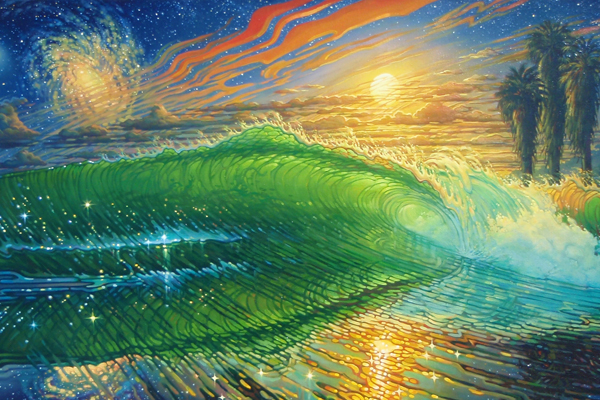
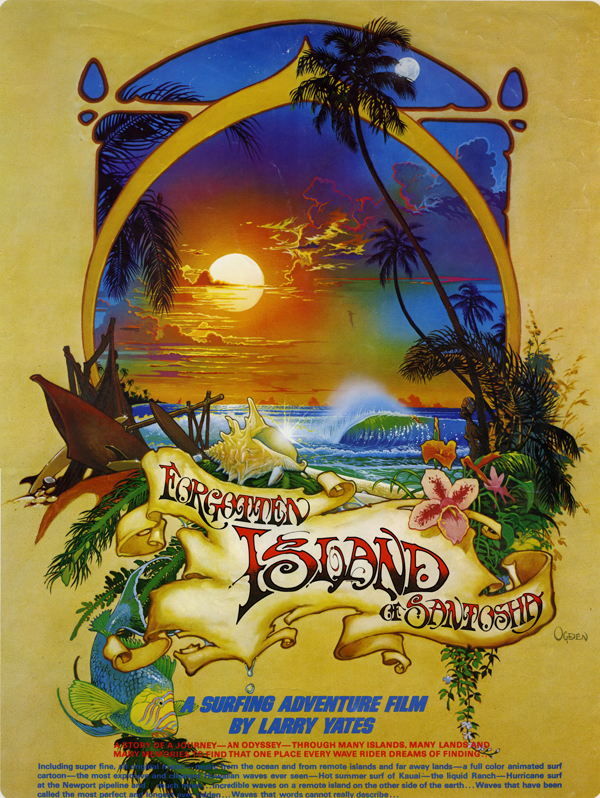
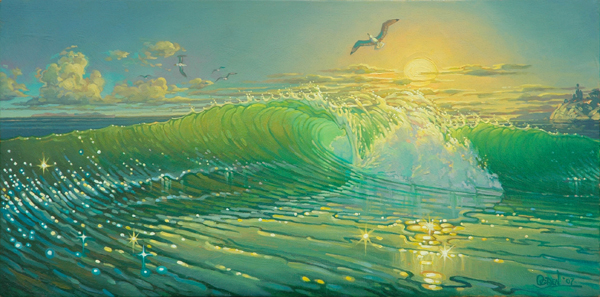
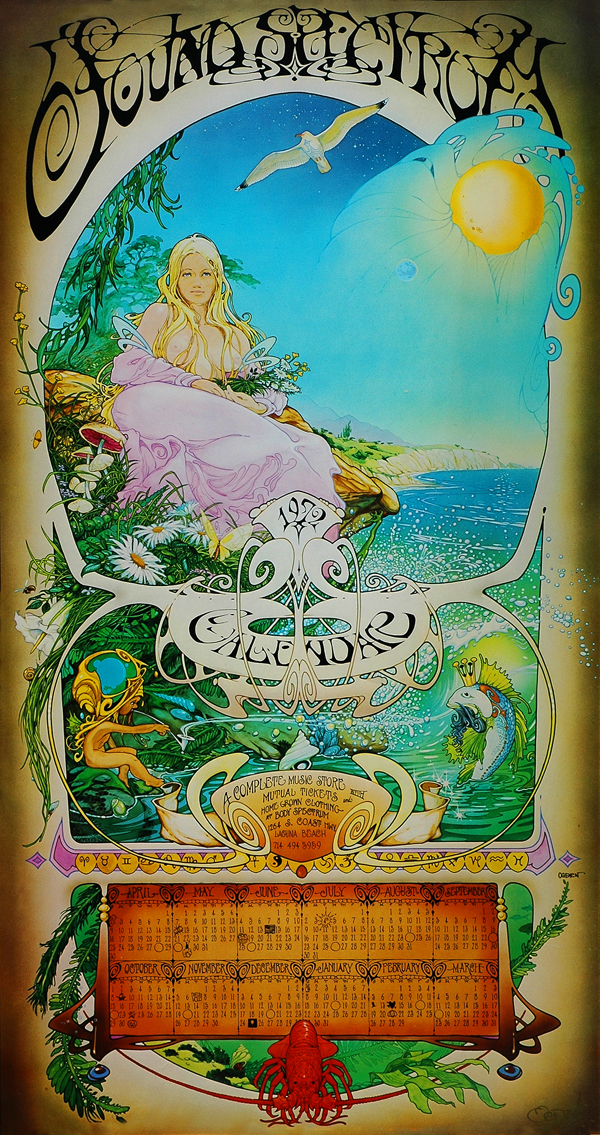
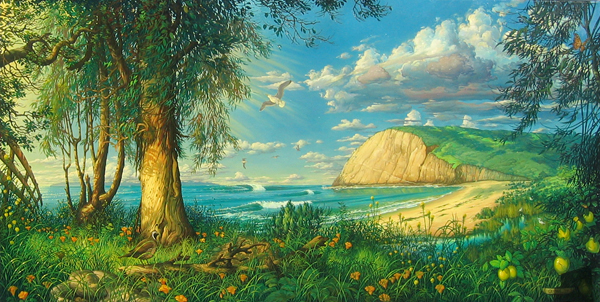
Daniel Crockett Interview
Daniel Crockett is an English surfer/writer who is the creator of KooK, a self-published newspaper that features stories and pictures on the state of surfing today. We spoke with Daniel to get the lowdown on his life and times.
What was life like growing up?
Idyllic—full of literature and animals. The maddest old house … we only lived in half of it. The front door never had a lock and the whole place was propped up by books. It was a working farm, and we had horses and grew vegetables. There were barn owls in the roof. I used to hear them hiss when I was lying in bed. I spent most of the time outside.
Who did you look up to and admire when you were young?
My dad when I was young. He’s out there—lives in a mountain hut in Armenia. He sailed round the world for fifteen years at a time when not many people were in the Pacific. I don’t know if you ever come down from that. He gave me a love of the ocean, so I thank him for that.
What was the feeling you had when you first stood on a surfboard?
That was a bit north of Byron Bay. My cousin Andrew took us. He was a proper shredder in those days. I got so hooked I lost two pairs of glasses in a week. I haven’t really stopped having that feeling since, but I have contact lenses now.
Where did your interest in art and design come from?
I’ve been painting to escape computers. It’s a good release, kind of euphoric. Early Klee, Hundertwasser, Leonora Carrington all strike a chord. For a few years, I’ve been making little books (like Melting Pot), doing poetry collections and small exhibitions. It’s great to keep them non-commercial and a whole lot of people come out of the woodwork. We had an epic one called Gratitude in a garage with 200 paintings and another called No Surf in England where Neil Halstead played.
Tell us about your publication KooK.
KooK started with a late-night chat with Alex Rowse of A-side Studio. We agreed we were seeing so much ace stuff come out of surfing and either getting the glossy treatment or being overlooked. We wanted to document these changes—both in the Atlantic and all over the world—and give some attention to friends who we thought deserved it. A newspaper is such a perfect medium to explore surfing.
I cobbled it together and Alex applied the design to bring it to life. We got some great submissions in from all over the world. Twenty pages of pink newsprint packed full of art, culture, photography, illustration and ideas. We decided to keep it independent, get it printed locally on paper from sustainable forests. It’s not nostalgic dreaming of another era. It’s surfing right now. The editorial also takes a little poke at surfer egos, some of which run pretty free.
Of all the places you have traveled to, what place in particular stands out? And why?
The Black Sea in Russia was just a heavy trip—heroin syringes on the beach, prostitutes, mafia, bear-hunting. Some surprisingly good waves, like most wind seas.
Who/what inspires you?
Surfers like Neil Erskine and Mark Dickinson, who are so intricately woven with a place that they become part of it. Mark’s language and Neil’s art are extensions of a life so tightly bound with the sea that it becomes indistinguishable. Both are great tube riders. Whale Nation by Heathcote Williams is a book surfers should read.
What is the greatest thing you have learned in your life?
That it’s damn short. We humans know shit and are generally evolving backwards.
What are you most proud of?
I just finished a documentary about peak experience, called Without Thought, with Ollie Banks and John Eldridge. It gives me goose bumps watching it. If you could reckon my life on one bit of art so far, that’d be it and all I did was come up with the idea and ask some questions. It’s beautiful.
What meaning does surfing hold for you and how has it changed your life?
Through surfing, I’ve blown a lot of opportunities and distanced myself from a lot of people. It’s allowed me to never stop being a child. That said, I think it offers a lot of hope in teaching us how to exist.
What brings you the most happiness in the world?
My girlfriend Anna, who has my measure. Surfing wise, there’s a little estuary point at home. I feel strongly connected to the place. Nothing better than surfing that around dawn on a 12 footer with the dogs running up the point on every wave.
Who are some of the people you feel are shaping the path for surfing today?
Anyone living it as a whole process. Probably someone way out there who we’ll never hear about, who couldn’t care less. Someone like Garth Dickinson.
What is your favorite board? Your favorite surf spot?
I’ve got a versatile gathering of surfboards. Kidman instilled the virtue of a functional quiver. Right now, a little McCoy Nugget has pride of place. Most enjoying an 8’4’’ Simmons made by Perfect Trim from a Paul Gross design. My air mat got swiped in Morocco, so hopefully some kid is sleeping on it! Anywhere peeling with the hint of a tube and no people.
What’s your favorite meal?
We had a polytunnel setup at home before we decided to travel. It was magic. Anything homemade, balanced, good ingredients. I battle a sweet tooth.
What are you currently listening to on your iPod?
Joanna Newsom’s “Have One on Me” Robbie Basho’s “Visions of the Country”. And the track “Street Hassle,” by Lou Reed, for a bit of grit.
What causes, projects, organizations do you support?
I give £5 a month to the World Wildlife Fund to sponsor an elephant. It doesn’t sound like much, but it’s been over a decade now. That elephant must be rich. I hope to make a positive contribution to the world through my writing.
What are you most grateful for?
The health—mental and physical—of my friends and family.
What’s next for Daniel Crockett?
California in a van from April to June with the KooK. Anna is at Santa Cruz doing sustainable horticulture. Then, up to the islands off Scotland with Ollie Banks for some space. Hopefully, some time in Berlin writing during the summer. I’m working on getting a couple of novels out there, and planning on an Autumn/Winter KooK in time for Christmas.
Find out more about Daniel Crockett at his blog here. Surfing images by John Eldridge. Exhibition shot by Nick Radford.
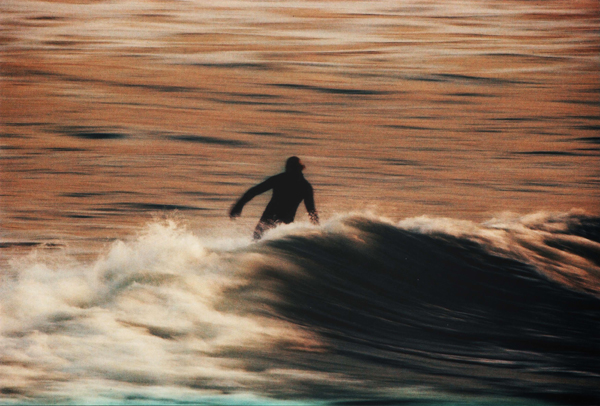
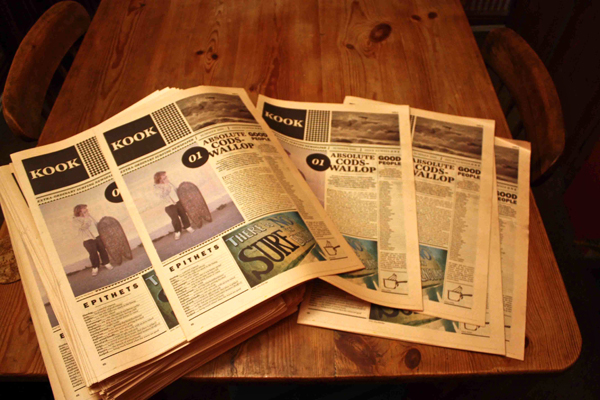
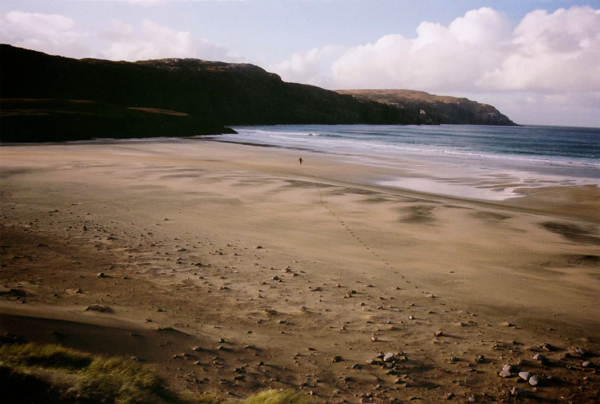
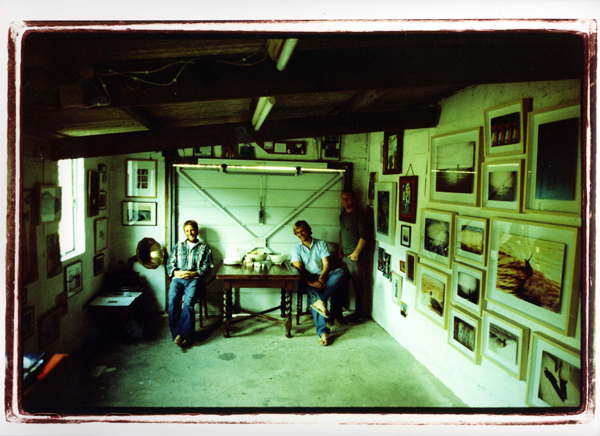
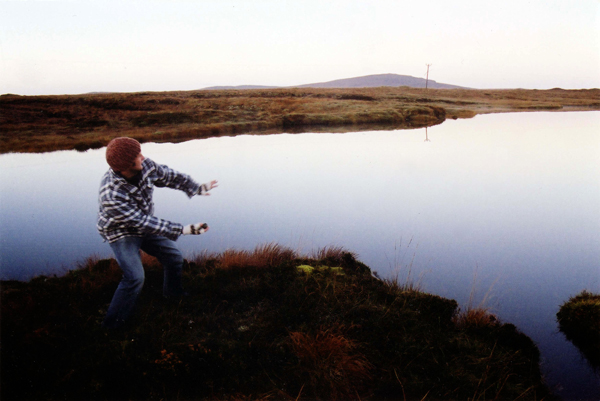
Schuyler McFerren Interview
By Mary Mills
Schuyler McFerren is a talented California surfer who was the winner of the ASP Women’s World Longboard Championships in 2006. No longer competing, she is just as stoked on surfing as she was when she was a little girl. We caught up with Schuyler to find out more.
What was your life like growing up?
My life growing up was amazing!! Between living in Montana and California, I had some wonderful and unique experiences that I wouldn’t trade for anything. My family is awesome; they were always very supportive of anything that my brothers and I were into. Both my mom and dad surf, so as soon as I showed an interest in surfing as well, they were really excited and encouraging.
When did you get your first surfboard?
Well, the first surfboard that I got that was completely and entirely mine was when I was about 12. Before then, I had been riding whatever my parents had in their garage—mostly an old 6’8” egg with yellow stripes and a 9’0” longboard that had its fair share of dings.
What was the feeling you had when you first stood on a surfboard?
The very first time I stood up on a surfboard I was only about eight years old, and my family was camping in Cardiff for a couple weeks during the fall. We were still living in Montana at the time, and I was really unfamiliar with the ocean and slightly intimidated by it. My mom took me out one day that had teeny tiny waves and pushed me into a couple. I remember loving it! Little did I know that we would be moving back to California in a couple years and I would make surfing into a career.
Who did you look up to and admire when you were a young girl?
Well. as a young woman, I looked up to my grandpa and grandma a lot—and still do. They are two amazing and inspiring people, and I have learned a lot from both of them. My parents, as well, were two people that I looked up to a lot.
Of all the places you have traveled to, what place in particular stands out and why?
France. It’s definitely one of my favorite destinations, mostly for the culture factor. The art, the cities, the fashion, the people, the food… it’s incredible. I’m dying to go back for a couple months. The waves were always really fun when I was there too.
Who/what inspires you?
So many different things, but mostly books, music, art, travel and friends.
What is the greatest thing you have learned in your life?
That life is completely relational. At the end of the day, it’s all about the people in your life and how you treat them.
Do you have any regrets or wish you had done something differently?
Nope. I’ve learned a lot throughout my 22 years of living, but I have absolutely no regrets.
What are you most proud of?
Probably winning the 2006 ASP Women’s World Longboard Champion title. I make some pretty delish coconut oatmeal chocolate chip cookies too.
What is your opinion of the state of professional longboarding in 2010?
To be honest, I haven’t been involved in the scene very much lately and I don’t feel qualified to comment on it. I do know that the girls are ripping and that they just keep getting better and better.
What meaning does surfing hold for you and how has it changed your life?
The role that surfing has played in my life has changed over the years, but the love for it has been constant. Right now, I’m concentrating on finishing my college education and pursuing other career paths outside of surfing. I’m incredibly thankful for the places that it has taken me, the people I’ve met and the amazing experiences I’ve had all because of surfing.
What is your favorite board? Your favorite surf spot?
I have three noseriders that I could never part with and that are crazy fun. Any one of those boards at Noosa or Swami’s would be perfect.
How did you discover surf mats? Explain why they’re so much fun.
I had grown up using the cheap inflatable mats from RiteAid that would pop after about four or five waves. One day at Swami’s, I saw Ken McKnight riding one and we struck up a conversation. He connected me with Paul Gross at Fourth Gear Flyer. Paul sent me a couple to try, and I was immediately hooked. They’re really fun because they’re so different from riding a surfboard, and they’re great to take out whenever the waves aren’t very inspiring or you just want to mix things up a little.
What’s your favorite meal?
Salmon salad with avocado, mango and papaya. It’s one of those meals that just always, no matter what, sounds great to me.
What are you currently listening to on your iPod?
It’s constantly changing, but this week’s flavors are Vampire Weekend, Magnet, Kid Cudi, Arcade Fire, and As Tall As Lions.
What causes/organizations do you support?
I sponsor a little girl through World Vision, and I’ve been involved in various ministries with my church.
What are you most grateful for?
The tremendous people in my life.
What’s next for Schuyler McFerran?
Graduating (eventually) with a degree in Business and Economics. Hopefully starting my own business one day. Traveling and taking more pictures, surfing as much as possible, and enjoying each day as it comes along.
Find out more about Schuyler McFerran here.
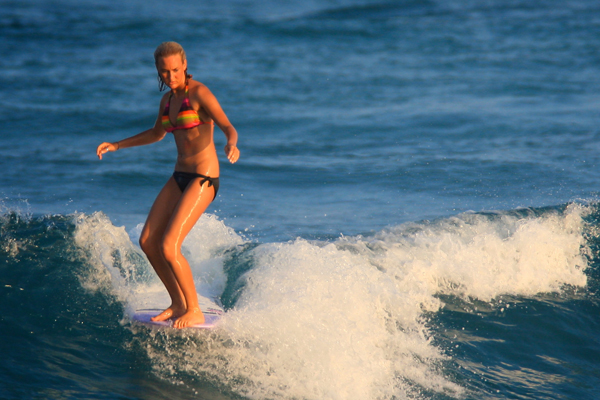
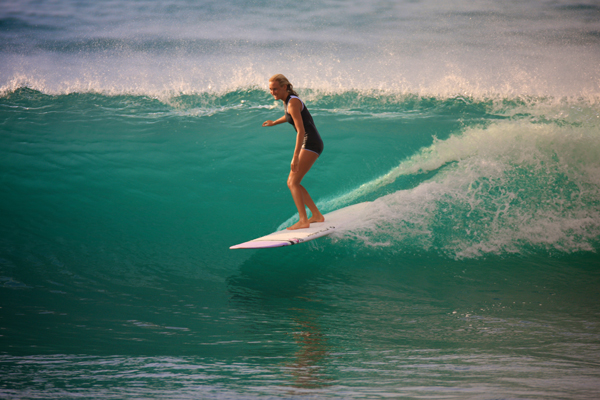
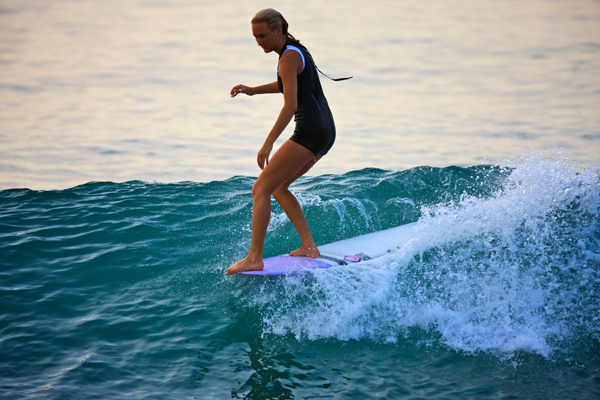
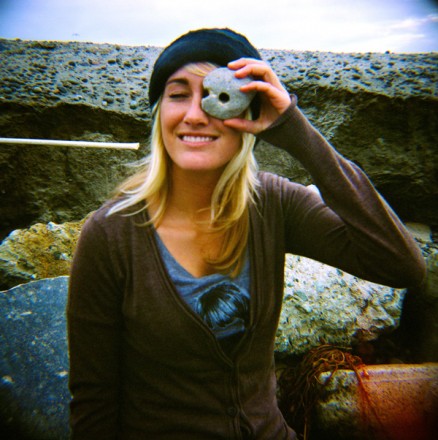
Rabbit Bartholomew Interview
Wayne “Rabbit” Bartholomew is an Australian surfer who lit up Hawaii’s North Shore in the mid 70s with style and attitude. His exploits were recently featured in the film “Bustin’ Down The Door.” We spoke with Rabbit to learn more.
What was your life like growing up?
I had a great childhood. We built treehouses in the bush, played rugby league (football) and cricket, went bodysurfing and skimboard riding. Then I discovered surfboard riding and that was it.
Where did the name “Rabbit” come from?
There were lots of pinball parlors in Coolangatta when I was a kid. I had mastered the art of playing two machines at once. However, it required a hopping action so as not to lose control of either machine. Between that and the slightly outsized front teeth, a guy called Rodney Goober Barnes turned around one day and said, “You’re a rabbit”. And that was it.
When did you get your first surfboard?
My first surfboard was delivered to me by the Deane brothers—Wayne and Robye. They had cut a mal down to 6’8″. The year was 1967, so it was a bit revolutionary—one of the first cutdowns that properly ushered in the shortboard revolution in our part of the world. A friend of mine from high school was convinced it was a kneeboard, and used to try and beat me home from school and steal it out of my shed. He was a lot bigger then I was. I paid that board off at $1 a week for 40 weeks.
What was the feeling you had when you first stood on a surfboard?
Phenomenal. There was a bit of a story behind it. Twelve months earlier, I had been given my first go on a surfboard at Greenmount Beach. A kid named Kerry Gill had this hot shortboard—it was 8’6″—and I carried it to the beach for him right through the summer holidays. On the last day of the holidays, he offered me a go. Kerry paddled the board out the back, I swam out, he then handed the board over and he bodysurfed in. I was alone, out behind the breakers, in the blue water sitting on this majestic surfboard. Then a four foot set rolled down the point. A guy came bodysurfing toward my position. I tried to swing the board out of the way, and he surfed right into the nose of the board, opening up a huge gash on his forehead. I apologized. He cussed me out. I swam to the beach and retired from surfing.
I rode the swing featured in the movie Free Ride for a year. Then it was arranged for me to start surfing one Saturday morning. My turn came at Snapper Rocks. I caught a wave and rode the board properly. All that training and simulating on the swing served me well; I could turn and ride on the green face straight away.
Who did you look up to and admire when you were a young man?
My big heroes were Nat Young, Midget Farrelly and Peter Drouyn. I also admired Reno Abellera and Dora. However, Drouyn was probably “The Man” because I saw him surf Kirra regularly and he was a master stylist. Nat was my power hero. I also had local heroes in Harry Hacka Allen, Snake Sims and Graeme Black.
Of all the places you have traveled to, what place in particular stands out and why?
The North Shore of Oahu will always stand out; I had so many life-changing experiences there. I was most challenged in the waves at Sunset and Pipeline, and over many winters I have so many amazing memories. The other place is probably J-Bay; it’s just a real special place to surf and visit. The early days at Hossegor were very special—big, empty barrels and perfect September days.
Who/what inspires you?
Lots of things inspire me. The people who inspire me are my Free Ride generation friends, in particular Shaun Tomson, Mark Richards and Peter Townend. Past and present political figures have inspired me, including JFK, Churchill, Nelson Mandela and Barack Obama. Tom Watson and Greg Norman inspire me with their talent way into their 50’s. Ali inspired me for promoting his sport, elevating his image and being courageous out of the ring.
Kelly Slater and Andy Irons inspire me, as do the Cooley kids (Joel, Mick and Deano). Peter Garrett inspires me with his courage. Bono and Eddie Vedder inspire me to keep the faith. Guy Ormerod inspires me by being a role model. Ian Wright and the crew at GreenCell inspire me to make a difference. Dave Rastovich and Paul Watson inspire me to fight for one’s beliefs.
What is the greatest thing you have learned in your life?
I think it’s the sum of the parts—all my combined experiences, the setbacks and achievements. No one thing stands out, but perhaps it’s to really appreciate life and those closest to me.
Do you have any regrets or wish you had done something differently?
It’s impossible to not have any regrets. The big ones usually are of a personal nature, taking a course of action that I could have used with some better judgment. But one cannot look back and dwell on things; just keep looking forward and hopefully learn from mistakes.
What are you most proud of?
Definitely having a couple kids. I waited quite awhile. I suppose there was a better than even chance of not having children, but it happened and I’m quite proud of that.
What meaning does surfing hold for you and how has it changed your life?
Surfing is the star around which my life revolves. For me, all roads lead to the surf; I feel most comfortable near or on the coast. I think surfing has given me a better appreciation for all things. I most definitely respect the environment, particularly the ocean and foreshore, and I think it smoothed out some of the rough patches in my character.
What brings you the most happiness in the world?
Just being with my kids, watching them grow up, sharing adventures with them, watching them play sport—even just thinking about them makes me happy.
Who are some of the people you feel are shaping the path for surfing today?
Mick Fanning has stepped up as a representative of pro surfers, so he is leading in and out of the water. Kelly still has an enormous influence. At heart, I think he is driven to make it a better world for surfers and surfing. Young guys like Dane Reynolds are Jordy Smith are people that a whole generation aspires to be like. I think Julian Wilson, Owen Wright, Dusty Payne, John John Florence, Torrey Meister, Stephanie Gilmore, Carissa Moore and Coco Ho are among a group that will take surfing into the future.
What is your favorite board? Your favorite surf spot?
My favourite board is a 6’3” Darren Handley Design. It goes really well at Snapper Rocks—super free yet positive in the hollow section.
What’s your favorite meal?
I have two right now: choo chee chicken (a spicy Thai dish) and salmon toro bowl (a tasty Japanese lunch plate).
What are you currently listening to on your iPod?
I just listen to all kinds of music—today Pearl Jam and U2.
What causes/organizations do you support?
I support Surfrider Foundation and SurfAid International. I am also part of a surfing charity group called SAND Sippas (Surfers Against Nature’s Destruction), and KPI (Kirra Point Inc.), a group dedicated to bringing Kirra back to its former greatness. I am a member and past President of Snapper Rocks Surfriders Club and Patron of NSR (National Surfing Reserves) in Australia.
What are you most grateful for?
I am grateful for the support of my family, for having so many wonderful friends around the world, for the freedom to follow my pursuit and, most of all, for the life I am having. I am grateful for the empty waves at Kirra when I was growing up and for those epic days at Sunset and Pipe and V-Land in the 70’s and 80’s.
What’s next for Rabbit?
Now that I have moved on from ASP, it closes one chapter and opens the next. I am involved with an environmental entity that is developing a bio-reactor, cultivating algae, developing alternate waste disposal systems, low emission lights, eco-friendly bacteria for use on farms and to deal with pollution in dams—just a whole range of applications and products for the coming age. I am co-raising my children and still surfing when I can. In fact, I can right now.
Vintage photography of Rabbit Bartholomew by Art Brewer.
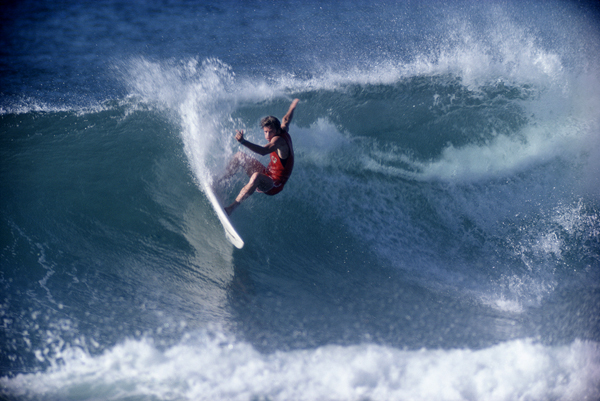
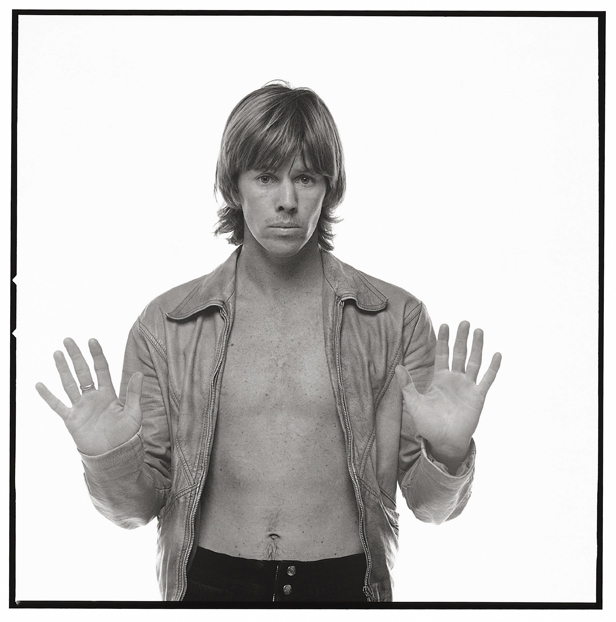
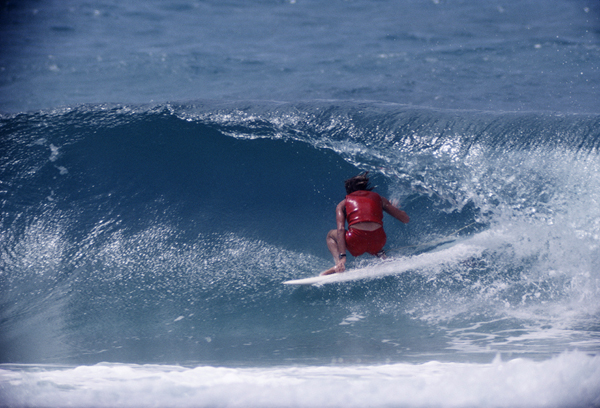

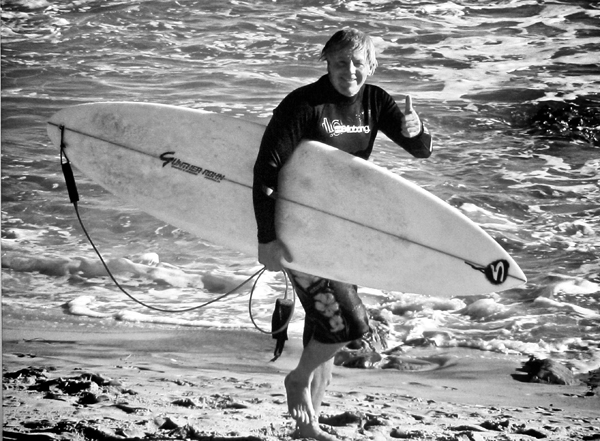
Harrison Roach Interview
Harrison Roach is a talented Australian surfer who was recently featured in the films Picaresqueand The Present ripping on an Alaia. A surfer who can ride anything, Harrison has been a featured rider in countless magazines. We took some time to ask Harrison a few questions.
What was your life like growing up?
I grew up (and am still growing up) in Sunshine Beach, Queensland—just a two minute walk to the beach and a four minute drive to the Noosa Point breaks. The lifestyle here is laid back. As children, my friends and I spent every moment of our spare time in the ocean. It was all I wanted. If it was flat, I’d swim. If it wasn’t, I’d surf anything I could get my hands on: longboard, shortboard, bodyboard, whatever. That’s what I did then and what I still do now.
When did you get your first surfboard?
I got my first surfboard for Christmas in 1994. I was four years old. My dad bought a secondhand foam shortboard from an older kid’s father. It was bright pink and I was stoked. My first fiberglass surfboard was a year later as Dad managed to get his hands on the board from an old Noosa local. It was a 5’11” Sam Egan channel bottom with a Cheyne Horan star fin. I wasn’t quite sure what the fin or the channels did, but I loved that board, and Sam Egan was the legend father of Luke Egan!
What was the feeling you had when you first stood on a surfboard?
I’m not sure I remember the first time I stood on a surfboard, but I remember the first time I rode an unbroken green right-hander. After finishing my ride, I couldn’t help telling everyone how good I was; I was a cocky little grommet even at five. That first real wave on the channel bottom made me feel like a king and, since then, I’ve been obsessed.
Who did you look up to and admire when you were a young man?
I have always looked up to professional shortboarders. They are freaks! I had new favourite surfers every time a new video came out. I watched The Hole more than a thousand times. Martin Potter was the king! When I first saw 156 Tricks on VHS, I was obsessed with Oscar Wright. When I saw The Blueprint, Shane Dorian was my hero. I had never heard of Miki Dora or The Seedling or “logging”.
The first longboarder I ever thought was actually cool was Tom Wegener. He was our friend Margie’s new boyfriend and he let me ride his heavy single fins. He stressed to me the importance of trimming. Trimming was a concept I was unaware of as a kid. However, the guy who I looked up to most was, and still is, Dane Peterson. He has been my mentor and brother as I’ve grown up. I have never seen anyone surf as good as Peto on a longboard.
Who inspires you?
Dane Peterson inspires me—his surfing, his photography, his craftsmanship … even his ding repairs. Whatever the guy puts his mind to comes out amazing. Jordy Smith inspires me. I came second to him in two junior contests one year; he is on another level in every aspect of surfing. I learned that the hard way. Kai Neville inspires me. His new surf film (Modern Collective) blows my mind every time I watch it. He has taken the best young surfers in the world and shown them in a new light. These guys are taking over. As Mugatu said, “So hot right now.”
What inspires you?
Modern Collective, Christian Wach’s hang tens, Peto’s flow and my girlfriend Eadie’s drop punt skills with an AFL footy.
Tell us about your most memorable wave.
I was on a boat trip in 2008 in the Telo Islands, in Western Sumatra, surfing a wave called Coffins with Adam Kobayashi. It was a solid swell and pretty sketchy when we first got out. I got stuck inside on a big one, broke my leash and got clobbered on the reef. AK, the hell man he is, rode straight in over dry reef and got my board. I would have left it for the locals rather than do that.
By the time I got my board back and put on another leash, it had cleaned up and was looking big and perfect. I paddled back out a little hesitantly after my previous beating. I watched AK go down hard on a huge one and the butterflies in my stomach got even more agitated. After five minutes of waiting, another boat turned up with five blokes just to watch. I couldn’t let any more waves pass. I caught the next big one that came and got what was the best barrel of my life. The butterflies were gone, adrenalin was pumping and I was ready for more. I think I got the best barrel of my life 10 times that day.
What is the greatest thing you have learned in your life?
To smile. When you can smile genuinely, you can be genuinely happy.
Do you have any regrets or wish you had done something differently?
I wish I started playing guitar when I started surfing, then I could be a surfer and a rock star! (Laughs)
What are you most proud of?
My extended family and my close friends. They make the good times great.
What meaning does surfing hold for you and how has it changed your life?
Surfing means more to me than I could explain. Sometimes it annoys me; I can’t stand being away from the ocean even though I love the country. My university degree has been put off for the last four years and I want to try live in Tokyo. Because of surfing, I can’t. I’d go crazy if I did. I’m obsessed with surfing and the ocean; my life revolves around it. Without it, I’m lost.
What brings you the most happiness in the world?
My family, my girlfriend, my friends and the ocean.
Who are some of the people you feel are shaping the path for surfing today?
Always Kelly Slater. Always Joel Tudor. Everyone in Modern Collective. Also, Mark Matthews, Rasta, Kassia Meador and Christian Wach—all unique surf shredding people.
What is your favorite board? Your favorite surf spot?
I have a 5’6” Neil Purchase JNR sweet pea quad that I have surfed way too much. Raggs Right in the Mentawais is my wet dream.
What’s your favorite meal?
Mum’s homemade chicken curry.
What are you currently listening to on your iPod?
Beck—Modern Guilt and Gnarles Barkley—The Odd Couple.
What are you most grateful for?
My upbringing—my parents have always encouraged and supported me.
What’s next for Harrison Roach?
Maybe a Harrison Roach feature film? Other than that, it’s Costa Rica in six days with Matt Williams, George Trimm and Eadie. VASSUP!
All photography courtesy of Dane Peterson. All images are copyrighted and may not be used without permission.
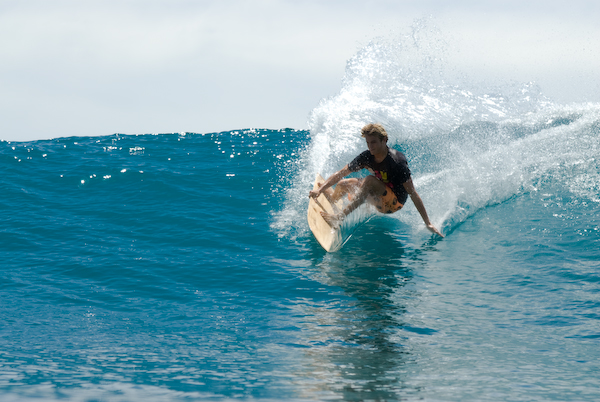
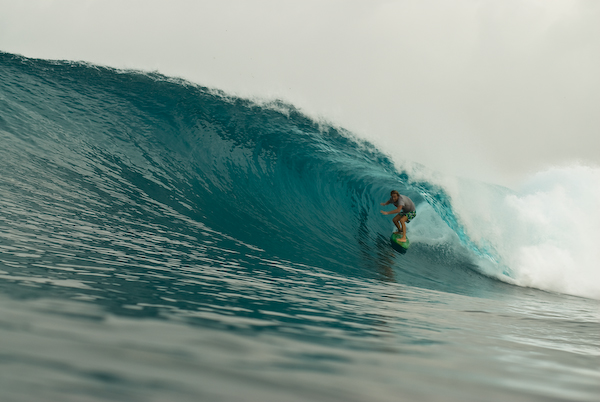
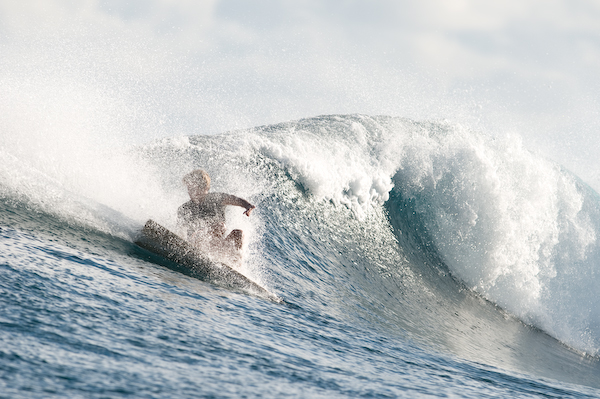
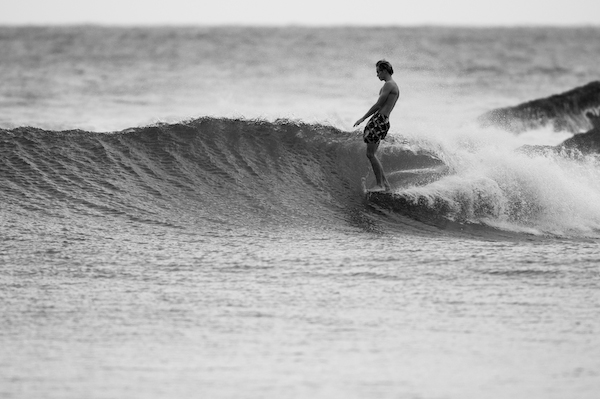

Austin Saunders Interview
By Mary Mills
Austin Saunders is an East Coast surfer/shaper who quite simply, builds beautiful surfboards. Entirely self-taught, he started his own business at the age of sixteen – mastering the arts of designing, shaping and glassing. We spoke with Austin to learn more.
What was your life like growing up?
I was the typical beach kid. I spent the week practicing for football or playing paintball, and spent the weekends on the beach. I hated school, but my parents expected me to go to college. I lasted almost two years in college working towards a business degree. School wasn’t for me, but those two years have helped me run my own business.
When did you get your first surfboard?
I got my first surfboard when I was about 12. I borrowed it from my Uncle Greg. I guess that first experience is what started my journey to building surfboards. I grew up playing football and I have always been big, and the board I borrowed definitely didn’t fit me. Even though it was in the 8 to 9 foot range, it was built with “typical” dimensions … and I’m not your typical surfer. In fact, most people these days aren’t typical.
What was the feeling you had when you first stood on a surfboard?
First I was thinking, “Holy crap! I am standing up?” Then, all I felt was pain as I faceplanted into the beach. Everyone teaches you how to stand up, but no one teaches you how to stop before you hit the shore.
Who did you look up to and admire when you were a young man?
I have always admired my family. All of my family members are hard workers. We never had a lot of money when I was growing up, but they always showed me that if you work hard at what you love, you are paid back in the end. I guess you could also say I admired James Brown. I always joked about how he said, “I am the hardest working man in show business”—I consider myself the hardest working man in the surfboard business. We have that in common.
Who or what first inspired you?
My first inspiration came in the form of a 1968 Hansen Competitor that I purchased when I was 14. It made me realize that was the type of surfboard that I wanted to build. It was old, worn and used, but through the little bit of green pigment it still had intact, I could tell that it was something special. I still have that board today.
How big is the surf scene in Virginia?
Considering how little of a coastline we have, the surf scene is fairly large. We have noticed the surf scene growing in the 35 year plus age group and a huge upturn in the over-50 crowd. The great thing is that this works to my advantage. From the beginning, all my boards were custom. The 50-plus crowd needs boards built to their exact needs. You are not going to buy a board off the shelf that works for you when you are new to the sport, on the East Coast and over 50. If you want something that is going to work for you, on day one it has to be built for you.
What do you think the surf world should know about the surf scene in the South?
We are the most surf stoked people you could find. We are used to riding a two foot swell with wind chop, but you should see us when it really starts firing. A lot of times we are counted out because we are on the East Coast, but we have some fantastic surfers (and let me add shapers) who get very little recognition.
You don’t look like the stereotypical surfer and shaper. Is that to your benefit, detriment or makes no difference?
I was definitely was made for football—not for surfing. But take a look at our society. Most people aren’t your typical 135 pound California surfer types. I guess being larger than most shapers works to my benefit. I learned to adapt my boards to fit my needs and I can translate this knowledge to other body styles and body types.
You are unlike many other shapers in that you make traditional surfboards as well as alternative surf craft. What prompted you to make these other alternative surf craft?
Someone once said that to find out if someone is really worth their salt, you ask them if they are the best in their business. If they answer “yes”, chances are they’re not. If they respond by saying that one day they hope to be and that they learn something new each and every day, then that person most likely is the best in their business. I try to learn something new each and every day. Even though alaias, paipos, and hand planes aren’t something new, they have long been forgotten. They have become a lost art and through learning how they were constructed, my knowledge of how all surf craft work deepens. But the real reason we should give the attention to these alternative surf craft is because they’re just plain fun! Have you ridden any yet?
What is the greatest thing you have learned in your life?
I guess balance. Everything in life and surfboards is about balance.
Do you have any regrets or wish you had done something differently?
Everything that I originally considered regret actually worked out in the end. Every challenging experience deepened my knowledge and taught me valuable life lessons. Actually, I regret trying to eat a whole dozen Krispy Kreme doughnuts on a bet. The first six goes down easy. No so for the rest.
What are you most proud of?
I think I am most proud that I did this myself. I never apprenticed under anyone. I learned shaping from books and videos. I learned glassing by trial and error. I only had the help of my family and friends like my dad, Troy, Uncle Joe and friend Rich. I was 16 when I started my business and, since that time, I started and ran two different glassing and shaping facilities. Just recently, I opened a surf shop that carries the Austin name. My new shop represents me. I didn’t want the Wal-Mart mega outlet of surfing. I wanted a shop that shows tradition and craftsmanship—the way things use to be. At my new shop, we specialize in boards, not clothing.
What meaning does surfing hold for you and how has it changed your life?
Surfing is my life. I work seven days a week, roughly 12 hours a day. When I actually get a day off what else would I do? I go surfing. While I’m surfing, I think about how I could redesign the board to make it a better noserider, turn better or catch waves quicker.
What brings you the most happiness in the world?
Sunny day with chest high, peeling waves. English Bulldogs. The “Hot & Now” sign turning on as you drive past Krispy Kreme. A freshly oiled AR-15. A 51 shoebox Rat Rod. My fiancée Jamie.
What is your favorite board? What is your favorite surf spot?
My favorite all-time board is my 10 foot Soul Glide. That board has been magic since day one. My favorite local surf spot is called Greens because all you see when you look onshore is all the bright green, million dollar manicured lawns. Where exactly is it? I will plead the Fifth on that one. My favorite non-local spot is Infinities in Kauai, Hawaii. It has an awesome left that goes on for miles. Friendly people (if you are respectful), warm waters and warm air temps. What more could you want?
What are you currently listening to on your iPod?
Too $hort, Mikey Avalon, Sublime, James Brown, TI, Rage Against the Machine, Anti-Flag. It’s a given that Too $hort will be blasting when some Soccer Mom with her 8 year old kid comes walking through the factory. You should see the people diving for the volume control.
What causes or organization do you support?
We are a big supporter of the March of Dimes. We have been a main sponsor for their contest for the last seven years. We also support our local chapter of the Surfrider Foundation, many other local charities, and some schools that I sponsor.
What are you most grateful for?
My incredible good looks and my winning personality!
What is next for Austin Saunders?
On the home front, I am getting married in June to Jamie … and, yes, she surfs. In business, I plan to run full steam with the Austin Surf Shop. It is a traditional surf shop with boards and board supplies. We have a new model coming out that reeks with tradition. It is called the “.51”. It starts with a high density foam blank, custom paulownia or balsa stringers, super heavy volan glass work, all gloss pigment resin work, custom glassed on pivot fin and traditional wood tail block. The only thing we aren’t doing with the .51 is pouring the foam blank. Everything else is made right here at the factory. We also have a new website coming out that shows all our custom wood boards like the balsa and paulownia customs, the alaias, wood paipos and hand planes.
Find out more about Austin Sauders and his surfboards here.
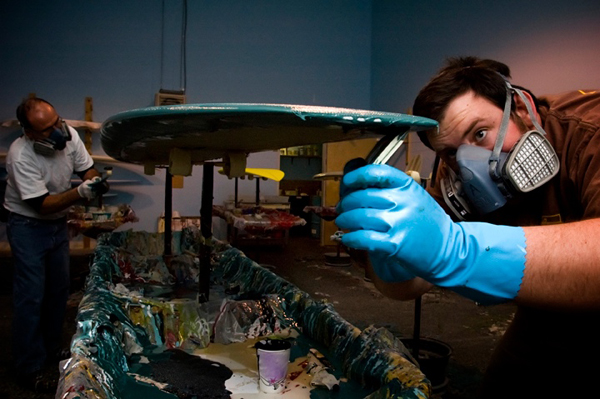
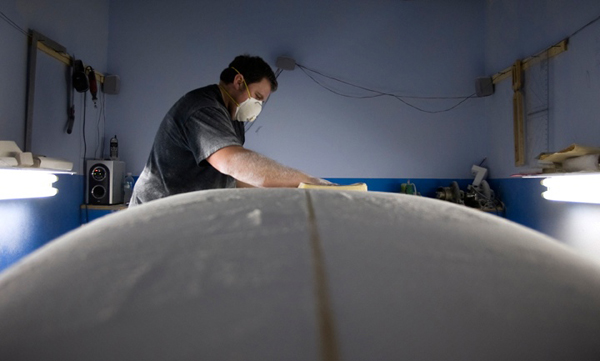
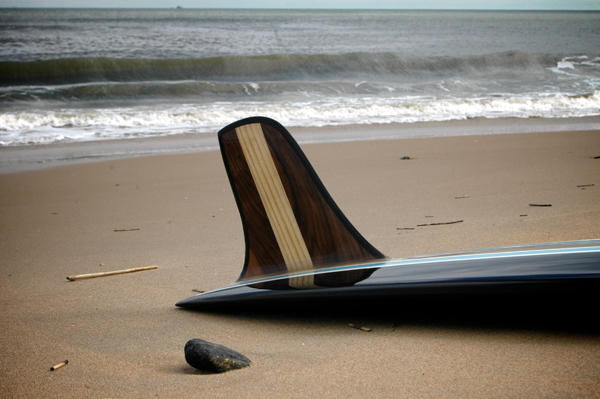
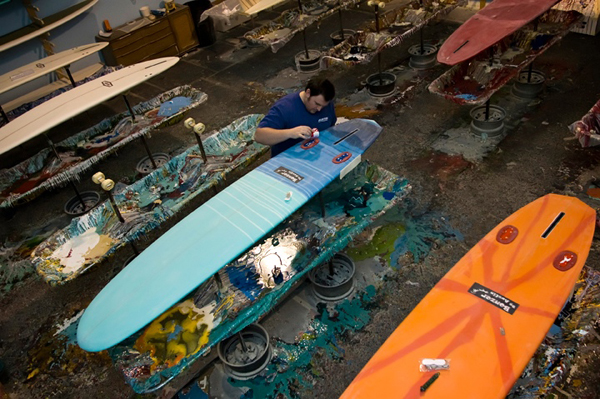
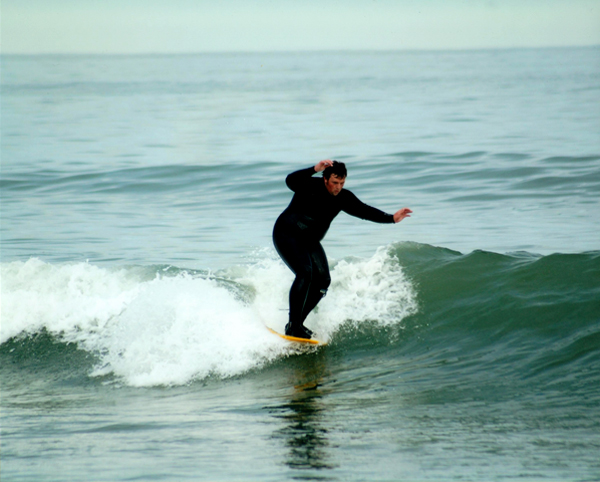
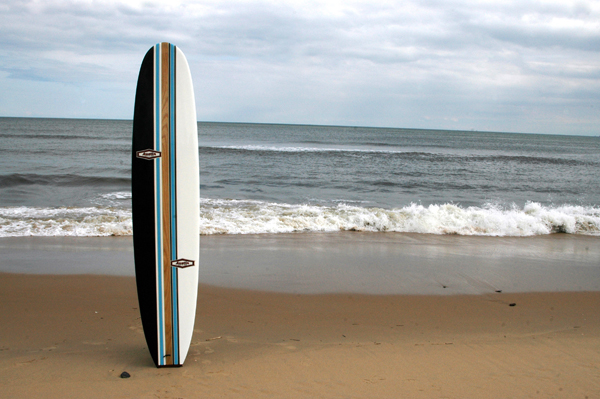
Mick Sowry Interview
By Mary Mills
Mick Sowry is an Australian surfer/filmmaker responsible for Musica Surfica, a film which has won awards at surf film festivals all over the globe. An adept storyteller, he also writes the surf blog Safe to Sea. Mick graciously allowed us to talk to him about his life.
What was your life like growing up?
I was born in Fiji and spent my childhood to age 10 in Adelaide, South Australia, about two minutes from the beach. It was a surfless beach, but my love of the water comes from wonderful days there—getting sunburnt and beginning my freckle collection. I didn’t have swim fins then, and came up with the bright idea of running around on the bottom with a rock. That little beach did give me one of my first profound wave experiences. A bit of a storm, and sitting right in the shore break letting the waves blast me. I absolutely loved it.
It was with my dad in front of my house in Adelaide I saw my first surfboard. 1958. On top of a white Holden wagon. I thought they were jets. Dad informed they were surfboards, and I wanted to be a part of it—whatever “surfboards-ing” was. Not long after that, I saw my first Waimea footage on the telly, and my first wave out there in 1986 was a good moment. It took me till late 1968 for my first board surf though and a year more to the first board as dad said I had to work to get it.
When did you get your first surfboard?
New Year’s Day 1970. I’d borrowed boards before that and could already stand up and turn, but that day was my ground zero. I looked like a duck … sometimes still do.
What was the feeling you had when you first stood on a surfboard?
Whoooosh and “Holy crap, I can turn this thing!”
Who did you look up to and admire when you were a young man?
I struggled knowing what I wanted to be, and consequently didn’t go as hard as I should have at school. On exam days, I even disappeared for a splash and must have been a massive disappointment to my parents. I had always been good at art and writing, so I ended up in advertising when in retrospect I’d have loved to paint. I love being inside my head … always a bit of a dreamer really.
But advertising it was—as an art director. And there were people within that world that became great friends, but always, always, the artists and photographers had my attention more than the people filling the advertising awards books.
In surfing, I had my heroes. Barry Kanaiaupuni. I loved that bottom turn and every time I paddled out I’d imagine burying the rail nose to tail. Terry Fitz, Wayne Lynch, Nat in Morning of the Earth. Maurice Cole rode one of the best waves I ever saw ridden at Winki. A local legend, Mick Pierce. Micky could devour a lineup, and was a great tube rider. A thousand stories around that guy. Funnily (and through the oddest of separate circumstances), Nat, Wayne and Maurice actually became friends, though much later. Plus, I had a chat with Barry once. The laugh was I’d imagined a giant of a man and he was about the same size as me.
The biggest surfing compliment I ever got was recently when I was chatting to Derek Hynd and out of the blue he said, “You know, Mick, that bottom turn of yours has a lot of B.K. about it.”
My head exploded.
So back to people I admired, in the deepest sense. My parents, Brian and June, for grace, compassion and grit. Always being there. A happy, loving home.
Of all the places you have traveled to, what place in particular stands out and why?
Surfwise…Hossegor, in France. My mate Rene and I, along with three Queenslanders (Cap, Brando and the Phantom) who we met on the beach there, were pretty much the first travelers since the Evolution crew to settle there for a bit. Empty perfect beaches Can you imagine surfing perfect Esagnots or Capbreton by yourself, and the most welcoming, lovely people? Magic.
After that, Spain, Portugal and Morocco. Perfect surf in each, wish I’d stayed longer, but had hung so long in France… I did get Mundaka, though, as good as I’ve ever seen it.
Individual un-named breaks off Sumatra. Slick, gurgling, heaven.
As a place alone… an ad shoot in the centre of Australia.. dropped on a mountain top by helicopter, left for a couple of hours when the film crw went to get some stuff, dusk, an horizon that went for 2 or three thousand miles in any direction and I might have been the only man on earth…it could have been 20,000BC or 2300AD. Not wanting to get mystical, but it put me in a good place.
Who/what inspires you?
Recently, Derek Hynd and Richard Tognetti for obvious, but different, reasons. Rich because of his drive to get the best out of his art, the best out of Australia in a cultural sense. And because with all he’s achieved and with the razor sharp intelligence he has, he is still a regular guy. Great with kids. A surprisingly good surfer, particularly finless, given his hectic schedule. He and my son Tom have a wonderful rapport.
Derek with his restless intelligence. He’s creating a new surfing. At its best, his finless act is mind-boggling. Not in gutless crap, but ten foot Bells at ridiculous speed, power drifting, spinning—glued to the board and laughing. At 52! Even if no one took it up, the opening of minds to something else is what sets him apart. Richard too.
My dad because he lost everything at 55 and started again. My mum for her calm, and making me realise the 50’s housewife was the most honourable of professions.
My Sue for bravery as I watched her deal with a brain tumor 12 years ago,
The battle against the closed mind. Fearlessness. That is probably the answer.
I fight it in myself, as self-doubt is a killer …and it gets to me a lot.
On that note I’d have to add Nat Young. His self-belief is complete to the point of pain in the arse-ness, but it gets things done. When he was bashed in the surf, his response as he recovered was, “Stuff this! I’m gonna do a book about surf rage.” A couple of months later, it was out. He didn’t vacillate. He just did it. There is a lesson there.
It’s not easy though, as everyone has moments of resistance to the new, or challenging. In a way though it is what we should all strive for as even the most basic thing, like say, racism, is really fear of the unknown, the new, the other.
What lead you to finless surfing?
There’s an obvious answer, but I will say I still would call my involvement a dalliance. I can do it reasonably well on the board Derek Hynd made me, make maybe 60% of my waves, but struggle enough that if it is dialing, I’ll take the finned board out so as not to be a danger in the lineup. It’s fun, and recent stuff I’ve seen of Derek has got me fired up again, so who knows? The crux is I don’t have the luxury of a daily surf, so I tend to cherish them. I go with the mood.
I’ve just made a couple of alaias—a new challenge, stand-up as opposed to prone is maddeningly difficult. My goal there is to get stand-up-proficient, though these new hybrids with some float that Tommy and Jon Wegener, Sage Joske and others in So. Cal. are playing with … that looks interesting.
You have to remember I’m near to 56, was never a real gun, so even the fact that I’m still on a 6’0” is an achievement in my eyes. One good turn makes a great surf. Happy surfs are easy to find if you keep trying new stuff.
Musica Surfica completely breaks the mold for surf films. Were you at all surprised by how well it was received?
Musica was the most amazing thing I’ve ever been involved in professionally. The confluence of personalities, circumstance, finance, weather, on and on—it would only take brick to have it all fall down.
The opportunity was given to me. I kept thinking, “Don’t stuff this up.”
Thankfully, with some wonderful people in it for the ride, I … we didn’t.
That it was well-received … well, critically it was a huge success, but people do struggle with it too. Sales? I think it’ll burble along for years, but the house is gone, a couple of torrent sites have it as a free download and have had more of them than we’ve had in total sales. So it gets you thinking. And making another with two kids at school? It’s a challenge.
You see, it’s a difficult film to pigeonhole. Try telling anyone to buy a film about finless surfing and classical music and they go, “Huh?” You have to see it to get it, but to get people to see or buy it is a job. Even the trailer doesn’t really do it justice.
What advice would you give to someone who wants to try surfing a board without fins?
Stay low. Stay neutral and off you go. Once you find trim and begin to make waves, then start to work out how to apply power. Be prepared to faceplant, and be prepared to smile. It is a great talking point in the water. Everyone starts grinning, asking questions, wanting a look.
What are the greatest things you have learned in your life?
Keep an open mind. Respect another’s right to be. Persist. Stay calm. Treasure your friends. Love.
I’m not religious at all. You don’t need the promise of heaven to do the right thing. Your moral obligation as a human being is enough. And take a few deep breaths before a big set.
Do you have any regrets or wish you had done something differently?
If I had done anything differently I wouldn’t be where I am now—so near to stuffed financially, but with a family I adore, a growing group of friends around the world, and again because of theGFC, the prospect of working till I die. Now this might sound like a gripe, but a challenge ahead is a better prospect in many ways than saying, “Righto, the bank’s full! I’m putting my feet up and waiting to die.”
All good, in a different sort of way.
What are you most proud of?
Of course my family—a madhouse that is an even mix of screaming and laughter … often within minutes of each other. Sue and I have nearly divorced a thousand times and yet here we are 25 years later. Getting kids through the teens and seeing them on their way is the great challenge for any parent and beyond any personal ambition. That is my main goal.
That’s probably where I envy those that started early and lived some dreams when they were most able to. There is no time like now to begin, the younger the better. My “now” came a little later than I’d have liked, but it came nonetheless.
What meaning does surfing hold for you and how has it changed your life?
Surfing is a calm centre. My peace. It’s kept me healthy as long as you’re not a dermatologist, who no doubt will build a swimming pool off me. It is as constant as breathing; it is a place of beauty and familiarity, and my gift to me. Amongst the myriad frustrations and maddening difficulty, there are still enough moments of ahhhhhh to keep me coming back till I drop.
What brings you the most happiness in the world?
A good laugh, family, my friends. Eating together. Basic stuff. The odd boat trip wouldn’t hurt either.
My greatest happiness in a personal sense, after all of the above, would be to live with a view of a wild ocean coast.
Who are some of the people you feel are shaping the path for surfing today?
Performance-wise, the kids: Kelly, Joel, Mick, etc. That high-end thing will always be an evolving, rising benchmark. The other paths grow as surfing becomes something beyond a sport. It now has depth and history. There is a folklore of boards, style and art. The path is chasing the feeling that is you on a given day. More than ever just getting wet, having a slide on whatever, is enough. You rip. You don’t. So what? As long as you work with your limits, and have a smile, ride away.
What is your favorite board? Your favorite surf spot?
Favourite board? If I’m on, my Maurice Cole 6’3”. A wave last year at six foot Bells was as close to an extended perfect moment as I’ve had in years. Smooth, fast, for that wave I just … was. If I’m not on though, the best board in the world won’t save me.
Favourite wave? There’s a spot down south called Massacre. A heaving hell drop right with a slot that lets you in, a square bottom, mad power, a tube sometimes and a grinding race through the inside … or a fat shoulder. Sunset-like. Rarely crowded, often lonely, always fun—suits me down to the ground and the home of some of the most satisfying surfs I’ve ever had. Good from 6 to 12 feet; best around 8 to 10. I love it, but only get to surf it a couple times a year.
My favourite surfing moment though was a session at three foot Spooky’s Beach at Angourie.. A long, fast, high tide right bank breaking from the middle of the bay, by myself, 6 a.m., forest to the water, birdsong, glassy. Peach pink and gold morning. An endless trim on the front end of Nat’s 10ft Takayama. No ego. No one to watch. Just crouched up the front, finger in the wave, watching the light.
What’s your favorite meal?
Anything Italian or a hot curry or Chinese. Mushrooms on toast. Indo food. Food, dammit. That’s my favourite food.
What are you currently listening to on your iPod?
The kids laugh at my crap. The driving disc I made for our Christmas run up the coast had “La Mer” by Charles Trenet (1954), Radiohead, Philip Glass’ “Etudes for Piano”, Israel Kamakawiwo’olé, Spem in Alium (The Tallis Scholars.. 40 part renaissance motet..circa 1570), “I’m Alive” from Morning of the Earth, Led Zep (“Stairway”), Madeleine Peyroux (“Dance Me to the End of Love”) and Jimmy Hendrix. It drove the family mad as they‘d love one thing then, “What the … ?” Needless to say none of my stuff gets played at home. I love all sorts of stuff. As long as it takes me somewhere.
What causes/organizations do you support?
Greenpeace and the WSPCA get cash every month, and when someone comes to the door they get something if they don’t try the hard sell. It depends on how full the wallet is.
What are you most grateful for?
Being born Australian.
What’s next for Mick Sowry?
I’d love to finish what I started before Musica, and I have more than couple of other projects that I want to see through. More writing. More photos. To paint more. To do and make inspiring, entertaining things with talented people. To do the best I can for as long as I can.
Feed, and enjoy, my family.
And keep surfing, preferably with my sons and my friends in the water. Sue’ll be on the beach reading. She hates getting her hair wet.
Find out more about Mick Sowry here.
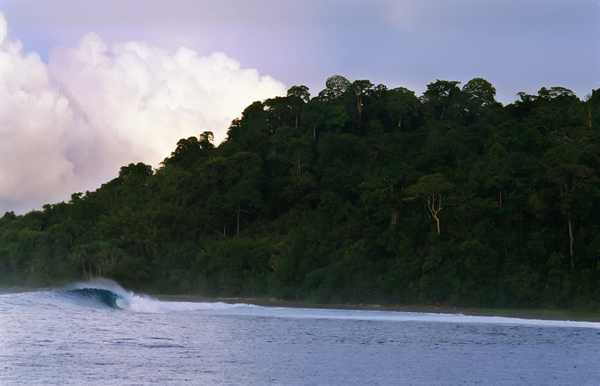
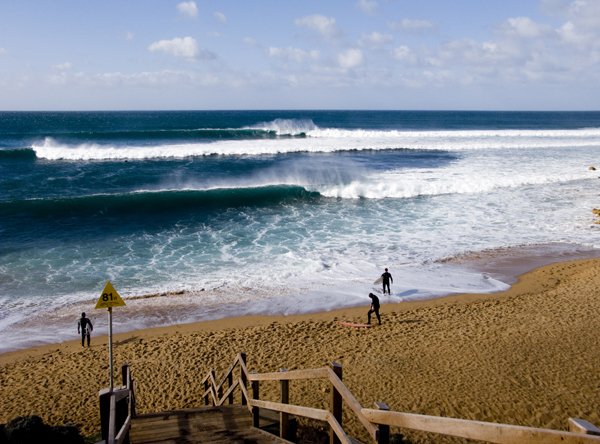
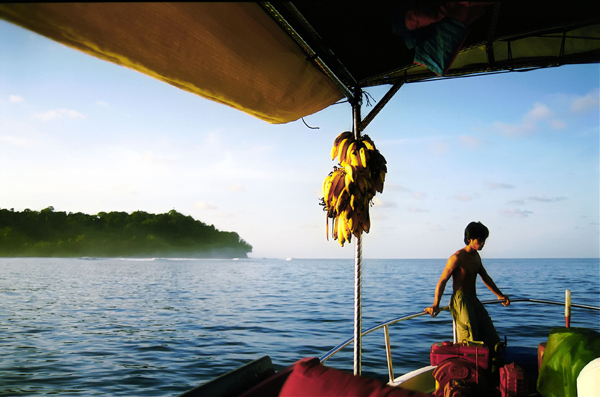
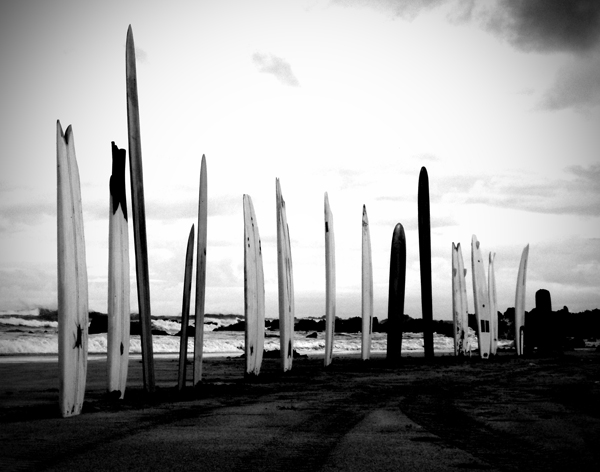

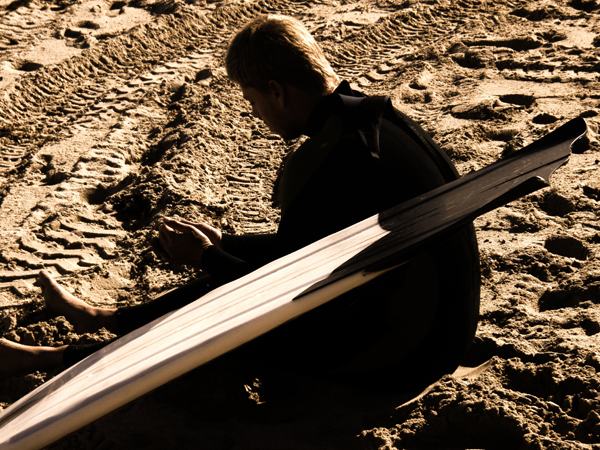
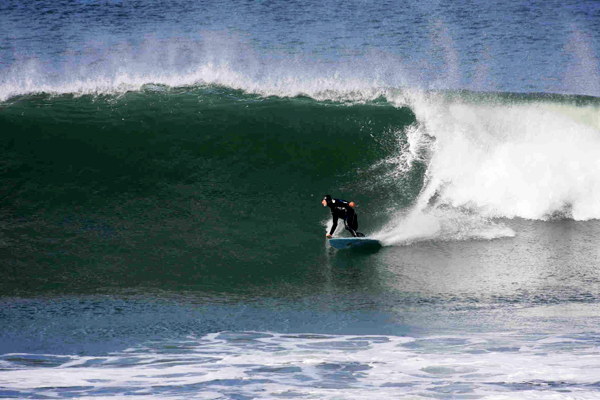
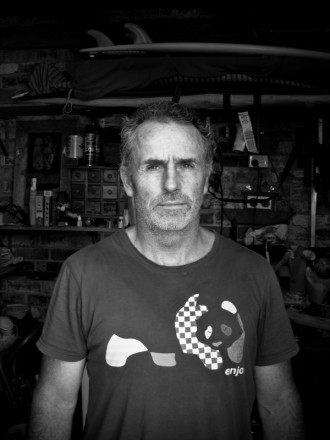
Joe Curren Interview
Joe Curren is a California surfer/photographer who is equally talented on a board as well as behind a lens. He is featured in the film “One California Day” and exhibits his work internationally. Joe took some time out of his busy schedule to talk with us.
What was it like growing up in Santa Barbara?
Santa Barbara was mostly a great place to grow up. It’s a challenging place because the cost of living is really, really high so owning a piece of anything there seems like a fantasy. The surf can get very good, but it’s fickle and extremely crowded. Fortunately, there are other things to do there that can bring a little solitude. Places close by like the backcountry, the Channel Islands, the Gaviota Coast and parts of north Santa Barbara County make it easy to get away. Growing up, my dad taught my brother, sister and I to appreciate these places. He would take us fishing and diving, and we would take camping trips in the backcountry with the whole family—sometimes for two weeks at a time.
As for the surf scene, growing up it felt like Santa Barbara was off the map. There was barely any media coverage given to it and rarely did you see cameras on the beach. Surfers definitely weren’t the cool kids at my school. We didn’t get much respect. At one point, I thought it would be great move to Australia and I tried to talk my mom into it. Surfers there seemed to be living the life.
When did you get your first surfboard?
The summer of 1983. It was a yellow 7’3” single fin Doyle. The next year, I got a 5’9” Al Merrick thruster that my brother broke in half and was later repaired.
What was the feeling you had when you first stood on a surfboard?
I felt like I was onto something good. But then, at the end of my first ride, I jumped off my board and landed on my butt on a rock.
Who did you look up to and admire when you were a young man?
People who traveled and made things with their hands. Also my dad and brother, Daffy Duck, Tintin, Indiana Jones, U2, John Steinbeck, Mark Twain, Rabbit Bartholomew, Derek Hynd, Occy. Also local surf heroes Chris Brown, Jamie George, Matt Mondragon and Tim Smalley.
What was it like being in such a famous surfing family?
There are some perks, one being that since my dad and brother commanded a lot of respect before I even started, there was name recognition straight away. I guess another perk was that I met most of my surf heroes at an early age. But it wasn’t all easy. From the get go, I was under a spotlight and I wasn’t comfortable with it. I was getting paid a lot of attention for being somebody’s brother and, to be honest, it was odd because Tom and I just weren’t that close back then because of our age difference and since he was gone a lot. It wasn’t like he was at all my amateur contests giving me pointers or cheering me on. I started surfing in 1983, 13 years after my brother started. At that point, Tom was married, already in the top 10 in the world and spending most of his time on tour or living in France.
My mom helped my brother a lot when he was coming up by driving him all around the country for his contests. But by the time I started to compete, my mom was working a lot so I was kind of on my own. Back then, coaching, amateurs getting paid a salary and home schooling weren’t an option. Things seem to be a lot easier for kids today. Granted, I wasn’t a natural competitor like Tom, but it would have been nice for someone to simplify contest strategy for me. I always thought there was a secret to contests. I didn’t figure out a contest strategy until a long time later, until after I didn’t care about competitive surfing anymore.
What inspired you to begin shooting images?
Traveling, old family photos, Australian Surfing World Magazine, National Geographic Magazine, photographs taken by other photographers, scenes in nature.
What do you look for in a good photograph?
Mood and composition.
What advice would you give to an aspiring photographer?
Be inspired by others but give a unique perspective, especially within your market.
Of all the places you have traveled to, what place in particular stands out? And why?
Iceland and Norway for their scenery. Sri Lanka and Sao Tome, Africa for their otherworldliness.
Who/what inspires you?
Art, good books and films, going to new places, cold places, wilderness, scenes in nature like trees, clouds, wildlife, etc. Also good writing—especially by Steinbeck, William T. Vollmann and Wendell Barry. And the life and work of Gerry Lopez, Wayne Lynch, Eddie Aikau, Steve Prefontaine, Terge Haakenson, Tom Waits, Will Oldham, Bob Dylan, Bill Murray, Peter Beard, Michael Kenna, Ansel Adams, Galen Rowell, Sam Abell, Robert Frank, George Greenough, Tom Blake, John Severson, Jim Jarmusch, Wim Wenders, Sebastiao Selgaldo, Anton Corbijn, Ernst Haas, Jan Tschichold, Friedensreich Hundertwasser, Tom Adler, Peter Kirkeby, Les Stansell, Art Brewer, Andrew Kidman, Patrick Trefz, Dave Parmenter, Skip Frye, Richard Kenvin, Lewis & Clark, Chief Joseph, etc.
What is the greatest thing you have learned in your life?
Think positive. Wear warm clothes when it’s cold. Keeping it simple is good. Love your neighbor as yourself.
Do you have any regrets or wish you had done something differently?
Sure. I wish I learned a craft like woodworking or started shaping surfboards at an early age. Also, I wish I would have stuck with the piano lessons I took when I was nine. I also wish I would have started taking photographs earlier. I remember taking trips to places like Tasmania and Western South Africa when I didn’t even have a point and shoot. Also, I wish I would have gone with my brother to J-Bay in ’92 when I was invited by Rip Curl to be in “The Search” but passed so I could graduate with my high school class. That same year summer I also wish I would have hung around my brother’s place in France after I was invited by Bruce Brown to be in the Endless Summer IIinstead of bailing to Portugal with my friends. Oh well.
What are you most proud of?
That I’ve been able to travel to most the places I dreamed of going when I was a kid.
What meaning does surfing hold for you and how has it changed your life?
Surfing has been an obsession for most of my life which has led to the desire to travel the world. Travel has taught me almost everything.
What brings you the most happiness in the world?
Sand points, good food, family and friends.
Who are some of the people you feel are shaping the path for surfing today?
Dane Reynolds, Greg Long, Derek Hynd.
What is in your current quiver? What is your favorite board? Your favorite surfspot?
Quiver: Mostly Al Merricks with a 6’2” Taylor Knox model, 6’4” to 7’3” deep six channel bottoms, 5’7” Even Keel traditional fish. Favorite boards: a couple Pavel micro wing fish and a Pat Curren 7’3” semi gun. Surf spots: Rincon, Sandspit, Hossegor, J-Bay, Ballito, Oaxaca sand points.
What’s your favorite meal?
Zen Yai Thai, Santa Barbara or a seafood feast of salmon, albacore, abalone and dungeness crab.
What are you currently listening to on your iPod?
The Avett Brothers, Bob Dylan, Neil Young, Tom Waits, Bonnie Prince Billy, Jason Molina, Songs: Ohia, Cat Power, Wilco, Gillian Welch, Sigur Ros, Neko Case, Lucinda Williams, Grant Lee Buffalo, Pearl Jam, Ry Cooder, Little Wings, Joni Mitchell, Bjork, The Rolling Stones, Ali Farka Toure, Fela Kuti, The Descendents, The Smiths, U2, Feist, Emmylou Harris, Fleet Foxes, The Heartless Bastards, Julie Doiran, Sun Kil Moon, Mum, Nicolai Dunger, etc.
What are you most grateful for?
My health and friends and family, especially my wife Teasha.
What’s next for Joe Curren?
I’m going on a surf and snowboard trip to Northern Japan and hopefully a couple book projects in the works will be released next year.
Find out more about Joe Curren and his work here. Portrait by Chris Orwig. All photography is copyrighted and may not be used without permission.
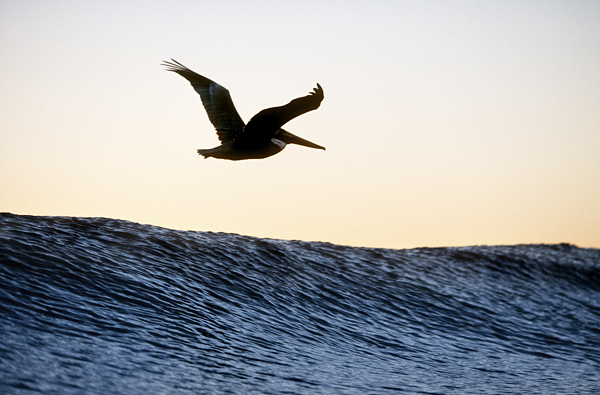
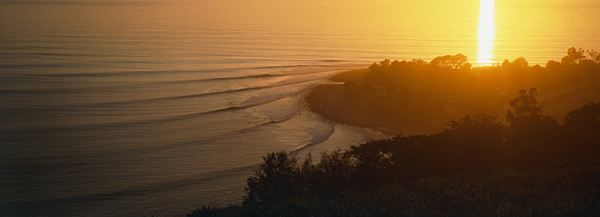
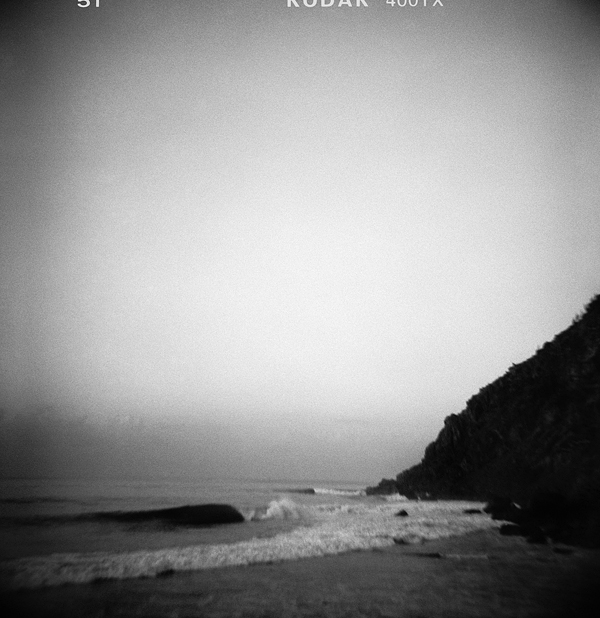
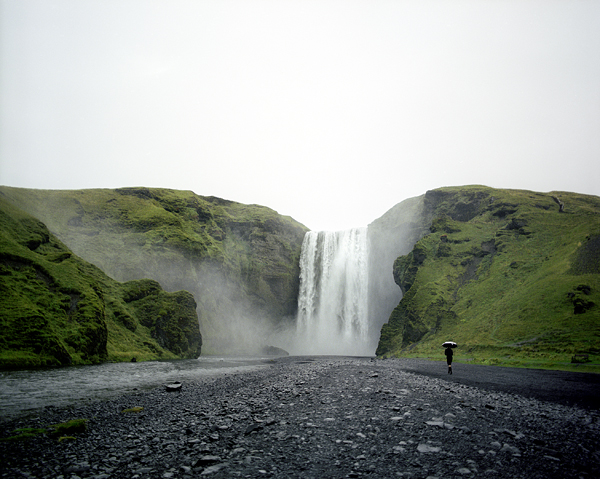
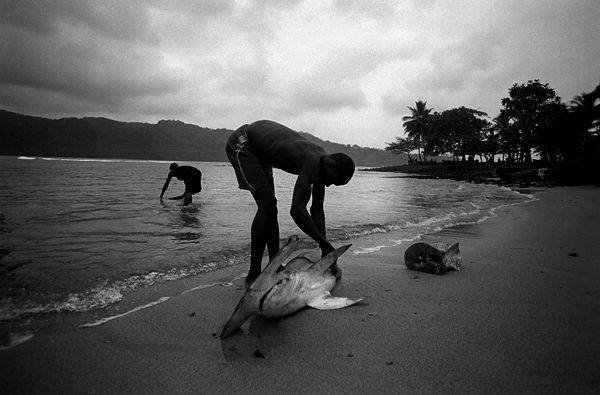
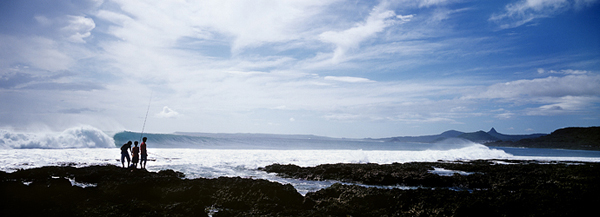
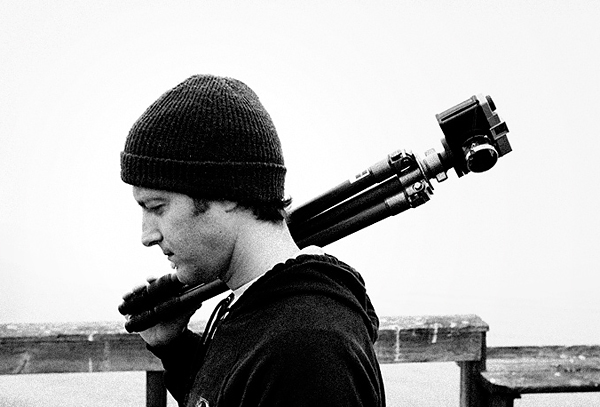
Steve Pezman Interview
Steve Pezman is a California surfer/publisher who is the creator of The Surfer’s Journal. Pezman has brought surfing to the level of scholarship and merit and is often quoted in films and publications. We spoke with Pezman about his life and philosophy.
Tell us a little bit about yourself.
I was born in 1941and I grew up in Los Angeles. My family lived in Los Feliz originally, and then later moved to Brentwood, above the city, in the Santa Monica mountain area. We eventually ended up in Long Beach in an area called Naples—a little community of canals. This introduced me to life at the ocean versus an annual trip to the beach every summer with the family.
I started off skin diving, in the mid 50s, in the Alamitos Bay area. Surfing was just starting to happen in ’56 or ’57. By 1957, I was beginning to surf at Ray Bay in Seal Beach and the Huntington Cliffs. The Huntington Pier beckoned but we were afraid to go there until we had “earned our bones”. Over the following years, I called the Seal Beach/Huntington zone home and began surfing Trestles in 1960, hit Mazatlan in 1961 and then Hawaii in ’62.
I lived on the North Shore when only a dozen or so surfers lived out there, so although that had been happening for five years, it still felt like we were pioneering. I rode Waimea, Sunset and Laniakea—had that foundational surfing experience. I ended up coming back, lifeguarding, doing other odd jobs, then shipping out as a civilian in the Merchant Marine (to Vietnam) in 1965 carrying a cargo of stale beer to the PX’s. When I came home, I was a partner in a silk screening business. Then we started the Good Earth Health Food Bar at George’s Surf Center in Huntington with some money I had inherited.
Later, I learned to shape surfboards. I shaped momentarily for several labels, including Weber, Hobie, and did longer stints with Vardeman and Chuck Dent. Next, a friend, Stu Herz , and I built an experimental shaping machine and started the first private label surfboard manufacturing business out of Goat Hill in Costa Mesa—making boards for shops in Texas and the East Coast. Later, we started our own label, Creative Designs Surfboards, first on P.C.H. in Newport Beach then smack-dab in Surf City, downtown Huntington, in ’68 and ‘69.
How did you get started in publishing?
Duke Boyd, who started Hang Ten, was also serving as managing editor at Petersen’s International Surfing magazine. He was helping publisher Dick Graham reposition his title as competition to Surfer. Duke was hip enough to merchandise the magazine around the Huntington Underground, which was flowing back and forth between there and the North Shore, at a time when Surfer was still a bit oblivious to what was going on. This was the latter 60s. He invited Stu and I to write surfboard articles and later brought me in as an assistant editor.
After Surfing folded six months later (the adverts stuck with Surfer), I went down to Surfer to see if I could freelance and they hired me as an inside editor. Six months later, I fell into the publisher’s job because John (Severson) had sold the magazine and was looking for someone to fill that chair. I stayed as publisher for about 20 years until 1992, when my wife Debbee (who had been marketing director at Surfer) and I left and started The Surfer’s Journal.
Tell us about your relationship to surfing.
Magazine-wise, I’ve been a student of the sport for over 40 years in the sense of observing it and thinking about it and writing about it, and being responsible for describing it to other surfers in an accurate way. When you pay attention to something for that long, you acquire a sense of its historical timeline and that gives you reference points with which to understand much more of it—to be able to examine it and have a relationship with it.
My life has been about articulating that relationship. I’ve been lucky to earn a living involved with something that I really care about deeply, which is better than welding bridges or something. (Laughs)
With The Surfer’s Journal, do you see yourself as the curator of the sport?
I am one of the curators. Fortunately, or unfortunately, when you print information, it has the tendency to be taken as the truth … and it seldom is the whole truth. That is a big responsibility—if you take it seriously—which I do. It’s also a rewarding creative process. It’s like being an art gallery owner who loves art and gets to install a new show every two months. Every issue is articulated through a matrix of hundreds of people who must join together just so to make this thing come out. It’s really a miracle that it gets done. You become the conductor of that ensemble and the results reflect the team. It’s like we put ourselves out there, standing naked before the world, and the readers give you thumbs up … or thumbs down. We get plenty of both.
Describe what surfing is for you.
At the time I was an accomplished surfer, I would ride maybe 25 to 35 waves or more in a go-out. At that time I was involved in the close-up detail of each ride. The longer I surfed and the older I got, the more basic it became; the relationship became simplified. I was satisfied with a less complicated ride and sought elegance versus busy action—trim versus lot of movement. You begin to see the bigger picture from a higher elevation. A deep takeoff with a pure, clean trim becomes very satisfying. At that point, the number of rides reduces. I would ride maybe three in a go-out instead of 35. However, the pleasure of the whole experience was just as large. It filled the same space that 35 rides had.
You begin to rise away from the detail clutter each year. I’m 68. I hate to think how many years I’ve been surfing. My god, it’s been over 50 years! As you start floating higher and higher above it, you view a broader swatch. You lose the little detail and see the big picture of it all. After a while, just sitting on your board in the lineup becomes joyous. You are immersed in the sensation and you appreciate the perspective it affords.
Tell us more.
There is something cosmic about surfing. Waves are nature’s mode of transferring energy from A to B. They occur in many forms: thought waves, heat waves, radio waves. Ocean waves happen to be something that we can see and then we actually learned to ride them, which in itself seems very improbable, so improbable that the surf culture was detached from the mainstream. Wave riding has always been an integral part of the Hawaiian culture, but in Western culture it was seen as such an anomaly, such an unusual sidebar, that it didn’t seem seriously worth doing.
When you go surfing amongst the many things you might do in a day, it makes the day feel good—somehow round and complete. That connection to the basic cosmic core of energy at the center of Life in the Universe somehow makes wave riding deeply satisfying. It is something that you can spend your time doing and it feels like a life well spent—a non-productive, non-depletive act that is purely aesthetic.
(Timothy) Leary was doing lectures at college campuses in the 70s that he called “Man, The Evolutionary Surfer”. Of course, that caught our attention at Surfer Magazine. We interviewed him and his point was that surfers weren’t the dregs of society. They were the throw-a-heads! Surfers understood that life was all about the aesthetic, not how many acorns you could store in a tree beyond what you needed to eat. Leary felt that the evolution of Man to his highest possible form would be towards a purely aesthetic state of being. Further, Leary believed that surfers were already traveling that path. Therefore, their role amongst mankind in general was to lead us (laughs) to a higher place (more laughter).
As spacey as that might seem to some folks, there is something within that idea that gives surfers a sense of justification about making time for surfing—and that being time well-spent. It’s all a rather verbose, bombastic statement, but I think there is something to it.
What can you tell us about the sensory aspects of surfing?
From a publishing standpoint, surfing itself is so sensory that when a surfer is familiar with the sensation of doing it, looking at a photograph will give him a percentage of that sensation by being mentally connected to it. It’s the basic foundation for the success of surf magazines—you’re providing pretty intense vicarious experiences to surfers who can relate to them.
I actually like myself as a surfer, and my sense of surfing aesthetic. However, I don’t like the way I am deteriorating because of old age. I can’t pop-up any more. (The common old-guy lament.) That destroys your choreography because it means you can’t take off where you want to; you take off where you have to (laughs).
It’s all about feeling trim across the green wall. That’s my dream image. Man yearns to fly. It’s the “Icarus Syndrome”. Surfing is as close to what I imagine swooping and gliding like a bird would be like. The wave is a liquid base. Everything about it is soft and fluid, so the ride itself is a fluid experience, a deeply gratifying flight. It touches something in your soul that makes you feel so good that when you glide out over the back of the wave after a ride, you are still flushed with the sensation, and you paddle out compelled to have another one … and another one … and another one.
The Surfer’s Journal, a publication by Steve Pezman can be found here.
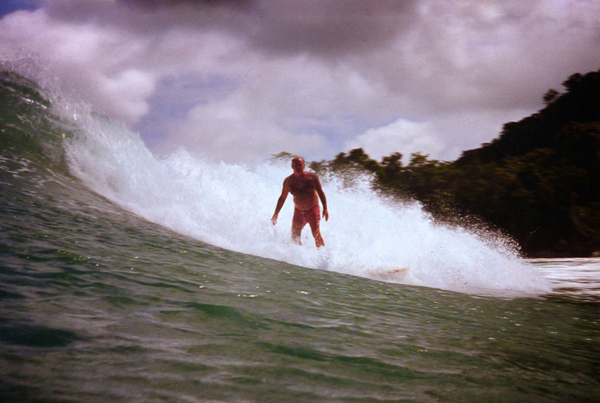
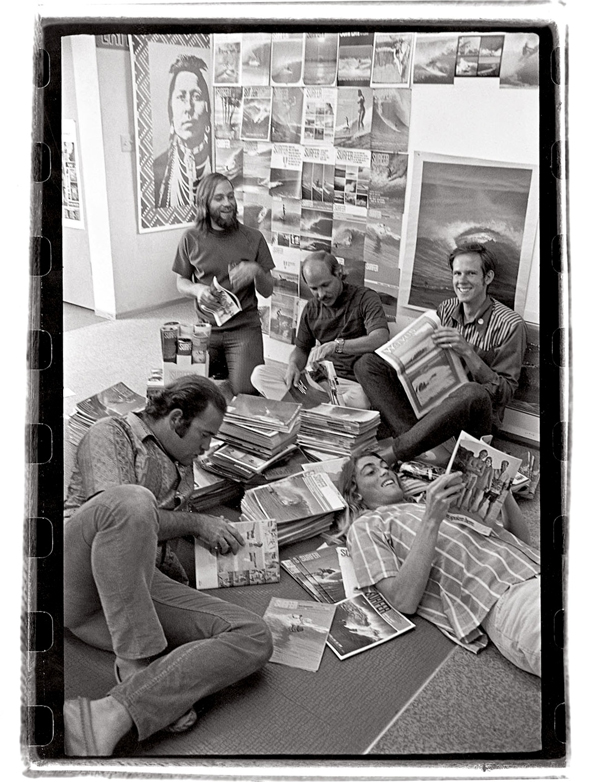
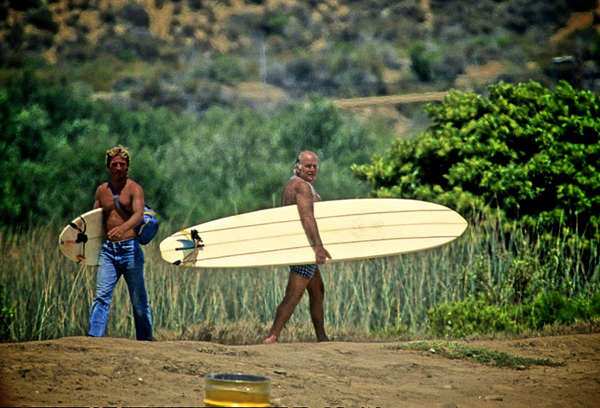
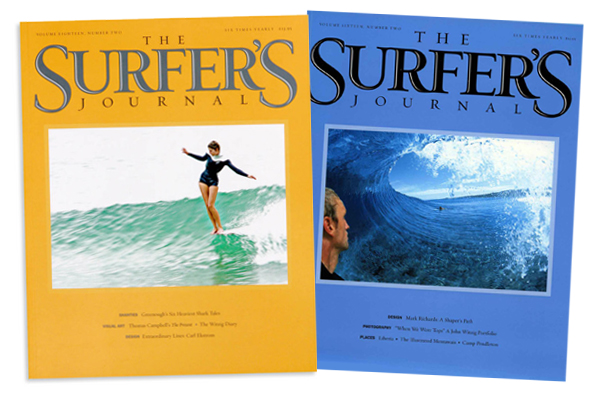
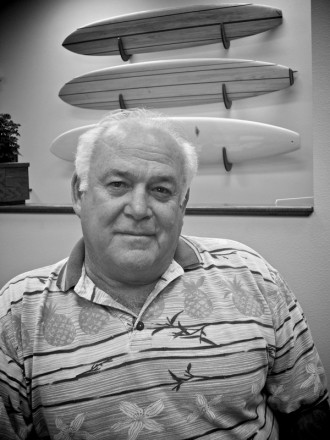
Erin Ashley Interview
By Mary Mills
Erin Ashley is a California surfer/musician/artist whose popular surf blog, Worm’s Town, is part journal and part soapbox. Her passion to help those in need is equaled only by her uncanny ability to ride the nose. We caught up with Erin to talk story.
What was your life like growing up?
I grew up in Long Beach like a child of the 80’s, where my brother, sister and I—two other sisters came later—could ride our bikes anywhere as long as we were home before the streetlights came on. In the summer, we went to 49er Camp (at Cal State Long Beach) and the Bay, where we would try and trap octopus in two liter bottles.
When did you get your first surfboard?
Around the year 2000.
What was the feeling you had when you first stood on a surfboard?
That it was awesome and I was so dreadful at it that I had to get better.
Who did you look up to and admire when you were a young girl?
In middle school, my sister and I started going to punk and ska shows around Orange County. I didn’t surf at all back then, so I looked up to people in bands (such as Suburban Rhythm, Das Klown, Link 80, Slow Gherkin, Pocket Lent and The Aquabats. It was all about having fun, getting your voice heard. It felt like a family of people who got what it was about. Efran Santana from Hepcat. When I first heard Out of Nowhere and the sax solos, it blew my mind. I never knew that ska could be so smooth, beautiful and radical. I’m sure it made everyone in my house so mad. I would just play that album repeatedly (at eleven) until I learned every horn line and solo.
Of all the places you have traveled to, what place in particular stands out and why?
Home. Of all the amazing places I have been, coming home is always my favorite. Nothing beats it.
Who/what inspires you?
Probably everything I surround myself with—from friends, family, literature, music, movies … all of it. I’m a hoarder when it comes to ideas, quotes and photos. That said, I try to model my surfing after Steve Prefontaine. The surfers who’ve inspired me the most are Matt Cuddihy and Levi Prarie.
What is the greatest thing you have learned in your life?
Try to be a little kinder. Stand as close to the edge as you can without going over—it’s a better view. “We are what we pretend to be, so we must be careful what we pretend to be.” (Kurt Vonnegut)
Do you have any regrets or wish you had done something differently?
Sure there are things that I wish I could go back and change, but as they say, “So it goes...”
What are you most proud of?
That I’m happy. I’m not the most successful or wealthy, but I like where I am right now.
Talk a little about your visits to New Orleans after Katrina.
New Orleans is one of the greatest places on earth. If it had a real beach and waves, I would move there. I felt at home when I was there, and think that was due to the people. I spent all my time gutting houses in St. Bernard Parish—areas right outside New Orleans and next to the Lower Ninth Ward. During our breaks, people would bring us drinks or barbecue for us. People who lost everything still went out of their way to show appreciation.
I was lucky enough to spend Christmas Eve there. We had collected heaps of toys, and another guy and I got to spend the day driving to FEMA trailers of people— delivering gifts for parents so their kids would have something to wake up to the next day. I honestly don’t think I’ve ever been thanked so much in my life or cried so much. It really showed me what the human spirit is all about—not giving up, people helping people and all that.
Tell us about GOGO13.
GOGO13 is the band I’m in. I’ve been with them for maybe ten years or so. Our genre could possibly be described as two-tone ska with mod and some other rubbish thrown in. It’s mostly whatever we like. The band consists of some of the most creative people I have ever met in my life and couldn’t be luckier to not only know but play with the guys.
I play mostly saxophone and I think there are a couple of songs we want trombone on, so I’m going to be playing that a bit more in the near future. In the past, we’ve played shows when friends or bands that we enjoy ask us to play. This summer, we’re going to put out an actual album and play a few of the West Coast dates of the (Vans) Warped Tour along with some other shows.
What is it about creating stencils (which you, in turn, use to create art) that you find so appealing?
That it’s not to create something for one to see, but for one to see something that already exists. It’s not about me, but what I’m showing. Take the human element out of things.
What meaning does surfing hold for you and how has it changed your life?
Friendship.
What brings you the most happiness in the world?
All of it. I love it all … even the part I hate.
Who are some of the people you feel are shaping the path for surfing today?
Photographers are what shape surfing. They are how we see surfing—outside of actually experiencing it. Honestly, I think that Kyle Lightner is helping to shape the path of longboarding. He may end up being a Craig Stecyk-type who is able to document the whole life and get shots because it is what he is. Also, loggers that are pushing the limits (like the Stopniks, JJ Wessels, Cody Simpkins, Jared Mell and so many others).
What is your favorite board? Your favorite surf spot?
Right now, my favorite board is a 9’6 Dano Los Creeper. It’s a double stepdeck and works insane. Dano really knows what he’s doing.
Blackies—it’s a crummy beach break, so I have to learn everything faster. There’s always someone there I like to surf with. And even if the waves aren’t great, there is always Seaside Donuts.
What’s your favorite meal?
Anything Italian… with Dr. Pepper.
What are you currently listening to on your iPod?
I lost the best iPod ever somewhere in Romania, and lost interest in them shortly after. In my car is Les Sexareenos, Alkaline Trio, Monster, Jay Z (The Blueprint 3), The Black Keys, The Cramps and I love seeing Thee Cormans live.
What causes/organizations do you support?
I’m a counselor at Poly North, which is a human relations camp where we take 10th graders from Long Beach Polytechnic High School and spend the weekend up in the mountains. We talk about things like values, violence, stereotypes and many other topics that aren’t really discussed in school, but are very important. Due to budget cuts, funding is gone for the program (that has been around since 1973). So, if anyone wants to donate to a great program, it’s tax deductible. Mailing Info: Polytechnic High School 1600 Atlantic Ave Long Beach, Ca. 90813 Attn: Rob Shock/ Poly North Director
What are you most grateful for?
All of it—all the people who put up with my unclever quips, Hurley, Captain Fin and Dano Surfboards for finding a spot where I fit in. Being lucky enough to find something that makes me incredibly happy. Living in a part of the world where I can do what I want. Oden for the shots!!!!
What’s next for Worm?
This summer, I’m going to New York to hook up with Justin Jay to surf and summer it up. Hopefully, I’ll get to go to some other rad places as well.
Find out more about Erin Ashley and Worm’s town at her blog here. Photography by Justin Jay ( 1, 3), Cam Oden (2, 4,) and JD Massey (5). All images are copyrighted and my not be used without permission.
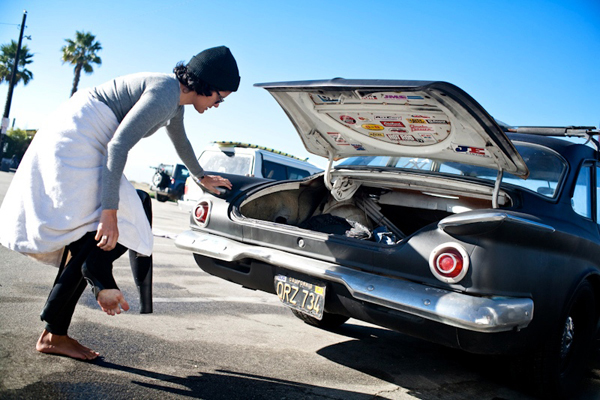
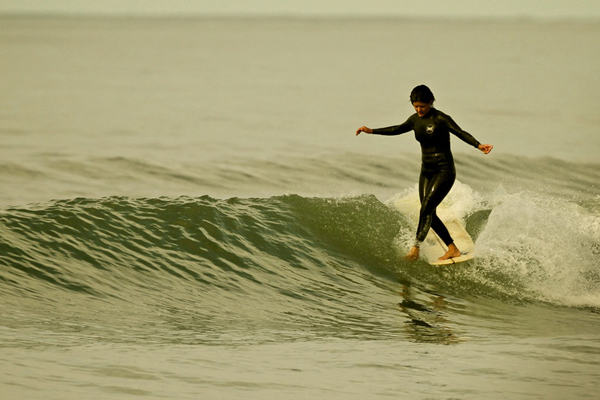
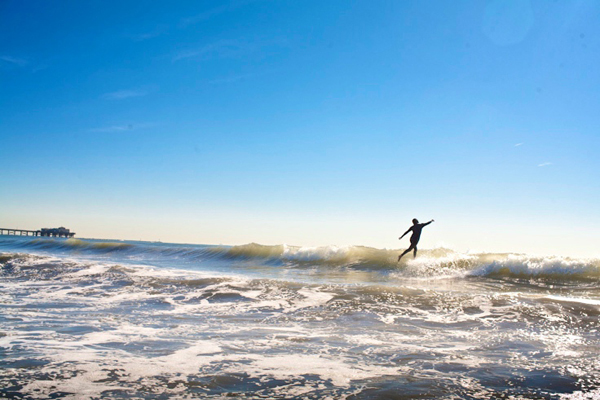
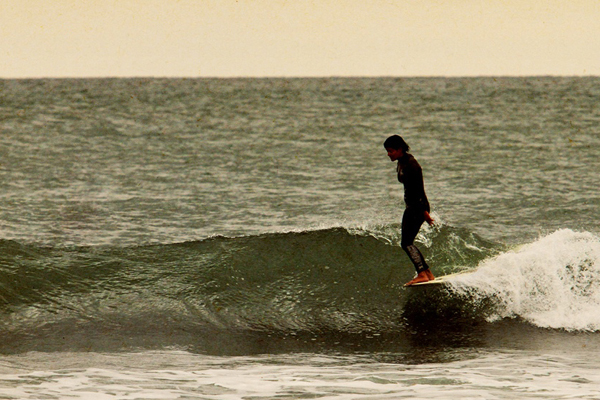
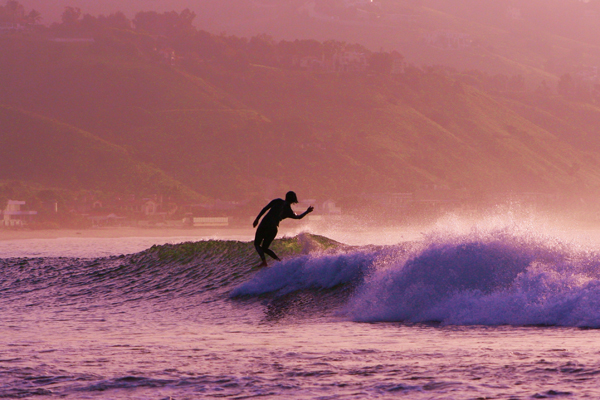
Tyler Warren Interview
Tyler Warren is a California surfer/artist who appears in the film “One California Day” and the soon to be released “The Tyler Warren Experiments.” A fine artist, his paintings and designs have been shown both locally and internationally. We spoke with Tyler to learn more about his life and inspirations.
What was your life like growing up?
Great. I grew up in Dana Point and San Juan. My childhood consisted of skateboarding, bike riding, the beach, boogie boards, junior lifeguards, snorkeling, boats, surfing and drawing. My parents always enjoyed the beach and ocean, so it led me to love it too.
When did you get your first surfboard?
I think I was 9 or 10. It was a Bruce Jones channel bottom twin fin from the late 70’s I still have it.
What was the feeling you had when you first stood up on a surfboard?
“Yes! This is awesome!”
Who did you look up to and admire when you were a young man?
My older friends that longboarded (down at Doho and San O), local style masters like Darren Eudaly, Robin Kegel, Cody Faircloth, John Husak, Oliver Parker, and Cody Simpkins. Then the guys in the videos: Joel Tudor, Matt Howard and Tom Curren. Artists like Rick Griffin, Andy Warhol, Thomas Campbell, Barry McGee, Alphonse Mucha, Kenton Nelson, M.C. Escher, Norman Rockwell.
Where did your interest in art come from?
Well, my parents always encouraged my drawing and creativity. My mom was interested in art in high school and college. Her brother—my uncle Kenton—is a successful oil painter and my great uncle was a famous Mexican muralist. I have enjoyed drawing since I was very young. I would draw lots of helicopters, planes, boats, knights and Indians.
Who/what inspires you?
Life, vintage illustration and the ocean.
What is the greatest thing you have learned in your life?
All your dreams come true if you put the work in.
What are you most proud of?
The life I am leading. I am doing exactly what I wanted to do when I was younger.
How did the idea for The Tyler Warren Experiments come about?
It all started with one session on my new Mandala quad. John Smart was stoked on my surfing and we kept shooting for the next couple years. The project has led us to Mexico, Australia and beyond—meeting lots of great people along the way. The movie is going to focus on shapers, board design, a wide variety of surfers, art and having fun. Mark Jeremias (maker of One California Day) is teaming up on The Experiments, so its all a matter of time and some more good swells.
Of all the places you have traveled to, what place in particular stands out and why?
It is to hard to pick one place. Each country is so special and offers so much diversity. My travels have taken me to Australia, New Zealand, Bali, Hawaii, Puerto Rico, Belize, Japan, Canada, Mexico, Costa Rica and Nicaragua.
What meaning does surfing hold for you and how has it changed your life?
Surfing is my escape and love. I have met so many great people through surfing and been able to travel the world.
What brings you the most happiness in the world?
A perfectly-shaped wave with no one around. (Laughs) Or just an uncrowded wave, my girlfriend, family, completing a job and creating.
Who are some of the people you feel are shaping the path for surfing today?
Richard Kenvin, Ryan Burch, Lucas Dirske, Justin Adams, Ryan Thomas, Nathan Adams, Andy Nieblas, Christian Wach, Alex Kopps and Alex Knost,
What is your current favorite board? Your favorite surf spot?
A 4’10″ twin fin inspired by all my favorite shapers: Bob Simmons, Malcolm Campbell, Terry Martin, Manuel Caro, Greg Liddle, George Greenough, Steve Lis and Skip Frye.
I enjoy surfing the Trestles area.
What’s your favorite meal?
A burrito or a good sandwich—anything with avocado.
What are you currently listening to on your iPod?
Woodie Guthrie, Bob Dylan, Arcade Fire, Benny Goodman, Iron and Wine, Bob Marley, Modest Mouse, The Cure, Hank Williams, Talking Heads, Radiohead, Kings of Convenience, Bridgette Bardot and many more.
What are you most grateful for?
My family, girlfriend, friends, my art and surfing.
What’s next for Tyler Warren?
Off to Costa Rica to surf and shoot with Chris Klopf. Then going to New York with Von Zipper to launch their new clear lens line. I did the art for their new ad campaign. I have been working on a film with John Smart and Mark Jeremias for the past three years titled The Tyler Warren Experiments. I am going to continue doing art, designing, shaping, surfing and traveling.
Find out more about Tyler Warren at his blog here. Learn about John Smart’s new film “The Tyler Warren Experiments” here. Photograph number two provided by Cam Oden.
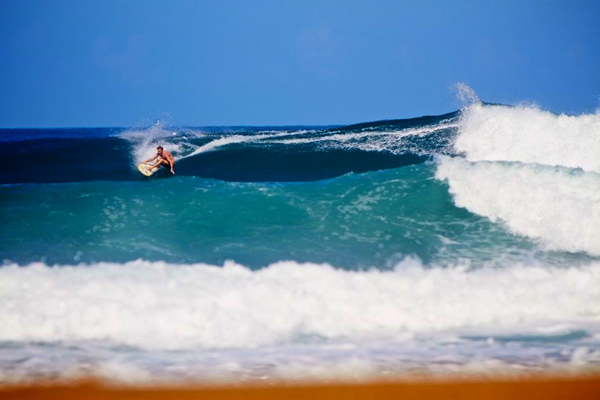
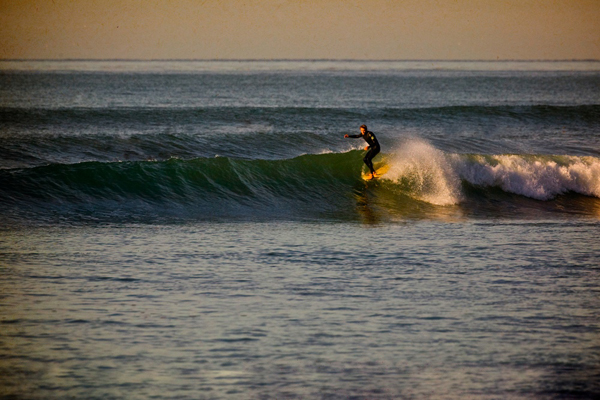
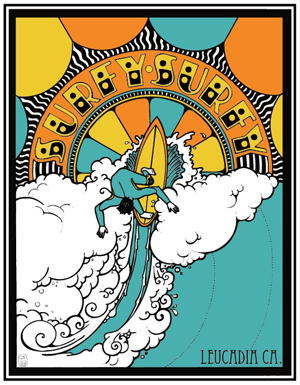

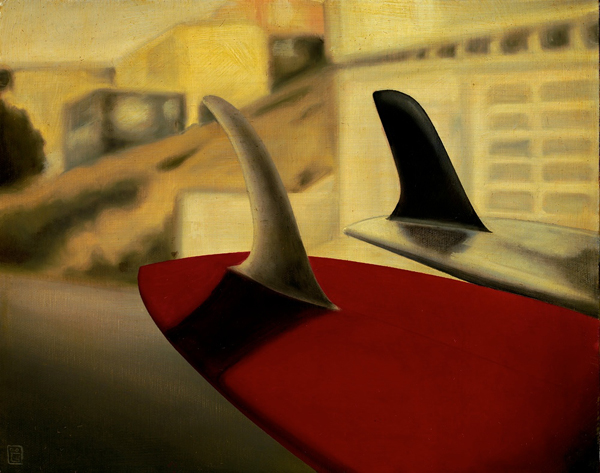
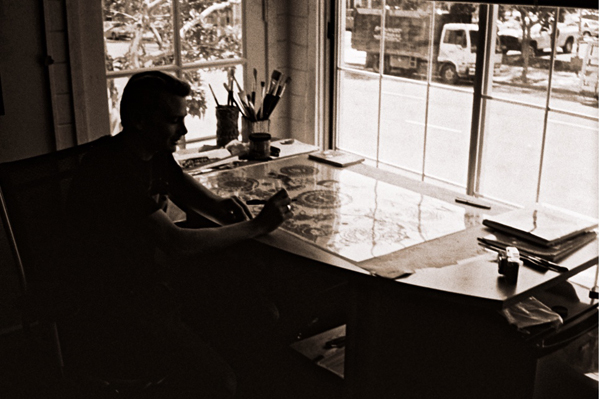
Sidão Tenucci Interview
Sidão Tenucci Jr is a surfer/writer and founder of Brazil’s OP brand. He is also the creator of O Surfista Peregrino (The Surfing Pilgrim) and poetry with Almaquática (Water Soul – together with photographer Klaus Mitteldorf and designer David Carson). We recently caught up with him to find out more.
What was your life like growing up?
We played soccer on the streets when we still had dirt roads in São Paulo. I used to bodysurf on the big stormy swells when I was 11 to 13 years old. A year later I started surfing in Guarujá (coast city in the state of São Paulo). I used to horseride a lot with my friends at a ranch that belonged to my father.
When did you get your first surfboard?
I was about 13. It was an Induma, a brand that didn’t really go too far.
What was the feeling you had when you first stood on a surfboard?
Magical, like it is for everyone I guess. My young teenager perception was that I had found at least one real meaning for life.
Who did you look up to and admire when you were a young man?
I used to read a lot. I enjoyed writers like Dostoyevsky, Herman Hesse and Gabriel Garcia Marquez. I’m a big fan of the bands that truly revolutionized music on the seventies with quality, innovation and personality, like Yes, Genesis, Jethro Tull, The Beatles, Emerson Lake & Palmer and Pink Floyd. I also enjoy the eternal Brazilian icons like Chico Buarque, Tom Jobim and Caetano Veloso. Ghandi, Jesus and Buda are also figures that always come to my mind.
What do you try to transmit in your literature?
I try to transmit what I feel with the least possible intellectual interference. There is a level of interaction with ones inner self that is really an eternal search. The task to express these layers which are not detectable by the ordinary mind that belongs to music, poetry and this spontaneous narrative that can let us have access to our deepest emotions.
Of all the places you have traveled to, what place in particular stands out and why?
I can’t say only one.
Sri Lanka was surreal with wild elephants strolling on a desert beach as I was surfing in the other side of the island, in Arugan bay in the village of Ulé. I ended up there in an unexpected way. Once again, getting off the beaten track created some major spiritual interest. Bali was the largest confluence between an exceptionally rich culture and a diversity of perfect waves that I have ever encountered. Hawaii during the seventies, it was still exotic and to surf there was like being in another planet that almost no one had ever heard about. The north coast of São Paulo in the late sixties and early seventies, when the exploration of the unknown was really strong, in a place that nowadays seems really near to the big city. But in those days it was like another galaxy we discovered.
At the end of the day, the magic of discovery is always the necessary element of enlightenment that opens the young (and old) souls, still today (laughs).
Who/what inspires you?
Everything. It’s random. It can be anything, really. From a leaf falling from a tree to a feminine figure that suggests, but not actually reveals its mysteries. A breeze that comes out of nowhere and gently combs the crest of a swell that has arrived just before dawn.
What is the greatest thing you have learned in your life?
I’ll just mention a few examples. They were things that I learned over the years and that I obviously still keep learning because they hardly ever incorporate themselves in a permanent fashion.
That a second is all that exists. That the love you give lasts forever. That surfing is a divine vehicle for the development of the conscience. That humbleness is taught to us along our lives in both a soft or aggressive way. It is a contradictory learnt gift. That the ego has got its essential value, but its not what really who we are. If we learn to look at it from the outside we will have given a gigantic step towards the truth of what we really are.
What are you most proud of?
To be able to keep evolving, learning and having the ability to refine my perception to the point I could visualize new worlds without leaving my house.
What meaning does surfing hold for you and how has it changed your life?
I would add courage in the sense of penetrating fear and reaching to the other side. I’m also working on my internal pleasure in a way that I can gain more and more integrity.
What brings you the most happiness in the world?
Everything. It all relies on myself, and not other people and things.
Who are some of the people you feel are shaping the path for surfing today?
It might look contradictory for someone that owns a surfwear brand like OP, but it is all those individuals not involved in contests and promotion linked to surf products. And all exterior activity that is not attached to the simple and pure act of gliding over the waves.
What is your quiver at the moment?
A couple of 9’2 longboards and a 6’2 fish model (still to be delivered).
What’s your favorite meal?
Brown rice, black beans, shrimps in garlic, boiled zucchini, rocket salad, cauliflower, lettuce, broccolis, a good wine and a good companion. Oh, and chocolate for dessert.
What are you currently listening to on your iPod?
Bach and all the bands I’ve mentioned previously. Also timeless instrumental music like Cecilio & Kapono – a Hawaiian band that makes me travel through time, Astor Piazzola, MPB (Brazilian Popular Music) and Chet Baker.
What are you most grateful for?
Everything.
You directly helped constructing the surfwear industry in Brazil in the late seventies. How do you see the evolution of the surfing culture in this country? Does it have a true identity?
It has been swallowed by commercial excess, most of it becoming pasteurized and with little identity at all.
What’s next for Sidney Tenucci?
I have many books yet to publish, some trips to be done and many people still to meet. The recovery of OP has been full of pleasures but deep inside I really don’t want to know what’s going to happen. It would spoil the surprise.
Top photo by Paulo Vainer. All other photos provided courtesy of Mr. Tenucci. OP Brazil can be found here: www.op.com.br. Check out the Portuguese version on Surf & Cult.
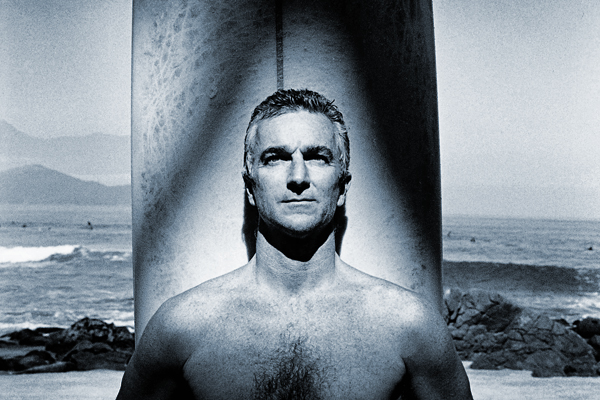
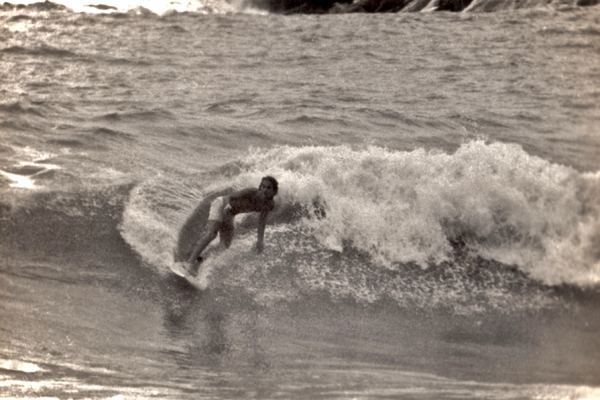

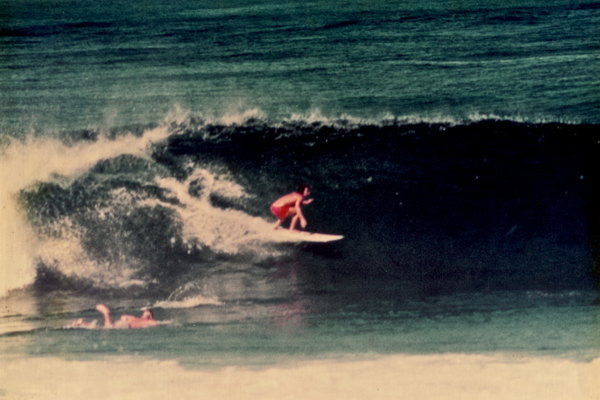
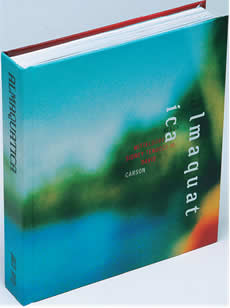
Mitch Abshere Interview
By Mary Mills
Mitch Abshere is a California surfer who is the owner of Captain Helm surf shop, the Captain Fin Co., and the wetsuit company Sea Vessel. Determined to do things differently, Mitch blazes new trails and keeps surfing real. We caught up with Mitch and asked a few questions.
What was your life like growing up?
I had a great life growing up (in San Diego and Orange County). My parents were super supportive of me surfing. We lived about 30 minutes from the beach when I was age 10 to 14. They drove me to the beach about three to four times a week. My friends and I would get dropped off at about seven in morning and get picked up at dark—so all day shredding. It was a great time to just hang at the beach and surf.
When did you get your first surfboard?
I got my first board when I was 10. My boogie board got stolen at T Street … thank you, whoever stole it! That’s when I decided to try and surf. I never went back.
What was the feeling you had when you first stood on a surfboard?
Little hard to remember, but I know that I wanted to quit all sports and just surf. Nothing else mattered.
Who did you look up to and admire when you were a young man?
Well, when I first started there weren’t many longboarders at all. No kids rode them. Almost all my friends rode shortboards. So I was the Lone Ranger for sure. So really, older guys (which was cool because I got to learn my history). Main guys were Herbie Fletcher, Skip Frye, Donald Takayama. Herbie and Donald were my biggest. Herbie is probably one of the guys that helped keep longboarding alive. He was only guy who would put longboarders in videos and one of the only guys who would get a shot in the magazines. I don’t think he gets enough credit for what he has done.
Of all the places you have traveled to, what place in particular stands out and why?
Montauk, New York. Joel Tudor and I went there back in the mid– 90’s. The place was awesome. Super fun waves. The town had one light and was just very private. Been to a ton of others, but this just grabbed me.
Who/what inspires you?
My wife and kids are a huge inspiration. Jesus Christ. A lot of the younger guys these days—Al Knost and Robbie Kegal. Fun to watch them and their creations.
What is the greatest thing you have learned in your life?
Being with my wife and kids is the best. Everything else comes and goes.
Do you have any regrets or wish you had done something differently?
Could have been a lot nicer to people. When you’re young and living on your own, you can get into a lot of trouble.
What are you most proud of?
Being married for almost 10 years now and having two kids. Never thought I would have made it this far. Also, being sober.
With the economy the way it is and the surf industry hurting in terms of sales, what possessed you to open a surf shop now?
Funny you ask this question. Almost every person I know asked it and most of the people that come in the shop. I have wanted to open one for about 10 years. I’m trying not to fear the economy. I’ve lived my whole life doing things backwards. Why stop now? I love it—way more of a challenge. It keeps me thinking of how to get people in the shop. So when we make it through this time, I will have some good stories.
How does your shop differ from other surf shops?
Well, it’s not your typical surf shop. We sell a lot of vintage clothes along with new stuff. Kind of mixed some of my favorite stuff in one store. We have clothes, boards wetsuits, motorcycle stuff, records, etc. My plan is still for something bigger, but this is what we have for now.
What meaning does surfing hold for you and how has it changed your life?
Well, “meaning”? I don’t know, but I love surfing and enjoy it more than I ever have. Being a part of surfing is what I do for living. I have met some of the most interesting people and some of my best friends have come through it. Great adventure.
What brings you the most happiness in the world?
Well I’m a Christian and have been for over 12 years. So the fact that I know Christ, and my family, brings me the most happiness.
Who are some of the people you feel are shaping the path for surfing today?
Al Knost and Dane Reynolds. My feeling is their type of creativity will help keep surfing alive and inspire the younger generation to be who you want to be.
What is your favorite board? Your favorite surf spot?
I have a Takayama noserider that is super fun and just got a Christenson double step deck that works amazing.
I love The Ranch; any spot up there will do me just fine.
What’s your favorite meal?
Fish Joint in Oceanside. They have the best sushi!!
What are you currently listening to on your iPod?
The Drowing Men, No Bunny, Half Rats and Mark Mathis.
What causes/organizations do you support?
Keep-A-Breast Foundation is awesome. My friend Shaney Jo (Darden) runs it. They are some of the most committed people I have met.
Tell me what one word you would use to describe yourself.
Different.
What are you most grateful for?
I’m grateful to be alive. There have been many times in my life that I should have died. I love waking up to my wife and kids, being able to surf and be a part of surfing .… I’ve been privileged to travel around the world and meet so many cool people.
What’s next for Mitch Abshere?
Right now, I’m working hard on Captain Fin. We are trying to put out some wetsuits next year. Also working on a new film. So, I hope all goes well.
Learn more about Mitch Abshere here. Photography by Kyle Lightner.
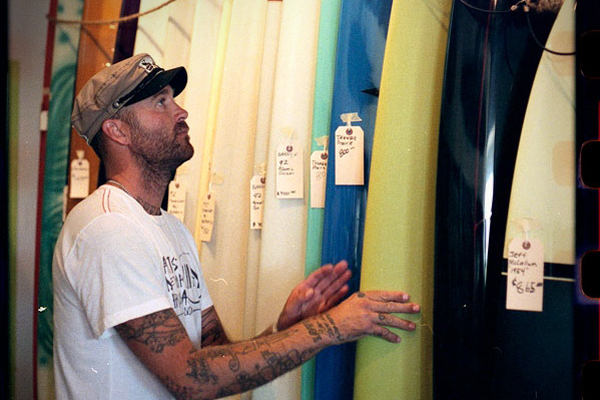
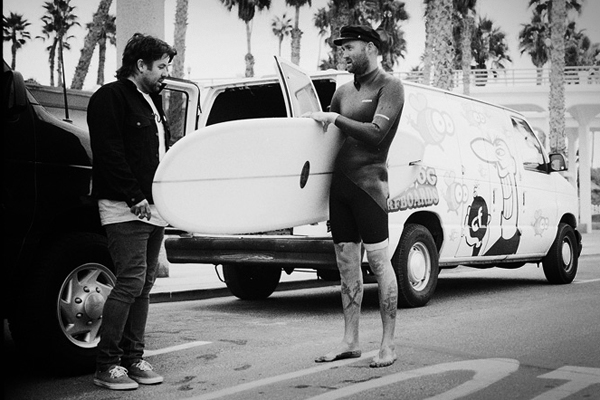

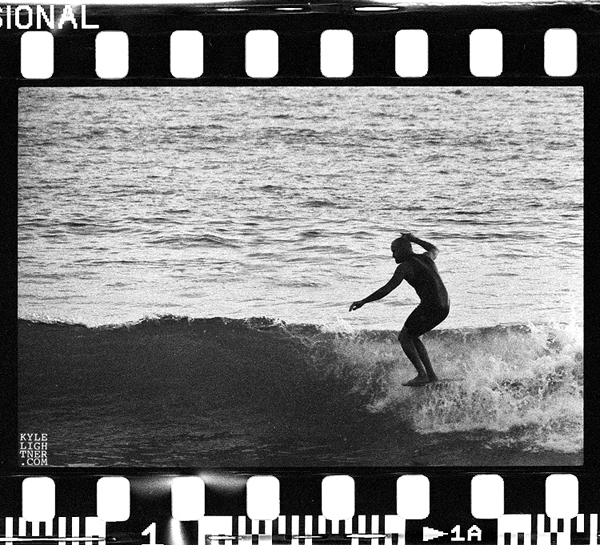
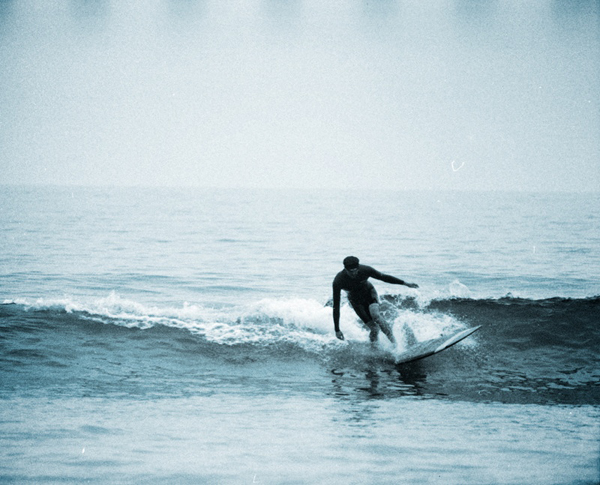
Ashley Lloyd Interview
Ashley Lloyd is a California surfer/shaper /musician who was recently featured in Tiffany Campbell’s film, “Dear & Yonder.” She is equally talented and skillful with a board, planer, or guitar. We caught up with Ashley to find out more.
What was life like growing up?
Looking back, I had a pretty magical childhood. I attribute much of my love for the beach to my mother, Elaine, who thought that the beach was the perfect playground for kids. Even though I was born inland—the San Fernando Valley!—my mother loved the beach. Since I was six days old, she began taking me down to her favorite spot—Paradise Cove in Malibu. This is where I learned how to make castles in the sand, skirts out of seaweed, hats out of lobster tails, where I collected rocks with stripes and holes to bring to my mom, where I followed my older brother, Tim, into the ocean and, eventually, where I learned to paddle on a surfboard.
When we got well into surfing, we started heading to Malibu Point. As soon as we were old enough, in the summertime our mom would drop us off at Malibu before she began her work day and picked us up after her day was done. I distinctly remember her famous whistle that would call us out of the water.
My dad worked a lot as a fine artist in the matte room department at Disney Studios in Burbank. I loved it when my dad would bring his work home, and I’d watch him create paintings that would replace the blue screen in the next Disney film.
As soon as I was old enough to drive, and had enough gas in the tank, I was headed to the beach. I was pretty obsessed with surfing when I was growing up.
Who did you look up to and admire when you were a young girl?
Tim, the Hannamans (family friends), our neighbor Heather Salzer, the lifeguards at Paradise Cove, my folks, Josh Farberow, Dane Peterson, Danny Terampi, Carla Rowland, Brittany Leonard, Pinoi Makalena, Maka Pua, Diane Sanders, Cori Schumacher, my peers at the ‘Bu and beyond. I admire a lot of people and am sure I’m leaving some good ones out.
When did you get your first surfboard?
I was about seven or nine or something.
What was the feeling you had when you first stood on a surfboard?
Ecstatic—I still remember it. I was on a Zuma Jay twin fin on the inside of Third Point, Malibu.
Where did your interest in shaping come from?
From surfing, I guess. I always thought it would be cool to shape a surfboard, but didn’t necessarily realize that it was a possibility for me to be a shaper. My silver-haired, kind-spirited and solemn surfing pal from Malibu, Danny Tarampi, one day asked me if I’d be interested in learning the art of shaping. “Yes, I would.” So he introduced it to me.
When I lived in Santa Barbara, I had a group of friends that lived at this underground place in between the 101 Freeway and the Milpas on-ramp called “The Wilderness”. The place is now gone and replaced with another lane on the freeway, but my memories remain. I was fortunate enough to be allowed to use the shaping room that was there. While I was learning how to mow foam, I could hear the sounds of skateboard wheels racing around like the structure of a molecule in the pool they had built in the backyard to skate in. The men who lived there also knew a lot about making a surfboard and would occasionally pop their heads in give me short bits of advice.
It took me forever to make my first board, but after I had shaped it, I knew that I wanted to stick with it. I somehow convinced my mom to let me build a shaping room off the side of her house, which wasn’t too far away. I learned how to shape and glass, make mistakes and learned how to fix them. It was all very interesting to me.
What is your process when creating a new board design?
I like to think of what the purpose for the board is, where it will be ridden, who will be riding it and in what kind of conditions. Then, I put it all together with templates and thought and heart and things.
Of all the places you have traveled to, what place in particular stands out? And why?
Most recently, I was in New Zealand. I was there for four months with the love of my life, Alex. He was in NZ to do research and begin a documentary he’s making on the Merino wool industry. This brought us to some amazing parts of the country. Patagonia was kind enough to gift us with their4R wetsuits to help keep us warm throughout our travels. Their winter waters were surely the coldest that I had ever felt (or would have felt if I wasn’t wearing gloves, hood and booties). We found a lot of uncrowded waves and kind-hearted Kiwis. We lived simply—limited to what fit comfortably in the van we were living in along with our surfboards and guitars all inside.
When we weren’t camping on remote beaches, we visited with great friends, including “the Kings of New Zealand.” Chris King had a library of information right up our alley, consisting of blues music history and every classic surf-oriented read you could think of. I learned more about California surf history while I was at the Kings’ house in North Corremandel Peninsula than growing up surfing Malibu!
It was a great trip.
What is it that makes you such a nice person? What code do you live by?
Oh, golly … thanks for calling me nice. I’ve been truly blessed in my life. I’m not always nice—and I’ve had my share of hardships and challenges—but if there was a code that I try to live by, it would be “put love first before all things”. The intentions that you put out seem to be what return to you in this world.
When I’m a turd, I don’t feel good about it. You might as well give your best to situations that come, because that’s all anyone can ask for—to do your best. So, do your best to be nice.
What inspires you?
Joy, enthusiasm, art. There’s inspiration in anything if you look for it … even crummy things.
Who do you admire?
Zeuf and Frosty Hesson—I am fortunate enough to live next door to these amazing people who are wise and loving. They are my family. Alex Thompson—he’s my heart’s joy. Jesus. Gandhi. Duke Ellington. Norah Jones. Bob Dylan. Martha Benedict. Chris Thompson. People with strength and compassion. People that are true to their hearts. People who are willing to learn.
What is the greatest thing you have learned in your life?
We are no greater than anything because we are all part of each other.
Do you have any regrets or wish you had done something differently?
Yep, immediately after awful happens, you regret and wish it hadn’t happened, that you would have handled something differently. But then you wouldn’t have learned what you did from it, and be built into the person you are. So in hindsight, no. No regrets.
What are you most proud of?
We had some friends visiting and I got to jam music with their seven year old boy and nine year old girl the other night. I think they liked it, and I was proud to have some instruments for them to play. The next day, we walked down to the beach and got to explore a bit. It was cool to watch them light up with excitement. I was honored to be a part of that.
What meaning does surfing hold for you and how has it changed your life?
I don’t know that I can say that surfing has changed my life because I have almost always known it … or at least since my ego has developed. At one point, I felt that my world relied on surfing; it felt like the most important thing to me because it was my sanctuary, my place of letting go or focusing, making friends, being immersed in nature. Surfing has been there for me as my life changes.
What brings you the most happiness in the world?
Happiness itself. It’s in everything. I seem to be most happy when I’m laughing with Alex.
Who are some of the people you feel are shaping the path for surfing today?
There are so many good surfers out there, aren’t there? People keep going back further and bringing the good stuff that works back—or even equipment that didn’t work all that great—and figuring out how to make it better.
What is currently your favorite board?
This custom board I made for Zeuf. I keep stealing it from her, so I guess I should make myself one. It’s a 9’5″ square tail with wide point further back. It’s yummy.
Your favorite surf spot?
Can’t tell you … not because it’s a secret or something; I love so many waves for different reasons.
What’s your favorite meal?
Sourdough toast with coconut oil along with a salad with lots of goodies in it. That’s my go-to favorite meal right now.
Tell us about your music.
I love to write songs, play and sing. I have an album out called the Serenata Road Recordings that is available on iTunes. One of my bands’ names is “The Ashley Lloyd Situation”. We play mostly songs that I wrote.
I’m really stoked on my other band that has been developing called The Herd of Turtles. We haven’t actually played a gig yet, but we’ve been making some fun noise.
What causes/ projects/ organizations do you support?
Being conscious and thinking that our actions as an individual and a society have an impact on the world.
Try not to use unnecessary plastics, take care of this environment so that it can continue to take care of you, don’t shop at Walmart, love your neighbor, don’t abuse things, take up smiling as a hobby, recycle, don’t dump your kitty litter into the ocean because it makes otters go mental, support education, quit smoking, spend quality time with the people, get exercise, take time to meditate, buy art, use your talents, read, don’t always trust Fox News, do the right thing for the well-being of this planet.
http://www.algalita.org/
http://www.keep-a-breast.org/
What are you most grateful for?
All of the wonderful people that have come into my life. I’m grateful to feel gratefulness.
What’s next for Ashley Lloyd?
Record a new album with Alex Thompson. Write more songs. Shape more boards. Appreciate surfing. Have a good attitude. Spread joy.
Find out more about Ashley Lloyd here. Photos 1, 3, + 7 by Jeremiah Kille, Photos 2 + 6, Nikky Brooks. Photo 5 by Maria Cerda.
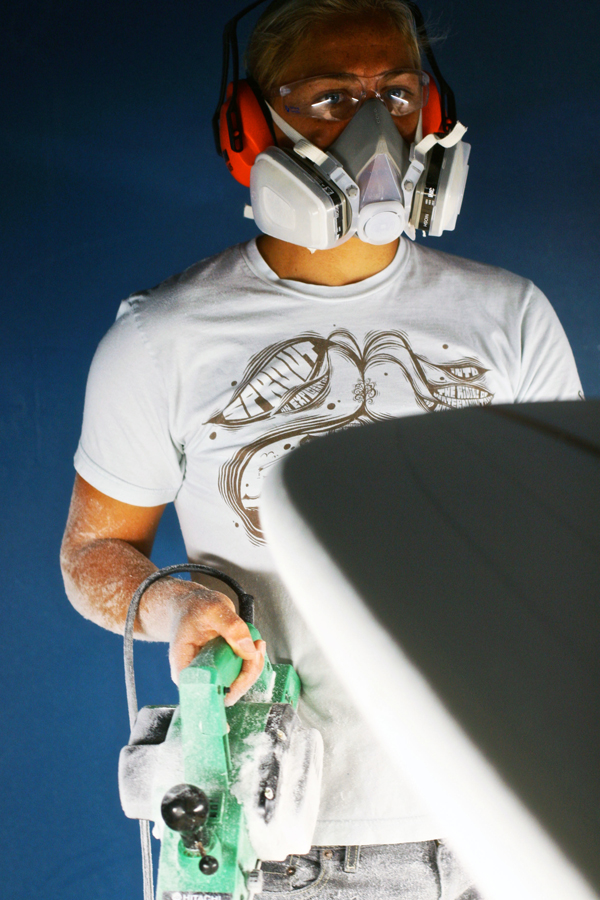
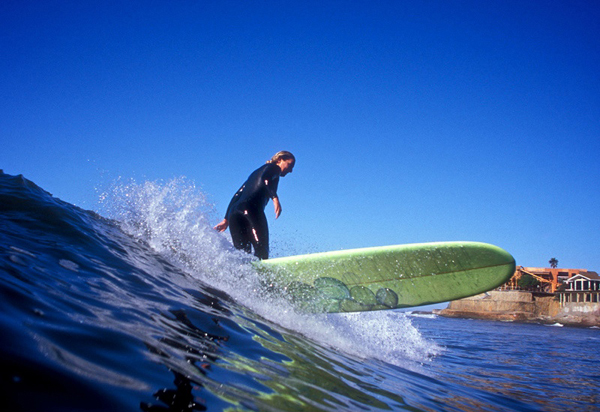
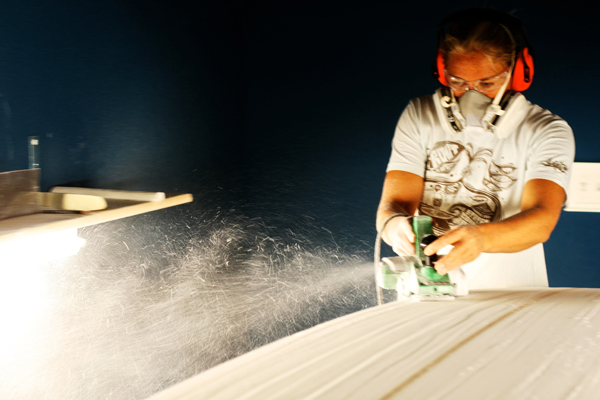
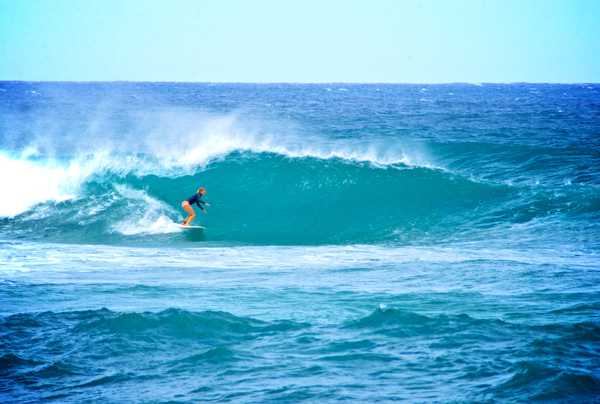
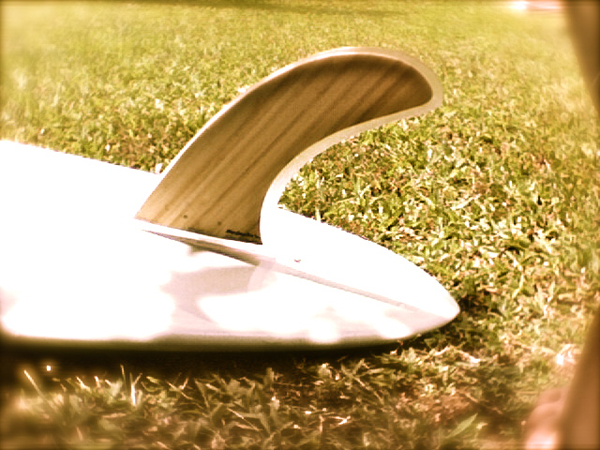
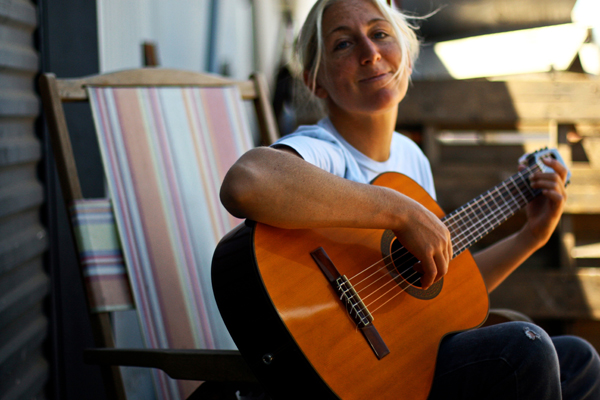
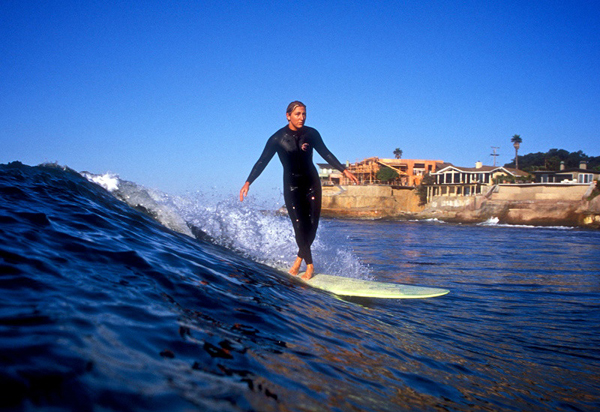

Ryan Tatar Interview
Ryan Tatar is a California surfer/photographer who is also the creator of the popular blog, Shakas and Singlefins. His beautiful, retro-style photography has become his own unique trademark. We spoke with Ryan to find out more.
What was the feeling you had when you first stood on a surfboard?
I felt stoke for the pure fun of it—but also somehow a strange new closeness to the planet by harnessing that natural power of a wave.
What kind of equipment do you use when taking photographs?
I shot a lot of digital images back in California because it was convenient, easy and affordable. After a trip to Japan in June for the Greenroom Festival, I was looking at all of my photos and a friend’s (artist Yusuke Hanai), and I couldn’t believe the mood and soul he managed to capture on a single roll of film in an old Canon FTb. I was immediately convinced that film was a better medium in the story I was trying to tell. I’ve managed to acquire a small and humble collection of great inexpensive, but mechanically sound, vintage cameras and have been working exclusively with film on these old relics. Those cameras, along with an old blue thrift store suitcase full of expired slide films, have been my latest trip.
What do you look for when shooting images?
That usually changes as I believe my tastes change as I am inspired by what’s around me. For the most part though, I’ve always searched for something interesting without a lot of distractions around the subject.
For example, sometimes I see the perfect subject but it’s just not the right backdrop. Let’s say it’s a rusted out International Scout with a shiny new swallowtail sticking out. If its parked in the dirt parking lot at San Onofre, I will feel inspired. If it’s parked next to a BMW at Ross Dress for Less in a strip mall, then the moment just doesn’t speak to me. That’s not to say there aren’t interesting things in unexpected places—it’s just that for me the whole situation should have some authenticity when you are creating a photograph.
Of all the places you have traveled to, what place in particular stands out and why?
I’m sure a lot of surfers would say this or that wave or culture they came across upon their travels—and it’s hard to pick one place because I think they all stand out in one way or another. That being said, I thought it was pretty cool to see Tikal in Guatemala. We got there after the “park,” if you would call it that, was closed. We still managed to get in and had the place to ourselves. It was a magical moment, being in an ancient, powerful and forgotten city with the sun falling below the canopy in a strange land with the only soul around being my lady and a guy we paid to sneak us in.
Who/what inspires you?
Vinyl records, old well-kept cameras, my parents, rootsy watering holes off the beaten path, divey Mexican restaurants, my girlfriend Joanie, countless films, artists, and photographers, rusty surf rigs, the ocean, large strange foreign cities, small American towns, the open road (not the interstate), local farms, mom and pop stores and old crusty sailors.
What is currently your favorite board?
I’m currently loving a 9’6″ Michel Junod 60s-inspired log. And I’m just getting used to a pretty rad board my friend Josh Hall shaped for me—a 7’11″ long fish Simmons.
What’s your favorite meal?
California burritos at Roberto’s or Ponce’s in San Diego or some home cooking!
What are you currently listening to on your iPod?
Music is a big part of my life. I find it very relevant and important as frequently a voice of dissent or just a sign of the times. Right now, I’m listening to the Black Keys, Radiohead, Zeppelin, Vetiver, the Mattson 2, Real Estate, Grizzly Bear, the Drums, the Photographic, the Kooks, some stuff on Ubiquity records, the Avett Brothers, Animal Collective, and the Mumlers.
What causes/organizations do you support?
The Surfrider Foundation. Clean beaches and open access for all is such a great thing. Jim Moriarty is doing a great job over there with his organization.
What’s next for Ryan Tatar?
I’ve got a big piece coming out in the current issue of Slide, and am working on some similar stuff for a few other magazines. Also, I’m doing a slideshow at the Annenberg Center of Photography in Los Angeles in February. In concurrence, I’m planning a trip to California to shoot some film and surf my old spots in So Cal. Until then, I’ll be surfing and documenting an underground Cape Fear surf scene out in southeastern North Carolina where I now call home.
Find out more about Ryan Tatar and his photography here.

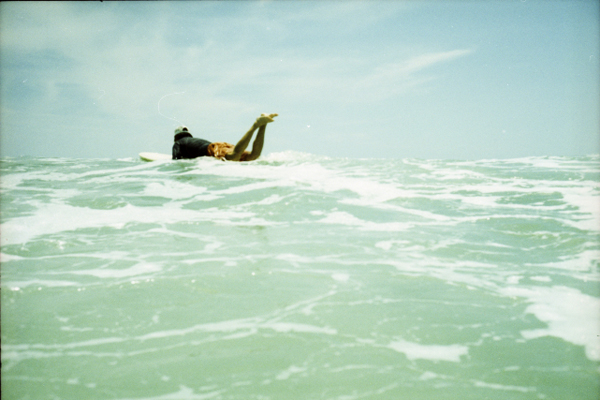
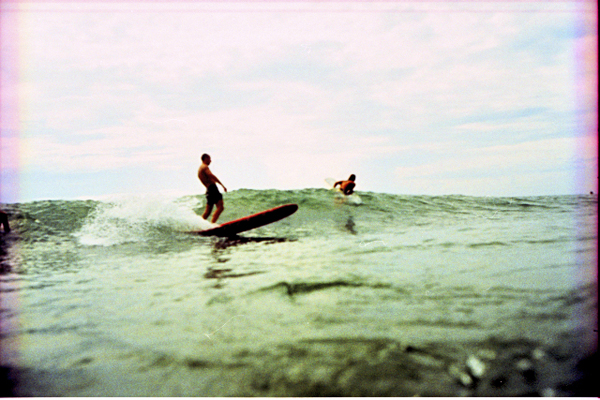

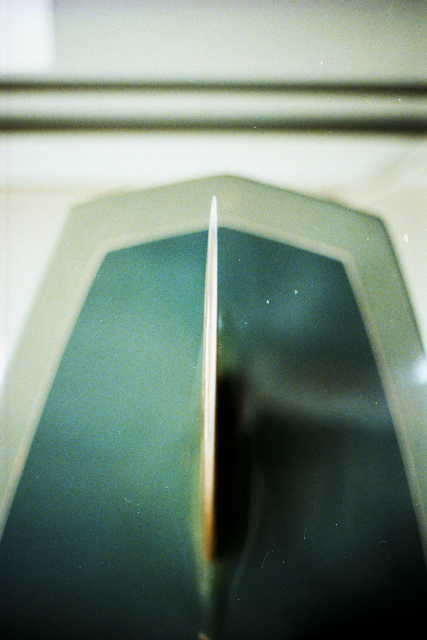
Jim Moriarty Interview
Jim Moriarty is a California surfer/activist who is the current CEO of The Surfrider Foundation. An organization founded by surfers, Surfrider is dedicated to bringing awareness of the environmental issues that face our coastal waters. We had the chance to ask Jim a few questions.
What was life like growing up?
It is safe to say as a child, I was a skater. You could always find me on a skateboard or snowboard more than any other type of board—surfboard included. Since I grew up in Ohio, my family’s visits to the coast were only during the summer months.
When did you get your first surfboard?
In the summer, our family vacationed in Rhode Island. It was there I was introduced to surfboards, but not necessarily for surfing. See, when we were out in the ocean—not the Atlantic, but more like large bays and inlets—on our boards, we were mostly goofing off. In fact, we would go clamming off of them.
What was the feeling you had when you first stood on a surfboard?
You never forget your first time you stand on a surfboard. I remember I was at Cardiff Reef on a 9’0” Herbie Fletecher that was red with white flames, and a skull and crossbones on the deck traction. The ride was unforgettable: it was a low tide and the sea grass was swaying just underneath the board. In a sense, I felt like I was walking on water.
Who/what inspires you?
I am inspired people who stand up for what they believe in. From a business perspective, I love that Yvon Chouinard started Patagonia to offer climbing supplies to meet the demand he knew personally even though being in business was perhaps the farthest thing from his aspirations. I love that Linus Torvalds created Linux and then gave it away. On a more personal note, I’m inspired by Churchill’s stance against Hitler. I love how punk rock challenged the view of modern music. I love that Jesus gave his life for his beliefs and Nelsen Mandela’s story of 27 years in prison to president of his country.
What meaning does surfing hold for you and how has it changed your life?
I was never a traditional sports kid; I got the adrenaline rush from board sports. As I get older, the simple joy of cruising on a wave with my hand tracing the wall of water of the wave forming is extremely satisfying. It is just myself and the water, and the life that it fuels. It is so simple and awe-inspiring, and satisfies my desire to connect with nature.
What is in your current quiver? What is your favorite board? Your favorite surf spot?
I have about a dozen boards in my quiver, from a small 19” Danny Hess handplane for body surfing to a Gerry Lopez Standup paddleboard. I love my 9’8” Bing pintail when the waves are under chest high. I love my 5’6” Channel Islands Fishcuit and a Joel Tudor singlefin when it’s head high.
My favorite spot is fortunately right down the street from my house at Swami’s in North San Diego County.
What are you currently listening to on your iPod?
I’m literally listening to “Heavy Metal Drummer” by Wilco, but love all kinds of music. I will listen to everything from Lee Scratch Perry to Cesaria Evora, Eddie Vedder to Bryan Wilson, Black Flag to Vampire Weekend.
What’s the number one priority project for Surfrider in 2010?
Engagement. As Surfrider Foundation goes into 2010, we want to connect with people that live in coastal areas and help them understand that they can make a difference at their beaches, and there are people just like them who currently are making a difference.
What’s a bigger problem—a few large industrial polluters or many small individual community polluters?
I’m not sure it’s clear to suggest one is “bigger” than the other as they are different from one another and substantial in their own right. As Surfrider, it is our mission to address both types of polluters as well as the myriad of polluters that don’t fall into either category, and educate them on how their practices are affecting our oceans, waves and beaches.
What’s next for Jim Moriarty?
The word that comes to mind is “network”. Surfrider Foundation now has 73 chapters in the United States and over a dozen outside the U.S. We want all those locations connected and feeding, supporting and encouraging one another. If we can achieve this, the end result is a large force with great value, but it’s created and maintained by thousands of people all around world. Think of it as Wikipedia for the coasts except we are building a real, on-ground presence in coastal towns everywhere.
Find out more about Jim Moriarty here. Find out more about the Surfrider Foundation here.
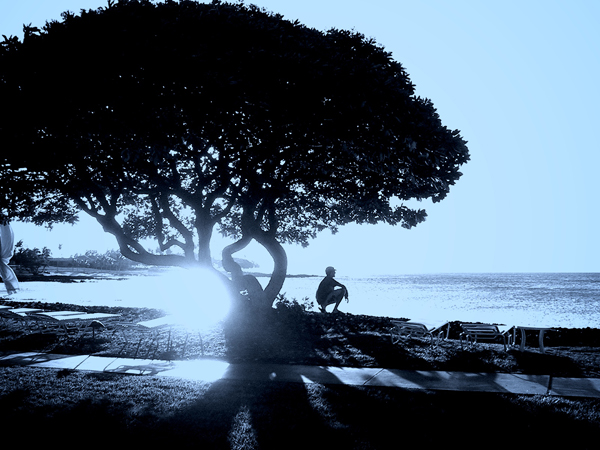
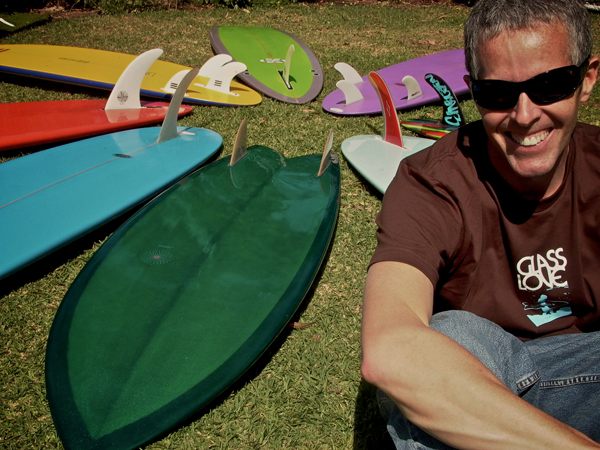


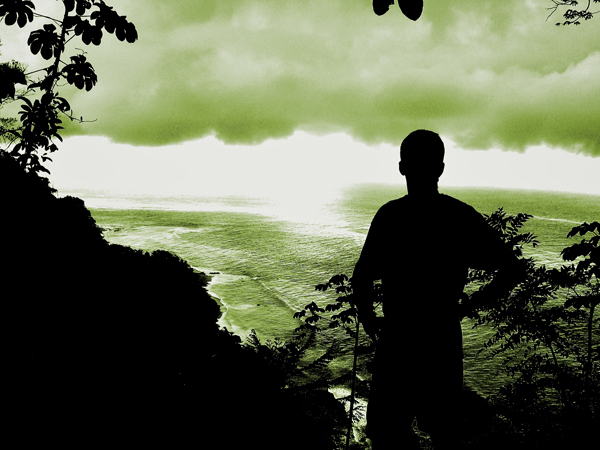
Keiron Lewis Interview
Keiron Lewis is a surfer and talented graphic designer living in Sydney. Also known as Seamouse, Keiron publishes his work on his popular surf blog, Pinniped. We talked to Keiron to find out more.
What was your life like growing up?
I don’t think I could have asked for much better really. I grew up about an hour away from London on the south coast and was lucky enough to have both the beach and the countryside as my playgrounds. I had a very supportive family, and both of my parents are very creative. When I was 14, my dad took me down to Cornwall on the first of (what I would convince him to make) our annual summer surfing holidays. From day one, I was hooked—getting up at daybreak and staying in the water till dinner. It didn’t take long before a couple of weeks in summer wasn’t enough and I started hunting out places to surf at home and dragging friends into it too.
What was the feeling you had when you first stood on a surfboard?
I can recall almost perfectly the first ride I had where I stood, turned and rode along the face. My dad had got me a 9’7” Mal for my 17th birthday, and I can remember being so surprised by how good is was to feel the glide the board had and how it connected with the wave. I was grinning like an idiot over the top of the waves at my mates and couldn’t paddle back out fast enough to do it again. I wasn’t surfing particularly great, but I’m sure that wave will stay as one of my favorites ridden for a very long time.
Who did you look up to and admire when you were a young man?
My grandfather has always been my biggest hero—the nicest and most intelligent man you could ever ask to meet. He has an encyclopedia for a brain and I find nothing more inspiring to my personal life and my artwork than to hear him talk story.
Graphically, I always admired those artists that provided artwork for skateboard companies, and mainly those produced for Chocolate or Girl. I didn’t know at the time, but I was looking at the work of people like Even Hecox, Spike Jonze, Andy Jenkins, Andy Mueller and Tony Larson—people that still inspire me to this day.
Of all the places you have traveled to, what place in particular stands out and why?
Fiji was amazing. I ended up being there for a month and a half back in 2003. I had a blast staying in the worst accommodation I’ve ever been in and making good friends with the staff and people in their village. The waves there were unreal too—the most beautiful colours of blue, full of the most amazing wildlife and would repeatedly kick my ass on a daily basis. I loved the people and the lifestyle too. For me, if I go traveling, I want to go somewhere completely different from home to really rock my senses and hopefully give me a different perspective on things. Fiji will definitely do that.
Who/what inspires you?
So much inspires me and that’s a wonderful thing. You can be walking along the road, see something, do something or maybe just overhear a part of someone’s conversation and it can spark an idea. If I’m feeling low on inspiration while working, I usually throw on some music and check out what other people have been creating via the internet. I constantly get that “Damn, I wish I’d thought of that” feeling, which is usually pretty motivating and I always like to see if I can adapt other people’s methods or ideas into my own work.
A few people’s work I’ve been inspired by recently are Nathanial Russell, Rob Ryan, Stuart Kolakovic, Ryan Tatar, Mike Perry, Jean Jullien, Cody Hudson, Morgan Maassen, Paul Rand, Dieter Rams, Alex Kopps, Vampire Weekend, Ryan Heyward and Ivan Mayorquin to name but a few.
What is your process for creating your art?
It all starts out as an idea or phrase that I have to jot down quickly … as not to forget. I like putting some of my humour into my work and to generally just try to be honest about the idea I’m trying to represent. When I create a new piece, I generally sketch out ideas in pencil before either turning them into a print of some kind or importing them into Photoshop/Illustrator to sharpen up and colour digitally—all depending on what’s happening with the image afterwards. I was trained as a designer and that method of producing work has transferred naturally into my illustration.
What is the greatest thing you have learned in your life?
A good guess is better than a bad measurement.
What are you most proud of?
Marrying my beautiful wife. I’m really fortunate to have such an amazing person in my life.
What meaning does surfing hold for you and how has it changed your life?
It’s been such a big part of my life for so long now; I can’t really imagine it not being there. I think, like most surfers, it’s brought me friends, taken me to places I’d otherwise not have traveled to and given me a lot of joy. I happily hold my hand up to being well and truly addicted though. I constantly watch the weather and tides, and get massive withdrawal symptoms if I don’t get in the water often enough.
What brings you the most happiness in the world?
Friends, family, being around the ocean and creating things. As long as I can keep these things in my life, I’m sure I’ll always remain content.
Who are some of the people you feel are shaping the path for surfing today?
The thing I really like about surfing at the moment is that it’s not just the sponsored surf stars shaping the path anymore. I love that shapers are finally being given the recognition they deserve too. I’d say that Joel Tudor opened the door for today’s ride—anything aesthetic. Thomas Campbell opened everyone’s eyes to what could be done with it and shops like Mollusk then put it in the hands of you and me.
To name a few who are doing interesting things, I’d say Derek Hynd, Tom Wegener, Danny Hess, Alex Kopps, Carl Ekstrom, Richard Kenvin and John McCambridge.
What is your favorite board? Your favorite surf spot?
I made myself a 6′ twin keel fish awhile back and that’s so much fun. The feeling of riding something you’ve made yourself is really great and I’d recommend it to anyone. I really love surfing the pass in Byron Bay, but pretty much any right– hand point break will keep me grinning for days. Saying that even though it’s small, mushy, grey and cold, there’s no place like home.
What’s your favorite meal?
I really couldn’t narrow it down to one meal. Much like music, different food appeals dependent on my mood. I do love trying out new recipes and going out to good restaurants though.
What are you currently listening to on your iPod?
I don’t actually have an iPod. I really like the physical interaction of putting on a CD or even better some vinyl. Plus, cover art plays just as big a part in the experience for me and is a massive source of inspiration. I can’t count the amount of music I’ve bought over the years purely based on the cover art. It plays a huge part in my life and my work, and I’m constantly on the lookout for new artists and sounds. Recently I’ve been listening to The Shins, Kids at Risk, Megapuss, The Acorn, Band of Skulls, Yeasayer, The Yeah Yeah Yeahs, Department of Eagles, The XX, Holy Fuck, Local Natives, Edward Sharpe and the Magnetic Zeros and the new Vampire Weekend album.
What causes/organizations do you support?
I used to support a few of the big charity organizations, but I kept receiving demands asking me to increase my monthly donations. It ended up seeming like the companies were putting more effort into getting more money from me than actually putting it to use. Now, I just support causes that I have some connection to (like the British Surfing Museum). It’s one of the best collections of surf history I’ve ever seen and Peter Robinson, it’s curator, is in the process of finding it a permanent location so I try and help where I can.
What are you most grateful for?
Luck. You can be the smartest, most intelligent person in the world, but if you have bad luck, you really won’t have much at all. I’ve been really lucky over the years and I’m very grateful for it.
What’s next for Keiron Lewis?
I’ve just moved to Sydney with my wife and currently pulling the pieces together to do a group show over here. The plan is just to just get better at everything— better surfer, better husband, better artist.
Find out more about Keiron Lewis here.
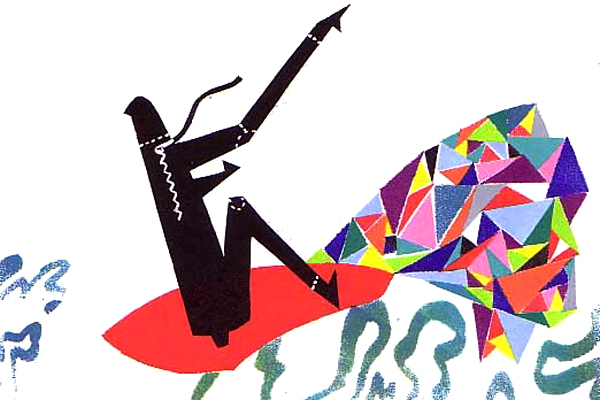
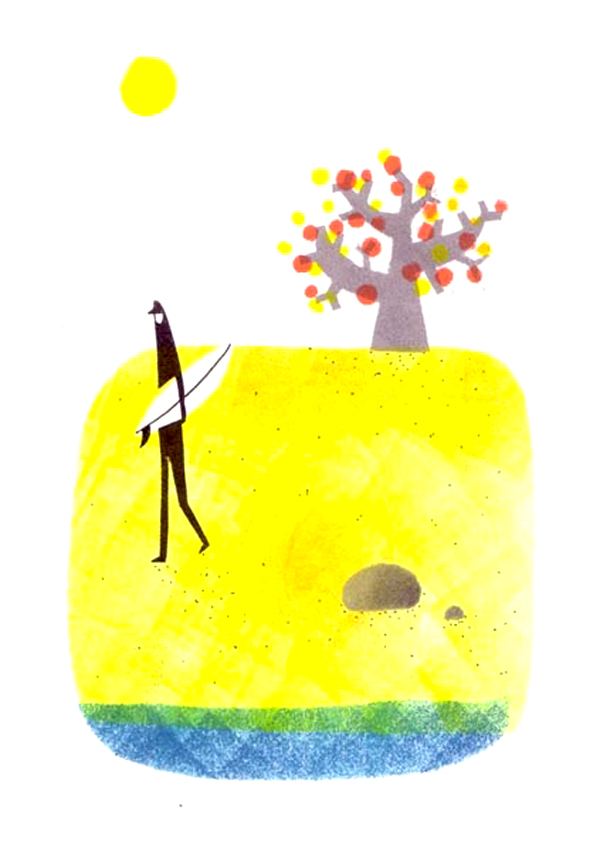

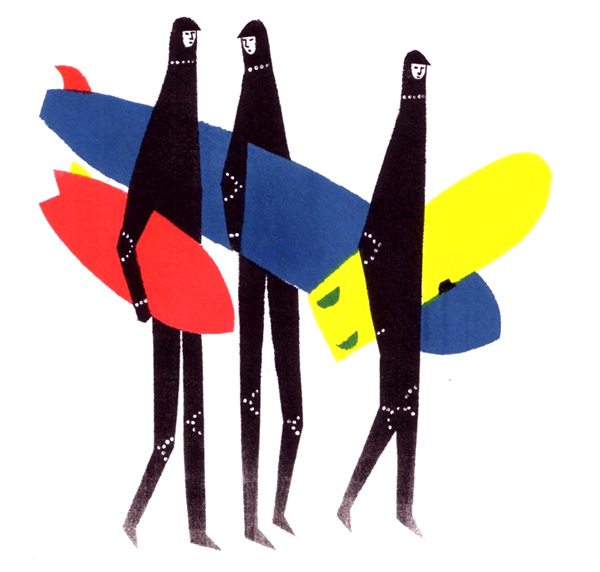
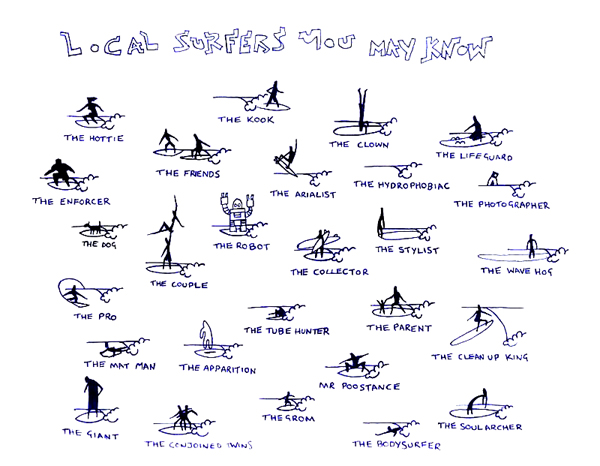
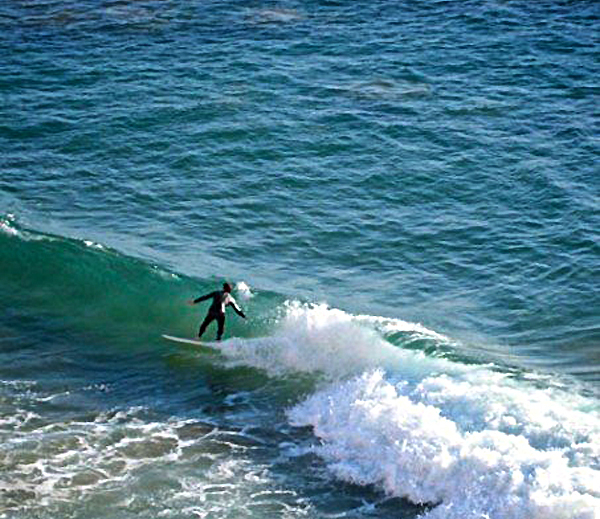

Cyrus Sutton Interview
Cyrus Sutton is a California surfer / filmmaker who is the creator of Korduroy TV. In addition to being an extremely talented surfer, Cyrus is all about doing-it-yourself, from hand planes to organics. We asked Cyrus what it is that makes him tick.
What was your life like growing up?
My parents divorced when I was a baby and I spent my early years between my mom’s in Long Beach, where she’s a professor at Cal State Long Beach, and my dad’s in Fullerton, an inland Orange County suburb where he’d been raised and returned to after college because of its central location to the mountains, the beach and his teaching at Cal Poly Pomona. I didn’t grow up with much of a connection to the ocean, but rather the mountains. My dad was an avid fisherman who built me my first fly rod when I was 9. We’d spend summers in the Eastern Sierras hiking and pulling trout out of the clear streams with the flies he’d tied over the winter.
Tell us more…
My first experiences with the ocean were far less romantic. I was scared to death of it until I was 8 and before that wouldn’t even go into our community pool without a float strapped to my back, inflatable water wings around my arms and a boogie board. It was pretty funny, but that’s what I needed to find my comfort zone. When I graduated to the surf, it was at Seal Beach with my best friend on a boogie board. We called ourselves the “boogie men” and had a little pseudo-superhero theme song we’d chant when paddling out. We were so stoked. The next summer we started riding longboards.
But shortly after, my dad got an exchange teaching job at the Kyushu Institute of Design in Japan. I normally lived with my mom, but my dad thought it would be an opportunity of a lifetime so I went. It was intense. Going from being driven to school in California to a place where I had to navigate my bike through an urban labyrinth before boarding a bullet train that sped me to a mega-terminal where I’d have to find my connecting subway train. The whole process took about 90 minutes each way and school wasn’t any easier. I didn’t speak a word of Japanese and the classes were grueling. By the time I left, I was pretty much traumatized by the whole ordeal and plunged myself into surfing, which took me back to a place where things made sense.
When did you get your first surfboard?
Before Japan, my dad walked me into Harbour Surfboards and we ordered my first board.
Who did you look up to and admire when you were a young man?
My heroes were surf stars, like Joel Tudor and Rob Machado, who seemed to have a supernatural connection with ocean and that was inspiring.
Who/what inspires you now?
Anyone who can sort through all of bs out there, and find an internal space or state of mind that works for them. Not just living out other people’s values or expectations, but distilling their priorities down to things that fulfill them—taking the leap to truly understand who they really are. For me, this has created a deep sense of contentment and I think operating from this place opens the door to everything in life—at least it works that way for me. So that “place” is my inspiration.
Tell us about your latest film Tom’s Creation Plantation…
The goal of the film is to convey the infectious enthusiasm of Tom Wegener, a guy who’s found what makes him happy in his own proudly kooky way. By operating from his “place,” he stumbled upon a previously forgotten appendage of surfing and believed in it when most surfers wouldn’t have the balls to advocate such a unlikely form of surfing: the alaia. The alaia is a plank of wood with no buoyancy. The surf craft works sheerly because of the surface tension created by wave-generated momentum and the planing surface of its outline.
What is the greatest thing you have learned in your life?
That everything in life is relative. In other words, we only perceive something as good if its comparatively better than what we’ve experienced before. If I try to fight this natural tendency with my mind, then I’m constantly engaged in a mental struggle to be grateful. I find I’m much more content and informed if I’m not struggling to be grateful all of the time.
By just letting life happen to me, I am less attached to the positive and negative situations that arise and I am able to just understand the lessons they contain. The lessons are the same for all us and whether you are rich/poor, handsome/ugly, etc., it’s how we react to those lessons that determine our quality of life. Feelings of guilt over having “more” than others or envy over having “less” disappear because you realize that people who have it easy in some areas are going to be more challenged in other areas. So the realization that everything is relative has allowed me not to feel obligated to follow anyone else’s rules or feel guilty about finding my own path to contentment.
What are you most proud of?
I’m most proud of myself when I’m able to let things go I cannot control. If you’ve read this interview up to this point, you can tell that I think a lot about shit and that has screwed me up a lot in the past. So when I’m able to just feel out where I want to go and let go of my own expectations, I can let my over-active brain exist in the moment and work for me, not against me.
What meaning does surfing hold for you and how has it changed your life?
At first, surfing was an escape. Then, in high school, it was a way to be cool and get girls. For a brief second, it was a career. And now it is a teacher.
What brings you the most happiness in the world?
Surfing, exploring, sharing, eating and being around the energy of strong women.
Who are some of the people you feel are shaping the path for surfing today?
The mass of people going to beach to find an escape from their normal lives. Their numbers are growing daily and they are dramatically altering the surfing’s path. While it’s got obvious drawbacks (less waves for me), it is a chance for humans gain new a appreciation of the ocean on a larger scale. And if we as surfers open our minds to what are rideable waves, then there’s plenty for everyone. These are exciting times.
What is your favorite board? Your favorite surf spot?
My 4’10″ block of foam cut with a handsaw from a soft top blank—no fins, no stringer, no glass. And the surf spot is anywhere that allows me to catch a good amount of waves and get in a rhythm.
What’s your favorite meal?
Steamed veggies and potatoes with hamburger made into little meat balls drizzled with my sesame sauce goes down real nice and makes me feel good the next day.
What are you currently listening to on your iPod?
Right now I don’t own an iPod and I’m just enjoying silence. But I love live music.
What causes/organizations do you support?
I don’t really support any causes or organizations, not that there aren’t a lot of amazing people banding together to do a lot of important and positive things. I’m just an advocate of empowering yourself. I think if everybody took the time to empower themselves first before trying to save some cute endangered species, we’d solve the real problem at its source. I make films and have a website that’s about doing something to that effect, so I guess that’s my contribution and what helps me sleep at night.
What are you most grateful for?
I’m grateful for anything I didn’t have before. Then once I’ve had it for a while, I stop being as grateful. But that’s the wonderful thing about life—its always offering new challenges and hardships, and thus new opportunities to be grateful.
What’s next for Cyrus Sutton?
Going to eat dinner with my girlfriend’s family. It’s her dad’s birthday and I’m making the salad. Then we’re going to play Balderdash, which I’ve never played but it sounds like fun.
Cyrus is involved with Korduroy TV and U Grow Organics. Trailer to Tom’s Creation Plantation. The Korduroy TV trailer can be found here and Cyrus Longboarding on an Almond Log.
Photo credits: 1. Ryan Tatar, 2. Jack Chellemi, 3. Foto Pero, 4. Dan Llano, 5. + 6. Ryan Tatar.
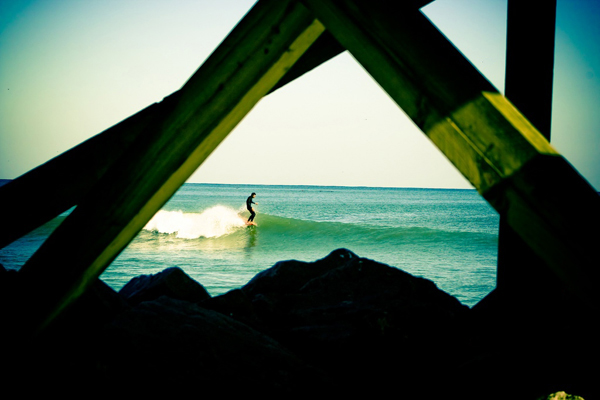

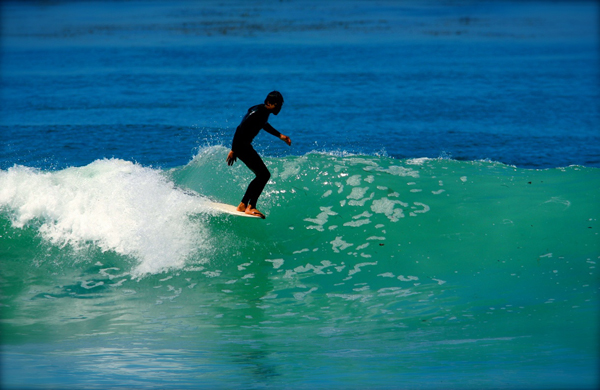
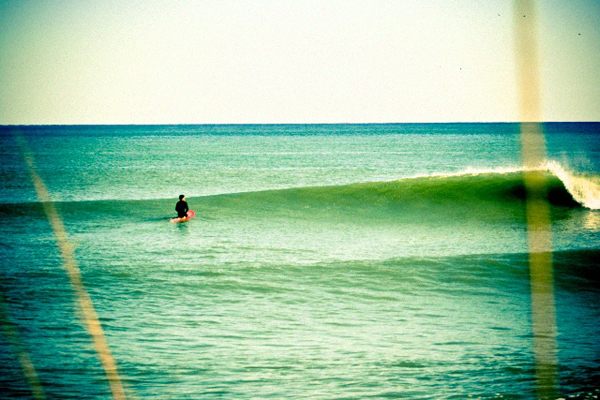
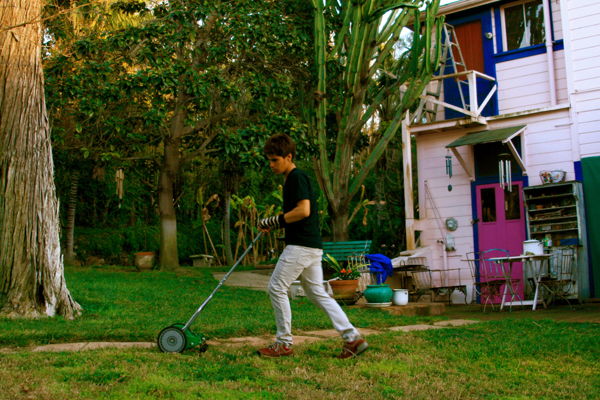
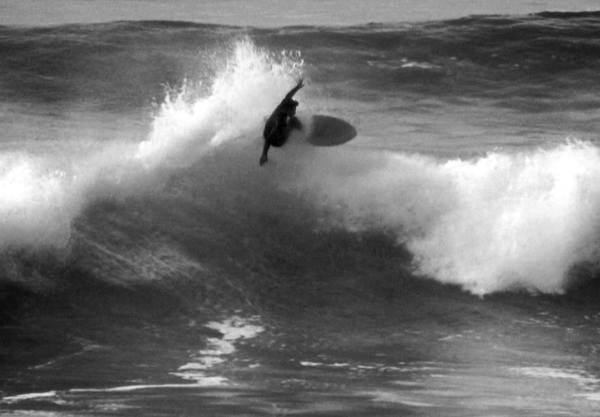
Steve Pendarvis Interview
By Mary Mills
Steve Pendarvis is a California surfer / shaper who was raised in suburban San Diego. An innovative shaper since the late ‘60s, he is well known for his custom Pendoflex boards. We recently caught up with Steve to talk about his life of surfing.
What was your life like growing up?
My life growing up was in Point Loma (suburbia San Diego) in the middle of six kids— Little League, paper routes, parochial school, summers at North OB on our red and blue rafts, running over the tourists in the swimming area. Tons of fun!
When did you get your first surfboard?
I got my first board in the 6th or 7th grade. I was 11 or 12 years old. My older brother retrieved a broken balsa board from Osprey, reshaped it into a 7’11” light blue opaque with a D fin. After that, a couple years later, a 6’10” green tint Gypsy G&S from Bill Andrews at PB Surf Shop. Not to mention some Ridout Plastics brown foam adventures in the parents’ garage, $2 a gallon resin from Kettenburg Marine, plywood fins. “Steve, make sure you chip the stuff off the floor” and “You can’t drive the car out of the garage.” We eventually made a shed in the backyard.
What was the feeling you had when you first stood on a surfboard?
Not really sure. I already had had a lot of water time.
Who did you look up to and admire when you were a young man?
My dad, Mr. Plaster (a world traveler) and Mr. Lestina (WW1 fighting ace). Also, folks in the surfing mags. Eventually Skipper, John Holly, Stevie, Ben Ferris, Stanley Pleskunas, John Riddle, Larry Gephart, Louis Greco, Larry Duff, Tim Ebner, Tom Lockwood and all board builders.
When did you start shaping your own boards and what inspired you to do so?
Well, a paipo bellyboard board in the 7th grade in 1966. Then some Pendo Pinners single fins … always tinkering and building things.
Were you shaping flex tail boards from the beginning or was there an epiphany which led you down that wonderful shaping path?
Well, yes, the epiphany here is having Stanley Pleskunas ask me to hold a George Greenough shell he was working on so he could Sureform it. I’ve been itchy on this path ever since about 1969.
Of all the places you have traveled to, what place in particular stands out and why?
Australia and Baja right point breaks … Hanalei. It’s pretty obvious. They’re all down the line right points!
Who/what inspires you?
The Big Guy. And you know, lately, a lot of these younger kids, surfing and building boards with the envelope getting completely out of shape. Yeah, baby, now we’re talking!
What is the greatest thing you have learned in your life?
We are all just one heart beating—one after another and another. This helps out a lot when its packed in the line up.
Do you have any regrets or wish you had done something differently?
Hindsight and mistakes are what they are. Generally, push on and learn from them. I would shape some experiment and it would have this or that which needed to be adjusted. Geppie would say, “That’s a boy! If it was right on, what fun that would be!” (Laughs)
What are you most proud of?
Having a soft heart and plenty of smilin’.
What meaning does surfing hold for you and how has it changed your life?
Not a bad road to travel in this world. It hasn’t changed my life … it is my life! Cowa-flexit!
What brings you the most happiness in the world?
Family and wife at the very least, Not to mention that stand-up barrel the other day after Thanksgiving without a drop out of place. Still living that one! Owoooo!
Who are some of the people you feel are shaping the path for surfing today?
Whoa! So many things are getting looked at by those young and old. There is a long list.
What is your favorite board?
My little Fourth Gear Flyer fits that thought. Tri fins, twins, quads, singles, sliders and duckies. I sort of run the gamut with some fun ideas currently getting played with.
Your favorite surf spot?
My favorite spots are generally Mexico, El Cap and Sunset Cliffs.
If you were stuck on a desert island with a point break on one side and a beach break on the other, what is the one board you’d want to have with you?
The one I’m into at this time is a 6’3″ five fin set up. It would cover most of the bases—not to mention some swim fins and a good breath of air for getting dinner off the reef.
What’s your favorite meal?
My favorite food? I like it all. Of course, a nice fat banana before a surf so that the potassium burst will help me stay out in the water longer.
What are you currently listening to on your iPod? Music?
KSDS Jazz 88.3 FM. Currently I’m iPod-challenged. I have a great time just listening to the world around me, radio off and the sounds of life. Otherwise, the jazz station, lots of Makaha Sons and the like, Allman Brothers, Santana, Stevie Ray Vaughn, Hendrix, Johnny Winter. Reggae sounds are a kick too.
What causes/organizations do you support?
Here are some worthy causes that we support: The Groundswell Society, Rell Sunn Educational Fund, Ocean Beach Historical Society, Wildcoast, Surfrider, Sunset Cliffs Surfing Association, Tony Mezzadri Spinal Cord benefit, Pro Pennisula, Patagonia.
What are you most grateful for?
Besides this life in the first place, I’m grateful for all of the fun work and play, for every day and the conscious effort to convert that heartfelt energy out to every beating heart in this world.
What’s next for Pendo?
Who knows, I know He knows, but I don’t know. (Laughs) One step at a time… always tinkering. Peace out. Cowa-flexit!
FYI: At Sunset Cliffs we wore black wetsuits and were camera shy, so we did not take many photos while surfing.
Find our more about Steve and Pendoflex surfboards here. All photos courtesy of Cher Pendarvis.
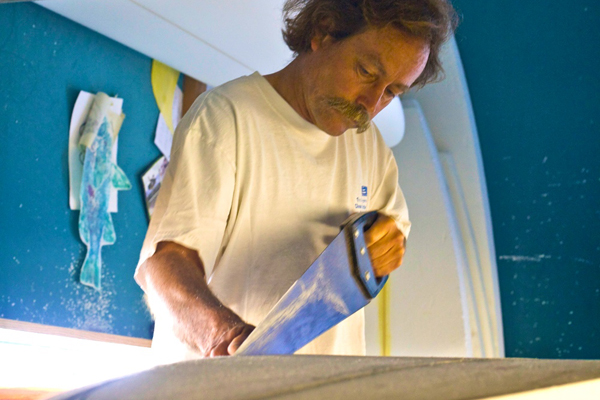
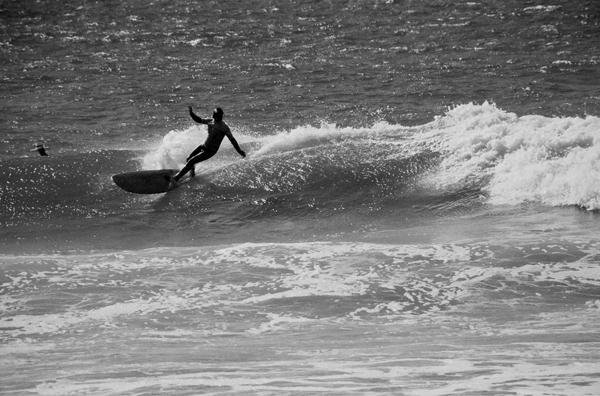
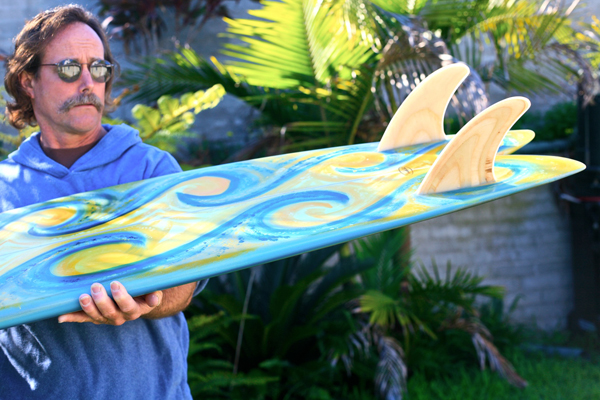
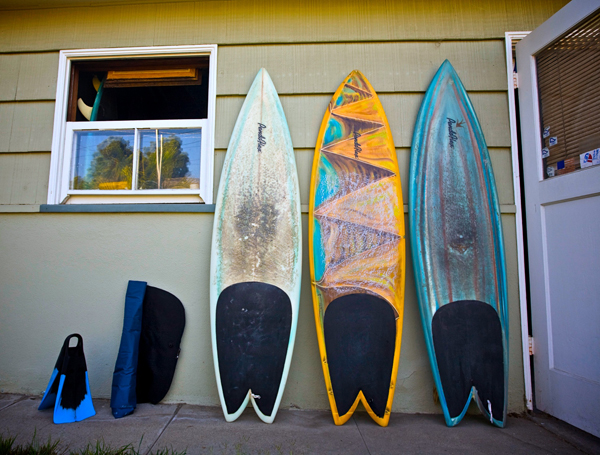
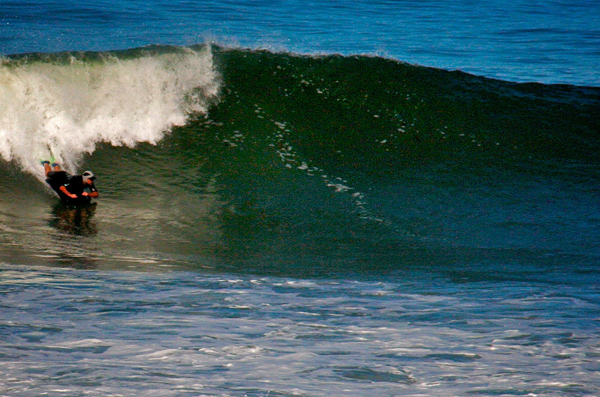
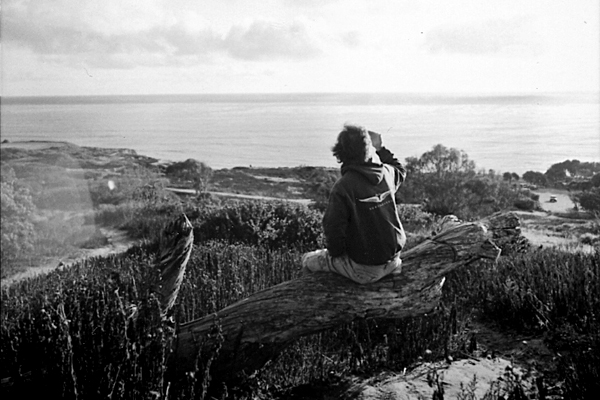
Tyler Hatzikian Interview
Tyler Hatzikian is a California surfer/shaper who was born and raised in the South Bay. Featured in the films Singlefin: Yellow and One California Day, Tyler makes beautiful hand crafted boards in the traditional way. We caught up with him to talk about surfing, shaping, and sprint cars.
What was your childhood like?
Well, since my dad surfed, I was exposed to surfing at an early age. I grew up getting carried down to the shoreline at Malibu on his shoulders with my toy truck in hand. He would plop me down on the beach at Malibu while he surfed, and I was oblivious to the famous surfers who probably walked up to The Point right by me.
When did you get your first surfboard?
My first board was a hand-me-down from my dad when I was about 7—a 7’6” Pat Rawson garage board (before he had a name). It was bright yellow … although the rails were more grey, from patches of duct tape, than yellow. I have memories of having that board in my room, waxing it up with strawberry Sex Wax and dropping in off my bed.
What was the feeling you had when you first stood on a surfboard?
The first time I remember surfing was at El Porto in the summertime. My dad took myself and a neighborhood kid down to the beach. The fact that my dad surfed didn’t really make it cool to me at first though. Other influences got me to commit to start surfing. It wasn’t until the older neighbor kid started surfing that it was cool, and that’s when I really started. That was when I was between 7 and 9 years old. It was a pretty big deal to be able to accomplish that first ride. I got praise from my dad and friends, and that kept me going.
Who did you look up to and admire when you were a young man?
It wasn’t really surfers at first. I would say my first idols/heroes were sprint car drivers. Before I started surfing, we used to go to Ascot Park in Gardena, which was a clay dirt half mile oval. Almost every Saturday night, we’d go and watch the sprint car racers. We enjoyed going to the races together as a family. My dad was a plasterer and so he usually worked on weekends and I would help him out. It was a big deal to be able to look forward to going to the races and having a good time at the end of the day’s work.
What is it about shaping boards that appeals to you?
When I’m shaping a board, I’m thinking of surfing—surfing in my mind. Even though not in the water, I still feel connected. Basically, if I’m creating a curve on a board, I’m so concentrated on shaping that it basically feels like I’m surfing as I’m shaping a board.
Of all the places you have traveled to, what place in particular stands out and why?
I would say Cloudbreak, Tavarua. That’s because that was a trip I was invited to go on when I was 21 with a bunch of pro longboarders that were at least 10 years older than myself. And that’s the first major trip I got to go on for a magazine where it was 13 days there paid by the mag. We showed up to Tavarua and everyone was taking quiver shots—all the guys pulling their boards out of their bags, looking at my equipment and looking at me like I was going to get creamed, like I had no business being on that trip. I brought heavy single fins, 10 foot, and other guys had tri fins that were light with super rocker— basically just long shortboards. I remember going out in the boat and everyone waited for me to go out first to see me get pitched. They thought for sure I was going to get hammered. Probably five of my top 10 barrels of my life are from that trip and that was in ‘94.
Who/what inspires you?
Creative people. People that don’t sit around, that are active and driven.
What is the greatest thing you have learned in your life?
Balance … meaning not being too extreme one way or the other, but being open-minded yet realistic.
Do you have any regrets or wish you had done something differently?
I wouldn’t really change anything, but I would have liked to maybe dabble as a race car driver, racing sprint cars a little bit more. If I didn’t do what I do right now, that might have been a direction that I would have gone. I’ve done a sprint car school, but haven’t actually raced them.
What are you most proud of?
My daughter.
What meaning does surfing hold for you and how has it changed your life?
Surfing started out as a passion—with me wanting to get better at it. It was my first real individual sport and I felt I had tendencies leading to that instead of team sports, although I liked team sports like baseball and soccer. It was personal time. But as I developed my surfing and started building surfboards, it became not so much a break or relaxation like it is for most people, but it was work—having to talk shop down at the beach (even if just looking at waves). It was the office and I had to perform on a daily basis. If somebody has a bad day of surfing, no one usually cares. But if you’re a label, the pressure’s on; everybody wants to say if you’ve had a good day or bad day, and that’s a lot of pressure.
The meaning of surfing has changed for me. It was different when I was younger than it is now. So I look forward to finding different ways to get back to that solitude, such as surfing my home spot with no one else out on big days. It kind of takes me back to when I was a kid when you’re focused on your own surfing, relaxed and mellow. You didn’t have to worry about all of this drama. When you’re surfing big waves, it forces you to focus on the surf. It kind of clears your mind. When the surf is smaller, you’re thinking about the guy next to you, the crowd. But big waves bring you back to the point where you don’t think about anything else. You’re just focused. Otherwise, hot dog surf is just drama for me. People want to challenge you to a surf-off in the water. Big waves allow me to keep that distance between all of that crap. It keeps people on the beach and I can be way outside.
What brings you the most happiness in the world?
Happiness would be working with my hands and getting them to create exactly what I want them to create. There’s a certain satisfaction to that. Also, at my age, being able to build a family is important to me. My wife, Katherine, and I have been together for twenty years and my daughter, Evelyn, was born two years ago.
Who are some of the people you feel are shaping the path for surfing today?
Probably, in shortboard realm, your Merricks and Rustys—the guys that are out front … shortboard guys that are actually working with top surfers in the world and also using computers to lock down baselines for their team rider,s and being able to build off of that. It’s interesting.
In the longboard realm, it’s hard for me to say because my path is basically trying to build longboards without the shortboard influence. And it’s a constant refinement whether it’s the craft of glassing or shaping. There’s a lot of young guys that … I don’t know … make boards that I probably wouldn’t say have traditional roots. They’re more kind of rough garage-ish, light longboards. The way I view most other longboard builders … I don’t feel it’s as pure. My boards are an evolution, an advancement and progression of traditional design. I think a lot of guys that build boards now make longboards, but they’re trying to advance it to try to carry more shortboard elements into it. I’ve been trying to keep my aim true since I started making longboards. I’ve tried not to muddy it up with other influences.
What is in your current quiver? What is currently your favorite board? Your favorite surf spot?
777, Wingnose, Balsa, 8’ gun, 6’6” squashtail tri fin, Parabolic rail Wingnose. I’m constantly testing new designs. The one I’m most comfortable on is the balsa though because I’ve been surfing it so much over the last few years. My favorite surf spot is the north side of the El Segundo jetty.
What’s your favorite meal?
Prime rib.
What are you currently listening to on your iPod?
I pretty much listen to satellite radio so it’s all over the map, but I like Waylon Jennings.
What are you most grateful for?
I’m grateful to my customers over the years who allowed me to build on my vision. Without my customers, I wouldn’t have been able to be in the position I’m in right now as far as traditional design goes—refining and making my craft. First of all, you need repetition to build and perfect your craft, but the type of work that we do is so time-consuming that it costs a lot of money to make the boards. Volume is low, so it takes years to develop. You can cut corners and do mass production but that’s not refining, perfecting. I’m also grateful that I pretty much knew what I wanted to do from an early age and that gave me the self-confidence to stay away from drugs.
What causes/organizations do you support?
We support the City of Hope.
What’s next for Tyler Hatzikian?
We’re trying to educate—letting people know more about our approach to surfing and board-building, and basically trying to really build our catalog. Keeping things fresh. We would also like to increase our involvement with our “test pilots” and to be able to create more prototypes with test pilots and customers.
Find out more about Tyler Hatzikian and his surfboards here. All photo are provided by filmmaker Jason Baffa.

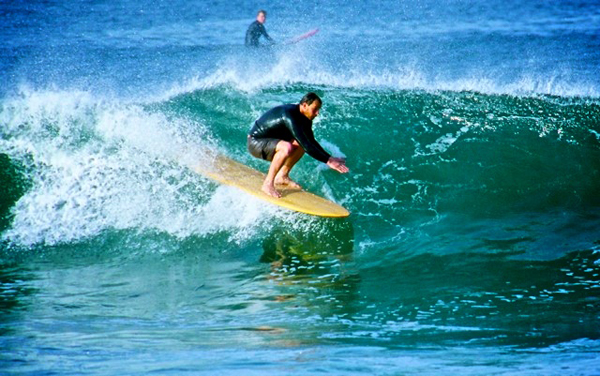
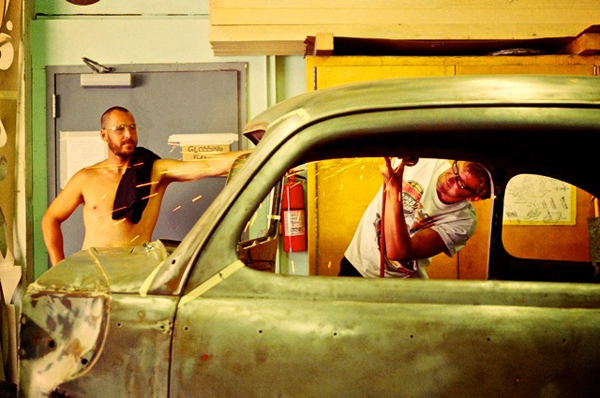
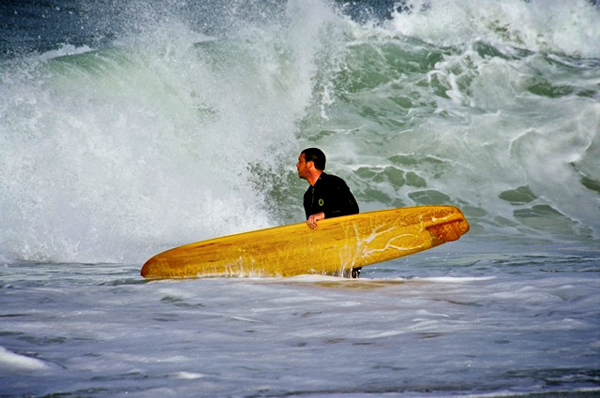
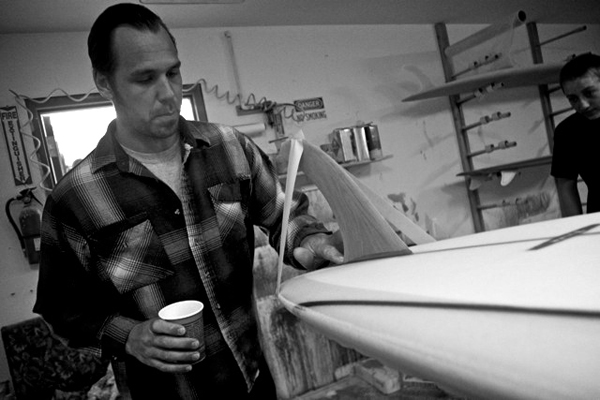
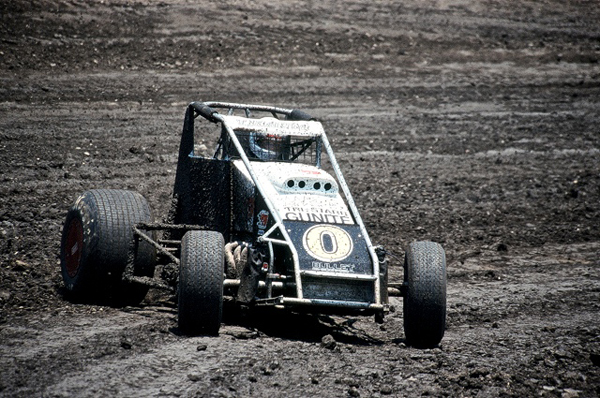
Tony Caramanico Interview
Tony Caramanico is a New York based surfer / artist who has been surfing since the ‘60s. In that time, he has compiled an astounding number of journal entries that have become works of art that are exhibited in galleries and sold as prints. Tony keeps it simple: surfing and staying positive. We spoke with Tony to find out more.
What was life like growing up?
Life growing up in Amityville, New York was around the sea, and time spent with family and friends. My teen years were spent surfing at Gilgo Beach. I worked in one of the first surf shops on Long Island—Beachcomber Surf Shop—when I was 13. Have been working in or around surfing ever since.
Who did you look up to and admire when you were a young man?
I looked up to the older surfers in my area and the stars in the surf magazines.
When did you get your first surfboard?
I got my first surfboard in 1963 … that my uncle paid five dollars for at a garage sale. It was a homemade board. My first custom board was an 8’7″ Bing.
What was the feeling you had when you first stood on a surfboard?
My first ride was at Gilgo Beach on Labor Day in 1963. It changed my life and gave me the direction I’m still following.
Where did your interest in art come from?
My interest in art came by accident when I started working for Peter Beard in Montauk. I started keeping my journals in 1979 and still do it daily. I never considered myself an artist nor did I keep journals as art. It was my self-expression and I felt that living the life of a surfer at that time was of interest and not in vogue as it is today. I did it for myself.
What is your process when creating your art?
My art is mixed media journals of my travels and daily life.
Of all the places you have traveled to, what place in particular stands out? And why?
Indo 1980 … Bali and G-land.
What is it that makes you such a nice person? What code do you live by?
I try to keep it level and positive in my life.
Who/what inspires you?
People who follow their dreams. The music of Bob Marley. Doing what you love.
What is the greatest thing you have learned in your life?
Stay positive—don’t listen to the negative people out there. Anything is possible if you follow the path you choose.
Do you have any regrets or wish you had done something differently?
I have few regrets and they’re too small to worry about.
What are you most proud of?
I am most proud of my surfboard models that I have had: 1992 to 2002 with Greg Noll, Channin was 2003 to present and the Surftech/Channin TC model in 8′ and 9’1″ was 2008 to present. Also, I’m proud of my surf journals I’ve kept for over 30 years.
What meaning does surfing hold for you and how has it changed your life?
Surfing is my life and has always been my path.
What brings you the most happiness in the world?
Traveling the world and surfing with my wife, Charlotte.
Who are some of the people you feel are shaping the path for surfing today?
The people that are changing the path of surfing are the ones who are free and soul surfers. It’s not competition; it’s not a sport. It’s a lifestyle. It’s an art form.
What is currently your favorite board? Your favorite surfspot?
My favorite board is my 8′ Surftech model of my design. It’s a great mini longboard and great to travel with.
What’s your favorite meal?
My favorite meal is duck, Thai food and Japanese.
What are you currently listening to on your iPod?
I listen to all types of music.
What causes/ projects/organizations do you support?
I try to donate to local causes and things that affect people I know. Also, Surfrider and Surfing Heritage Foundation.
What are you most grateful for?
I am most grateful for being able to surf and travel, and have a very good quality of life—my art and my wife Charlotte.
What’s next for Tony Caramanico?
Next for me is to keep printing my journals and doing art shows, try to do a book and stay on my path that started on that first wave in 1963. Aloha.
Find out more about Tony Caramanico here. Top photo courtesy of photographer Joni Sternbach. All other images provided by Tony Caramanico.
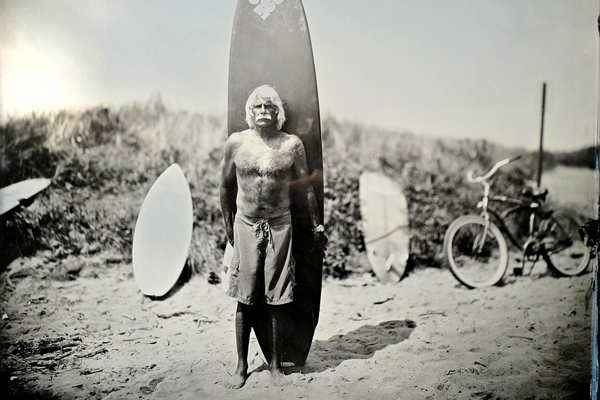
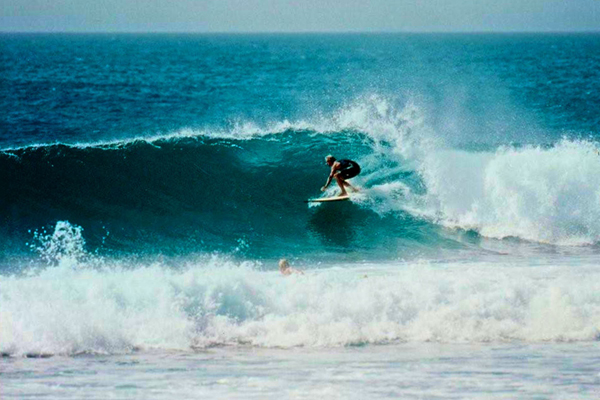
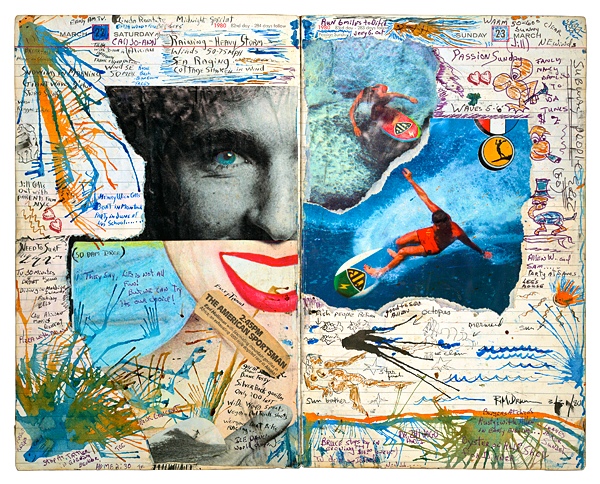
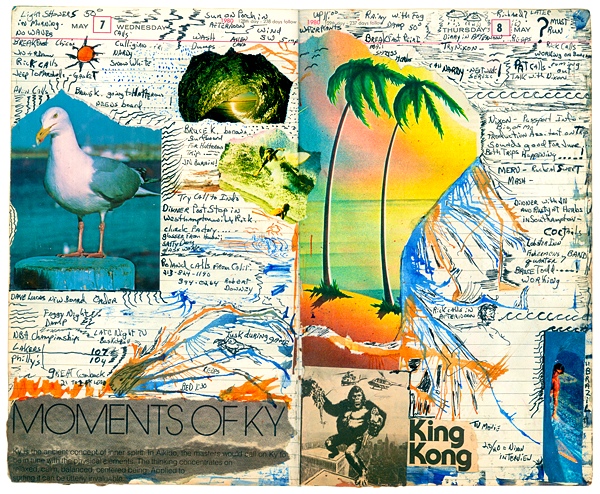

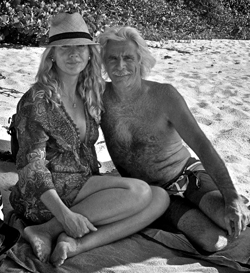
Belinda Baggs Interview
Belinda Baggs is an Australian surfer who has appeared in many films on wave sliding by the likes of both Thomas Campbell and Andrew Kidman. Her signature style and cat-like grace on the nose has earned her a place as an icon in the surfing world. We spent a few moments chatting with the one they call “Bindy.”
What was your life like growing up?
Innocent and peaceful. My family would spend long days at the beach, surfing or swimming—lots of holidays up the east coast of Australia and generally a childhood full of love and fun times. My family has always been close, supportive of whatever I choose to do. Luckily, surfing is a shared passion that allowed us to relate to one another. Every day was always some type of adventure: searching for points or figuring out how to get out of school when it was offshore.
When did you get your first surfboard?
My first surfboard was an 80’s thruster. I got it secondhand when I was about 12. I remember getting tossed about in the Newcastle shorebreak, but occasionally getting that rare day when I would get out the back and Dad would call me into a couple of small waves. They were really the moments that transformed my life into one of a surfer. Eventually, I got a thruster shortboard and, finally, a longboard when I was about 15.
What was the feeling you had when you first stood on a surfboard?
I don’t really remember the first wave that I stood up on. Ever since I was a grommet, I think I have been addicted to the freedom and glide of riding a wave. I feel like I learn something new almost every session, as substantial or subtle it may be; there is always something beyond your existent knowledge to discover and absorb. It’s that feeling that keeps surfing fresh and pure. It can come from picking up different surfboards, bodysurfing… sometimes just swimming out along the bottom and feeling the undercurrents. It helps us to become a better surfer and keep the stoke flowing.
Who did you look up to and admire when you were a young girl?
My father and the people that were immediately surrounding me day-to-day. There is always someone standing out in the crowd, catching, riding and connecting with the wave more so than anyone else. I wanted be the one getting the good waves of that day and feeling what they were feeling.
Of all the places you have traveled to, what place in particular stands out and why?
I have traveled to so many amazing parts of the globe. I feel blessed to have seen and experienced the things and places I have been. Taiwan, Papua, New Guinea, New York, Sardinia … are all highlights for one reason or another (culture, waves, landscape, natural beauty). Most recently, I have been spending lots of time in Sumatra, Indonesia. It’s all so foreign to how I grew up and the life I know—everything from the reefs, curve and power of the waves, currents, landscape, culture and perception and direction of living. Immersing myself in this lifestyle has been a huge learning curve for me and I have grown to appreciate the smaller and simpler aspects of life—be less judgmental and more accepting of situations and people. In the ocean, I have been challenged and, although I know my limits, have been able to push myself to become a more rounded on different equipment to adapt to the conditions.
Who/what inspires you?
People that live for the moment and follow in their dreams till they become a reality. Nature and our surrounding environments. Adventure and unknown lands.
Tell us about your relationship with Patagonia.
I’ve been one of Patagonia’s ocean ambassadors for the past four years. The company’s ethics have really ushered me to follow the adventures I dream up. Also educated me on how to live more simply and, from that, consume and create less waste. Be more conscious of my actions and the effects that I, and we all, have as individuals to this planet. I product test technical garments and other equipment. It’s so great to have an immediate influence on the products produced and truly believe in what they are selling.
What is the greatest thing you have learned in your life?
Living for the love of life. Being present in the moment and finding balance. That one minute you have the world at your fingertips and in the next breath it can be gone. Embracing the situations we are lead into and focusing on the good and positive. Learning from my mistakes.
What are you most proud of?
My family and truly close friends that are considered as family—the things that they set their mind to and excel.
What meaning does surfing hold for you and how has it changed your life?
Surfing, or riding waves on any medium, pretty much is my life. It dictates where I will be, when I will be there and, more importantly, gives me a sense of purpose and the reason that I am who I am. It is my passion; it has been since before I can remember and has always lead me throughout the different directions that my life has taken. Surfing gives me hope throughout the down times, creates dreams, provides adventure and is a place that in any society you can be 100% free. It’s love. It can give that spiritual connection with nature, fulfill that sense of wildness, and, on occasion, be nothing more than pure fun.
What brings you the most happiness in the world?
Each day brings with it its own opportunity for happiness. And choosing where I place myself or what frame of mind I’m in is up to me. I try and situate myself with the things I love most in this life: surfing, my family, friends, alone time, adventure, being lost and then finding the way, creativity and being surrounded by love.
Who are some of the people you feel are shaping the path for surfing today?
People that are in the ocean everyday, living the life and not just talking about it. Surfers that are insightful and try different equipment no matter how off-center it may be. Some people that have inspired and changed my path in the past few years are The Malloy brothers, Joel Tudor, Tom Wegener, Derek Hynd, Liz Clarke, Neal Purchase Jr.
What is your favorite board?
There is too many good boards in my quiver right now to choose just one—5’6” NPJ stringerless twin fin, 5’8” FCD Patagonia 2+1 egg and a 9’2” Revelation single fin log.
Your favorite surf spot?
Macaronis! If I could dream up my “perfect wave,” it would be exactly down to every last drop of water of this lovely left!
What’s your favorite meal?
Anything home-cooked: Italian, Japanese, veggies, fresh fruit, mint and dark chocolate!
What are you currently listening to on your iPod?
Avett Brothers, Gin Club, Old Crow Medicine Show, Bön Iver, Angus and Julia Stone, John Prine, Brown Birds from Windy Hill, Jessica Lee Mayfield, Iron and Wine, Ryan Adams, Modest Mouse, Cat Power, Neil Halstead, The Gaslight Anthem, Lucero, Mike McCarthy, Okkervil River.
What are you most grateful for?
This beautiful earth, a clean ocean and being lucky enough to share special friendships.
What’s next for Belinda Baggs?
Lots of water time! The next month in Noosa. Then, a few trips to Sumatra … and going with wherever else the road leads.
All photography provided by Adam Kobayashi. To find out more about Belinda Baggs, check out her Patagonia profile here.
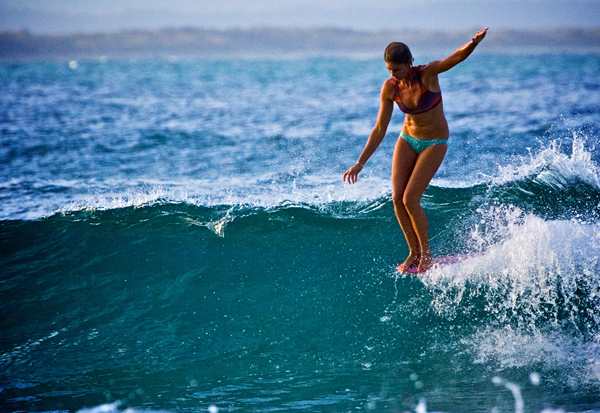



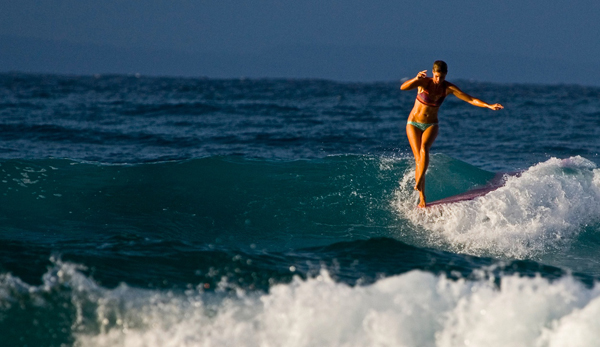
Matthew Allen Interview
Matthew Allen is a surfer / artist who is the creative director of The Ryde and was instrumental in the redesign of Surfer Magazine. Multi-talented, he is equally adept at graphic design, illustration, and photography. We caught up with Matthew to find out more.
What was life like growing up?
I had a pretty normal suburban childhood. I played a ton of baseball as a kid. Then I started surfing, and baseball wasn’t as important anymore.
Who did you look up to and admire when you were young?
I think my parents and grandparents. Also, I was really into historic figures in baseball. I really dug the way that Jackie Robinson played and the things he stood for. So he was probably a sort of hero too.
What was the feeling you had when you first stood on a surfboard?
Well, I taught myself to surf when I was 16 and I was attempting to learn on a 6′ 8″ gun at Doheny. So I probably wondered why I was sinking.
Where did your interest in art and design come from?
Neither of my parents are artistic per se, but they both are creative in their own way. I think they recognized that I had some talent so they gave me the tools I needed to pursue my passion. As a kid, I would randomly get the inspiration to draw at night and I’d stay up late drawing my favorite baseball and hockey players.
Tell us about your association with The Ryde.
On the last day of design class at junior college I finished my final project early and I began working on some t-shirt designs for a surf company called The Realm. Mike Figueroa came up to me, introduced himself, and asked if I’d like to do some art for a company he was starting. That company didn’t pan out, but we became friends and a couple of years later we started The Ryde. I do nearly all of the art and design associated with The Ryde. I have my dream job.
Of all the places you have traveled to, what place in particular stands out? And why?
In college, I traveled to Australia for two months with a church group. It was just a bunch of college kids and we went to Brisbane to help some people set up a ministry at the college there. We stayed in a bed and breakfast that the owners moved out of and they allowed us to take over. There were about 12 of us and we did everything together. We walked wherever we had to go, had group meals, it was very communal. The thing that really sticks with me though is that I was without all of the things that I hold onto dearly, and I was happier than ever. I wasn’t surfing or making art and I didn’t see my family, but I was in a loving community with a shared purpose and I met and befriended some wonderful people.
Who/what inspires you?
I’m inspired by people who overcome difficult situations and come out better people because of their struggles. Creatively, the photography of Ron Stoner is a big inspiration. He really captured the pure joy of surfing. Anyone who is doing something to make others smile is an inspiration.
What is the greatest thing you have learned in your life?
That the God of the universe cared so much for me that he sent his only son to Earth to suffer and die for my sins so that I can have eternal life. It might sound crazy to some people—sometimes it seems a bit crazy to me—but I’ve seen God move in my life. I truly believe that if you earnestly seek after God, the evidence points to Jesus. That said, I’m not one force my beliefs upon others and I totally respect people that believe differently than me.
What are you most proud of?
I’m proud that I have put the gifts and talents that I’ve been given to good use.
What meaning does surfing hold for you and how has it changed your life?
Surfing makes me happy. After college, both of my jobs have come about because I surf and understand what it is to be a surfer. Surfing mellows me out. When I’m driving home after surfing, I tend to be the guy going too slow on the freeway.
What brings you the most happiness in the world?
My family brings me the greatest happiness. From my grandparents to my aunts, uncles and cousins, I have an amazingly close family of truly wonderful people. I am blessed to be able to say that my best friends are my parents and my sisters.
Who are some of the people you feel are shaping the path for surfing today?
I honestly don’t know. When I worked at Surfer Magazine, I was so entrenched in the surf scene that when I left, I kind of left that all behind me. I haven’t paid much attention to it for the last year. I do know that people seem to be riding all shapes and sizes of boards these days. So, probably those people who are using their imagination to take the joy of riding waves to new places.
What is your favorite board? Your favorite surf spot?
I have a Rich Pavel fish that I broke a few months ago. That board was my all-time favorite. I rode it for five years. He is shaping me a replacement now. My favorite spot is probably Church’s. I can go surf there on my lunch break and, if I have a fish or a longboard, I’m pretty much guaranteed to have a good time.
What’s your favorite meal?
I have an açai bowl for lunch every day. The girls at Juice It Up take good care of me.
What are you currently listening to on your iPod?
M. Ward, Bön Iver, The Middle East, Lightning Dust, Edward Sharpe and The Magnetic Zeros, The Dodos, J. Tillman, Luke Top, The National, Phoenix, Vampire Weekend.
What are you most grateful for?
My family and my creativity.
What’s next for Matthew Allen?
I’m working on designing some boardshorts, sweatshirts and hats for The Ryde. That’s new for us. I’m going to get a Grain surfboard kit and build myself a new wood board. I’ve been hurt for a couple of months and unable to surf so I’ve been working on a photo project. I just got some great shots down in La Jolla this past weekend. I get my cast off the 19th, so rehabbing my hand and getting myself back in the water is next too.
Find out more about Matthew Allen here.
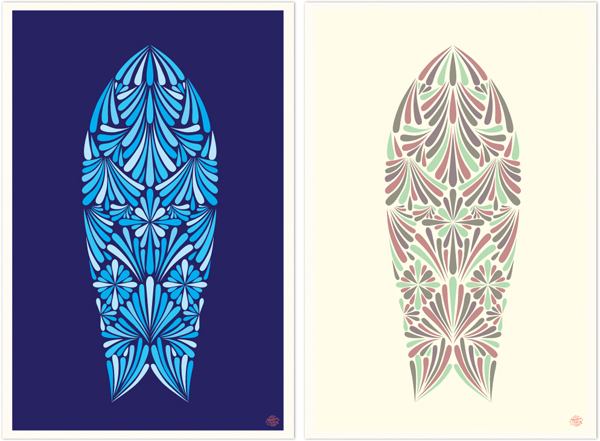

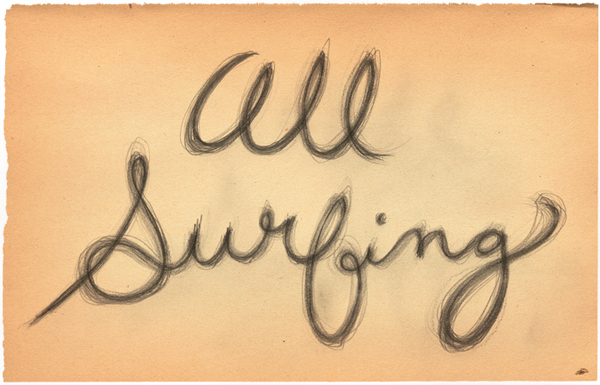
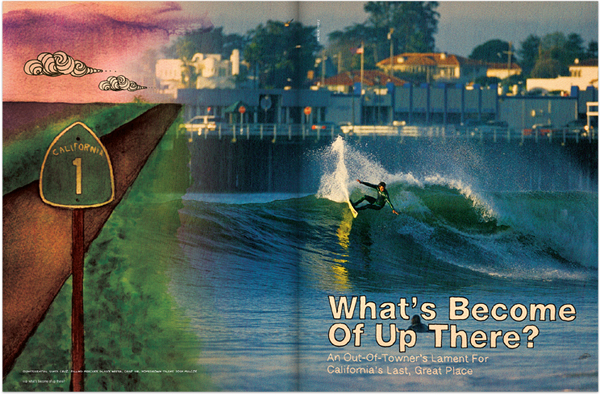
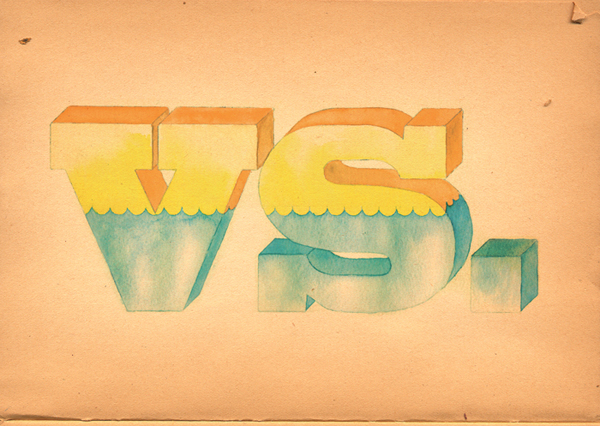
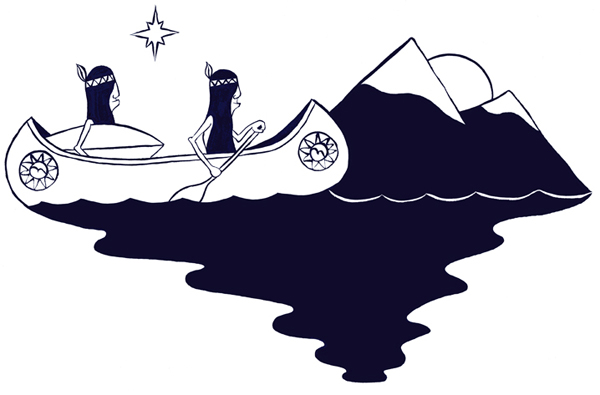
Chris Rule Interview
Chris Rule is a California surfer who is the owner and operator of Surfindian in Pacific Beach. This unique gallery features art-driven products created for the shop as well as serving as a creative hub for the surfing community. Chris talks to us about what inspires him and the happiness that surfing brings.
What was it like growing up?
I grew up in a small town in Oklahoma, a long, long way from the ocean. But I always remember loving the water, whether it was in creeks, lakes or even in swimming pools. To say that there was an absence of surf culture would be an understatement.
When did you get your first surfboard?
I got my first surfboard in the summer of 2001. It was a 9’2” Robert August “What I Ride” model. I remember walking with it down the boardwalk and it seemed too big to even carry. Now it would almost seem like a shortboard to me. I was so stoked to be taking part in surfing scene; I had been watching surfers for about a year at that time and thought surfing was the coolest thing I had ever seen.
What was the feeling you had when you first stood on a surfboard?
I just remember grinning ear-to-ear. You know, that big, open kind of grin where you can almost feel it under your ears. I was so happy.
Who did you look up to and admire when you were a young man?
Well, I can’t say that I really had any surf heroes, but I always admired my uncle who lived in Las Vegas. He always had a strong “go for it” spirit in everything he did. I have always tried to maintain that same kind of zeal, that same kind of zest. It was that spirit that led me to try surfing, and ultimately to open Surfindian.
What did you have in mind when you opened Surfindian?
I wanted to create a place to showcase all the tremendous artistic energy that is pouring out of the surfing scene. When I look at the surfing scene, I see all these great people and all their great projects. It doesn’t matter what the product of their effort is. It could be a surfboard or a t-shirt or a painting or a film. But what does matter is that surfing is the spark that ignites this massive ball of creative energy. I wanted to try to capture that.
How do you go about selecting the products and art that you showcase?
Initially, they have to be of the highest quality, and they have to be at the top of the game. That doesn’t mean that I won’t take a chance on a product or art that is new or unknown. In fact, I like to showcase products and art that haven’t been seen before or represent a fresh look at things. But first and foremost, the product or art must be really great. I always say that there are lots of good products and lots of good art, but there are very few great products and very little great art. I’m after the great products and great art.
Of all the places you have traveled to, what place in particular stands out and why?
I really love Hawaii. It just has a special feel to me. And I really love the native people of Hawaii; they represent this great indigenous culture that can teach us so much. I know that Hawaii has great waves, and that’s important, but the Hawaiian culture (particularly the indigenous culture and the way it manifests itself in modern life) is something that is really special.
Who/what inspires you?
I’m inspired by good people, no matter who they are or what they do. I’m inspired by people who are kind to others. I’m inspired by acts of generosity. I’m very inspired by people who have a fundamental respect for others.
What is the greatest thing you have learned in your life?
That happiness is only found inside you, and that the best life is a simple life.
Do you have any regrets or wish you had done something differently?
No. I always tell people that I’m the luckiest guy alive. Don’t get me wrong—I have had some tough times and some things to work through, but no regrets.
What are you most proud of?
No doubt about it … my two daughters, Elizabeth and Katy. They are by far the greatest things that I have ever been a part of. Everything else pales in comparison.
What meaning does surfing hold for you and how has it changed your life?
For me personally, surfing has a spiritual and mystical connection that I haven’t found in anything else. When I’m out in the water, there are times when I feel so close to God—or the Creator or Karma or whatever label you want to use. You can just feel your interconnectedness to the world and the forces that move and shape the world. You become aware that you really are sharing this experience with the dolphins, the fish, the birds, the trees and all these other forms of life around you. And sometimes, I just sit there astounded at the mystical nature of it all. It’s really an amazing thing—you’re riding this natural band of energy across the water, and it makes you feel really, really good. It’s really amazing.
Surfing has changed my life in that it has helped me to realize that the simplest things, the pure things, are the most important. If you have good health, close family and friends, and the ability to splash around in the glory of nature, you are winning the game of life.
What brings you the most happiness in the world?
I’m not sure about “the most happiness in the world” because a lot of things make me really happy. But, on a personal level, making other people happy brings me real happiness. My mom always says that I used to invite the other kids over to play in my sandbox, and then just sit there and enjoy watching them having a good time. I think I’m still doing the same thing except that now I invite everyone over to Surfindian.
Who are some of the people you feel are shaping the path for surfing today?
Skip Frye is still shaping the path for surfing, and he’s been doing it for awhile now. Skip affects things on so many levels—his boards continue to evolve, he’s been experimenting around with fins and, most importantly for me, he’s a shining example of how a person should conduct himself or herself both in and out of the water. I mean, the guy has so much stoke that it is contagious. I tell everyone that I want to be like Skip Frye when I grow up.
Donald Takayama is another person that I believe is still shaping the path for surfing today. Like Skip, Donald’s boards are magic, and he continues to experiment with new board shapes and fin configurations. And, in my opinion, Donald is the very embodiment of the “aloha spirit”. He is such a caring and warm individual. I want to be like Donald when I grow up as well.
And then, of course, there are so many great, younger, talented folks out there. In the women’s arena, I think that Julie Cox, Kassia Meador and Jen Smith are all leading the front for women’s surfing. In the guys’ arena, I think that Chris Del Moro, Mitch Abshere, CJ Nelson and Tyler Warren are all doing great stuff. And even though I don’t know him, I really respect how Alex Knost really pushes the edges creatively. It’s good to shake things up once in a while.
What is in your current quiver? What is your favorite board? Your favorite surf spot?
My current quiver is dominated by longboards. Most of my boards are from Skip or Donald, but I also have a Simmons-inspired board from Steve Mast that I really love, and I have a couple of Eaton bonzers that are a blast to ride. I have two favorite boards: my 10’ Skip Frye Braden Noserider and my 10’ Donald Takayama Double Ender. I’ve ridden a lots of boards and, trust me, those two boards are magic.
My favorite surf spot is good old Tourmaline canyon, right on the border of Pacific Beach and La Jolla. The waves, parking lot scene, crowds, sounds and smells—I love it all.
What’s your favorite meal?
Sushi, sushi and sushi.
What are you currently listening to on your iPod?
I don’t have an iPod; I’m a stickler for liner notes and pictures. But I’m a huge music fan. I’ve been listening a lot to the Mattson 2, the Growlers, Cal Tjader, Dengue Fever, Thievery Corporation and, of course, the Stones.
What are you most grateful for?
I’m most grateful for the opportunity to experience life and all that it entails, especially the events and relationships that have come my way. I’m really blessed and I love life.
What’s next for Chris Rule?
I’m opening a new board shop in March-two doors down from the current Surfindian location. It will still be under the Surfindian name, and will hopefully have the same “feel” that I have tried to foster in the current location. Ultimately, it’s going to feature the same kind of high quality, unique surf products that I currently showcase except that the emphasis will be more squarely on boards, clothes, and other surf-related products. I hope that it will be a place where people like to hang out and have fun. As for me personally, I’ll just try to keep up my simple life and get in the water as much as I can. And keep having good times and laughs with my family and friends.
Find out more about Chris Rule and Surfindian here. Portrait of Chris Rule and of him surfing are by photographer Gavin Joule.
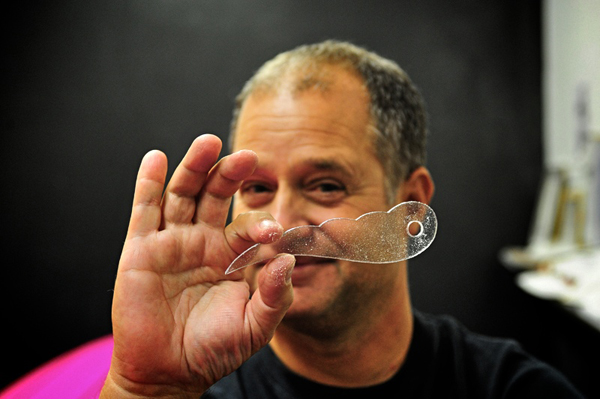
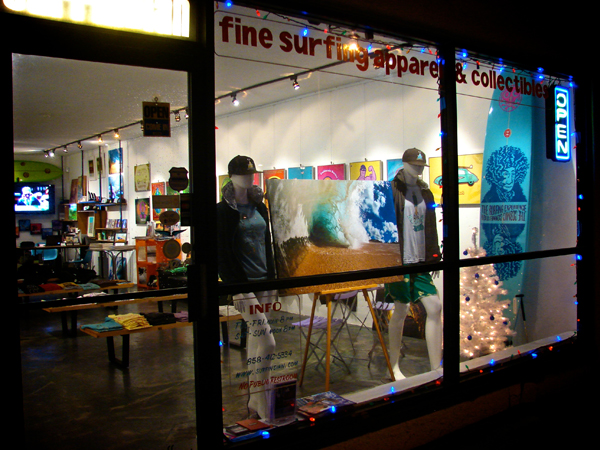
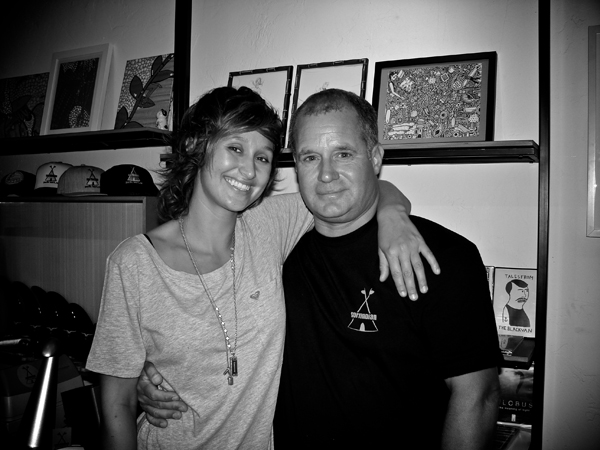
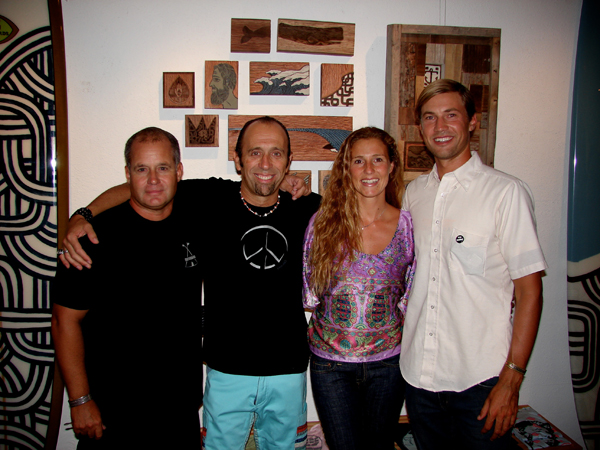

Jay Watson Interview
Jay Watson is a surfer / photographer working and living in Northern California. His oceanic images are deceptively simple, beautiful, and to the point. Jay talks to us about skating, surfing, and sushi.
What was it like growing up?
It wasn’t California. Baltimore is a blue collar baseball and football town. So I feel lucky I gravitated to skateboarding and riding freestyle bmx bikes. There were not many other riders, but my friends and I got to know most of the other guys in the area. We rode when it was –20 below in the winter and 100 in the summer. The ramps and parks were always getting torn down, so I was more into riding street. Baltimore has good mountain biking nearby, tasty seafood and some very creative criminals.
What attracted you to go surfing?
Growing up, I bought surfing mags because of the photography. Skateboarding got me interested in surfing. Outside of summer vacations, I was three hours from the ocean. When I moved to California and saw people surfing 70 yards away from where I was standing, it was time to start. Plus I was dating Pineapple Luv at the time; she gave me the extra push.
What was the feeling you had when you first stood on a surfboard?
Standing up didn’t feel like a big deal, but dropping in on a small wave felt better than riding down a vert ramp. I started in Northern California and suffered for two months getting into paddle shape. The glide slowly pays you back for your efforts, but the hard work is what I remember the most.
Who did you look up to and admire when you were a young boy?
Grizzly Adams, Evel Knievel, Muhammad Ali, Bruce Lee, Johnny Unitas, Tinker Juarez, Eddie Fiola, Alva, Natas, Caballero, Rodney Mullen, Ken Bradshaw, Andy Warhol.
What inspired you to be a photographer?
The seed was planted through my experiences with magazines. Bob Osborn started several BMXand freestyle magazines, and he also shot for them. There were also skate photographers—Mo Fo, Bryce Kanights and Grant Brittain. Their work was delivered to my house in mags every month. Warhol was into filmmaking and photography, so the camera also felt like a natural artistic choice.
What is your process for creating a great photo?
I research and plan out ideas for my portrait work, and my photo essays are usually inspired by a theme. Action sports requires knowing your gear well and being in the right place at the right time. You can have all the luck in the world, but it won’t matter if you are not prepared.
Of all the places you have traveled to, what place in particular stands out? And why?
Harpers Ferry, West Virginia is a special place due to its history. I have hiked trails in that area several times and it feels like it is still occupied by the spirits of Native American Indians. The North Shore of Oahu is my favorite surf place. With all those historic spots stacked next to each other, it feels like Manhattan.
Who/what inspires you?
I was floored to see Duane Peters at age 48 rip at a skate contest last year. Clyde Aikau competed in “The Eddie” this year at age 60. They make me want to be a better photographer because we should never stop progressing. California inspires me because it has been a big part of my life before I even got here and my wife, Jamie, helps make everything look so natural and easy.
What is the greatest thing you have learned in your life?
One, you can’t pick and choose your friends. Two, a wrestling match only lasts six minutes (you can pick any sport).
Do you have any regrets or wish you had done something differently?
I had a nice-looking silver ‘85 VW Jetta that was always in the shop. I worked like a dog to keep it running, but I regret not launching that pig off a cliff instead. It owned me.
What are you most proud of?
That things I am most ashamed of are really not that big of a deal.
What meaning does surfing hold for you and how has it changed your life?
I am not a spiritual surfer at all. I just like riding waves. Surfing is incredibly challenging and humbling. Conditions are always changing, so it becomes obvious that it parallels some of the lessons in life. I appreciate the few moments during a surf session when I turn my back to a wall of water coming at me. When do you ever get to do this in real life? If I am stressed out in the water because I am not catching waves, it usually means I am not doing something right in my life. We should never be stressed walking away from the ocean.
What brings you the most happiness in the world?
Hot coffee. The feeling after skating, surfing or riding bikes. I love doing a good job on an assignment and seeing it in print or making my own prints. All of these things are addictive.
Who are some of the people you feel are shaping the path for surfing today?
Danny Hess, Tom and Jon Wegener, Cyrus Sutton. These guys are raising the awareness to make surfing more environmentally friendly. I would love to photograph Christian Wach and Alex Knost. They rip. Greg Long is on a roll and it must be for a reason.
What is in your current quiver? What is your favorite board? Your favorite surf spot?
9′ Bob Miller, 6’4″ twin-fin fish, 9’4″ single fin shaped by Ted Gallup. The 9′ Miller is a horse that can catch waves in almost any condition, but I am trying to get better on the fish. My favorite surf spot is Pleasure Point in Santa Cruz when it is not crowded. That is a rare occasion.
What’s your favorite meal?
I crush sushi like Godzilla and pasta like Vito Corleone.
What are you currently listening to on your iPod?
Listening to Howlin’ Wolf, Bobby Blue Bland, Raekwon and KEXP Radio out of Seattle.
What’s next for Jay Watson?
Currently, I am working on promo posters that I might also offer for sale. My to-do list looks like cryptic chicken scratch. There are people I want to photograph in the North Shore, San Diego, LAand in my own backyard. In 2010, I’ll be doing some video work and heading more in that direction. I am looking at Dubai and Japan, and wondering why I have not been there yet. What is up with that?
Find out more about Jay Watson and his work here.
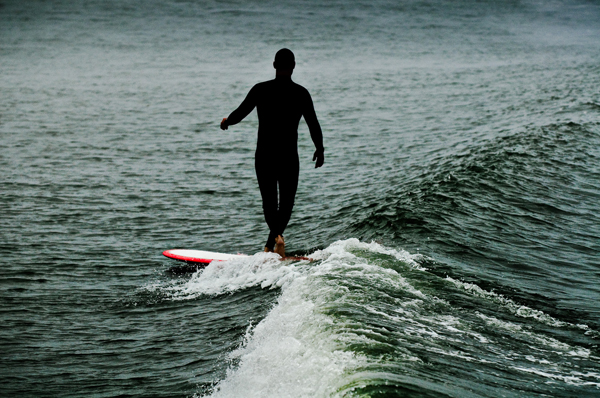
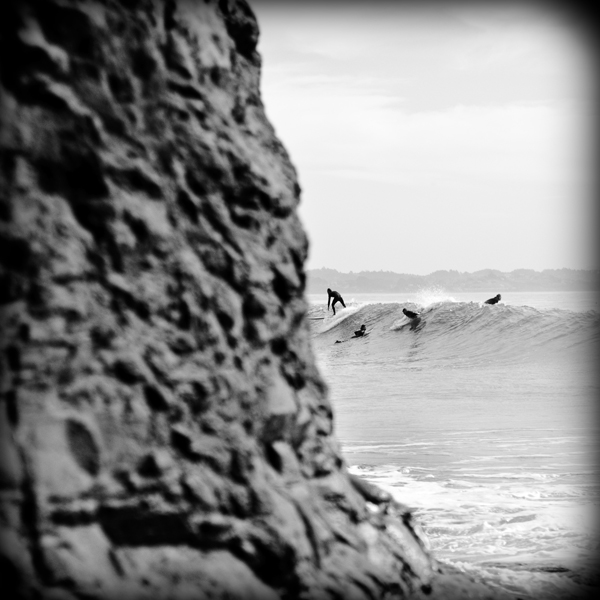
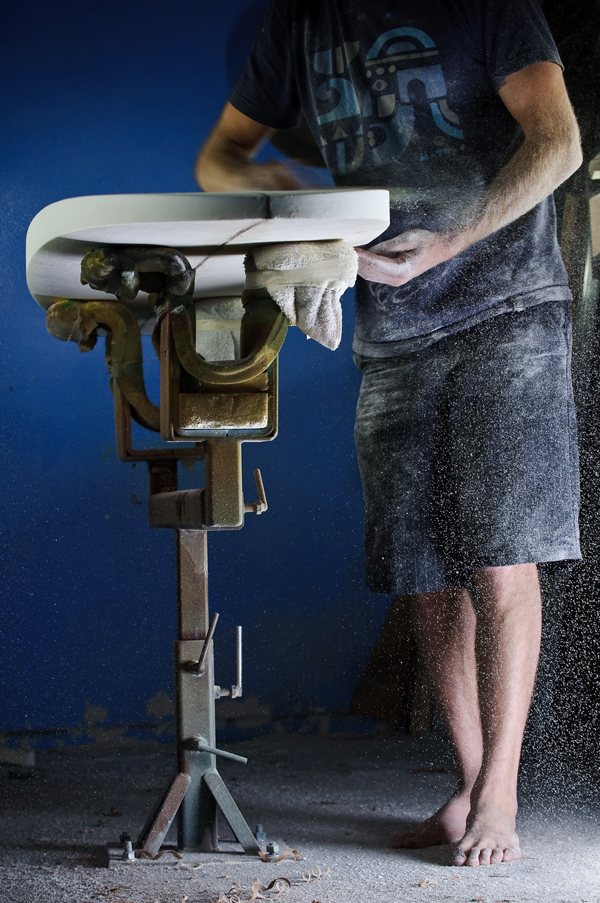
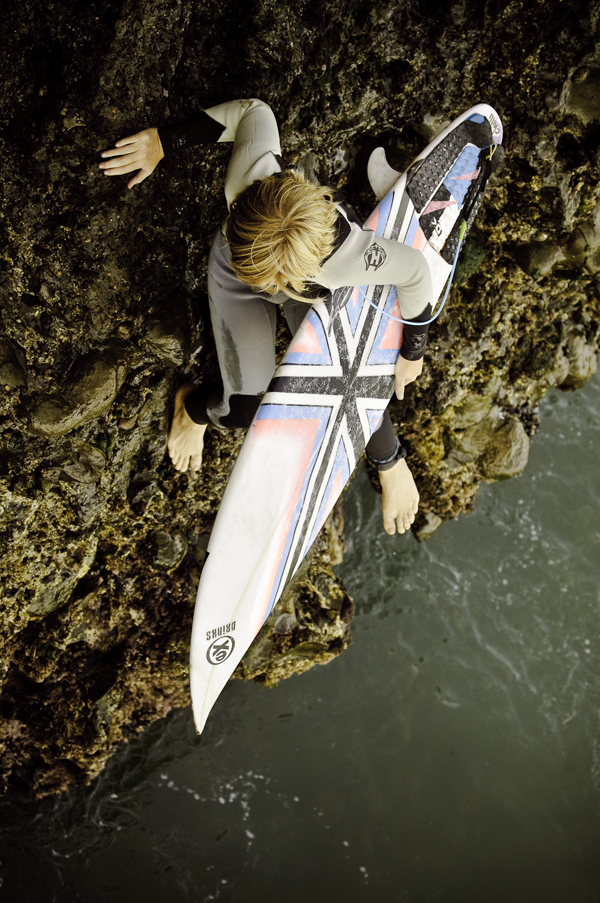
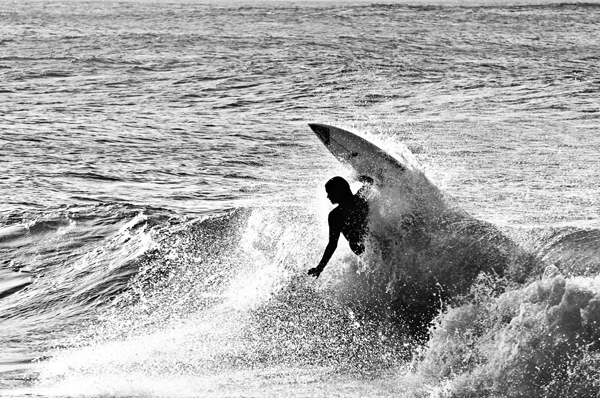
Carla Rowland Interview
Carla Rowland is a California surfer who grew up riding First Point Malibu since she was a child. She is renowned for her style and grace on a board as well as her no-nonsense attitude in the water. Carla talks with us about single-fins and her new found love.
What was life like growing up?
I had an amazing childhood. I was born in the San Fernando Valley when there was still some empty land available. I romped around on our property for 10 years and when the development started moving in, my dad made a dream come true and moved our family to the hills of Malibu. Although not logistically that far, moving to the affluent community really transformed my life.
Who did you look up to and admire when you were a young girl?
Obviously, my parents have been a significant part of my life, and if not for them, I would not be here. As far as those I admired in surfing, during the early to mid 90’s, there were more men in the lineup than women to look to for emulation. Lance Woleslagle, Dylan Jones, and Josh Farberow were my main male influences. Of the few women I had to look up to, I admired most Brittany Leonard for her grace and unbelievable noseriding skills, Diane Sanders for her power and no-nonsense approach to Malibu and Phranc Gottlieb for her traditional old-school style. Outside of Malibu, and still to this day, I have always had the utmost respect for Cori Schumacher. Her amazing control in and out of the water is a quality I hope to master.
What was the feeling you had when you first stood on a surfboard?
I actually vividly remember my first ride. I was six or seven years old, and my family was camping at San Elijo State Beach, as we did bi-annually every April and October. My dad had convinced me to paddle out with him on his longboard. Once in the lineup, I recall looking to the beach and thinking the cliffside looked so small and far away. I clearly remember our first ride because as we were riding in, my dad had slipped off the board and I rode in on my own. I recollect looking back at my dad as he waved and smiled, and I rode the wave all the way into the shore.
When did you get your first surfboard?
Although my first ride was at a fairly young age, it took a number of years for me to be convinced that surfing was meant to be a central theme of my life. From the ages of seven through 14, my dad may have had more luck pulling my teeth out than getting me on a surfboard.
For some reason, I had a great deal of apprehension about getting in the ocean, although when I would get out there, I’d have a blast. That being said, it wasn’t until I was about 15 that I got the surf bug and, at that point, I just rode my dad’s 10-foot Lance Carson. It was about a year later that my dad bought the first board that was really meant for my small frame—a Toot Gundy.
Tell us about your involvement with Malibu.
I have been going to Malibu since I was just a babe in diapers. My dad began surfing there in 1963, so the renowned break has pretty much been engrained into my life since the beginning. Growing up as a young woman in a male-dominated, testosterone-filled break such as the highly visible First Point was not always fun.
The days of the “palapa” were filled with good times. However, there were also many times where being a woman meant being humiliated and degraded. I managed to survive and I cannot say I would necessarily want things to have gone differently, for if they had, I do not think there would be all the women that now flood the lineup on a regular basis.
Of all the places you have traveled to, what place in particular stands out? And why?
There are still so many places I have yet to witness, but of the travels I have had thus far it is easy to say that Japan is, by far, the most amazing country. I have had the opportunity to travel there twice—once to the southernmost island of Kyushu, and most recently to the incredible metropolis of Tokyo and its surrounding areas. I am most fond of the local peoples, who are so kind and generous, as well as all the incredible Japanese cuisine. And despite the lack of frequently pumping swell, they have a rich surf community that is very supportive of American surfers such as myself. How can you hate on that?!?!
What is it that makes you such a nice person? What code do you live by?
I can hear some people laughing at this question because many would probably testify that I am not the most congenial. On the contrary, I consider myself someone who is real and not usually afraid to say what you’re all thinking. Few may know that I am a devout Christian who tries my best to follow the Golden Rule—treat others as you would like to be treated. I believe the foundation to harmony is to give respect in order to get respect. People that have witnessed my not-so-nice side were probably people who lack that Golden Rule knowledge.
What inspires you?
God and his omnipotent strength inspire me, as well as seeing others fight against injustice and for equality. Selflessness. Unconditional love and consideration are qualities I hold in high regard.
Who do you admire?
Approximately 15 years ago, my father began showing symptoms of neuropathy and spinal stenosis. It slowly took its toll until it reduced his surfing capabilities to a sit-down view only. Since the controversial craze that is stand-up paddle surfing, my dad has rediscovered the view from on high and is ripping once again … even if it is facilitated. It wasn’t until I fractured my tibia in August and was immobile for a couple months that I earned a new appreciation for what my father has been dealing with. To live each day in a constant, even if dull, pain, but persevere through life in a positive manner is truly a monumental task. I have such admiration for my father’s strength and determination to make the best of the cards God has dealt him.
What is the greatest thing you have learned in your life?
I have a general knowledge of worldly things. I received honors when I earned my college degree in Communications and have traveled the world where I have experienced other cultures. However, the greatest thing I have learned thus far is that I really know nothing. Albert Einstein said it well, “Whoever undertakes to set himself up as a judge of Truth and Knowledge is shipwrecked by the laughter of the gods.”
Do you have any regrets or wish you had done something differently?
If I had done anything differently, I’m afraid that would have misdirected my path to the love of my life (Ian Zamora). Through him, I have found what it is to truly be at peace.
What are you most proud of?
I am most proud of graduating magna cum laude and receiving Communication Program Honors from Cal State Channel Islands last year.
What meaning does surfing hold for you and how has it changed your life?
When I was 15, I was involved with an unhealthy group of kids. I made the difficult decision to remove myself from the situation and began hanging out at First Point. My only friends were over the age of 45. (Thank you to Judy Gross, Cary Weiss, and Steve Stanley!) Although it was an incredibly tough decision for my insecure adolescent self to make, if it had not been for that change, I would not be where I am at today. In the beginning, surfing was a means of establishing my identity with a collective group. Now, it is more about exercise, expression and peace of mind. The older I get, the harder it has been to deal with the madness that occurs among the masses every summer at Malibu.
What brings you the most happiness in the world?
I am most happy when I am with my love, Ian. I know it’s cheesy, but true.
Who are some of the people you feel are shaping the path for surfing today?
I think surfing is in a weird place right now. The men have it all going on and the women have been left out to dry, especially women’s longboarding. The biggest problem is that the artists have no control of the art. The big money companies are holding the reins and decide who, what and how our division of the sport is going to be represented. As with the current Hollywood paparazzi culture, too much of what is being portrayed as “women’s longboarding” is, in fact, just smoke and mirrors. Seeing the real actors get their name on the marquee is long overdue.
What is currently your favorite board? Your favorite surf spot?
It’s no mystery that I am a lover of the traditional, single-fin school of sliding. I have been most fortunate to have boards custom built for me since 1996—first by Scott Anderson and most recently by my man, Ian Zamora. I have always been a fan of the pintail, which I continue to ride. I have the capabilities to ride almost anything, and I tend to surprise myself when I step outside my little box, but I have the most fun when I am riding my log or my mid-length single-fin at a nice, long pointbreak like Malibu, Punta Pequña or Tea Trees.
What’s your favorite meal?
Seared albacore salad. For dessert? T. Joe’s Vegan Chocolate Chip cookies.
What are you currently listening to on your iPod?
I have so much music I just stick it on shuffle! The playlist I’ve been bobbin’ to lately includes Mt. Saint Helen’s Vietnam Band, Yeah Yeah Yeahs, Rachel Yamagata, Sia, Yo La Tengo and Rogue Wave.
What are you most grateful for?
I am most grateful for the men in my life—my dad, my boyfriend and my Lord. The last few months were the most physically difficult of my life thus far, and if it had not been for Ian’s patience and strength, my father’s sympathy, and my Lord to carry me through, I don’t think I would be in the position to write these words today.
What’s next for Carla Rowland?
As the other half of a growing surfboard label, Ian and I plan on continuing with international promotion. We hope to go to Australia in March, the Philippines in May, Japan in June, and Europe in the fall. In the meantime, I will continue my work as a substitute teacher in the Malibu school system and as a surf instructor in the Los Angeles and Ventura counties.
To learn more about Carla Rowland, click here. Photography credits: 1&5 — Ian Zamora. 2–4, 6&7 — Steve Lippman


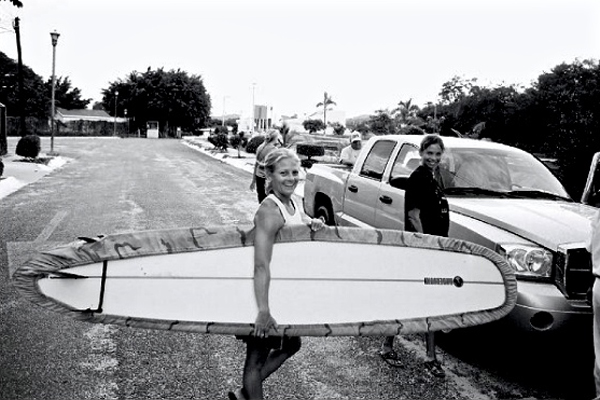
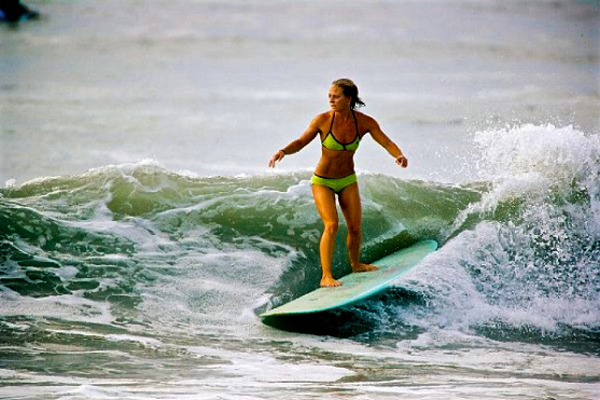
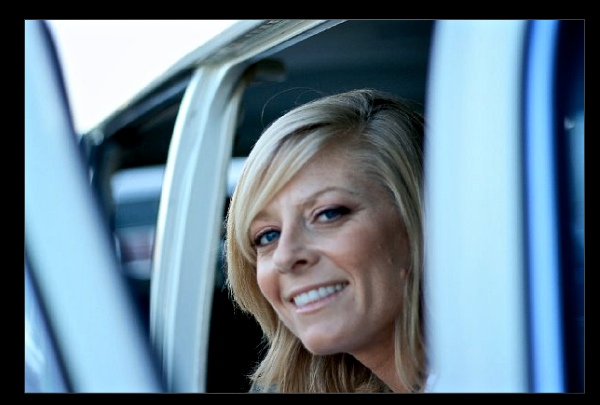
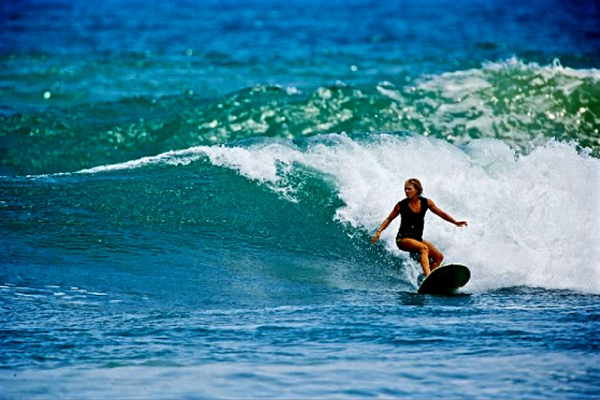
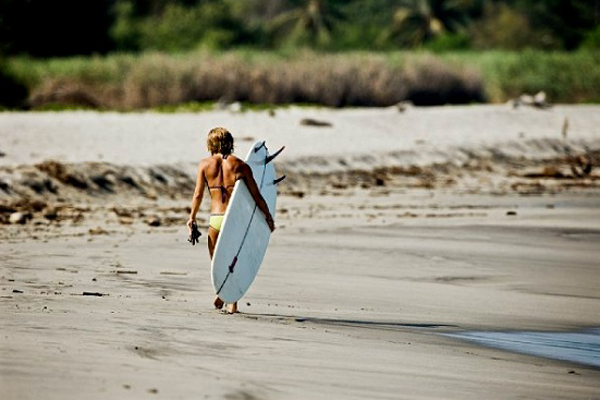
Jim Evans Interview
Jim Evans is a surfer / artist who is best known for his stunning airbrush illustrations for the surf and skate industry back in the ‘70s. Surfing has always been a big part of Evans’ life and that kinetic energy continues to propel him into his multimedia graphic design today.
What was your life like growing up?
I grew up in Oceanside, CA, and spent most of my time surfing, playing in a rock band or drawing. Very little attention was paid to school, although I did manage to get a varsity letter on both the swimming and tennis teams. Trips to Mexico to surf or hang out in Tijuana were a pretty regular occurrence while in high school.
When did you get your first surfboard?
In 1961. It was a 9’6” board built by Don Hansen, who had just opened a shop in Cardiff. I spent $125 of my hard-earned newspaper route money to get it.
What was the feeling you had when you first stood on a surfboard?
I loved it. I had always spent a lot of time in the ocean, but the experience of surfing was a huge game changer for me. Surfing became the center of my universe; everything else revolved around it. I learned pretty quickly, immediately joined the Tamarack Surfing Association and entered local contests. When the Oceanside Invitational happened in 1964, bringing the top guys to town, I was totally hooked on competition.
Who did you look up to and admire when you were a young man?
When I was young, I mostly admired musicians: Buddy Holly, Link Wray, Eddie Cochran. Then the Rolling Stones, Yardbirds and other English Invasion bands. From a surfing viewpoint, my first idols were Phil Edwards and L.J. Richards; they were both local and the most stylish surfers I had ever seen. Since then, it has been mostly artists, designers, photographers, or filmmakers (like Warhol, Sagemeister, Murakami, Del Toro, or Hedi Slimane).
How did you get involved in art?
I’ve always been an artist. When it came time to make a living, I started doing posters for my band and other local bands. Soon, I had a tidy little business going. Then, I went to Cal Arts and got into the underground comic scene. That led to album covers, rock posters and a career. I met Rick Griffin early on. We surfed together and he introduced me to everyone. I soon had more work than I could handle.
Of all the places you have traveled to, what place in particular stands out and why?
The North Shore of Oahu is my favorite place. It has everything and the surf energy is electric. You feel like you are at the center of the surf universe, and the conditions are always dynamic and challenging.
Who/what inspires you?
My inspiration changes and it is more in the nature of fascination or obsession. I currently find all the permutations of new media inspiring. The way that new things instantly replace old in the area of communication is something I appreciate. I also find the lack of respect for existing paradigms and methodologies to be refreshing. New disruptive technologies come along and change the perception of what communication means, leading to altered views of art, music and every other form of basic human interaction.
What is the greatest thing you have learned in your life?
I’ve assembled a lot of information, and observed what seem to be many of life’s lessons, but I’m not really sure I’ve learned anything of lasting value. Each time I think that I have learned something, another lesson comes along and changes my viewpoint. For me, there is no empirical truth—only shifting perceptions of the nature of reality.
Do you have any regrets or wish you had done something differently?
None … except possibly wishing I had worked less and enjoyed myself more.
What meaning does surfing hold for you and how has it changed your life?
I started surfing so young that I’m not sure that surfing changed my life as much as informed my development. Surfing became my central obsession, a source of fun; it led me on adventures and provided exercise. I tended to live places where I could surf. Most everything else I did because I had to do it. Surfing I did because I liked it.
What brings you the most happiness in the world?
Spending time with my wife and family.
Who are some of the people you feel are shaping the path for surfing today?
Kelly Slater obviously is a huge inspiration and has driven surfing to new levels. I like Taj Burrow, Andy Irons, Dane Reynolds, Mick Fanning and Bobby Martinez. Also, I think Sofia Mulanovich and other top female surfers are inspiring, and are having a major influence on the popularity and development of the sport. All of the slab surfers at Shipstern’s and the extreme tow guys at Jaws have completely altered what surfing can be. I love to watch.
What is your favorite board? Your favorite surf spot?
I’m a big fan of Al Merrick’s Channel Islands boards. I have a 6’6” Flyer thruster, a 6’8” Flyer II, and a 7’0” K-Step (for the big winter swells or trips to Hawaii). My favorite spot is probably 2nd Point Malibu at medium to low tide on a big late summer swell. Mid-summer, I surf up top at 3rd. Other spots I dig are Swami’s and Tabletop down south, and C-Street and Rincon up north.
What’s your favorite meal?
Sushi at Nobu in Malibu.
What are you currently listening to on your iPod?
It changes constantly, but today I’m listening to Alberta Cross, Artic Monkeys, The Big Pink, XX, Health, Darker My Love, and Monsters of Folk.
What causes/organizations do you support?
My wife, Nancy, and I actively support gay rights, AIDS research, cancer research, Heal the Bay, Surfrider Foundation, pro choice, and all manner of progressive environmental, gender and human rights politics.
What’s next for Jim Evans?
I just got a new Nikon D3s, so I’ll probably run around and take lots of pictures.
More information about Jim Evans and his company Division Thirteen can be found here.
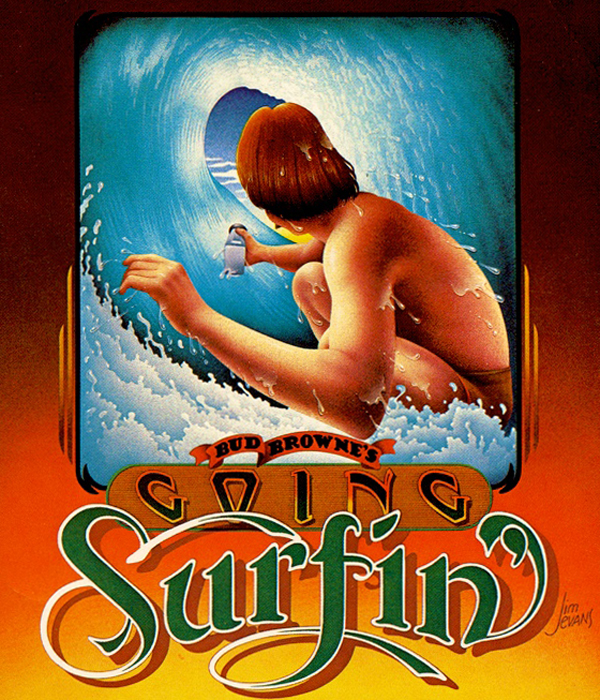
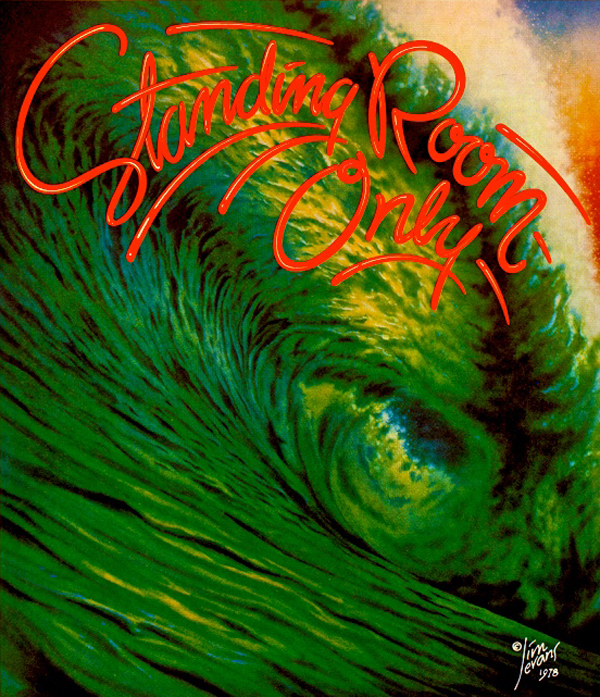
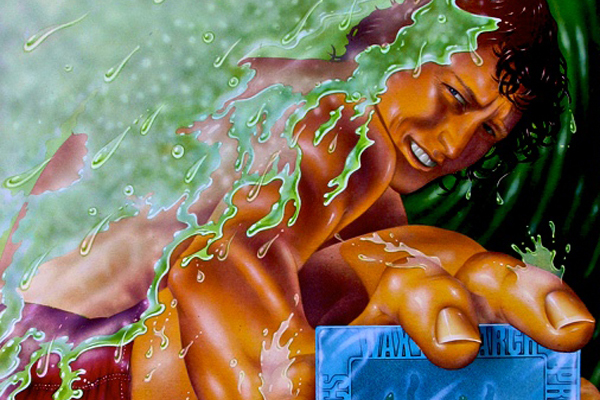
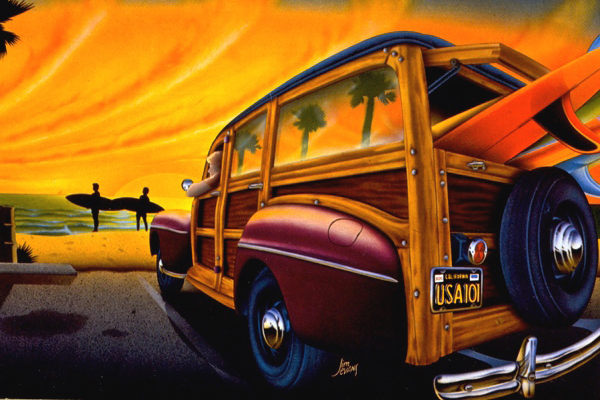

Alessandro Ponzanelli
Alessandro Ponzanelli is an Italian surfer whom we recently discovered via Facebook. When we asked his fellow countryman who was the best surfer in the region was, he exclaimed “Ponzanelli!” A visit to YouTube confirmed that he was indeed an amazing surfer. Allessandro spent some time with to tell us about the Italian surf scene and his inspired life.
What was your life like growing up?
I was born in Pietrasanta, the youngest of three brothers. I grew up in Versilia, a seaside area known more for its discos and nightclubs rather than for its waves. My family used to spend its summers at seaside resort “Wanda”. It was run by Ario Bertacca, one of the pioneers of the Italian surfing. Together with some friends of mine and with my elder brother Luca, I approached surfing when I was only 12, but in spite of this my mother let me go with them even during summer wind swells. At first, I used to stop surfing during winter. But when I was about 15 and surf had already become something important and real in my life, I bought a wetsuit and started surfing at every swell. With my friends, I used to hang out at Nimbus Surfing Club, and when it was flat we used to go sailing and windsurfing.
When did you get your first surfboard?
It was my brother who gave me my first board—an old shortboard Costa Ovest, a local brand. It was sprayed and had a curious slogan on the tail: No alla mafia nello sport (“No mafia in sport”). I went on for some seasons to borrow longboards so as to be able to go surfing as often as possible. In the end, I bought one.
What was the feeling you had when you first stood up on a surfboard?
That moment is still impressed in my mind. “Freedom” is probably the right word to describe the sensation.
Who did you look up to and admire when you were a young man?
When I was a little child, my models were my elder brothers, Michele and Luca. I often went out with them and their friends, and I know to them I was a real pain in the ass!! I preferred staying with older guys because people of my age did nothing else but playing football and I had other interests. As a surfer, I’ve always admired Joel Tudor and I grew up watching (and studying) old Herbie Fletcher videos.
What should we know about the surfing scene in Italy?
Despite what they say, it is possible to go surfing in Italy, but you need a lot of free time since you usually have to drive a lot to find the right place and in winter you’ve to face freezing conditions. Many pro surfers have visited our peninsula—some were lucky and surfed waves they would have never imagined to find in the Mediterranean. Others were not as lucky. The problem is that swells are sporadic, especially in summer when you can face long flat spells.
Who/what inspires you?
Many surfers, be they famous or not, have inspired me over the years. Among them, Oliver Parker (whom I surfed with while in California). He’s probably one of the best longboarders at Rincon; he’s got a great style and can surf regular or goofy without you realizing which is his stance.
What is the greatest thing you have learned in your life?
That you should never cease to believe in your dreams.
What are you most proud of?
I’m doing what I love doing and I’m proud of it, proud of the goals I’ve reached in surfing, proud to work with Sundek, which supports me and allows me to travel.
Of all the places you have traveled to, what place in particular stands out and why?
The poor conditions of the Italian surf pushed me to travel a lot, over the years, in the endless search for the place where I could find the perfect waves and settle down. A safe place, but also an uncontaminated one. I think Australia can be this place. Another place I love to go to, and which is quite near from where I live, is Sardinia, a happy island in the middle of the Mediterranean. To Italian surfers, this island is like Hawaii, a wonderful place with some of the most beautiful spots in the Mediterranean. It’s there that I found some of the best waves I’ve ever surfed and the water is really clear.
What meaning does surfing hold for you and how has it changed your life?
I’m a reserved person and I’m at ease when I’m out with my board—my mind free of thoughts. I gave up studying, and I know this could be penalizing in the future, but I’ve learned a lot from traveling and meeting several persons who positively influenced me and my way to look at things. Everybody should have his own dream and this is mine.
What brings you the most happiness in the world?
Go surfing on uncrowded waves with my best friends.
Who are some of the people you feel are shaping the path for surfing today?
Joel Tudor, Tom Curren, Kelly Slater, Rastovich
What is your favorite board? Your favorite surf spot?
I got several boards that I love, but maybe the one I enjoyed the most and that reminds me about a lot of adventures and great moments is my 9’4″ Tudor noserider, which I literally destroyed while competing in national contest and bringing it with me while travelling all around the world. As for my favourite surf spots, I could mention Noosa, Hollister Ranch, Malibu.
What’s your favorite meal?
Tordelli with ragù.
What are you currently listening to on your iPod?
Talking Heads, Neil Young, Led Zeppelin, Rosco P. Coltrane
What are you most grateful for?
For my family. And to be happy.
What’s next for Alessandro Ponzanelli?
I’m working very close with Michele Puliti, a local shaper, and I’m learning how to build a board. I don’t know if this could turn out as a future job, but it’s okay for now. I’m now leaving for another surf trip to some remote area in Indonesia.
A video clip of Alessandro Ponzanelli can be found here. Photography credits: 1. Cristian Corradin 2. Tommy Lopez 3. Cristian Corradin 4. Giuseppe Repetto 5. Luca Ponzanelli
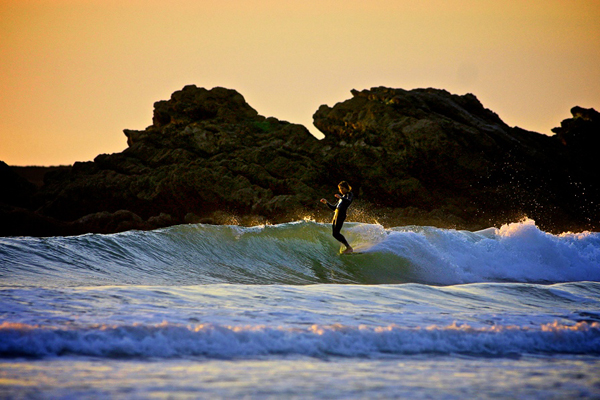
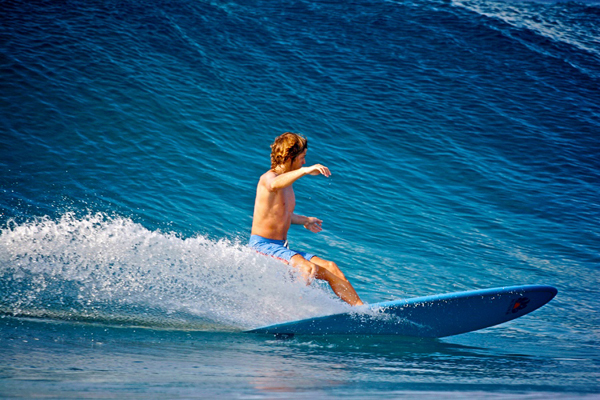
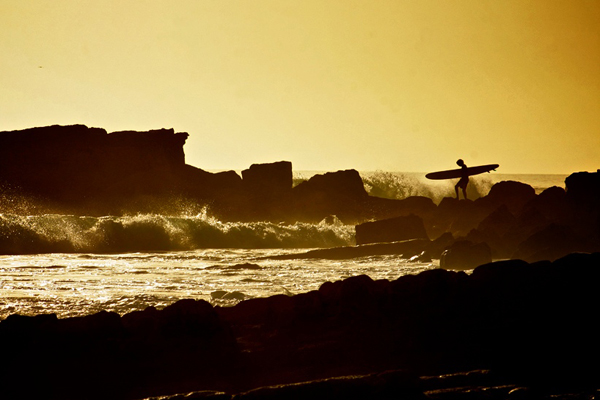
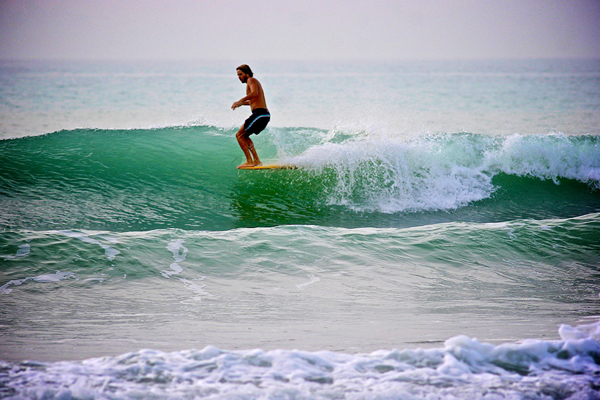
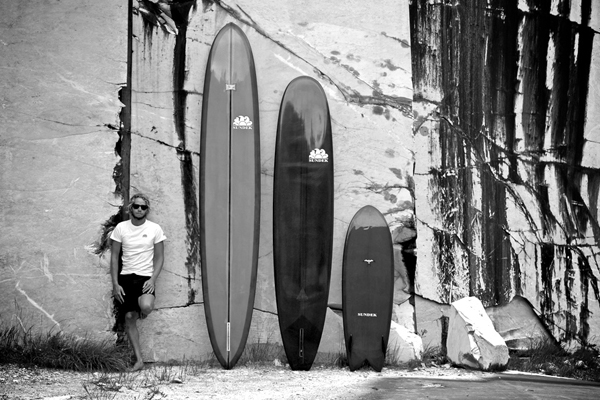
Josh Hall Interview
Josh Hall is a surfer/shaper from San Diego, California. His innovative shapes are a direct result of the many hours spent with his mentor, Skip Frye. His boundless energy and stoke is evident in the way he lives his life. We caught up with Josh to find out more.
Tell us about growing up in California.
I was born raised in the San Diego area and spent my time in Pacific Beach, the Crystal Pier area. I got into the sport pretty late but it was a natural progression from riding the soup when I was young. Starting off boogie boarding, I made the transition to surfing around my second year in high school. It’s late by today’s standards—where if you are not a pro by 14, you might as well give it up! (Laughs)
Describe your first board.
My first surfboard was a used Donald Takayama/Hawaiian Pro Designs surfboard. I think it was a 9’2”.
Who did you look up to as a young man?
Joel Tudor was a huge influence on me and still is. And the local guys like Skip Frye, Bird Huffman, and Joe Roper. I grew up very lucky. My baseball coach was Bob Boeche, the owner of Diamond Glassing. I wouldn’t be anybody if it weren’t for the people I have known or met. They make me who I am today.
My grandfather was a big influence on me also. The best piece of advice I got from him was to never shun anyone away for what they say. Always listen to what they say because you never know—you might learn something that can help you in the future. He taught me to be more sociable and to always listen to what someone has to say.
I have been extremely blessed with all the people I have been associated with so far in my life. And I’ve been to places I’ve never thought I would go to, and to be able to work and surf is mind-blowing.
How did you get started shaping?
It stemmed with me just wanting to surf. My dad is a carpenter and my grandfather is an engineer, so I have always been around building things. It originally started with ding repair and when I turned 18, I just bought a blank and totally went at it with the wrong tools. Shortly thereafter, I ordered a board from Skip my second year of college and I watched him shape it. And that was just the most … I can’t describe the experience of watching him handcraft this board. From that point on, I told myself this is something I just have to do.
Why do you surf?
Because I have to. If I don’t, I freak out! Surfing for me is release. When you’re out surfing, you aren’t thinking about other things, problems or stress. Sometimes it feels like a real selfish sport because you’re out there doing it by yourself, but for me it’s like another form of church. I feel connected—there’s the spiritual side of it. The physical side of it? It keeps you in shape being in the water. Like I didn’t surf in the last three weeks and when I got back from my trip, that’s all I did for the next four days. It’s an addiction and it’s a connection to Mother Nature. It fulfills me in many ways.
Who are some of your heroes?
Skip is my number one hero of all time. The local guys—Larry Crow, Joe Roper, Bird Huffman, Joel Tudor. I could give you a laundry list, but those are the main influences for me.
Tell us more about your relationship with Skip.
What I admire most about Skip is how he has been able to maintain his sanity after the last 50 years of surfing with the ever-growing crowds. He is as stoked now as he has ever been. To have been literally “The Guy” from the beginning, and to be still so stoked to reinvent and test and experiment with stuff. He is absolutely amazing because he can continually rekindle the stoke without being bitter or sour.
One day, Skip suggested we do a board swap. He said, “I’ll build you a noserider if you make me one of those quad fishes.” I was like, “Whoa! Okay.” I was thinking a 10 footer and he was like, “No, make it a mid-length.” So I shaped him this 7’11”. We went out and it was a really good day, and Skip was paddling out with Richard Kenvin (another hero) and he was ripping on the board I built. He told me it paddled well, it trimmed, it went down the line. This thing went good. It was such a special day.
I feel like it is my responsibility to carry on the tradition that Skip started. Because once he stops shaping them, there won’t be anything like the boards he makes. I am trying to keep it pretty close to what I grew up riding my whole life and what I’ve learned from him.
What’s next for Josh Hall?
Opening new markets. Going back to Europe and developing some more markets in the British Isles and others. Just to continue what I am doing. I’ve got a team going and this past Windansea contest, I had five boards in the finals. It was so cool. It’s cool that people are riding my boards and liking them.
Find out more about Josh Hall surfboardshere. Follow his Hole in The Hall blog here. Top three photos courtesy ofRyan Tatar. Fourth photo courtesy of Doug Agillard. All photos are used by permission and are the property of their respective owners.
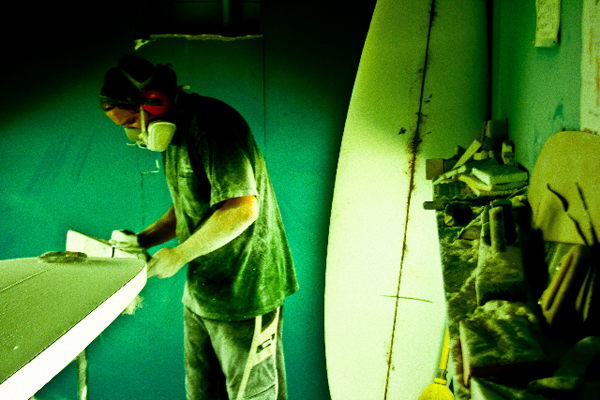
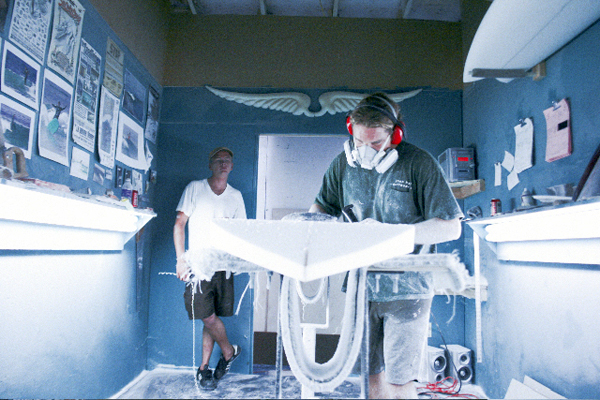
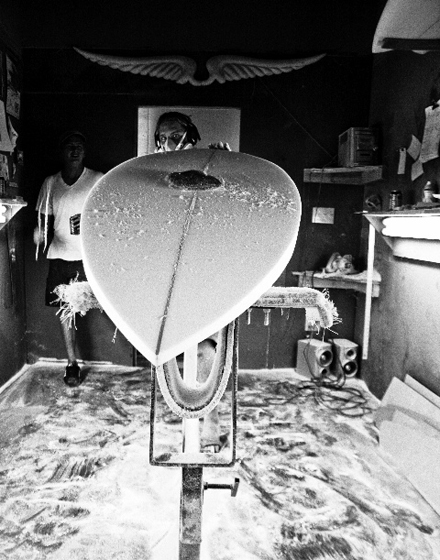
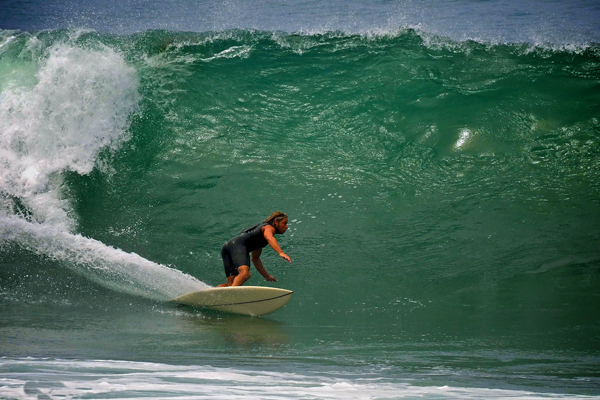
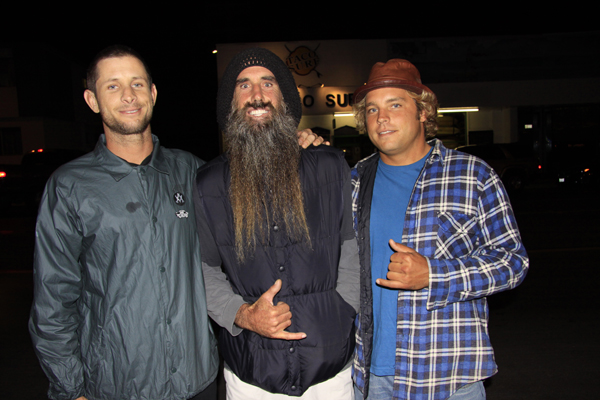
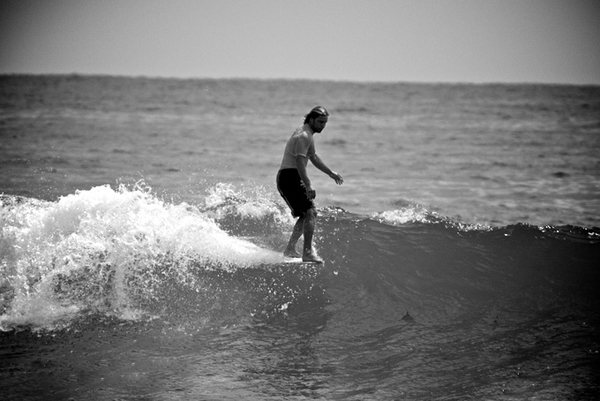
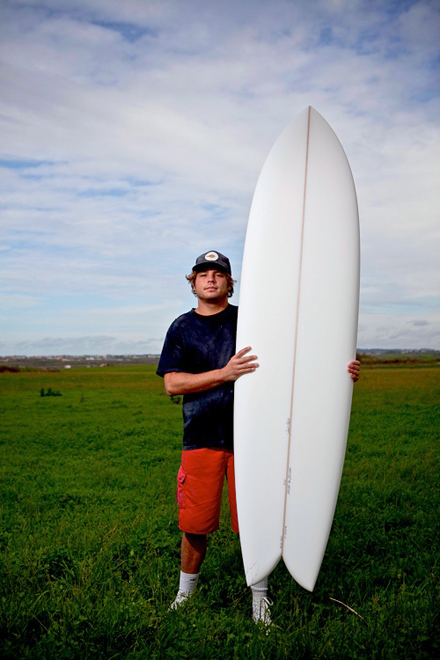
Chris Del Moro Interview
Chris Del Moro is a California surfer / artist who recently starred in Thomas Campbell’s The Present riding an Alaia. Equally adept at riding all wave craft vehicles, he is also the owner of Collectic, a surf inspired clothing line. We caught up with Chris to get the lowdown.
What was life like growing up?
My childhood revolved around love, exploration, creative endeavors, family, fun and a early connection to the sea. I was raised in between my mom’s world in Los Angeles and Florence, Italy where my biological father is from. Being exposed to these two very different cultures from such a young age was a blessing I am just now fully understanding.
Who did you look up to and admire when you were a young man?
I have always admired my grandfather, Chester Wolfrum, and my grandmother, Luanne. My mom has been my rock. Marley played a large role in expanding my mind and Curren for his lines drawn in the sea. I have also always been attracted to naturally gifted beings that shine light upon our world.
When did you get your first surfboard?
I saved $75 from recycling cans one summer. Then I coaxed my cousin Mischa into taking me to the local surf shop and I bought a 6’0″ Stavros squash tail thruster,with pink lams and two purple gorilla grip deckpads—thick and sick. That afternoon, he took me out in overhead storm surf and I came close to drowning. I’ve been hooked ever since.
What was the feeling you had when you first stood on a surfboard?
Bliss.
Where did you interest in art come from?
Art has always been a natural expression. Since childhood, I vividly remember expressing myself through various forms of working with my hands—from finger painting sofas, drawing G.I Joe figures and eventually having my doodles turn into my work.
What is your process when creating your art?
I’ve always traveled with sketch books; it allows me to scribble down thoughts, images and various inspirations I experience. I’ll often reference my books and use many of the rough sketches as inspiration for various fine art pieces, clients or a great reason to get creative and unwind.
Of all the places you have traveled to, what place in particular stands out? And why?
Liberia—so raw, powerful and unique to any place I’ve ever experienced. Really turned my world upside down. Never experienced such harsh living conditions. Made me realize how ridiculously blessed many of us are to live the lives we lead and that if the amazing people I met in those circumstances can have a smile on their faces day after day, I sure as hell need to monitor the so-called bummers of life.
What is it that makes you such a nice person? What code do you live by?
I’m only a product of the people and places I surround myself with. I’m blessed to have great friends, family and the opportunity to experience the power of nature on a regular basis.
Who/what inspires you?
Anyone true to himself—who uses their talents to help the earth or other people.
What is the greatest thing you have learned in your life?
When you look at earth from afar, it’s a mere speck which in turn dwarfs continents and really helps remind me we, as humans, are nothing more than spiraling particles of sand floating around the great unknown.
Do you have any regrets or wish you had done something differently?
No. Everything has happened for a reason. Good, bad or cosmic, we learn from all our actions and hopefully are aware enough of the implications to make change or continue on blessed paths.
What are you most proud of?
Living the life I dreamt of as a child.
What meaning does surfing hold for you and how has it changed your life?
Surfing is my daily dosage of nature; the sea cleanses me, gives me energy and always keeps me striving to reach a higher level in life. In so many ways, it has shown me the world, given me the substance to survive and is the “funnest” activity I’ve ever experienced.
What brings you the most happiness in the world?
Nature, love, music, and food. Tapping into all four on a regular basis sends me into orbit.
Who are some of the people you feel are shaping the path for surfing today?
Anyone who is able to lead from their hearts instead of their minds. It’s such a pure way to slide waves. Seems to be the best way to find true, magnetic positive energy via wave riding.
What is in your current quiver? What is your favorite board? Your favorite surfspot?
I’m a board whore—love experiencing different elements of trim and slice and dicing. Currently, I’m hoarding alaias, traditional Bing longboards, single fins, quad shredlips, thrusters, keels, bonzers, big ass wooden boards, old pigs, carbon fiber rockets, asymetrical mind trips, knee boards and, oh yeah, love me a good boogie board now and again.
I surf a lot in North County San Diego and all around the world when I’m not home. Static sporadic.
What’s your favorite meal?
Quinoa with Earth Balance, avocado and herbal mare, side of tofu and veggie scramble and a massive shakra salad with water.
What are you currently listening to on your iPod?
Kings of Convenience is playing right now. Beirut just wrapped a set and Pandora has been set to Bjork, Thievery Corporation and a song called “Cosmic Lovers” has been inspiring me as of late. Besides that, I’m obsessed with my record player and my vinyl collection is getting out of control.
What causes/projects/organizations do you support?
I help run the Surfers for Cetaceans organization alongside a great group of ocean activists from around the world, helping to keep our sea clean, stop the Japanese dolphin hunts and hopefully sideline the continued hunt of whales in the Antarctica Whale Sanctuary (www.s4cglobal.org). Besides that, I support any other group helping to fight for the preservation of this amazing planet.
What’s next for Chris Del Moro?
Waiting for the tide to rise so I can shred—absolutely jonesing for the glide. Then I can feel normal again, get to some of the art jobs that I’m way behind on. Have some travel plans (Australia and South America), new boards to test, fresh air to breathe, people to meet and happiness to spread. If you read all this banter, I appreciate your time and wish you well on your path.
Find out more about Chris del Moro and his clothing line here. All photographs courtesy of Dane Peterson.
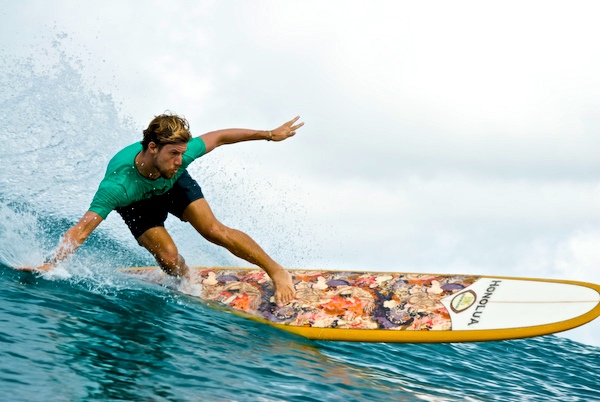
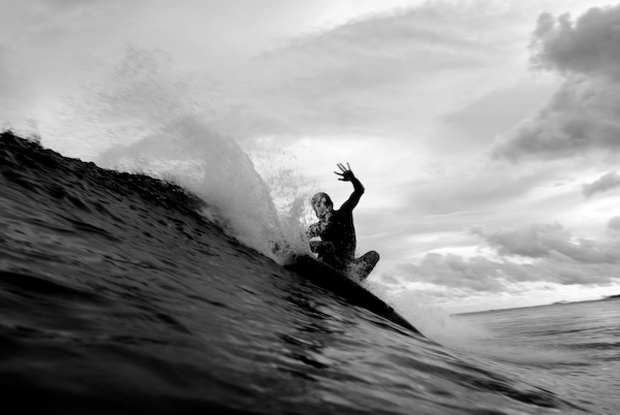
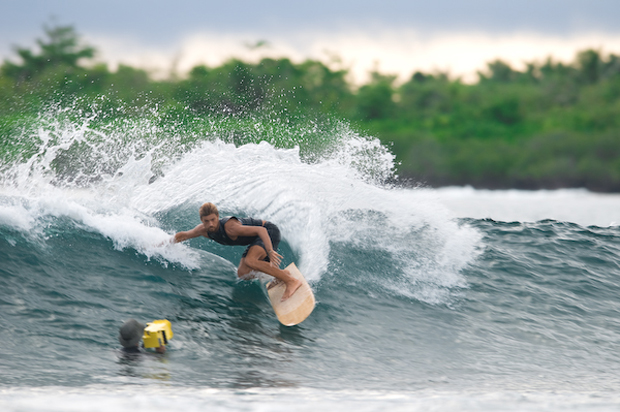

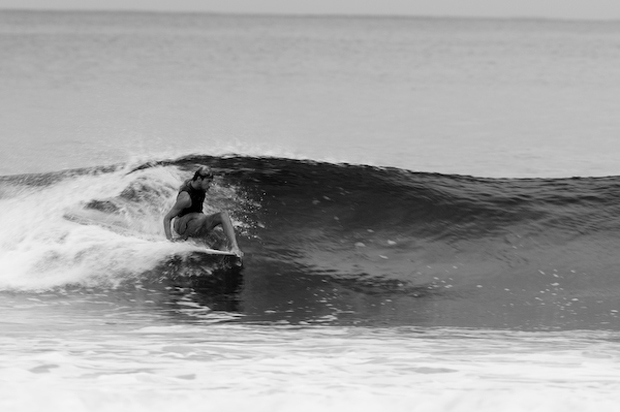
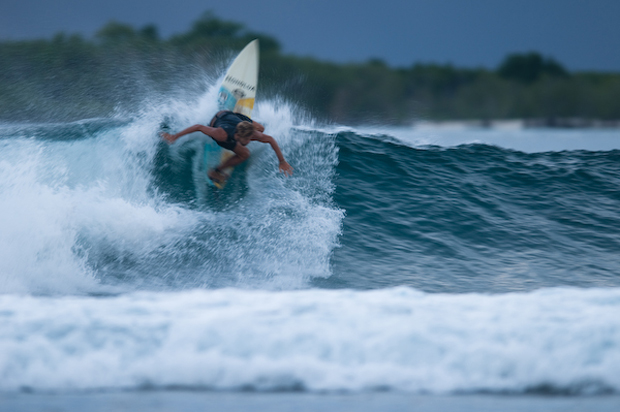
Adrian Knott Interview
Adrian Knott is an Australian illustrator and is the creator of the Rake Clothing line. His unique and vintage inspired designs are a combination of lines and colorful characters that end up on shirts, walls, and boards. Adrian took some time to speak with us about his life and his art.
What was life like growing up?
We moved to Noosa Heads, Queensland when I was around nine. It was a great place to grow up as a grom—lots of surfing before and after school. Then we moved back to Melbourne, where I became stranded in the city one and a half hours from the beach—which made it hard to get regular surfs. We were lucky enough to have a beach house, so we would head down the coast on the weekend. Skateboarding was my only outlet in the city.
Who did you look up to and admire when you were a young man?
Probably my dad as he was a keen surfer when I was young. He had this strange double arm paddle when he would catch waves; it seemed to work well for him. He was a talented illustrator. He had some amazing drawings I would rifle through and get stoked how good they were. Later, as a teenager, I worshipped all the Powell Peralta crew and dudes like Matt Archibald and Christian Fletcher. Heavy metal and airs!!
When did you get your first surfboard?
Six years old. It was a finless foam board. At 11, I got my first fiberglass board. I got so excited, I forgot to put the legrope on and then watched it tag every rock on the point.
What was the feeling you had when you first stood on a surfboard?
I don’t think my brain can think that far back, but I am sure I was super stoked … as I am today every time I surf.
Where did you interest in art come from?
My dad’s drawings and from skateboard graphics of the 80’s and 90’s. I also spent hours looking at Rick Griffin’s art. I was amazed at the detail in his drawings; that dude was a freak! My dad was in the rag trade and he actually got the license to sell the Griffin t-shirts in Australia. So there were plenty of amazing t-shirts lying around the house. I think I still have them in the shed.
What is your process when creating your art?
I worked at Rip Curl for seven years and there was no room for creating. The deadlines were super tight. I had to pump designs out like a sausage machine. These days I like to spend more time on concepts.
Sometimes I have a mind explosion of ideas, but most of the time I spend days trying to come up with ideas over a long process. I am really fussy when I am producing art for my own label. I use Photoshop to come up with a rough layout of what I need and then fill in the holes. I do a lot of drawing as well as using the computer to fine-tune designs.
I use many mediums in my work. Screen printing, wood collage, ink and acrylic on wood, computer art, scans—it’s just one big mish mash. I think I have had to learn lots of mediums as being a freelance artist you can’t just serve up the same style for 20 t-shirts. You have to learn to make each one as individual as possible.
Of all the places you have traveled to, what place in particular stands out? And why?
Out of all the places I have been, I still love to travel in Australia. We have so many great beaches to explore. If there are no waves or snow, I don’t want to go there. I am hanging to hit Japan; that is my next trip for sure.
What is it that makes you a nice person? What code do you live by?
Well, I hope I am a nice person!! I try my best to respect others all the time. If people are nice to me, I will give them the same in return.
Who/what inspires you?
I have met some real amazing, talented people over the last five years who have become great friends. Most of them are artists and surfers. They inspire me to produce better work. I get to see their projects firsthand.
Books are a great inspiration to me also. I have a massive collection of vintage kids’ books, old mags and contemporary books which make researching and “thought-starting” a lot easier.
What is the greatest thing you have learned in your life?
Well, I guess just to enjoy life every day and make the most of what you have.
Do you have any regrets or wish you had done something differently?
No regrets.
What are you most proud of?
I am still working on that!! Eventually, I want to dedicate my time to helping with conservation of animals and preventing cruelty. It really gets my goat some of the things that go on in this world. That’s why I respect people like Paul Watson, people who are willing to get off their asses to try and change things.
What meaning does surfing hold for you and how has it changed your life?
My life pretty much revolves around surfing. I could not imagine life with out it. I am lucky enough that my girlfriend is a super keen surfer also, so we both wake up and get super amped to get waves. This works real well for me.
What brings you the most happiness in the world?
Great food, punchy head high barrels, family, my girlfriend, art and animals.
Who are some of the people you feel are shaping the path for surfing today?
I guess I spend more time looking at the surf industry than actual surfers. For me, it would be RK, Jeff McCallum, Tyler Warren, Joel Tudor and Tom Wegener. I think there is definitely a big change in the surf industry at the moment. It will be real interesting to see where it goes next.
What is currently your favorite board? Your favorite surf spot?
I am absolutely obsessed with the Mini Simmons boards!! I am blown away with the design. My mates just laugh at my boards, Dudes on the beach freak and ask, “What the fuck is that?” I am so into riding super short boards at the moment. I have two boards that I made: a 4’11″ and a 5’2″. That is all I ride unless it’s tiny. Then I bust out the 9’9″ log. I have been shaping my own boards over the last year and glassing them also. It is the best feeling to make your own board.
As far as surf spots go, it would have to be any grinding beach break with a barrel section.
What’s your favorite meal?
Thai food is so good. No meat though—I am a tofu eating hippy.
What are you currently listening to on your iPod?
I have an iPod, but I don’t use it at the moment. I just turn on the radio as it connects me with the world. Otherwise I feel like I am living in a bubble.
What causes/projects/organizations do you support?
All organizations that are into conservation of animals and the environment.
What are you most grateful for?
Family, friends and health.
What’s next for Adrian Knott?
I have a lot on the go at the moment. I am currently working on a collaboration range of foam sleds with two local Torquay dudes (Jordan Nobel and Sean Nettleton) to come up with a solid range of boards. I am also working on the new range for Rake for summer, so pretty much putting all my effort into creating our new line of trunks and tees. I just received a tee from Seamouse, who is in the art series this range. Looks sick! Hopefully I will do a couple of exhibitions this year. Also maybe hit California to visit some of the accounts and friends I have made recently.
Learn more about Adrian Knott by visiting the Rake Clothing website here.
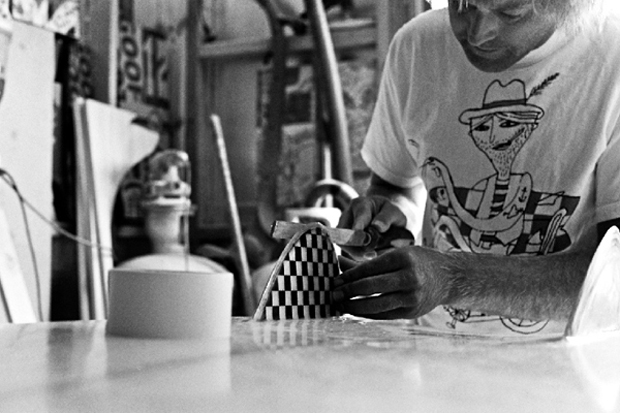
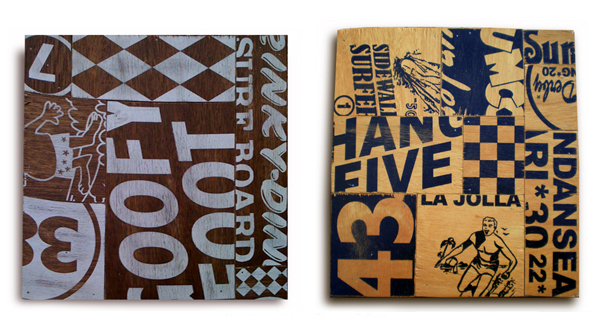

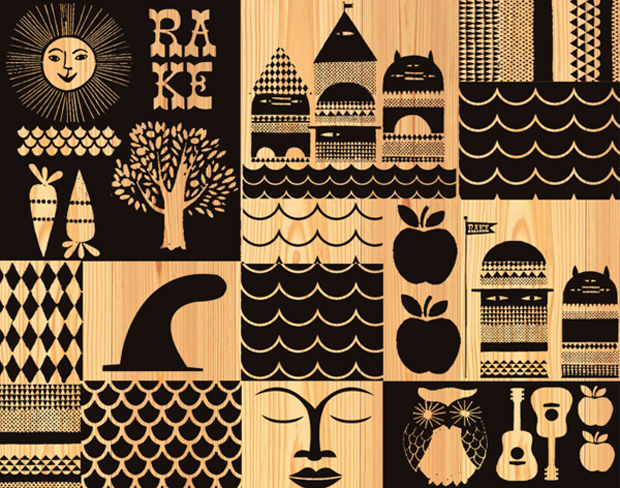
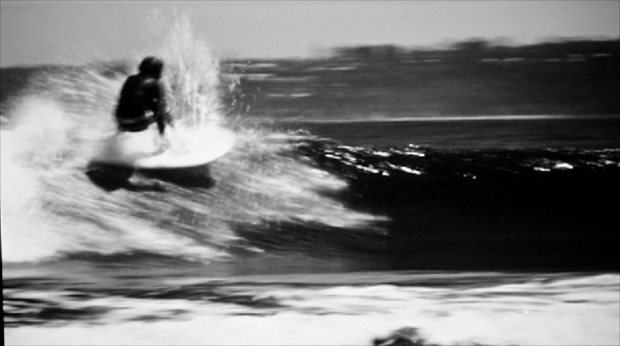
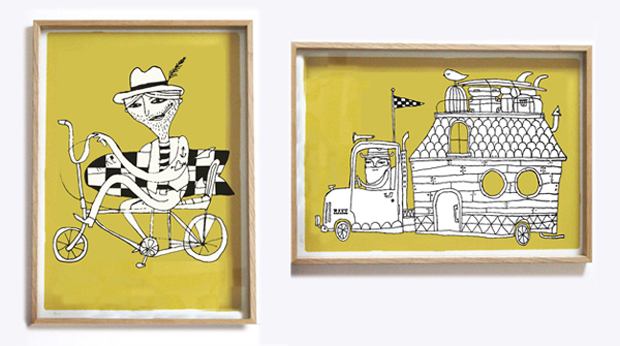
Kassia Meador Interview
Kassia Meador is a California surfer who is one of the most recognizable women longboarders. She is well known for her smooth, stylish riding and high energy personality. We caught up with Kassia to talk about her surfing and her new interest in fine-art photography.
What was your life like growing up?
It was pretty rad. I grew up in the Valley so I didn’t really grow up by the beach. I didn’t start surfing until I was 14 or 15. I guess it was a little different back when I started, especially with kids these days now being sponsored and traveling around the world. I did skateboarding and snowboarding – just doing what kids do living in the Valley. And once I started surfing, I did everything I could just to get down to the beach.
Where did you go when you first started?
I started going to C Street in Ventura, County Line, Malibu, and Leo Carillo. It was at Malibu the first time anyone took a photo of me surfing. My first photo ended up being published in Longboard Magazine. It was crazy – I was riding this old board with a single-fin, wearing a ripped up wetsuit (which was from my boyfriend at the time). I was just pumped with surfing. I never realized that photo would lead me to where I am today.
What was the feeling you had when you first stood on a surfboard?
I remember my first green wave, when I stood up on a real wave and not just whitewater. I can remember seeing the sand through the clear water and it was like I was flying! Even thinking of it now, I still get that fluttering feeling in my heart about it.
Who did you look up to and admire when you were a young girl?
From surfing Malibu I was influenced by Brittany Leonard, who I really looked up to. Also, there was Carla Rowland, who was one of the older girls at Malibu when I was a grom. They both just surfed it so well.
What is your approach to surfing?
I try to surf in a way that feels right. I’m not the kind of person that likes to force things. Some might think that’s boring, but I just really like smooth surfing. Of course, if you’re trying to learn something new and you fall a couple of times it might look a little silly, but there is a time and a place to do a nose ride or a hang ten, or heels. I just try to read every wave and try to do things as they are called for, instead of forcing something in a weird way.
How important is style?
Growing up at Malibu and surfing there, I was able to see some of the best surfers in the world. I am a very visual person. That’s why I am into photography and I really enjoy films. So aesthetically, I will just like the way someone surfs, especially if they are smooth. That’s why I like how Joel (Tudor) surfs or someone like Dane Peterson. A smooth style is something that I appreciate and I want to emulate with my surfing. I really have a difficult time watching people surf when they are just “all over the place,” I just can’t visually accept it. (laughs)
Let’s talk about your photography.
I am really into photos and photo-based things. I have always traveled through surfing and I have always looked at surfing as a very visual thing and something I really like. I’m very lucky to travel to many visually stimulating places and to be around a lot of creative people. Through my travels, I have always been shooting images and through this I guess I’ve developed my own unique way of seeing.
I was showing Thomas Campbell some of my images a few years ago and he said, “These are pretty cool and you should show these.” It was Thomas who helped edit my work and show my photography at my first ever show in Japan. As a filmmaker, photographer and surfer, Thomas is such an inspiration to me. I’m lucky to have people like him that mentor me and can be someone I can look up to.
What do you look for when you shoot images?
I am looking for something that pleases me. It’s kind of like you know it when you see it. It could be the way that different things might come together or the way that they are placed. If something appeals to me aesthetically, I’ll take a shot of it. I might have a scene in mind and I will do what it takes to make it happen. There’s just a certain feeling that I get when shooting images – just like the feeling I have when getting a wave. Like knowing when to do a turn or a nose ride. It’s just paying attention to everything that is around.
I was recently in the Bahamas with Scotty Stopnik and Mikey DeTemple. We were surfing this place and there was a crazy moment when I saw something but I just wasn’t quick enough to capture it. I told Scotty to stand there and have Mikey go by again on the wave so that I could capture the moment the way I saw it in my mind.
I don’t want to take photos of waves. I am more interested in the surfing lifestyle. I just want to take photos of my friends and the vibe I get when I am surfing.
Tell us about your relationship with Roxy.
I have been with Roxy since I was 17. It’s been ten years now. They picked me up two years after I started surfing and have been such a blessing in the way they’ve always supported me. There was a time when not too many people were longboarding and everybody was riding crazy tri-fins and doing airs. Roxy has really supported everything I’ve done. They started doing women’s longboard contests just to support the movement. They’ve supported me with my surfing, my photography, and my art. They’ve given me a signature wetsuit and even a clothing line that is about to launch soon.
Are you still riding Donald Takayama’s boards?
Jeff Hakman and Donald saw me surfing out at Tea Tree in Australia, and Donald turned to Jeff and said “You put her on Roxy – can you put her on my boards?” I’m totally still riding his boards. Right now, I am really into my 9’4” [Takayama] Model T. We have been working on a refined Model T for a bit now and finally got it right. I love that board and how it glides.
Just like Roxy, Donald’s been so supportive of me. He’s been a huge mentor for me. With my surfing and with my life – he’s like my grandpa. It’s been a combination of Roxy and Donald that have taken me to where my life is right now.
Raen Optics is another sponsor I am proud to be a part of. They’re amazing. Thomas is working with them along with people like Alex Knost and Mitch Abshere. A bunch of really cool, creative, people. I’m really excited because they are really promoting my photography as well as my surfing. It’s a whole new movement we are trying to push – kind of like the “ride-it-all” gang. And to surf because you love it and not because you want to be a jock. There are two sides of surfing – the lifestyle part of it and the jock sport aspect. Raen is pushing the lifestyle part of it. And that’s the part of surfing I really love.
What’s your favorite meal?
Fresh sushi from the fish joint in Oceanside.
What are you currently listening to on your iPod?
Joy Division, Electrelane, Camera Obscura, Passion Pit, Yeah Yeah Yeahs
What causes/organizations do you support?
Keep-A-Breast.
What are you most grateful for?
My health, and my family and friends
What are you most proud of?
That I have always stuck true to my roots and did my own thing. I started out riding a single fin and still ride one primarily. There were a couple of years when I moved to Oceanside when Donald wanted to make me a tri-fin and I was surfing beach breaks when I used to only surf points. I kind of went down that trip for a while, but now I’m back to riding single fins. I will also ride fishes and other kinds of boards that I love. I’m just fortunate that I don’t have to do contests that might keep me riding stuff that I am not that into. I’ve kept true to what I love about surfing and how fun it is.
To learn more about Kassia Meador click here. All photography by Nick LaVecchia.
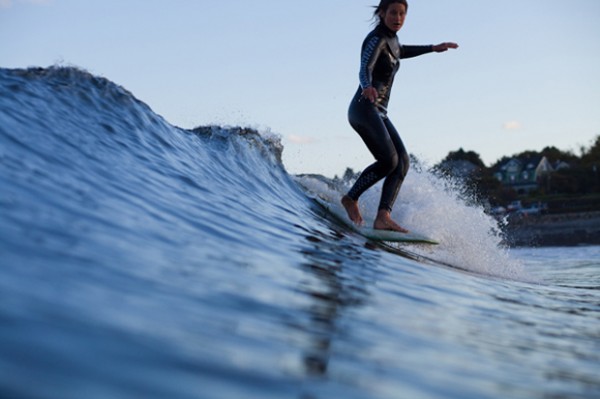
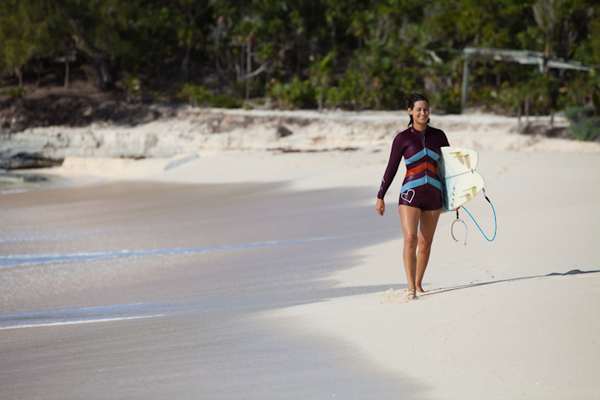
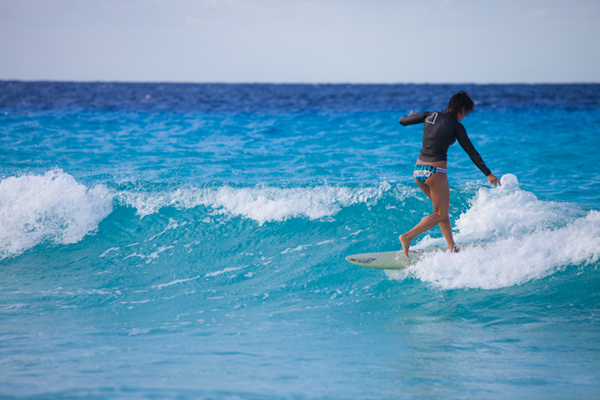
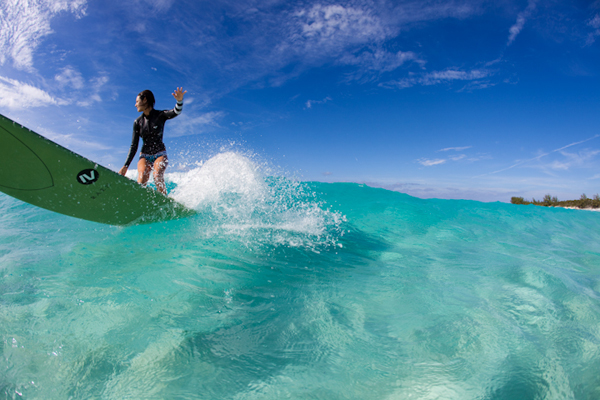
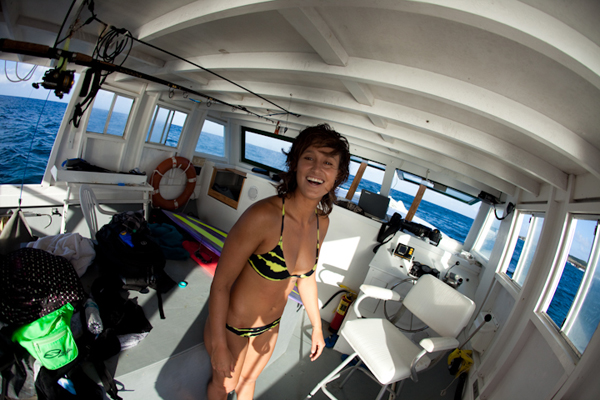
Zeph Carrigg Interview
Zeph Carrigg is a California surfboard shaper and artist known for his innovative resin tints and designs. Raised by “hippy beatniks,” it wasn’t long before he struck out on his own creative path. Zeph spends a few minutes to share his life with us.
What was your childhood like?
I’m the youngest of three children (two sisters) of hippy beatniks from Olympia, Washington—my father a cinematography student of the Evergreen State College who attended in roller skates and my mom, who took care of all of us, cleaned houses for income. We lived in many interesting “situations” (including a fairgrounds, a thousand acre beef farm/apple orchard, and also a bread van in the woods). “Normal” was not in my childhood vocabulary until grade school some time (when I came to the conclusion that it was the antithesis of myself). This bloomed into the painfully obvious later in high school.
When did you get your first surfboard?
It took me some time to actually get my own. I had moved to California at 21 and into a house where a roommate had an extensive collection of Dick Brewer boards—maybe 15 or 20. I chose a triple stringer nine foot longboard and stuck with it until I bought my own.
What was the feeling you had when you first stood on a surfboard?
1. That I was about to fall.
2. This wasn’t just like snowboarding or skateboarding like I had assumed.
3. I couldn’t wait to do it again!
Who did you look up to and admire when you were a young man?
All my buddies who could actually keep a girl interested in them.
I did have many mentors who helped me along the way: a teacher (Mell Parse), Scott Sherbert (the guy that taught me to paint helmets/jet skis), families I hung out with (like the Leerkamps, who were drag racers) and families I raced MX with. All were really positive to be around. As a surfer, local guys like Eric Sommer, his father Bob, Kevin Connelly and Joel Tudor. As a shaper, I learned from Dennis Murphy, who is an amazing craftsman and as cantankerous as it gets. I idolized D.T. Bing Copeland was and is my all time surfboard hero.
How do you come up with the shapes and color designs for your boards?
Out of necessity, I like equipment that is really easy to ride. Color designs come from all facets; any and all things inspire me. Sometimes it’s just being a good listener. My old roommate, Jeremiah, used to come up with good starting points. My wife, Rosa, likes weird stuff and gives me some good input.
Of all the places you have traveled to, what place in particular stands out and why?
The East Coast. I’ve been out there a dozen times and I’m blown away by the people. They always amaze me—such a different vibe than the West.
Who/what inspires you?
My grandfather, Jack Carrigg, is my all time inspiration. He has been a abstract artist since the late forties or early fifties. He lived in an old firehouse in the Haight-Ashbury in SF then moved to the Islands where him and my grandma stayed for nearly a decade. My grandmother, Lucille, learned to play the ukulele and became a party favorite for singing and playing with the elders. Later, after she passed, Val Ching told me she was one of the last living aunties of the old style.
What is the greatest thing you have learned in your life?
To be thankful and happy with what I have.
Do you have any regrets or wish you had done something differently?
I wish I would have put my heart into my education; sometimes I like to think I could have been a surgeon.
What are you most proud of?
My soon-to-be four year old son. He’s now racing MX and I get so stoked to see him go.
What meaning does surfing hold for you and how has it changed your life?
Surfing is a creative outlet for me; it is very expressive and also inspiring as a builder. It brought me my other half. She loves to surf more than I do.
What brings you the most happiness in the world?
My family. My supermoto is high on the list though and tools, lots of tools!
Who are some of the people you feel are shaping the path for surfing today?
The Wegeners sure changed the path everyone was on in the last few years for sure. Jon is the nicest guy you could meet, as humble as they come. Joel has got to be mentioned of course. He and Kelly are the two most influential surfers on the planet.
What is in your current quiver? What is currently your favorite board?
Your favorite surf spot?
My current is about twenty deep but I really only ride a 5’9″ soCliche Isish, a 9’2″ Bing Is Is and a glider I just made that’s 11′. I can’t pick a favorite. My favorite spot has to be Scorps, I’m regular foot, so does it get any better?
What’s your favorite meal?
Sushi, mostly rolls. Lobster hand roll, eel/avocado, albacore, shrimp—I love it.
What are you currently listening to on your iPod?
Well today, I listened to Yeah Yeah Yeahs, Wyclef, The Misfits, The Knife, Men at Work, Pixies, Willie Nelson, Talking Heads, Alphaville and a few others. I’ve been listening to a bunch of Racer X podcasts, mostly heroes of mine from childhood racing.
What are you most grateful for?
That my children and family are healthy. That I was blessed with eye-hand coördination and a creative mind. That people support my creativity.
What causes/organizations do you support?
They actually have first and last names. Last year, I gave away a third of my income to people who needed surfboards. My wife is the charitable donator of the family.
What’s next for Zeph Carrigg?
Last year, I started my third label soCliche. We built a bunch of stock and sold through some batches. This year, I intend to seek more distribution for them. I also have a new Bing brand model coming out in the next few months, a board that has been in the works for about a year; it’s amazing and has looks to kill. I also intend to do more of my resin wall art. I really enjoyed the Surfindian show I did this last winter and intend to get more focused on gallery shows.
For more information on shaper and artist Zeph Carrigg, please visit here.
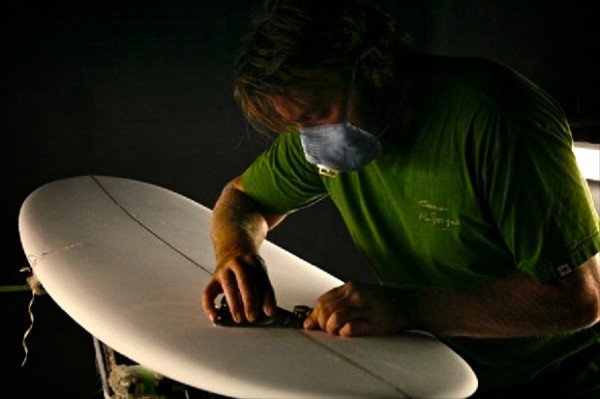
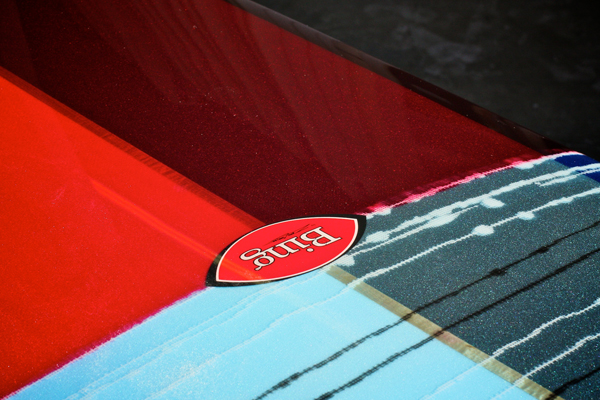
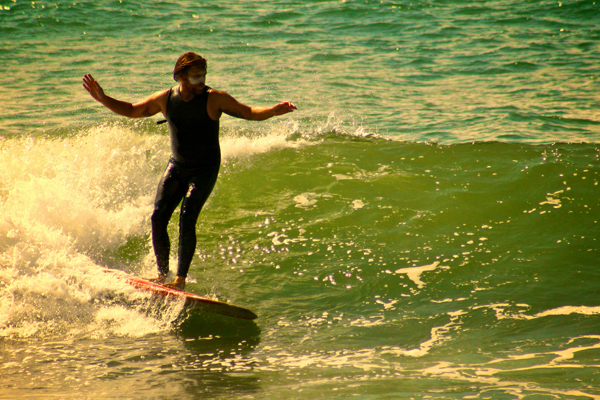
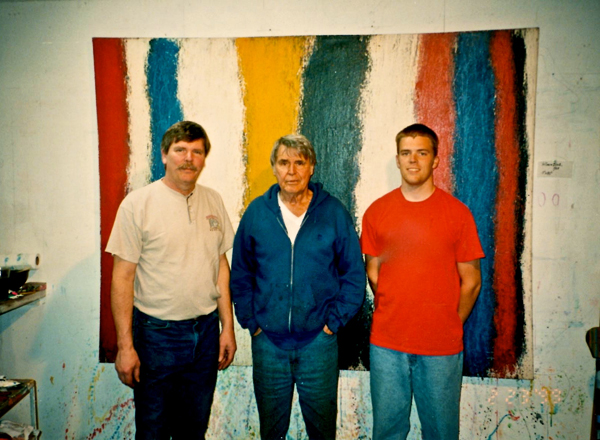
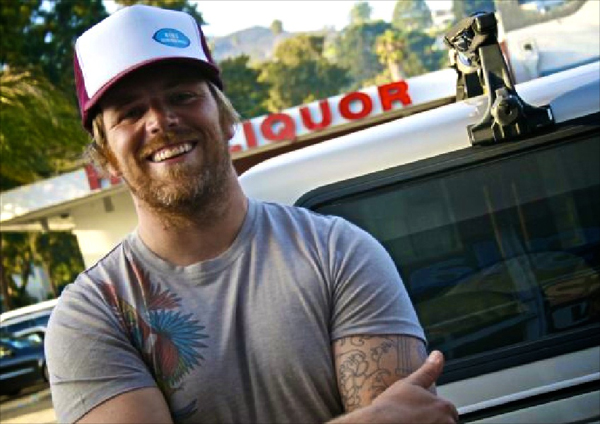
Ciro Bicudo Interview
Ciro Bicudo is a Brazilian surfer and artist who creates a world with his art called Organik. Stoked both on life and surfing, his positivity is simply infectious. Ciro was kind enough to spend some time with us.
What was life like growing up?
I grew up in a big family with 5 people – my parents, a sister and a brother. We lived in the country, a city called Piracicaba. My grandma lived on the coast in a city called Peruibe and we use to pass the week between the city and the beach. My connections with skateboard and surf were made in that time. Piracicaba city used to have this cool underground scene, so the music and theDIY was absorbed in me since my youth. The art came from my mom, an interior designer, so my sister and I got it from her. Skateboarding, surfing, music and art was always a part of my day.
Who did you look up to and admire when you were a young?
Buttons and Tom Curren are my favorite surfers, also Tommy Guerrero, Steve Caballero, Natas Kaspas, Mark Gonzales where my favorite skateboarders. Rick Griffin, Jim Philips, John Severson, Klint, these guys were my first heroes. Later, my second team of heroes was, Rob Machado, Joel Tudor, Ben Harper, Thomas Campbell, Mike Valley, Drew Brophy, Jack Kerouack, Charles and Bukowski.
When did you get your first surfboard?
My grandmother lived in a beach town called Peruibe, and I always have a great contact with the ocean. I don’t really remember when but my first board, but I do remember my BZ bodyboard. And when I turned 14 years old, I ordered my first thruster. It was a dream come true.
What was the feeling you had when you first stood on a surfboard?
It was supreme freedom and the most energetic thing that I have ever felt. And to see a wave of another angle was one of the most beautiful things that I have seen. I remember looking to my friend and I could not stop laughing. I was so stoked.
Where did you interest in art come from?
My mother graduated from decoration and design school and she always taught my brothers and me about colors and drawing. But what really influenced me were jazz album covers, skateboard graphics, and surf graphics. Logos and T-shirts. Some of the designers and artists had side projects other than their own work, and were more focused in art and concept. Artists like, Evan Hecox, Griffin, T.Campbell, Kinsey.
What is your process when creating your art?
I try to translate it to my personal world, something similar to a trip in an organic wonderland. I love colours and organic shapes. I always paint in a free creative way. It’s a white landscape and I never known what I’m going to make. I just let my imagination flow.
Of all the places you have traveled to, what place in particular stands out? And why?
One of my favorite places, is a secret spot near my grandmother’s home. Good waves, warm weather. It’s the place that I started to surf and it’s always a good vibration when I’m there.
What is it that makes you such a nice person? What code do you live by?
I grew up in a family environment. Respect and kindness are the things that our parents taught us. I always treat people the best that I can, because I want people to treat me the same way. And everything you plant comes back to you. If you plant love, respect, friendship, it will all come back to you.
Who/what inspires you?
Aloha spirit, surf culture, art, a lot of songs, my friends, life, freedom and the power to catch waves„ and to slide down on a skateboard. A literal jazz jam session.
What is the greatest thing you have learned in your life?
Surf, skateboard, music influences my art, so everyday I try to get involved and it makes me immensely satisfied. That passion is the generator power for my life. Always persevering, being calm, and having the humility to learn in every moment. Through art I have met a lot of friends and exchanged experiences.
Do you have any regrets or wish you had done something differently?
Some regrets, but maybe I wouldn’t change. Every regret shows me the wrong acts that I need to change to be a better person.
What are you most proud of?
When I see kids and old people contemplating my art installations, they exhibit two completely different reactions. It’s always a pleasure presenting my personal fantasy world to other people.
What meaning does surfing hold for you and how has it changed your life?
When I was young I was very anxious and always acted by impulse. With surfing, I learned to be calm and think about every act. Surfing has made me better because every action has a reaction. Also, the ocean is one of the better places to think about what you need to change to live better.
What brings you the most happiness in the world?
Meeting people, sharing beers, and exchanging experiences. Cooking with my family. I could say millions of simple moments that make me happy.
Who are some of the people you feel are shaping the path for surfing today?
Felipe Siebert and David Alle. I love their boards. Kyle Lightner and Jair Bortoleto, amazing photos. Yusuke Hanai, Theo Hetherington, Tyler Warren, Emil Kozak. Ryan Heywood, High Sea Films, Simon Whitney/Mick Sowry with their Musica Surfica, Jamie & Jay Watson – all amazing friends, artists, and curators.
What is in your current quiver? What is your favorite board? Your favorite surfspot?
A shortboard 6’4, a Fish 6′. A Siebert/Bicudo handplane (a collab between us). My favorite surfspot is the secret spot by my grandma’s house, and Moçambique in South Brasil.
What’s your favorite meal?
Japanese food, my father´s barbecue, and when we made craft pasta in my family. Always an amazing vibration, wine and Italian food.
What are you currently listening to on your iPod?
Music is an important part of my life. I’d say infinite songs. Miles Davis, Dave Brubeck, Coltrane, Thelonious Monk, Tommy Guerrero, Mattson 2, San Prekop, Ben Haper, Drag the River, Chuck Ragan, Chad Price, Neil Young, Dylan, ALL/Descendents, Rancid, DagNasty, Uniform Choice, Terror, Lagwagon, Nofx, Shai-hulud, OWEN, Matt Costa, Death Cab For Cutie, Garage Fuzz, Sublime, Long Beach Dub All Stars, Tom Jobim, Vinicius de Moraes, Baden Powel, MCC, I could go days talking about them all…
Any upcoming projects?
I have a future project with Jamie Watson, some collabs with friends Siebert and David Alle. A project with my bother between art and good stuff (coming soon). Always spreading the love, trying to be a better person and help the good causes.
What’s next for Ciro Bicudo?
Welcome everyone to organik world. I hope everyone feels good. And always spread the love. Peace.
For more information on Ciro Bicudo, follow his blog here.
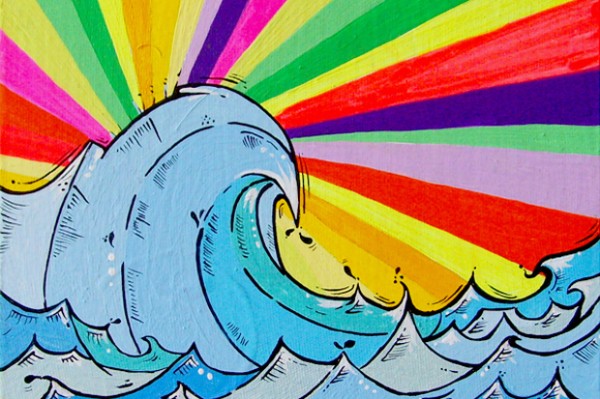
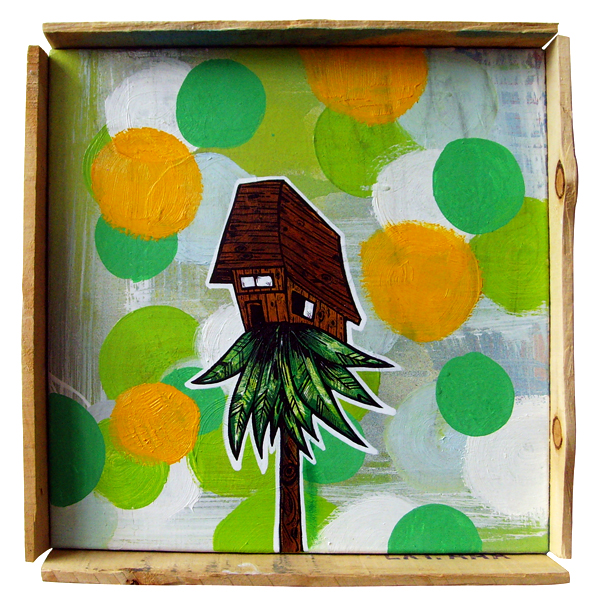
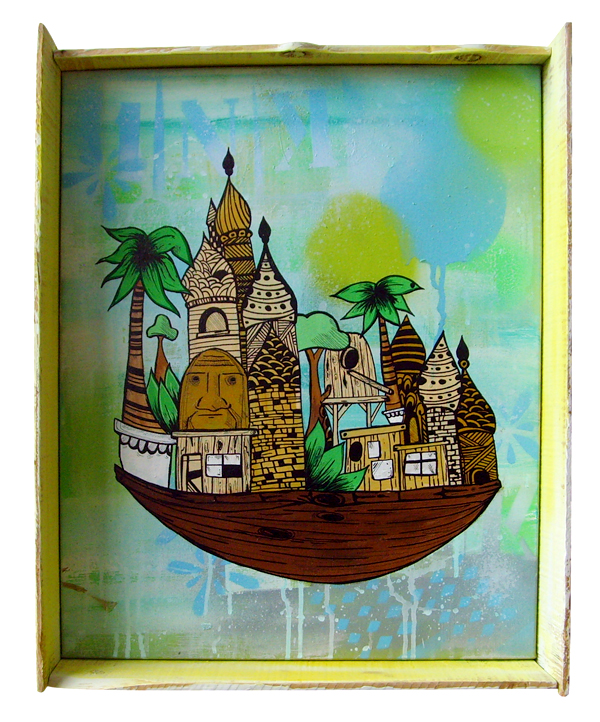
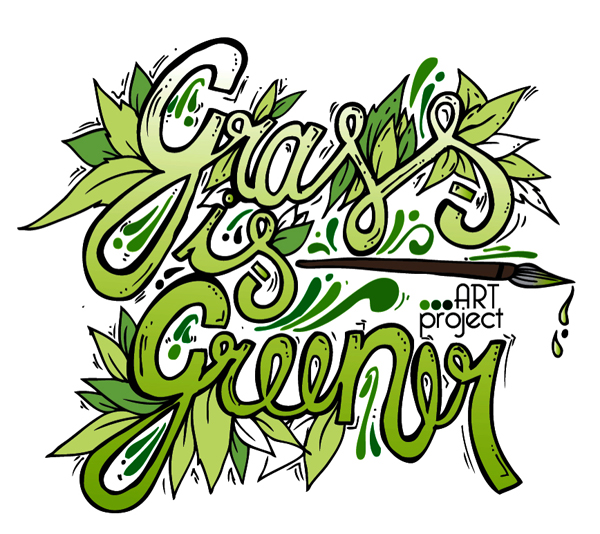
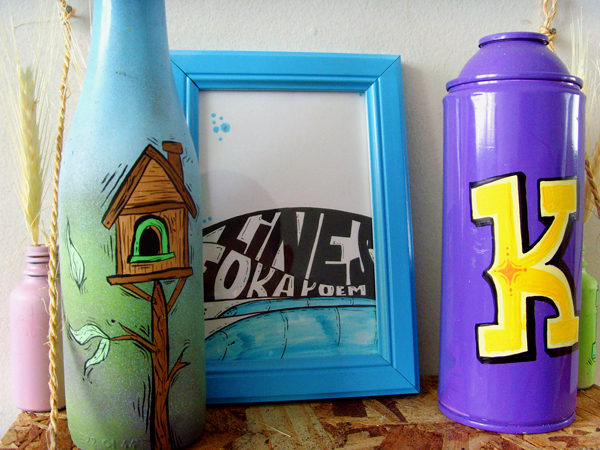
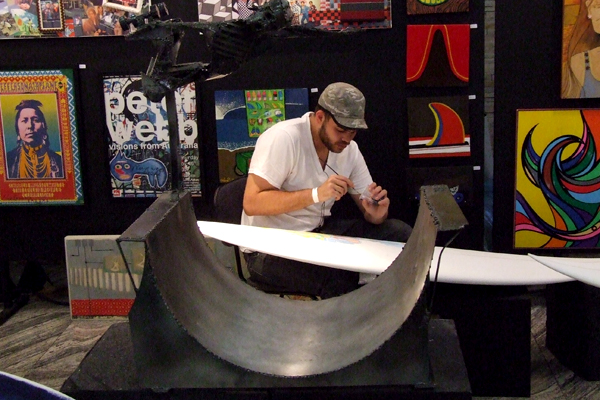
Mary Osborne Interview
Mary Osborne is a gifted California surfer and model who is super-stoked on life and adventure. Her relationship with Patagonia allows her to travel and be an ambassador for the environment. We caught up with Mary to ask her about her busy life.
What was your childhood like?
I had an amazing childhood. I was raised at Solimar Beach with my mother and father (who are still married), my three older brothers, my grandparents who lived down the street and an entire neighborhood that was like family.
When did you get your first surfboard?
When I was 15, I saved up babysitting money and bought my first surfboard at Waveline Surf Shop in Ventura. I was so excited and I wish I still had that board today.
What was the feeling you had when you first stood on a surfboard?
It was a big rush of fun! I was so excited that I was actually standing and riding a wave. I was so proud of myself and at that moment I fell in love with surfing. I wanted more waves!
Who did you look up to and admire when you were a young girl?
My three older brothers were my inspiration. I wanted to as good as them in and out of the water. I also loved Jessica Little (who was our local pro surfer girl here in Ventura) and Matty Slater because she ripped in the water as well.
What is your relationship with Patagonia like?
I am very fortunate to be with a company like Patagonia. I am what they call an “ambassador” for the company on and off for the last 8 years. I help with product design, testing and surf marketing. Patagonia has taught me so much in so many levels. As I have gotten a bit older, or shall I say “more wise,” I have come to realize what companies I really want to be involved in and work with. It’s not about having as many sponsors as possible or the biggest paychecks anymore. Now, it’s about wanting to be a part of a company that is carving new paths for the future, using innovative core products and giving back to our environment.
Patagonia’s core philosophy and environmental aspects have blended into my every day life. I am learning how to be more eco-friendly and how to make beneficial choices for not only myself but our future generations. Patagonia has taught me to open my eyes to the world, live simply, play hard, work hard and be thankful for everything I have. I am very fortunate to be working with such a successful company and have them support me in my surfing world. I hope to continue to work with Patagonia for future years to come.
Of all the places you have traveled to, what place in particular stands out and why?
Every place I have been to has something special about it. I was just in Fiji two weeks ago and it was definitely amazing. The surf had great potential in the remote islands we chartered around, but the lack of swell equaled small waves. We were aboard the boat Tui Tai doing a surf-humanitarian trip with four other pro surfer girls. We ended up visiting a tiny village that had never had visitors the entire time they lived on the island. We shared a memorable day together dancing, talking, sharing stories, eating coconuts and fruit. We brought them gifts each girl donated and the Tui Tai boat wrote the head of the village a check right there on the spot. It was pretty amazing!
Who/what inspires you?
Anyone who takes risks, chances and lives a positive lifestyle.
What is the greatest thing you have learned in your life?
Everyone is different in so many ways, so I try not to judge and get to know them. You never know what you might learn from another person or when you will cross paths with them again.
Do you have any regrets or wish you had done something differently?
There are only a few regrets I have, but they are not even worth talking about The only things are simple things and, honestly, they are things that I can still do in life. For example, I was asked to work on a boat charter in Mexico and I said “no”. I really wish I would have said “yes” so I could have surfed amazing surf and learned more about boats, how they work, chartering, etc. I love boats and this would have been a real treat.
What are you most proud of?
Being able to travel the world surfing. It was once just a dream as a young girl. I am very proud of the hard work I have put into my surfing career and all the great things I have learned along the way.
What meaning does surfing hold for you and how has it changed your life?
Surfing is my entire life now. I live every day in and around the ocean. Surfing has shaped me in so many ways. I have learned so much about life and other cultures through surfing and traveling. Every adventure opens my eyes to new things. I am extremely grateful for what I have and don’t have. The challenges and risks I take have only made me a stronger, more educated and all-around a better person.
What brings you the most happiness in the world?
My family and friends. Also, warm, mindless, perfect waves—but family always first.
Who are some of the people you feel are shaping the path for surfing today?
There are so many young male and female young surfers who are taking surfing to an entirely new level. The talented abilities, new innovative tricks, riding bigger waves, and all of the new shapes of surfboards.
What is in your current quiver? What is currently your favorite board? Your favorite surf spot?
Favorite surf spot is in Ventura. My quiver consists of classic single fin longboards, high performance longboards, quads, fun shapes—and they are all in cute colors. (Laughs)
Right now, I have two favorite Patagonia boards that Fletcher Chouinard shaped me. One is what we call a “Fark” (quad fun shape shortboard) and the other I call “Pinky” and it is my tri fin all-around longboard. I ride Pinky all the time; it’s not only cute, but works amazing in all sizes of surf!
What’s your favorite meal?
A healthy salad or I like to indulge in Mexican food.
What are you currently listening to on your iPod?
Ray Lamontagne, Steel Pulse, Paulo Nutini, Natalie Merchant, Todd Hannigan I listen to everything and anything.
What are you most grateful for?
Health, family and the ocean.
What causes/organizations do you support?
I am involved in several non-profits. I believe it is extremely important to give back. I love people, children and helping those in need. I am apart of Free Wheelchair Mission, Boarding for Breast Cancer, Women’s Sports Foundation and several others. Every year I help host a “surfing cruise ship”; all the proceeds go to various organizations.
What’s next for Mary Osborne?
It’s nonstop right now, which is exciting, and a lot of new things are on the horizon. Besides working closely with my sponsors (Patagonia, Bettybelts, Go211.com), I have started a new side business Solymar Tan. I am setting up surf camps and yoga retreats (www.mosurfcamp.com). Hopefully still traveling this upcoming year, writing for various projects, maybe filming a new TVdocumentary/reality surf show and, as of this morning, maybe working with Panama Jack (www.panamajack.com) on a few different levels. This next year is going to be an exciting one and I am really looking forward to it! New adventures, learning more, surfing, and being healthy!
More information about Mary Osborne can be found here. Photography by Tim Burgess.
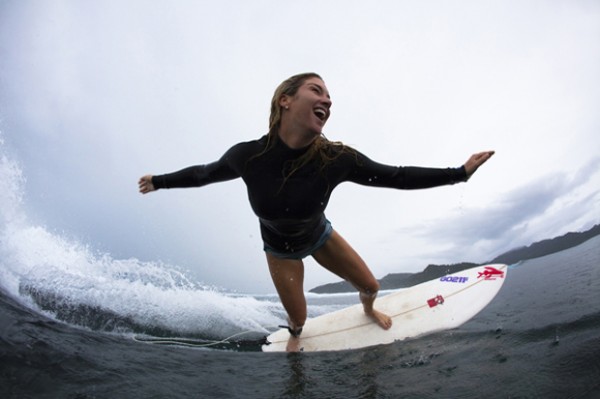
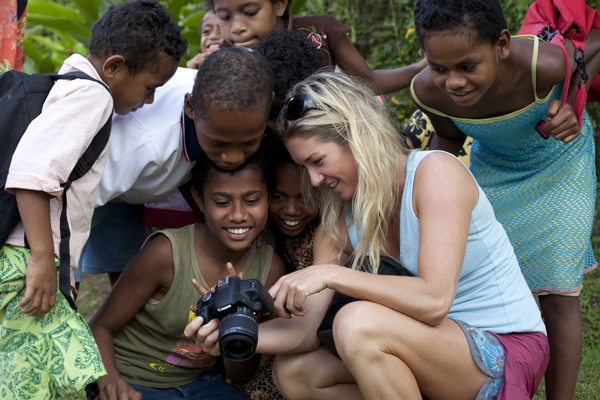
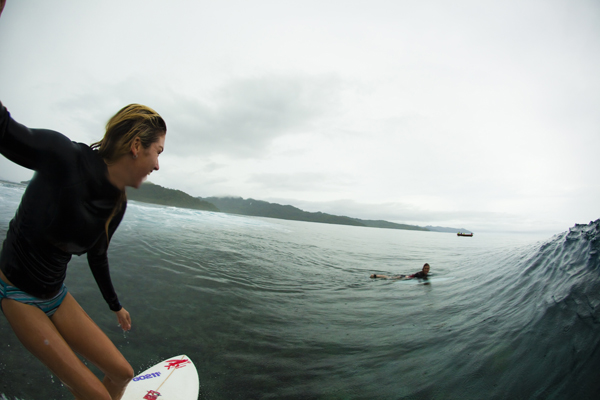
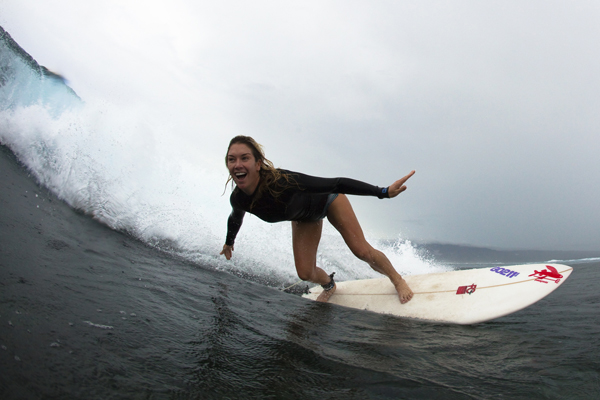
Ty Williams Interview
Ty Williams is a talented artist and surfer living in the Northeast. His quirky and original art is inspired by his surfing lifestyle and eclectic taste in music. Making people happy with his unique artwork is his mission. Ty was generous to spend some time answering a few questions.
What was life like growing up?
I grew up kind of moving around. I am from the US Virgin Islands, but grew up between there, Florida, and the northeast (Maine and NH). So, naturally, I got to see some cool places and experience different cultures.
I spent a lot of my time in the ocean—not really surfing. I was really into snorkeling; I wanted to be a marine biologist. I think I saw Flipper or something, and really was stoked on the thought of working underwater—either that or digging up dinosaurs.
My parents both are really creative people, so I was lucky to have that in my life.
Who did you look up to and admire when you were a young?
When I was young—Am I still young? I’m 25—I looked up to scientists and artists. I think it wasn’t long before I got the skateboard bug and then really got into the personalities of the skate world.
I looked up to my parents, for the most part, growing up. My mom was a creative woman, always making stuff, and my dad is an unimaginably talented builder/ designer.
When did you get your first surfboard?
After my family moved from the Virgin Islands, I got my first surfboard—ironically, in Maine. Yes, it’s cold. This was, like, 6th or 7th grade. It was a shortboard, a Charlie Baldwin with blue flames. It was kind of amazing, come to think of it.
What was the feeling you had when you first stood on a surfboard?
I think I’m similar to most folks when I say that when I stood up on that board, in cold, mushy shore crumblers, I was hooked like the board had nicotine in it. I knew after that wave that surfing was the one thing that made me feel unconditionally happy.
Where did you interest in art come from?
I grew up drawing—mostly dinosaurs and anything related. I loved books with cool pictures, so I always tried to get ideas or draw like the artists in the books. I would get so frustrated; I remember when I couldn’t get the hang of drawing and just kept plugging away at it. Seeing the art in the skateboard world is what really kicked me in the pants and taught me that I didn’t need to draw realistically. Skateboard graphics like Neil Blender’s were the things I remember. I also really loved Ed Templeton’s boards when those came out.
What is your process when creating your art?
My process has changed a lot in the past couple years. When I first started out, I used to make stuff that I thought people would like or perhaps want to have—kind of became lame to me after while, especially after I saw so much of the surf art scene just cycle through itself.
So then I tried being more honest in my work and that meant making things that might be weirder or more of an inside joke—and things I’m interested in, not just what I felt would make for a good tee design. So, yeah, these days my process is making things I feel I want to make and trying to weed out the stuff I am not into making. I think everyone has that struggle if they do something creative for a living.
Recently, I have been doing more mixed media and I really like it and, just like before, in a couple years I might cycle that out and be doing something else. But the process, and my humor/voice, I hope is present in all of it.
Of all the places you have traveled to, what place in particular stands out? And why?
This past year, I got to spend three months in Japan for an art show I had in Tokyo, and I got to live in a place called Kamakura. It was great for me as it forced me to relax and really be shut out as I don’t speak Japanese. The people were the coolest and patient with me talking with my hands and trying to draw what I needed. The trip made for some great relationships and some wonderful projects that I have in the works.
Japan has things so much more dialed than we do, at least in terms of recycling and how they live their lives. It’s so clean and so organized. Naturally though, because of the strict work environment there, I’m sure it gets stressful like anywhere. They also have good waves. I surfed a place called Ebiji (spelling wrong I’m sure). That was just unreal wedgy, punchy surf.
What is it that makes you such a nice person? What code do you live by?
Boy, I definitely want to think I’m nice, but I know it’s a journey and it’s entirely my own. I do very much believe in the thought that we get what we put out there, and I also respect people that do things authentically and don’t intentionally copy someone. I think honesty is a big part. But I’m going to take this question as a big compliment. Thank you for thinking I’m nice.
Who/what inspires you?
My inspirations stem from a number of things, but I suppose the main ones are the ocean and sailing or any culture that is involved in or around those. Surfing really is an afterthought to my art as I try my best to refrain from limiting myself to “surf artist”. I think my friendships and past relationships inspire a lot of what I do. If it weren’t for that, I don’t think I’d feel the desire to make stuff.
What is the greatest thing you have learned in your life?
These are some heavy questions. Yikes! The greatest thing I’ve learned so far is to be as nice as possible, and to relax as best as possible. As with those two approaches, I like to think I’ll make out okay. But I have to say I’m still learning and sometimes I feel like I’m riding the short bus. It’s day to day.
Do you have any regrets or wish you had done something differently?
Of course I have regrets. I think the list could be very long. However, I believe they all fall into the category of wishing I had said or not said things to some people or had treated some people better, including myself. I also regret caring so much about what people thought early on when I started making work. Regrets are better as “forgets”—it’s over.
What are you most proud of?
I’m proud of some of the great things I’ve been able to do because of my work. I have been very fortunate to meet some great people and make cool things. Because of my work, I have been able to travel and perhaps not live a padded lifestyle by any means; but have been able to do what I wanted. I don’t think many people can say that and for that I’m proud.
What meaning does surfing hold for you and how has it changed your life?
Surfing still is the same as it was the first day I tried it; it’s still the one thing that I don’t feel anxious while doing or care about how it looks or how it comes off to other people. Surfing will never change for me, I hope. Surfing is my lifejacket in life, I think. It’s there and I know I can turn to it. If I didn’t have that, I don’t know … I’d probably be a pretty miserable guy.
What brings you the most happiness in the world?
The most happiness in the world to me? I would have to say is creating something that people really enjoy, but also creating it because you enjoy making it—whether that be art or music or sandwiches. And, for me, it’s art. When I make something that I like and people dig it, it’s win-win and I get jazzed off it.
Surfing is also something that has made me more happy than any other thing, minus seeing my family succeed or seeing my nephew grow up stoked on life. Oops, that’s first.
Who are some of the people you feel are shaping the path for surfing today?
The people I really like watching recently are Dane Reynolds and the Malloys—or any of the multi-talented surfers. I think it’s been said a lot that all of those guys have more lasting power as they have more to them than just surfing. It’s a real shame to me when the new surf personalities get the opportunity to say something and have nothing to say or just think it’s cool to play brain dead. Surfing today isn’t about being a burnout and that whole style should be left in the dust. I like surfers who can speak and have something to say, and I believe surfing today is about being more than some hot guy in the sun all day. We have responsibilities as surfers, so we should step up to the plate.
What is in your current quiver? What is your favorite board? Your favorite surf spot?
I have been riding for a shaper called Grasshopper for a few years. His boards are unreal. I have a 5’6” quad fish I use a lot; it’s good in bigger stuff and great for small East Coast mush. I also have a 6’0” single fin that I used in bigger stuff.
I also have some funky boards that I have acquired over the years—thrift store grabs and dumpster dives. I also have thrusters that have been collecting dust that need to get used. I have a Grain fish I built years ago when Grain was starting out; it’s more of a wall piece. So I guess I live on my grasshopper fish!!!
My favorite surf spot is Vilano Beach in Florida or Bingin Bali or Manzanillo, Costa Rica. No, it’s a secret spot in … Maine.
What’s your favorite meal?
It’s a toss-up between burritos, mashed potatoes or Indian food—and sushi if it’s in Japan.
What are you currently listening to on your iPod?
I can’t emphasize how important music is to me and my creative process. My iPod has been the best gift, I think. My ex-girlfriend really hooked it up. Anyway, right now, it’s a mix of Talking Heads, Real Estate, Boy Without God, Ariel Pink, Washed Out, Arthur Russell, Animal Collective and old dancehall reggae. I live on music.
What causes/ projects/organizations do you support?
I support causes that do not have hidden agendas. That being said, I like the organizations working with the whale killings (Sea Shepard) and the people at Stoked are doing cool stuff for kids. I enjoyed working with them last year.
Rosa Loves is a cool one I like and was happy to help.
What are you most grateful for?
I’m most grateful for my friends and family. That being said, I’m also grateful that things can only get better.
What’s next for Ty Williams?
I just wrapped up a children’s book I’ve been working on. I also am helping some friends open a store in Japan called Buoys. It should be killer and I’ve been the designing side of that. I also recently just got asked to paint a hotel room at Ace Hotel in NYC, which is a massive, massive honor.
Boy, there is a lot coming up, but I hope that a vacation is coming up soon—that and maybe a date. (Laughs)
For more information about Ty Williams and his art visit his blog here.
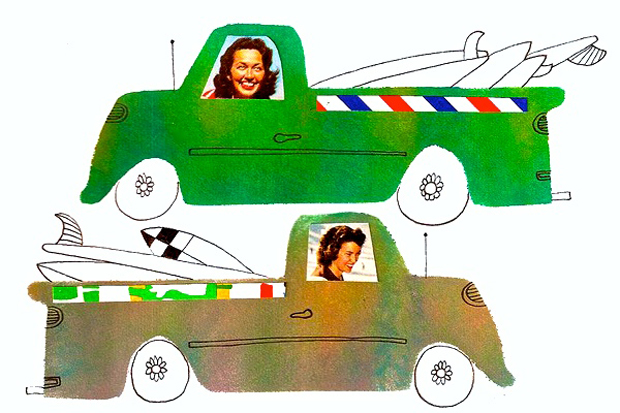
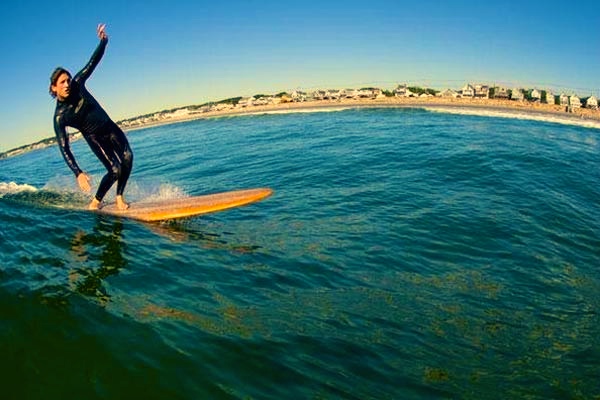
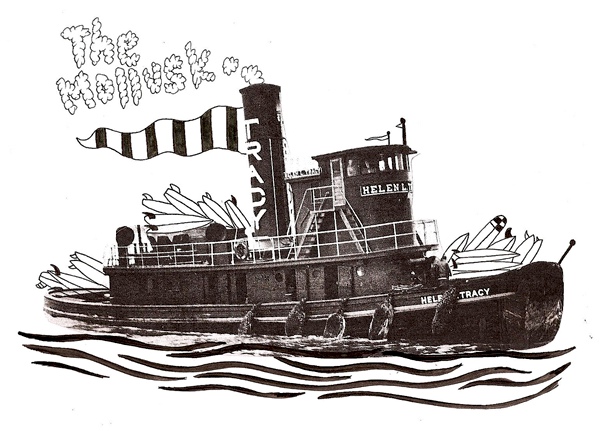
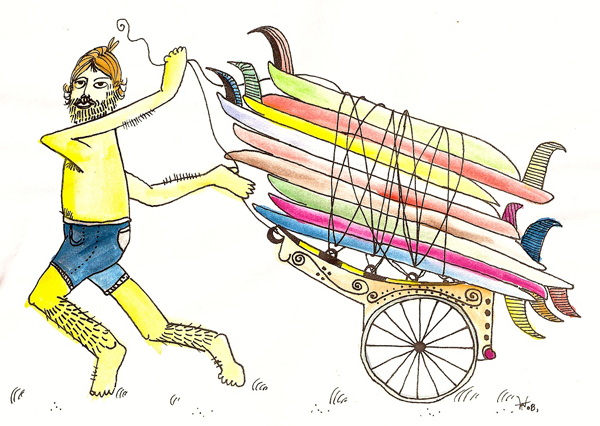
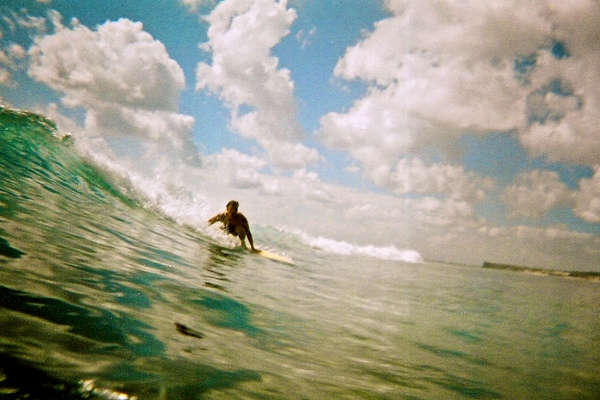
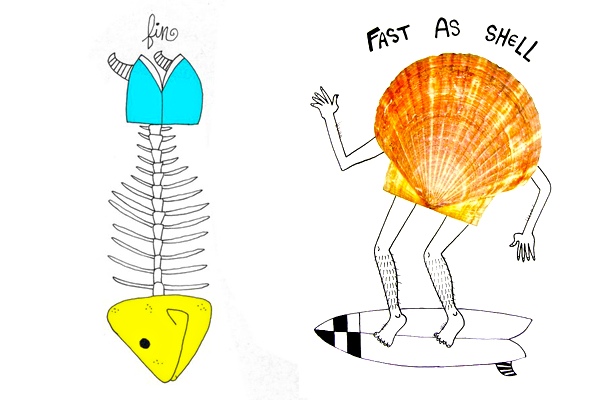
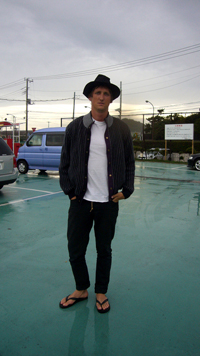
Christian Wach Interview
Christian Wach is a talented California surfer who lives the dream. With Joel Tudor as an idol and role model, Christian’s surfing has taken him all over the world. An avid painter and designer, he shares with us his thoughts.
What was your life like growing up?
My life growing up was pretty rad. My family consisted of three brothers and two loving parents. We grew up with sand in our diapers from Day One. My family brought us down to San O just about every weekend and that’s where I ended up catching my first wave with my older brother, Steve. I naturally loved longboarding from Day One. My older brother, Steve, was and still is an outstanding 60s-style surfer. My dad was the classic longboarder who’d hang out down at San O.
As we got older, our mom took us all around to contests up and down the coast. As I started to win many of the events, I decided to do as many contests as I possibly could: NSSA, ISF, Coalition of Clubs, ASP, PLA, the Easter Festival in Florida, Hawaii. You name it. She always took me to these events and was there to cheer me on every step of the way. She was “Coach Mom”.
When did you get your first surfboard?
I got my first surfboard from a friend by the name of James VanShack down at San Onofre when I was about seven years old. It was an old Capo Bay with the corkiest airbrush to match, duct taped rails and a semi busted side fin. It was just about the perfect board for a lil beginning grom. I caught my first waves on it at Boneyard near the jetty at Doho. I was hooked after that.
What was the feeling you had when you first stood on a surfboard?
“Don’t fall! It looks shallow and it looks rocky!”
Who did you look up to and admire when you were a young man?
I really admired Joel Tudor from the very start. He was my idol growing up and still is in many ways. It’s funny because the reason I started riding for Tudor was because I did a series of sketches depicting surf shots of Joel from various magazines. And I loved sketching these.
One day, my mom decided to call 411 and get the Tudors’ number. Somehow—I don’t really know how—she got their number and ended up contacting Joel and telling him about these drawings. He wanted to meet up with me and go surf. From the very beginning, he was just so nice to me and inspiring. I have to say he was my number one inspiration. All of my other inspirations came from my friends at Doho and San O.
Of all the places you have traveled to, what place in particular stands out and why?
I have to say I really enjoy going to Australia. I love Noosa. It’s gotta be one of my all-time favorite places to go. The waves are perfect, the people are nice, and it’s absolutely beautiful there. It’s one of the only other places in the world I could see myself living.
Who/what inspires you?
My friends: Tyler Warren, Kameron Brown, Wesley Whitehead, Jake the Zilla, Specgnar, Naters,CJ, Joel, Naki, George Trimm, Buckzina, O Dog, my dad, my little brother (Carson), my older brother (Steve), Harrison, Tom Wegener and Hannah Norton.
What is your process for creating your art?
I like to paint on boards. I use acrylic paint and Posca pens. I usually paint on the hot coat and then hot coat it again to preserve the artwork. I have a surfboard label called Canvas Surfboards. It’s pretty new, but we sell boards at Icons of Surf.
Tell us about your latest venture.
Canvas Surfboards is a group of artists that treat surfboards as pieces of art in the sense that every board is hand painted. Every board is shaped by Ryan Engle at Nation MFG. Ryan’s an outstanding shaper and has some really rad ideas.
I also just went to Norway on a trip for Outside magazine. It was pretty rad to go surf in the Arctic Circle. We also hiked crazy mountains, caught massive cod, ate a lot of cod, camped, and went on a Viking ship while we were there. The place was intense and a trip I will never forget.
What is the greatest thing you have learned in your life?
The greatest thing I’ve learned in my life is that if you really put your mind to it, you can do it.
Do you have any regrets or wish you had done something differently?
No. I think that everything that’s happened in my life has happened for a reason and it’s made me who I am today.
What are you most proud of?
I’m proud to be able to say I do what I am most passionate about as my career. If I could surf for the rest of my life, and be successful, I would. I think everybody would say the same thing about what they love to do. There’s nothing better than doing what you love.
What meaning does surfing hold for you and how has it changed your life?
Surfing has made my life extremely wild. I would have never thought as a grom that I’d go any of the places I’ve been now. I’ve been so blessed to see the world and I feel like I’ve grown up so fast. I’ve experienced so much and met so many awesome, strange, unique and inspiring people because of surfing.
I pretty much owe everything to my sponsor Gotcha too. Other people who have really helped me along the way have been VonZipper, Ocean Minded, Sticky Bumps, O’Fish’l fins, NakiSurf, Aviso and Astrodeck.
What brings you the most happiness in the world?
Perfect waves bring me the most happiness.
Who are some of the people you feel are shaping the path for surfing today?
I think Rasta, Tyler Warren, Joel Tudor, Herbie Fletcher, Kelly Slater, Harrison Roach and Tom Wegener are some of my favorites.
What is your favorite board? Your favorite surf spot?
My favorite board has to be my new 6’0 Ryan Engle Canvas Mini Noserider. My favorite surf spot is Trestles.
What’s your favorite meal?
I love sushi—by far my favorite food. I could eat it every day.
What are you currently listening to on your iPod?
I love Bön Iver, Discovery, Angus and Julia Stone, Modest Mouse, Fisherspooner, City and Colour and Tommy Guererro.
What are you most grateful for?
I’m so grateful for my loving family. They are number one.
What’s next for Christian Wach?
Egypt? Russia? Sardinia? Antarctica? Hawaii? Why? I dunno. Why not?
Follow Christian Wach’s blog here. Learn more about Canvas Surfboards here.
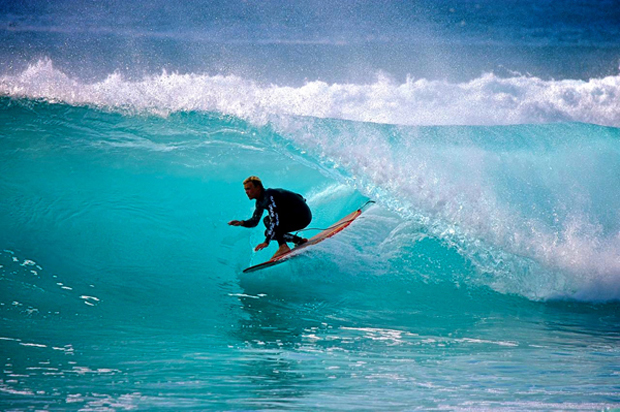
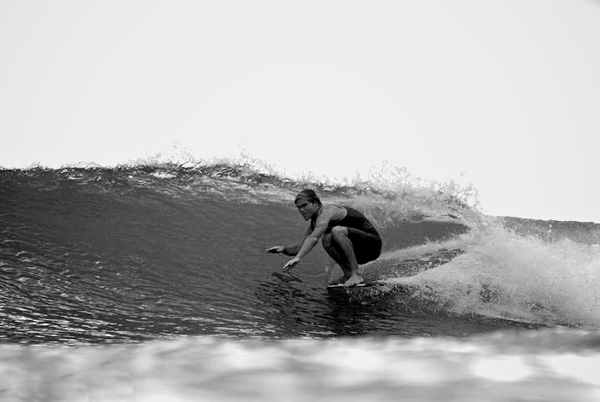
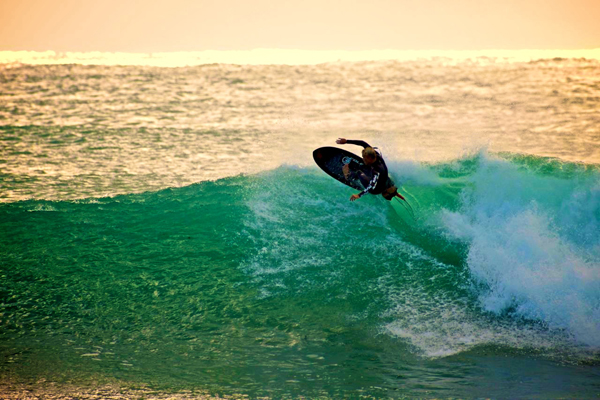
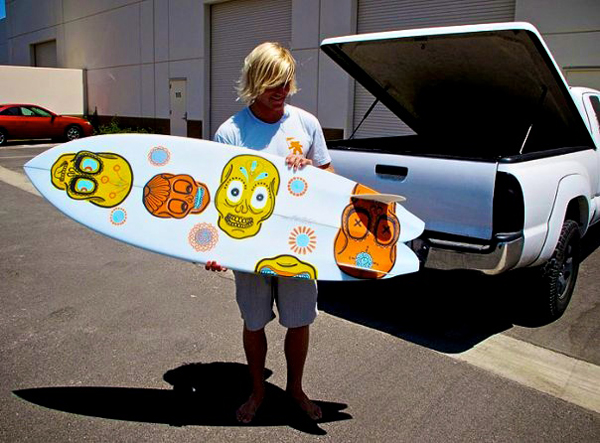
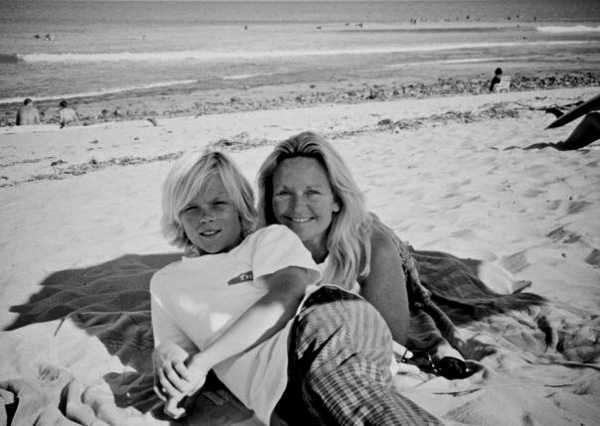
Maggie Marsek Interview
Maggie Marsek is a California photographer who captures the experience of surfing in vivid colors and textures. Working primarily in film, her work is an inspiration to all who treasure traditional forms. We had the pleasure to ask her some questions.
When did you get your first surfboard?
I got my first surfboard, as a Christmas present, in 2005. That was only four years ago, but I am from Wisconsin and I didn’t grow up surfing. My Mid-western parents were so excited to buy a surfboard. It was a pretty exciting event!
What was the feeling you had when you first stood on a surfboard?
I remember feeling, This is soooo magical! I could see why it had enveloped so many people’s lives. I, even at first, could tell why so many people love surfing.
Who did you look up to and admire when you were a young girl?
I am the youngest of four. And with two brothers, I felt like my sister was the coolest thing in the world. I looked up to her and wanted to be just like her. I also look up to my parents as my father and mother did such a wonderful job raising such a fun, warm, close family that I have always known I’d want a family of my own just like that.
Where did you study photography?
In 2002, I received my Bachelor of Fine Arts degree in Photography from Savannah College of Art and Design in Savannah, Georgia.
What brought you to California?
After graduation I wasn’t tied to a job or a relationship so I had freedom to roam. I headed to California because I was always fascinated by the warm, coastal lifestyle. I lived in Downtown San Diego for two and a half years before moving to the little surf paradise of Encinitas.
Of all the places you have traveled to, what place in particular stands out? And why?
I have been to Europe (specifically London, France and Italy) twice. I love exploring Mexico and the length of Baja. Not one particular place stands out. I shoot amazing sights and meet such amazing, genuine people on my travels. I hope to travel to all kinds of faraway places, and really hope to make it to Brazil, Australia and Japan. I am also looking forward to our honeymoon in Bali next fall.
What is it that makes you such a nice person? What code do you live by?
I came from a family that was taught, “Treat people the way you want to be treated.” I feel like if I am an honest person, and approach everything and everyone in a genuine way—the way I expect to be treated—good things will come. I feel my open heart and open mind will continue to bring me to amazing places and meet more amazing people.
Who/what inspires you?
I am constantly inspired by other artists and my life around me—the landscapes I explore while traveling and the people I meet along the way. My fiancé, Rob, is my biggest inspiration. He is constantly pushing me and encouraging me to just go for it with my work. I am the only one who can stand in my way, and he reminds me of that with any obstacles I face.
What are you most proud of?
I’d have to say I am pretty proud of myself for listening to my heart and taking a giant leap and moving out to California by myself. I have learned and grown so much out here, and nothing I have accomplished so far would have been possible if I hadn’t listened to my heart.
What meaning does surfing hold for you and how has it changed your life?
The feeling of surfing is almost indescribable to me. Those who surf know what I mean; there is nothing else like it. It’s a magical feeling that makes you feel powerful, but sometimes can make you feel vulnerable.
You and the wave need to have a mutual respect for each other. The same goes for the ocean and the landscapes. If you respect the ocean and landscapes that Mother Nature has given us, there is greater enjoyment in the experiences.
Who are some of the people you feel are shaping the path for surfing today?
I feel all the people who are doing it by hand—everything from building and shaping to glassing and polishing. Surfing is an art and a craft, so those people keeping up with that are the ones “shaping” the path for surfing.
What is in your current quiver? What is your favorite board? Your favorite surf spot?
Canon AE1, Canon Élan 7NE, Canon 30D, Mamiya C330, Holga … (laughs) … just kidding. I am, however, shooting more often than surfing. When I am surfing, it is on the root beer-colored Bing Lightweight 9’0″. I prefer smaller, mellow, uncrowded waves still. My favorite place to surf is Scorpion Bay in Baja Sur.
What’s your favorite meal?
Hmmmm … so hard to say. I bake a lot and cook at home often. I am a meat and potatoes kind of girl. My current favorite flavors are (but not limited to): sweet potatoes, balsamic vinegar, goat cheese, caramelized onions. We’ve been making a lot of homemade pizzas with homemade pizza dough. If I had to narrow it down to one meal, right now I would love a tri tip with brown rice, grilled zucchini and my fiancé makes a great creamy polenta. Sorry to be so elaborate. I am very passionate about the culinary arts!
What are you currently listening to on your iPod?
I’ve got eclectic tastes in music so it varies—Black Keys, White Rabbits, Royksop, Passion Pit, Pixies, Ramones, The Cars. And, when I am shooting, I love really the Cave Singers and I Am Kloot.
What causes/projects/organizations do you support?
I support anyone for making our environments better and safe for my future children, anyone who cares for our oceans and coastlines. I am a strong advocate for animal shelters and adopting for pets, also Children’s Hospital and Make a Wish Foundation.
What’s next for Maggie Marsek?
I will be in a show with my talented friend, Skye Walker, who was recently featured in here. It is a one night only show in Cardiff by the Sea on December 11, 5–10 pm.
For more information about Maggie Marsek and her work click here.
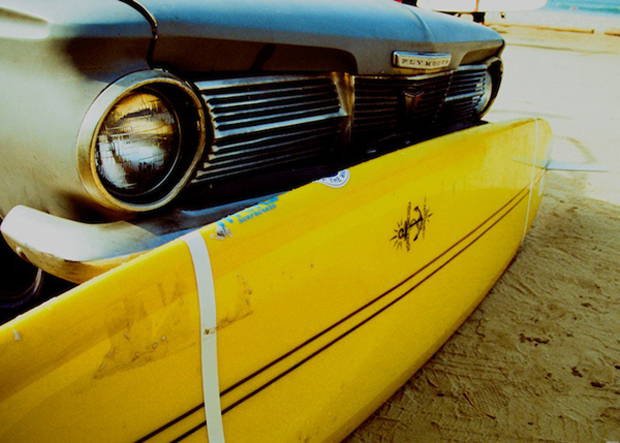
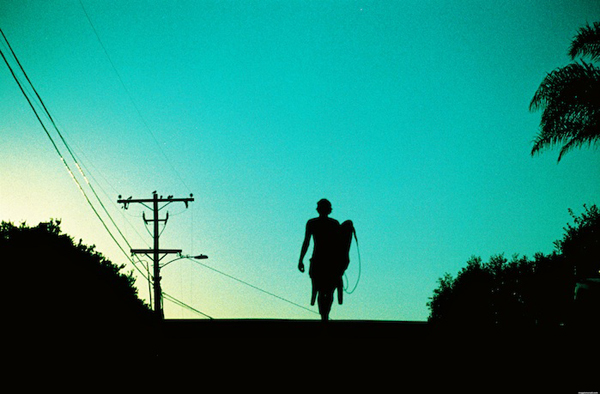
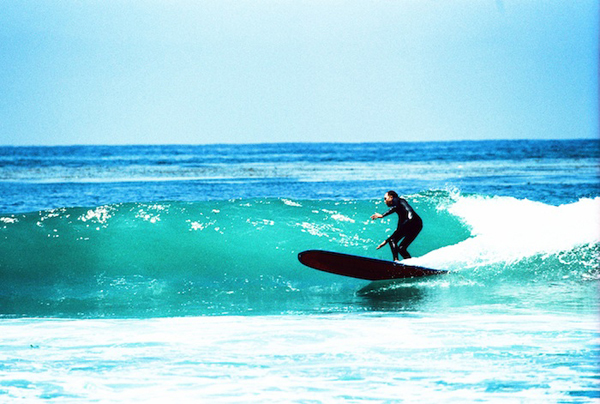
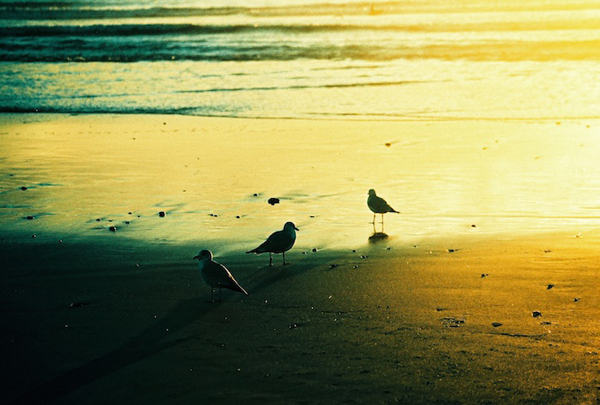
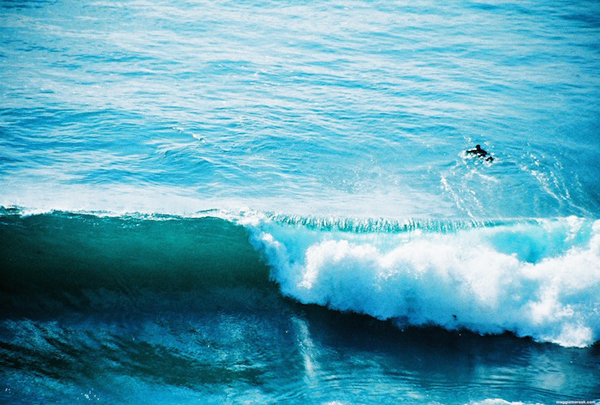
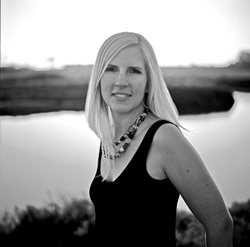
Nathan Oldfield Interview
Nathan Oldfield is an Australian surfer, shaper, and filmmaker who creates achingly beautiful and thoughtful surfing films. Lines From A Poem and Seaworthy are the result of his unique vision. Nathan shares with us his life and loves.
What was it like growing up in Australia?
Wonderful. I was born out in the country in the Blue Mountains and basically grew up on my uncle and auntie’s farm doing special childhood things: climbing trees, flying kites, collecting eggs, catching lizards, watching clouds. Dad was a school teacher and a surfer, so we would spend most school holidays somewhere near the beach. Then when I was 10, we moved to the coast to a house (on the top of a hill on the edge of a national park) overlooking the sea. It was perfect because I could run down the hill through the bush every day to go surfing. I spent all my teenage years there and it had a huge influence on me. At the south end of the beach was a right-hand point, just a draining slab of a wave really, that I deeply connected to and fell in love with. It was a fairly heavily localized spot with a strict pecking order, but I persevered and over the years I earned my place out there. So I feel really fortunate, absolutely blessed, to have had the childhood I experienced. My family loved me. I never went hungry. All I knew was peace and health and happiness. I had much more than so many other children growing up around the world. I’m very grateful.
When did you get your first surfboard?
I had always had access to Dad’s old single fins growing up because he made and rode his own boards. But I remember the first surfboard I could call my own was a little swallowtail thruster I got secondhand for my birthday. I was maybe 11 or 12. It was an early eighties board from the transition period between twinnies and thrusters, so the centre fin wasn’t fixed; it had a fin box. The board had airbrushed rails that transitioned from red to orange to yellow, a kind of metallic glitter in the filler coat, crazy early eighties graphics and it was called a “Surface Fish”. Dad and I fixed the dings and polished her up. and she was my pride and joy. Just thinking about that board fills me with deep nostalgia. I think I gave it away years later to some local kid who needed a board, but, geez, I wish I had it with me now.
What was the feeling you had when you first stood on a surfboard?
Because my Dad surfed (and my uncles too), I was exposed to surfing from a really young age, so I don’t have a very clear memory of standing for the first time. I do remember certain things though—really early memories of bodysurfing, my first clean trim on a green face standing up, my first proper turn, my first real tube ride. All those moments became deeply embedded in my soul; they became part of me and drew me deeper into the romance with sea that surfing imparts.
Who did you look up to and admire when you were a young man?
When I was very little, my Dad and his brothers. I just wanted to grow up and be a surfer and make surfboards like them. As I got older I really looked up to the surfing of Mark Richards, Richard Cram, Tom Carroll and Martin Potter. But my favourite surfer was always Tom Curren. Everyone else surfed crazy good, but Curren danced. His approach had a huge impact on my understanding of what pure waveriding should be. Also, apart from surfers, I was interested in and inspired by artists—poets, authors, musicians, photographers, filmmakers.
What inspired you to begin shooting images/film?
I’ve been taking photos ever since I was young. Dad found an old 1960’s Canon SLR that had been his and passed it on to me. I was hooked. I used to pore over old copies of National Geographic and study the shots: composition, light, angle, subject. So I’ve always taken photos, and I guess the move to surf photography and then the transition to surf filmmaking was a natural extension of that activity. Dad taught me to always be a do-it-yourselfer; he taught me to make my own surfboards when I was about 15 or 16. So surfboard building has been a part of my life for 20 odd years, and in lots of ways photography and filmmaking are similar. They’re just part of what I do as a surfer.
What was the inspiration for your latest film, Seaworthy?
I made my first film, called Lines From A Poem, with no formal training and no idea of what I was doing basically. But the goal I had in mind was to make enough money to buy a new camera. After about a year, I saved enough to get a semi-professional camera secondhand and I began gathering footage. I was taking my time and relaxing with it and still getting my thoughts together about where I wanted the film to go, but I didn’t have any solid ideas or direction.
Then our daughter, Willow, was stillborn and I was suddenly and shockingly hurled into a whole universe of grief. Losing a child isn’t something I would wish on anyone. But as I began to travel the grief journey, I felt the need to tell Willow’s story. I came up with the idea of making a board in honour of her memory, having lots of friends ride it and documenting the story in a film. That board became a little 5’5” quad fish I called Noelani, and in lots of ways it is the centerpiece around which Seaworthy revolves. So Willow, really, was my primary inspiration for making Seaworthy. It has been one of her gifts to me.
What advice would you give to an aspiring filmmaker?
I don’t especially feel qualified to give advice but I’d say this: Don’t wait. Don’t hesitate. Do it now! I think it’s always important to run with an idea or a dream or a passion you have for something. Making things is a healthy and noble pursuit— whether it’s a film, a poem, a painting, a photograph, a song, a surfboard, a home-cooked meal. Do it from a pure place in your heart, and go for it.
Of all the places you have traveled to, what place in particular stands out? And why?
My first overseas trip was to Western Samoa and it was a beautiful experience. It was about 15 years ago, pre-surf camps and packaged tours and internet forecasts. Just six weeks of adventuring, finding spots, scoring, getting skunked, searching and surfing myself silly. We got incredible surf, but what emerged for me as being most significant was connecting with the people. We stayed in the villages with local families who were dirt poor, but generous with what they had. It was a beautiful experience and I ended up visiting there for a few years in a row. I also really enjoyed traveling around Spain with my wife some years ago before we had kids. I have family there, so it was a kind of homecoming in lots of ways. We did a lap around the country and had a really special journey together. We love it over there and can’t wait to go back. Apart from that, I love the north coast of New South Wales: warm water, long right hand points, rolling green hills. It’s one of the most beautiful places in all the world that I’ve ever been, for sure.
Who/what inspires you?
I’m inspired by creativity. Anyone who makes beautiful things can inspire me: shapers, writers, painters, dancers, poets, musicians, filmmakers. But I’m especially inspired by nature. A bit of solitude in the great outdoors under a clean wide sky helps recharge me.
What is the greatest thing you have learned in your life?
Life is fragile and fleeting, but it is also sacred and good. Every breath is a gift. I try, but so often imperfectly, to live in a way that expresses gratitude to God for that gift.
Do you have any regrets or wish you had done something differently?
Of course! I never understand when people say, “I don’t have any regrets.” Of course I do. I make mistakes and fall short of my potential all the time. I regret them when they happen, and hopefully then I learn from them, grow beyond them and move on.
What are you most proud of?
I’m really, really proud of my wife, Eliza. She is beautiful and creative and passionate and wise. I get stoked when people meet her because she’s just so personable and endearing and positive. I am very proud to have been given the privilege of being her husband. Together we have helped bring four beautiful children into the world: Noa, Willow, Blossom and River. Beyond all the things I can ever make with my hands (surfboards, photographs, poems, songs, films, bonsais), they are the contribution to the world that I’m most proud of, hands down.
What meaning does surfing hold for you and how has it changed your life?
I’ve been surfing for nearly a quarter of a century, so I can’t really remember what it’s like to not be a surfer. It’s helped shape who I am as a human being. I’ve said it elsewhere, but I’m happy to repeat it here. For me, surfing is purely an extraordinary gift. Surfing isn’t a sport; it isn’t just a physical activity. It’s actually metaphysical, an experience of heart and the spirit. Surfing is a way of being and breathing. It’s joy and shelter and desire. Surfing is a place to go to, a place to be, a place to belong.
What brings you the most happiness in the world?
Quality time with my family. Good, uncrowded waves. Making stuff.
Who are some of the people you feel are shaping the path for surfing today?
I think we’re at a good place in lots of ways. People are open to new ideas and there are so many creative, inspired, talented people in surfing today. I reckon there are probably too many to name, but they are the surfers who are making films and photographs, painting and drawing, making music, crafting beautiful handmade surfboards, writing, organising festivals, paying homage to our elders, designing t-shirts and boardshorts, keeping blogs, riding a whole range of equipment, celebrating diversity. They’re hard at work, believing in what they do, excited and grateful to be surfers and eager to share that sense of stoke and thankfulness. All that creative activity is really significant and not just for its own sake, but because it helps nurture the heartbeat of surfing today and for the future.
What is in your current quiver? What is your favorite board?
Thrusters. Logs. Fish. Alaias. Single fins. Handplanes. Swim fins. At the moment, I’m pretty addicted to a new log I made a few months back, and I’m really enjoying getting to know a little high performance quad fish that Sage Joske just made me.
What is your favorite surf spot?
I have a few places that are my favourites, but the one dearest to my heart is a little out-of-the-way rocky cove tucked away in a national park not far from where I live. It is a special piece of coast, with ancient Aboriginal rock carvings etched in secret caves in the surrounding valley. You have to walk in through the bush to get there, and in the little bay there is a nice right-hander that breaks across a rock shelf that I have surfed and loved since childhood. It’s a sacred place where there are few signs of civilisation, only sandstone cliffs that tumble steeply into the Pacific. It is my favourite place in all the world, but not just because of the wave. It is a little beach that means a lot to my family because it is where we gave our daughter Willow’s ashes to the sea. Whenever I go down there, whether for a bushwalk or for a surf, it’s always with a sense of homecoming.
What’s your favorite meal?
Sushi and sashimi in the summertime. In the winter, a plate of my wife’s curry. And my Dad makes the best paella outside of Spain. It’s legendary.
What are you currently listening to on your iPod?
I’m always on the lookout for new music for films, and just generally excited about music altogether. It’s one of my biggest passions in life. If you asked me this question next week, I’d probably have a new answer. But at the moment … Fanfarlo, Midlake, Small Sur, Sigur Ros, Noah and The Whale.
What are you most grateful for?
My family. My faith. My health. A happy childhood. A surfing life.
What’s next for Nathan Oldfield?
I always want to get better at being a husband and a dad. So that’s something I’ll keep working on. Apart from that, I’m currently working away at my next film, taking photographs, making some boards, some writing, and maybe a couple small projects with friends. At the end of the day, I always want to make things. Hopefully, they can be things that are beautiful, things that I can be proud of.
More information about Nathan Oldfield and his films can be found here.
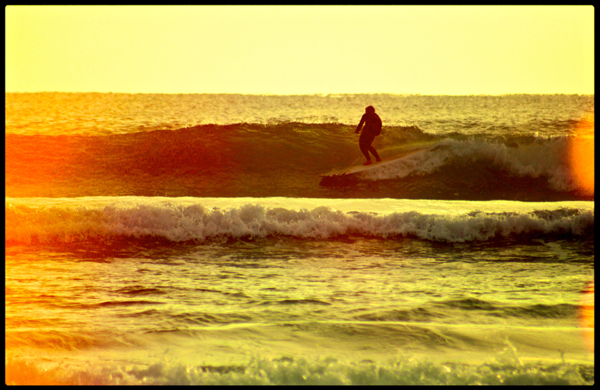
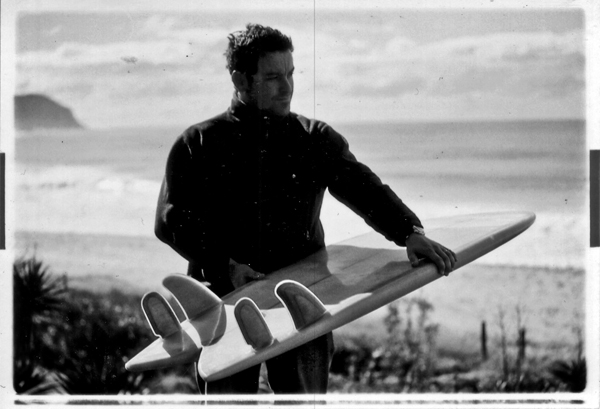

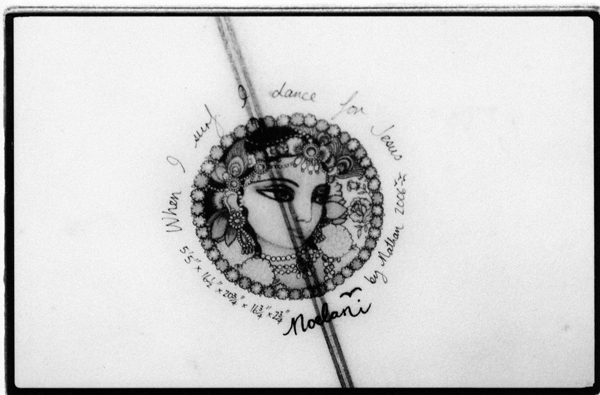
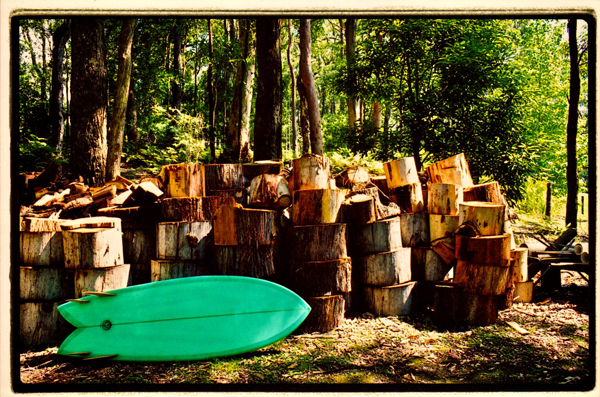
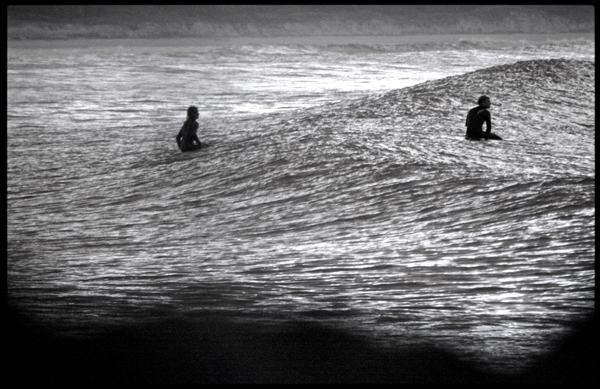
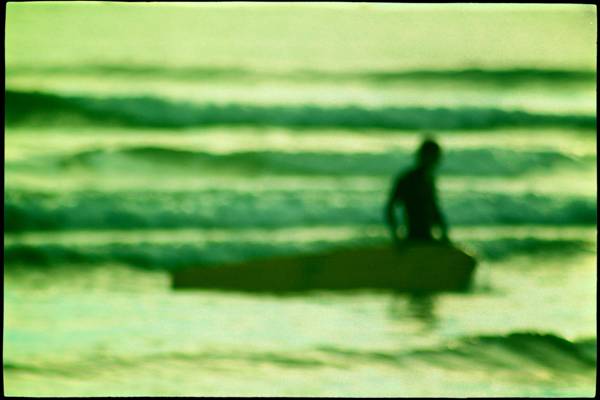
Yusuke Hanai Interview
Yusuke Hanai is a talented Japanese surfer/artist who mixes fluid pastel swirls and fine line ink. He captures the essence of surfing in a look that is both vintage and modern, mixing Seuss with Griffin. We were fortunate to share a few words with him.
What was life like growing up?
When I was child, I would always stay indoors reading “The Dinosaur Illustrated Book” and “The Animal Illustrated Book.” I would spend my time doodling strange creatures. My childhood dream was to be a zookeeper. I had asthma, so I couldn’t play outside much, so I stayed in the house a lot. My parents pushed me into swimming and soccer to make my body stronger. Playing soccer helped a lot, too. I made many friends with whom I would later start surfing with.
Who did you look up to and admire when you were a young man?
Rick Griffin and Dr.Seuss.
When did you get your first surfboard?
When I was in high school. I found it in the neighbor’s trash!
What was the feeling you had when you first stood on a surfboard?
I felt like I was standing on bird wings. It felt like I was flying.
Where did you interest in art come from?
I’ve always loved to doodle since I was a kid. I would always doodle Japanese and American comic characters. I still doodle.
What is your process when creating your art?
I love to make my life look fun. I always try to find something fun and draw happy things.
Of all the places you have traveled to, what place in particular stands out? And why?
San Francisco. When I was 21, I traveled to California and I fell in love with the city. The people were nice and the town was so beautiful. There is so much interesting culture in SF. I moved to SFwhen I was 24. I stayed there for a year. I still love San Francisco. I want to go back there someday.
What is it that makes you such a nice person? What code do you live by?
To be a good friend. I can’t do anything by myself. Friends will always give me good things, so I try to bring them good things,
Who/what inspires you?
Surfers, waves, and all creatures.
What is the greatest thing you have learned in your life?
Having friends. Now I have many friends from Japan and other countries. They enlarge my world.
Do you have any regrets or wish you had done something differently?
So far, no. If anything, I just want to draw better.
What meaning does surfing hold for you and how has it changed your life?
Surfing is my way to connect with nature. I can feel the seasons and feel the power of nature. And I find color, which gives me so much inspiration.
What brings you the most happiness in the world?
Surfing and hanging out with my friends and chilling out with my girlfriend and dog.
Who are some of the people you feel are shaping the path for surfing today?
There are so many good surfers in the world. I couldn’t just name one, but I do like to watch Rob Machado and Joel Tudor ride.
What is in your current quiver? What is your favorite board? Your favorite surfspot?
I have a 5’10” MSF G-2 single fin, an Eric Walden twin fin and a 6’1” tri-fin Lost Speed Demon.
What’s your favorite meal?
Burritos. Thinking about them makes me miss San Francisco.
What are you currently listening to on your iPod?
Phish
What’s next for Yusuke Hanai?
I’m working on a logo and identity for the Green Room Festival 2010. I will have Tokyo art show in April as well as an upcoming show at the Surf Indian in San Diego. I hope to see all of you there!
More information on Yusuke Hanai can be found here.
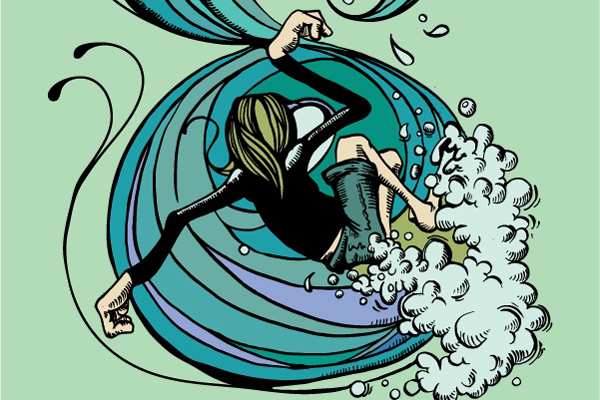
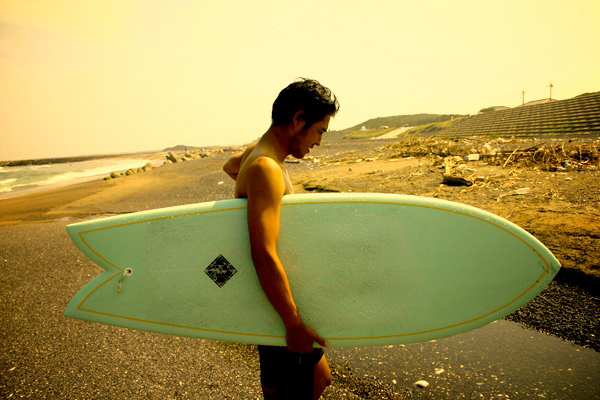
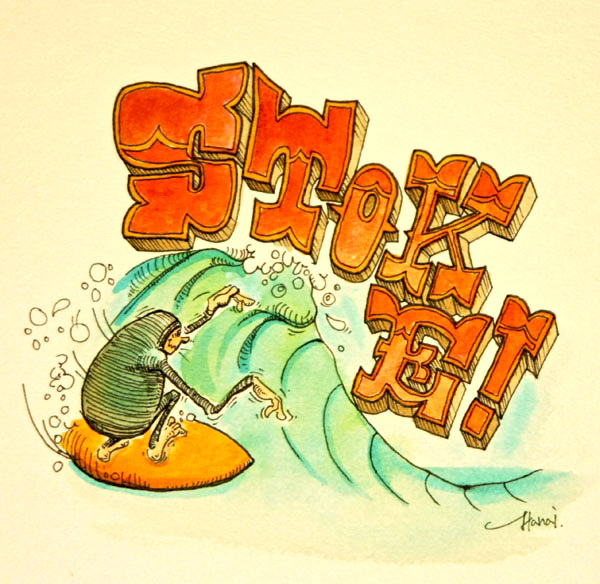
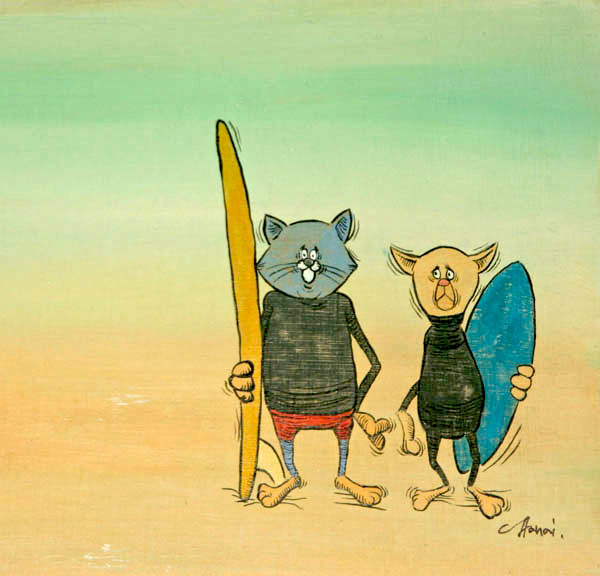
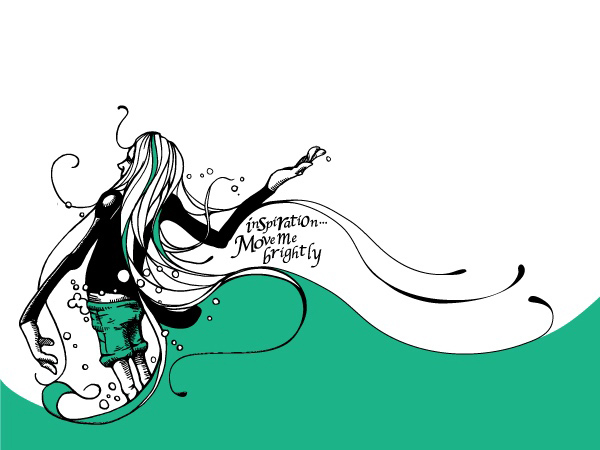
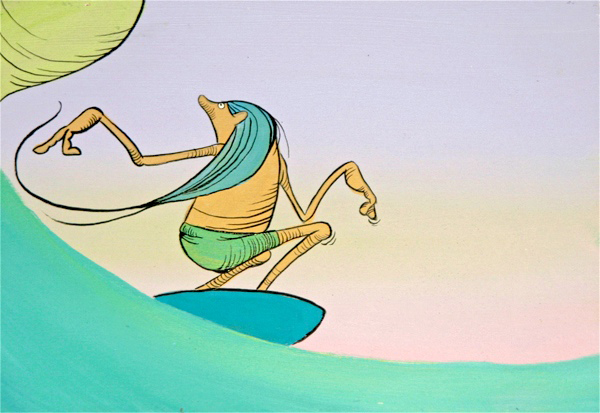
Kameron Brown Interview
Kameron Brown is a California surfer who always spreads good vibes wherever he goes and sometimes knee paddles out to the surf with a rod in his teeth to catch sand bass in the lineup at San-O. We recently had the chance to reel him in.
What was your life like growing up?
Growing up was quite an adventurous part of my life, for sure. I have amazing parents that kept me doing all activities, ranging from baseball to hunting. My Mom was always a great support in my sports life. She worked many hours and still tried her hardest to be there for everything. She has taught me many life lessons and I couldn’t have made it where I am today without her. My Dad has taken me on some pretty intense outings in my lifetime: hunting 200 pound European boars, lobster diving at 1:00 a.m. or simply home-cooked meatloaf for dinner. My Dad bought me all my equipment and has really set me up with the best gear for as long as I can remember. “Sponsored by Dad” is my motto! He is seriously the coolest Dad anyone could ask for!
When did you get your first surfboard?
I got my first surfboard in 2004. A prime eight foot red BZ soft top—probably the sickest board ever. I learned how to do intense coffin rides and really get a good trim going. That board took the beating of a lifetime and eventually faded to pink, and made its way to the trash.
What was the feeling you had when you first stood on a surfboard?
Freedom.
Who did you look up to and admire when you were a young man?
When I was a grom, I really looked up to my Dad. He took me everywhere and really taught me a lot of life skills. I mean, he is my Dad.
Of all the places you have traveled to, what place in particular stands out and why?
Of all the places I have ever traveled to, I would say that the Mentawai Islands are by far the most insane places to ever travel. The housing, culture, society, people, transportation and just about everything is extremely different then to how we live. The waves are substantially better there as well. If you’re going to travel anywhere for some solid surf, Mentawais is the place to go.
Tell us about the fishing pole while surfing thing.
I love fishing. Period. I fish all styles, from deep sea marlin fishing to freshwater fly fishing. I grew up fishing all the time and I guess I can’t seem to get enough it! So, one place I love to fish at is San O—shhhhhh, don’t tell anyone. I start out with my 11′ McCallum surfboard designed for fishing, a bait caster set-up in between my teeth and my lucky fishing hat. Paddle out past the surf, pop a squat and just start casting. This one particular day, Dave Allee from Almond Surfboards was surfing at San O and sees me catching a bomb set with my fishing pole in one hand and a sand bass in the other! Parallel stance is the only way to surf with a fish.
Who/what inspires you?
These are two really good questions. Inspiration is a big thing to me. I like to look up to people that really strive for the best in life. I have many friends and family members that I really look up to. One of my best friends, Christian Wach, really inspires me a lot. He has accomplished amazing things in his life and is still only 19 years old. I think he really believes in me and that really helps drive me to do my best in everything that comes my way.
And what inspires me? Life inspires me. We were given this amazing life to live on this earth to share love and really just be happy. Live life with no regrets and rise to the top.
What is the greatest thing you have learned in your life?
There are many great things I have learned in my lifetime so far, but nothing really particularly stands out above the rest. I feel that every little thing someone learns is another step to the top.
Do you have any regrets or wish you had done something differently?
I would say yes to this because of some harsh things in the past. But, really, I think what I did in my past taught me many good lessons and has really put me in an amazing position to where I am now. I have an amazing life and I think growing up is all part of the process.
What meaning does surfing hold for you and how has it changed your life?
I did not grow up surfing; nor did my family. I faintly remember my Dad surfing once in awhile, but really no one in my family surfs. When I first started surfing, I starting seeing changes in my day-to-day life and even my friends were starting to change. I think that with surfing comes a surfing lifestyle. These changes got me out of trouble and really got me on track for a good life ahead.
Who are some of the people you feel are shaping the path for surfing today?
Personally, if I had to choose just one shaper, it would have to be Robbie Kegal of Gato Heroi Surfboards. This guy has put so much time, effort and studying into what he has become today—a master shaper and surfer. He has been producing the sickest surfboards ever since I got into surfing. I feel his shapes are the shapes of the future and I highly suggest everyone to try one. He looks outside the bubble and really puts his knowledge to the test by creating new and improved surfboards that have never been made before.
What is in your current quiver? What is your favorite board?
11′ Jeff McCallum ~ Glider
10′ 6″ Gordie ~ Crusier
9’10″ Robbie Kegal ~ Crème Noserider
9’10″ Bing ~ Kameron Brown model
9’9″ Jeff McCallum ~ Nugget Chaser
9’7″ Gato Heroi ~ Psychedelic Noserider
9’6″ Tom Wegener ~ Hollow Wood Log
7’2″ Wayne Lynch ~ Gun
6’6″ Alaia ~ Tom Wegener
6’2″ Alaia ~ Jon Wegener
6’2″ 80’s thruster
5’6″ Chris Christenson ~ Twin
5’6″ Bing ~ Twin
My favorite log would have to be the Nugget Chaser and, for a shorter board, it would have to be the Wayne Lynch gun because I got tubed in the Mentawais on it!
Your favorite surf spot?
I live in Dana Point, so my favorite local spot would have to be either Lowers, San Onofre/Middles or Malibu. My favorite spot besides home would have to be either Scorpion Bay, Mexico or Noosa Heads, Australia.
What’s your favorite meal?
Acai Bowl.
What are you currently listening to on your iPod?
The Kooks’ “Seaside”.
What are you most grateful for?
Healthy life, happy family, and surfing!
What’s next for Kameron Brown?
I tend to take my days day-by-day, but I hope to travel to many places in 2010 like I did this year. I hope to take many more road trips in my van to Northern California and Mexico. Australia will be my first trip of the new year. I will be traveling between Noosa Heads and Sydney, surfing as much as possible and just getting in a real nice, relaxing vacation to paradise!
More info about Kameron Brown can be found here. Photography by Cameron Oden.

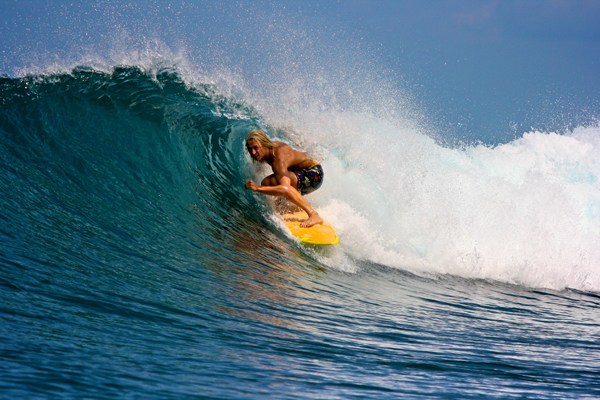
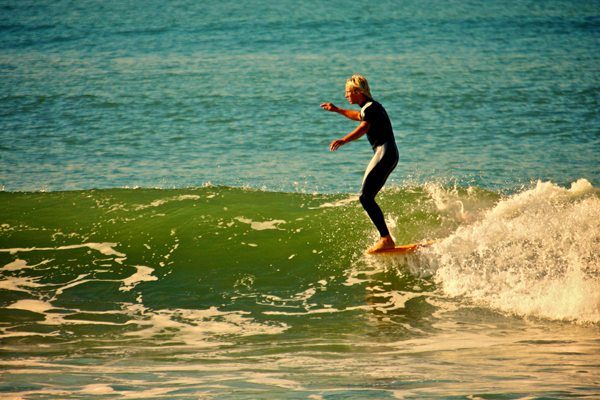
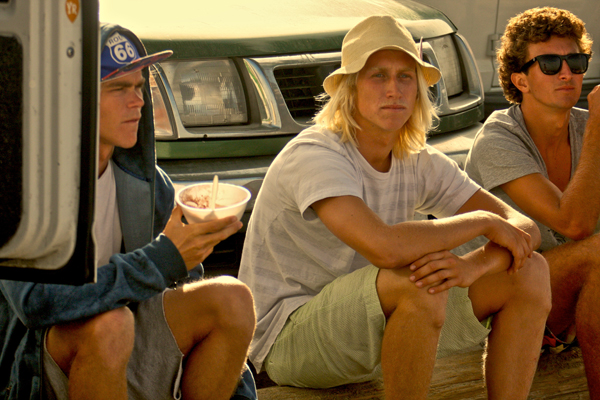
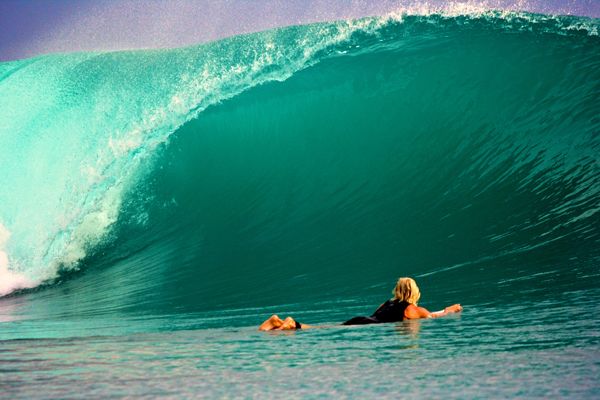
Heather Brown Interview
Heather Brown is a talented artist living the dream in Hawaii. Her vibrant and graphic paintings capture the joy of the glide and the rich colors of our surfing landscape. Heather talks to us about her many inspirations and what she appreciates in her life.
When did you get your first surfboard?
When I moved to Hawaii a little over 10 years ago. I still have it today and it’s one of my favorites, it has light green, yellow, orange, and blue pigment stripes, 5 stringers, 9’4 single fin.
What was the feeling you had when you first stood on a surfboard?
It was exhilarating, and I couldn’t wait to do it again
What did you want to be when you grew up?
I was all over the place, changing my mind all the time… One day I wanted to be a marine biologist, the other I wanted to be a paramedic (which I actually did for a while) I always made art, but never thought I could actually make a living at it, so I was always looking for the right job that would make me happy, none really fit the bill, so after many different career choices, I finally decided to pursue what I loved most, and I enrolled at the University of Hawaii to study fine arts.
Who did you look up to and admire when you were a young woman?
I really loved Jane Goodall.
Where did you study painting?
University of Hawaii, Manoa
What is your process when creating your art?
I paint with acrylics on canvas, silkscreen prints on paper, and I paint on the occasional surfboard or single fin too! Lately I’ve been painting these really cool hand planes used for body surfing that my boyfriend has been making under the name Hawaii Alaia.
Of all the places you have traveled to, what place in particular stands out? And why?
I liked Tahiti a lot, so much beauty there. In January I’ll be taking a trip to Namoto Fiji, I’m really looking forward to going there!
What is it that makes you such a nice person? What code do you live by?
Love and happiness are the most important things in life, I try to stay aware of what makes me happy and appreciate it every day, the people I love, the beautiful island I live on, fun surf, enjoying painting, I try to live by doing what I love and never taking it for granted.
Who/what inspires you?
I get inspiration from many places – nature is what inspires me the most, also art and music.
What is the greatest thing you have learned in your life?
Learning to read and interpret color
Do you have any regrets or wish you had done something differently?
No, I wouldn’t be where I am now if everything didn’t happen as it did already, and I’m very happy with where I am in my life now, so I have no regrets and am happy with the path I have chosen, I feel that it has made me a more well rounded person and I appreciate more that I’m doing what I love and living where I want to be.
What are you most proud of?
My artistic talent
What meaning does surfing hold for you and how has it changed your life?
Surfing is great for me in many ways, its a great way to have fun, clear your mind, good exercise, interacting with nature, being in the beautiful ocean and feeling it with all of your senses.
What brings you the most happiness in the world?
My boyfriend, my dog Marley and my cat Charlie, good waves, good food, living in Hawaii, travel, adventure, and staying happy.
Who are some of the people you feel are shaping the path for surfing today?
Everyone who surfs has a role in shaping the path – we are all responsible.
What is in your current quiver? What is your favorite board? Your favorite surfspot?
Bing Lovebird 9’0
Donald Takyama — in the pink 9’0
Bing Zeph model 9’4
Dick Brewer 10’0
Strong Current 9’4
808 by Kohei Chiba 7’8
9’6 by Kimo Green
Tom Wegener Alaia — The Anchovy 7’4
Handplane by Hawaii Alaia
Favorite surf spot is Waikiki
What’s your favorite meal?
Acai bowls
What are you currently listening to on your ipod?
Reggae
What causes/ projects/ organizations do you support?
Surfrider Foundation and Kokua Foundation, Keep A Breast
What’s next for Heather Brown?
Hmmm… Not sure?
More information about Heather Brown can be foundhere.
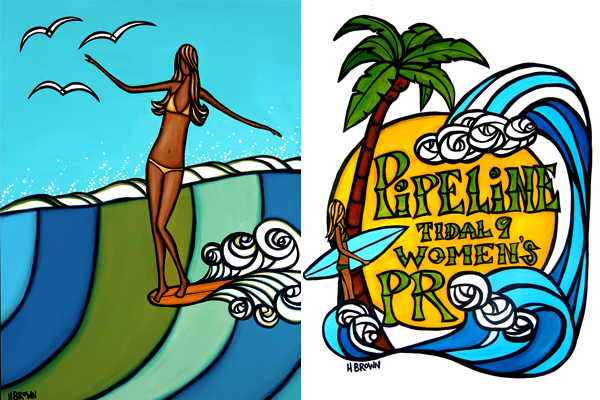
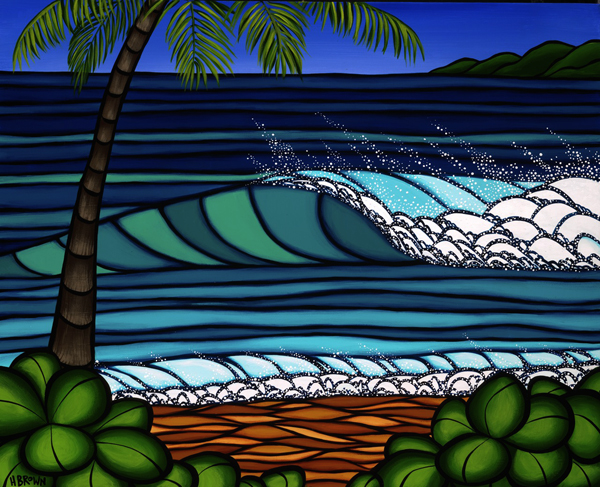
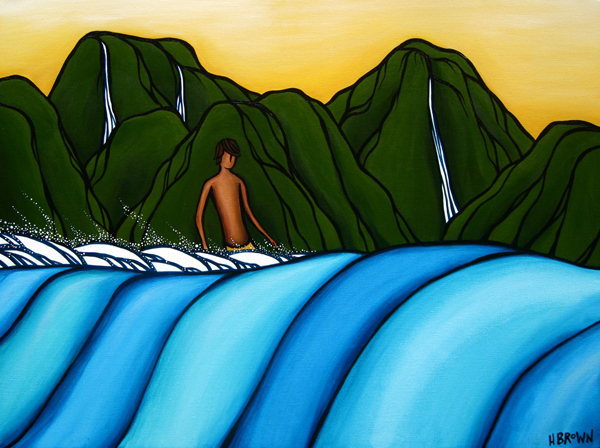
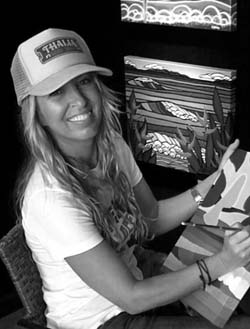
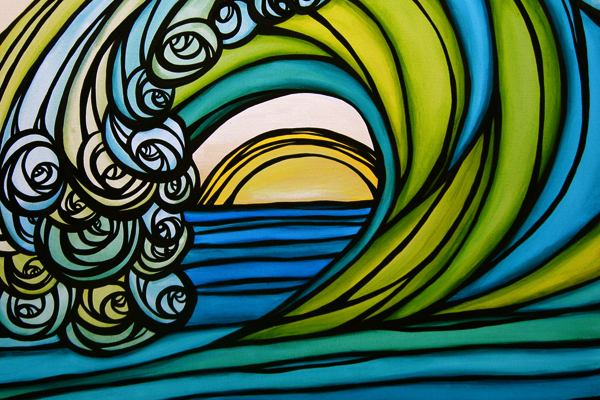
Fletcher Chouinard Interview
Fletcher Chouinard is a California surfboard shaper who also believes in a sustainable future. He builds high performance boards using the strongest and lightest materials for such riders as Chris and Dan Malloy. Fletcher took some time out to talk with us.
What was it like growing up in California?
Great! Most of my childhood, I split my time between Calidoeni and the Tetons, so I was able to avoid the “June gloom” in the spring and summer. There’s nowhere better than the Central Coast in the fall and winter—the surf, the weather, the relatively close proximity of different climates and activities (like skiing and snowboarding). I wish kiteboarding had existed growing up because it really fills out the surf lifestyle during our long flat spells.
When did you get your first surfboard?
My Pop got me on his Greg Liddle hull eggs pretty early on and got me
my own. Maybe when I was 10. My first thruster shortboard was when I
was a freshman in high school, a Maurice Cole mini gun. We were in
France for a season and my eggs just weren’t working in big winter surf.
What was the feeling you had when you first stood on a surfboard?
I can’t remember the first time but the first open, glassy faced wave was pretty unreal. Suddenly quiet, fast, smooth, moving along like magic. It was like being pulled downhill but sideways—unlike anything I had ever felt for sure.
Who did you look up to and admire when you were a young man?
My Pop has always been my biggest hero/influence. He’s always been a
bad ass whether surfing, kayaking (whitewater and big waves), rock
climbing, mountaineering, fishing, etc. He’s always been the calm,
collected guy on expeditions and in the outdoors that survives things
that many of his friends haven’t. He loves trudging uphill for days at a
time in some sort of zen trance. I have no desire to follow his lead in
many things that he’s always enjoyed. I prefer to let gravity and wind
do most of the work, and water landings don’t hurt nearly as much.
What was it like to be the son of someone famous?
I suppose its a little weird. I don’t feel like my family is much different than others. I’ve been lucky enough to travel all over my whole life and get into a lot of outdoor interests. Sometimes I get a little self-conscious when people make a big deal out of my family’s (very minor) celebrity. I’m proud of my parents’ accomplishments in business but, in a way, it’s not that big a deal; any good they do for the planet is really just the way all businesses should conduct
themselves.
Of all the interesting places you have traveled to, what place in
particular stands out? And why?
I feel like the more you travel, the more you see that everywhere is the same. There’s a lot of places out there that I enjoy and, even among those, there’s lots of things I don’t like too. Nowhere is perfect. It’s really just about moments in the search.
Where were you educated?
I been to school in VTA, Kelly, Wyoming, Ojai, some home schooling, and a few years at Cal Poly San Luis Obispo for graphic design/photo (from which I dropped out). I hated school.
Explain how the idea for FCD came about.
I was shaping boards already for friends and family, and by word of mouth. My Pop wasn’t all that stoked on the overall durability of the industry standard and I like to pull into closeouts. So we just started exploring alternatives that had the potential to not crap out as quick.
Why do you feel it is necessary to explore alternatives to poly foam blanks?
There are materials that last longer, flex better, float better, are better to work with, don’t pollute as much, and are recyclable. Why not?
What inspires the shapes and designs of the boards that you create?
Many of my designs are point break-inspired, tested and proven; they tend to be really fast down the line. I tend to like a little bit wider and flatter boards than some guys. I go by “with speed you can pull it off” rather than making it crazy loose and by being dependent on the surfer to make their own speed.
Who/what inspires you?
I don’t look in one direction for inspiration really. I learn something every single time I shape a board, go to a shop, feel a rail, ride a wave, read an article. Getting feedback from the Malloys or our other team guys or just watching them surf is pretty huge for my shaping development. Kitesurfing has made a big difference in both my R&D and my surfing. I have so much time on my feet riding rather than paddling around for hours for four seconds of surfing at a time.
What is the greatest thing you have learned in your life?
(Laughs) Oh, man … to swim? Always check the water depth?
Do you have any regrets or wish you had done something differently?
I wish I had apprenticed with and/or ghost-shaped for someone. Both
Steve Walden and Dave Parmenter schooled me for a while but it’s been
pretty much trial and error since ’95.
What are you most proud of?
Being mainly self-taught at shaping and completely self-taught at kitesurfing.
What meaning does surfing hold for you and how has it changed your life?
Shoot, I dunno. It’s my passion. Everyone has to have one or they’re lost and adrift. Not just a hobby or a job, a passion. The thing that you look forward to doing, that you flake on everything else for and feel fine about. The thing that keeps you from getting whacked out and partying too hard because you want to be able to do it. The first thing you think of when you see a map. What you strive to get better at all the time. I’m sure there’s lots of things that fall into that category for people. I happen to have a better one than folks that don’t surf.
What brings you the most happiness in the world?
Friends, family, getting barreled… sushi?
Who are some of the individuals you feel are shaping the path for surfing today?
Man, there are so many good shapers out there—Eric Arakawa, Al, Rusty, Cole, all great craftsmen. Anyone that’s thinking differently about materials than the norm is rad too (like Greg Loher, Stretch and Sam Cammack).
What is in your current quiver? What is your favorite board?
I have so many surfboards in the rotation. I love surfboards but I often
don’t get attached to individual boards these days. They have to make way for the freshies so the learning process can continue.
I try to always have something in the following categories or similar: 5’7″ swallowtail quad 19.75″ x 2.43″ for “fishy” conditions or mush; 5’10″ swallowtail quad 19.5″ x 2.31″ for “down-the-line” drive in super fast point surf or every day fun;5’11″ P.E.K.E or DM3 for good performance reef or beach break; three or four fin 6’4″ KMRP as a “step up” for the above conditions; three fin 6’8″ RPand 7’6″ RP forbig/hollow—everything up to a 9’6″ gun; three fin 9’6″ to 9’9″ thrusters, quads, and widowmakers. Then a million different variations of each one in different widths, thicknesses, fins, etc. They all have their day!
What’s your favorite meal?
Sushi or roast lamb with chimichurri.
What are you currently listening to on your iPod?
Tool, Iron Maiden, Judas Priest, Pantera, Slayer, Waylon, Hank, Johnny, Janis and Ray Wylie Hubbard.
What causes/projects/organizations do you support?
Surfrider, Sea Shepherd, Restore Hetch Hetchy and many others.
What’s next for Fletcher Chouinard?
I’m going to keep working on quads because I think they’re better than
thrusters in many situations and for most people. Hopefully, I’ll get some really big clean waves this winter to test my new guns and, if not, kitesurf some big, ugly conditions. That and not catch the swine flu.
More information about Fletcher Chouinard Designs can be found here. Photography courtesy of Patagonia by Jeff Johnson.
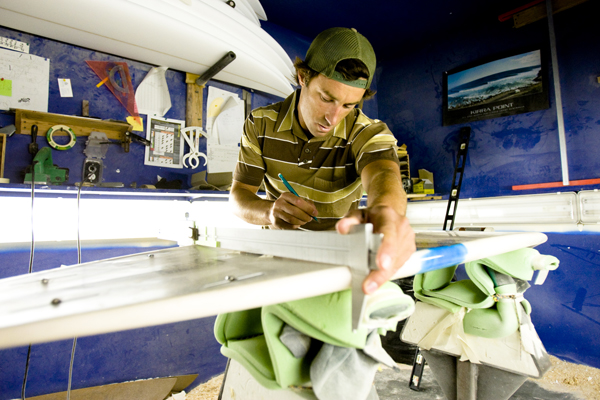
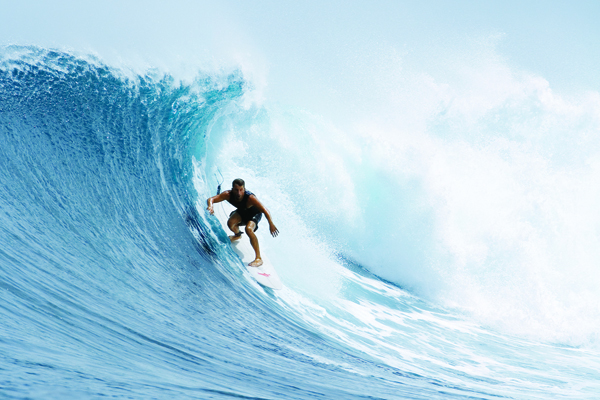
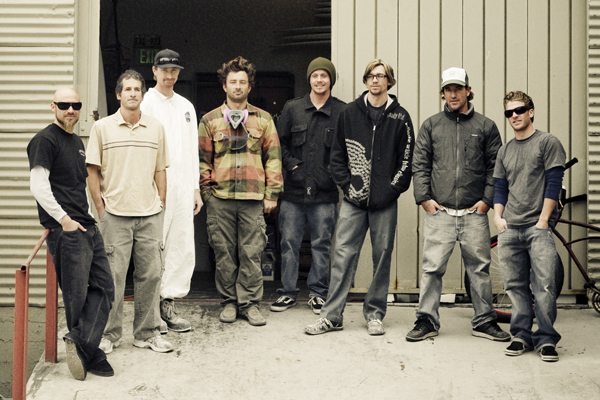
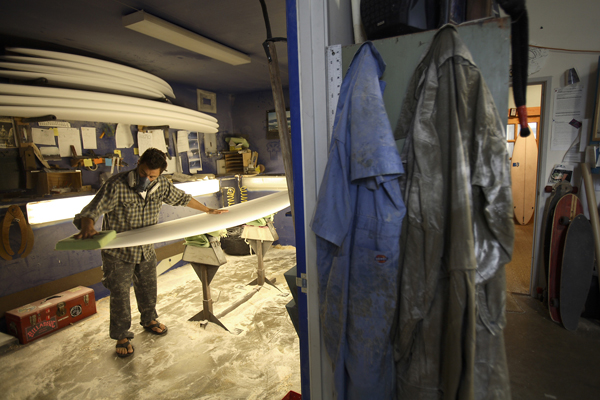
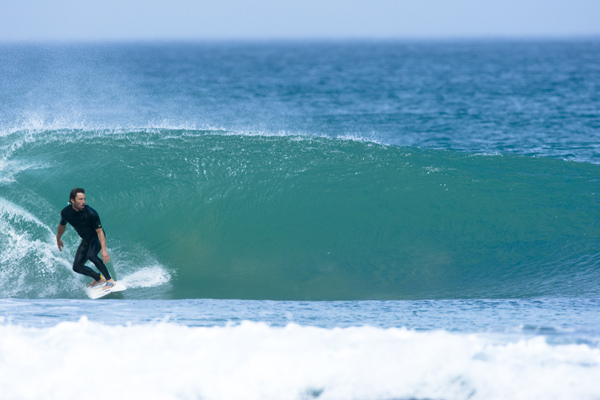
Matt Matoon Interview
Matt Matoon, a California surfer, created the first organic surfboard wax. Determined to find an alternative to petroleum-based waxes, he invented an eco-friendly alternative that is good for both surfing and the environment.
What was it like growing up in California?
I enjoyed growing up in California—having the ocean accessible as well as the mountains. Santa Cruz was such a great place with so many diverse waves in and out of town. The air is always a bit salty and being so close to Ano Nuevo was one of my favorite spots. I also enjoyed being able to have fresh produce for all our meals from my grandmother’s farm.
When did you get your first surfboard?
I got my first surfboard when I was 9 years old. It was a Herbie Fletcher single fin longboard. It had a blue arrow on the front and was all white.
What was the feeling you had when you first stood on a surfboard?
I first started surfing at Cowell’s Beach in Santa Cruz, which is a great spot to learn. It was an instant feeling of wanting to be constantly in the ocean and feeling the freedom of being able to be so lucky.
Who did you look up to and admire when you were a young man?
Surfing-wise, I admired Jason “Ratboy” Collins because I was always impressed with his ability to do airs. I also was always a huge fan of Yvon Chouinard and the Patagonia brand.
Of all the interesting places you have traveled to, what place in particular stands out? And why?
I really like the simplicity of Mexico and I enjoy the food and people a lot. Sayulita stands out for me as a wonderful town with great waves and friendly locals.
Explain how the idea for Matunas came about.
Matunas came about in 1998 when I started noticing that the grocery stores were converting to organic produce. Since we had an operating farm and I was majoring in environmental chemistry at college, I wanted to have a wax that contained no chemicals or petroleum products. I felt that I could invent a wax that could use all the ingredients grown from our farm without compromising the quality.
Why do you feel it is necessary to explore alternatives to traditional wax?
I think having the option to purchase a surf wax that is free from chemicals and petroleum gives surfers the choice similar to shopping in a supermarket choosing organic versus conventional foods.
Who/what inspires you?
I think people who are trying to make our society a better place to live, whether from a small product to developing new ideas, are crucial for the greater good of our environment and humankind.
What is the greatest thing you have learned in your life?
That you can never achieve perfection and learning is a lifelong process.
Do you have any regrets or wish you had done something differently?
I wish that I had learned more languages, so right now I am studying French.
What are you most proud of?
I am most proud of being able to live my dream of doing Matunas and the opportunities that have arisen from following my passion.
What meaning does surfing hold for you and how has it changed your life?
Surfing is a long journey of learning about yourself, and it opens new doors for traveling and places that I would have never gone. Surfing has made me a more understanding person.
What brings you the most happiness in the world?
Good food, family, friends, and a sunny day at the beach in warm water with fun waves.
Who are some of the individuals you feel are shaping the path for surfing today?
I am looking forward to watching surfing go into a new level with Dusty Payne, Julian Wilson, and Owen Wright. I think Kelly Slater is still one of our best ambassadors.
What is in your current quiver? What is your favorite board?
A 5’10” rounded pin, 6’0” pintail, 6’2” and a 6’4” squash tail and a 9’0” single fin. My favorite board right now is the 9’0” single fin since the waves have been a bit smaller in front of my house.
What’s your favorite meal?
It has to be mashed potatoes, a medium rare steak with horseradish and, for dessert, a piece of banana cream pie.
What are you currently listening to on your iPod?
I don’t own an iPod yet, but I listen to Sinatra and the Doors.
What causes/projects/organizations do you support?
I am a strong supporter of organic farming, and also of innovative ways to find new sources of energy. I think any project that helps better our society or our world is a step in the right direction.
What’s next for Matt?
At Matunas, we are doing research and development for new products that are centered around sustainability. I have been focusing on new developments in the ski and snowboard world as well. But for now, it’s a shave and a shower.
Find out more about Matunas Organic Surf Wax here.



Julie Goldstein Interview
Julie Goldstein is a celebrated California artist exhibited throughout the world. She is inspired by the ocean and surfing to create her vibrant woodcut prints. We catch up with Julie to learn more about her life and her art.
What was life like growing up?
I grew up in a small town about 40 minutes from the coast in New Jersey. We used to ride our bikes everywhere, including to school. Medford Lakes was a small and tight knit community. It was a great place to grow up. My family spent summers and most weekends in Harvey Cedars on Long Beach Island. My parents raised us to be very comfortable in the water. My dad used to have body surfing competitions with us with when we really little. Since then I have been very comfortable in the ocean. My siblings and I grew up surfing, body surfing and water-skiing.
Who did you look up to and admire when you were a young?
I remember reading surfing magazine when I was really young. I had all the posters of surfers all over my bedroom wall. I loved and still admire greatly Linda Benson and Rell Sunn.
When did you get your first surfboard?
My dad surprised me with my first surfboard when I was 12. It was hiding behind the Christmas tree. I was so excited. It was a 5’6” bright pink Skip Miller Line Drive. I still have it.
What was the feeling you had when you first stood on a surfboard?
I will never forget learning to surf. I was about 11 or 12 and the waves were stormy and cold in New Jersey. I was determined to be a surfer. The boys that I grew up with in Harvey Cedars, would paddle out with me and encourage me to take the set waves. Back then I was fearless and didn’t really care how big the surf was, I would just go for it, fall and paddle back out until I would eventually ride waves in. I was addicted to surfing at a young age.
Where did you interest in art come from?
I always loved to draw, sew and create. My mom taught me how to sew when I was 8 and my sister and I had a playroom where we were allowed to draw on the walls. I think that was the start of my creative interest. It wasn’t until high school where I felt most comfortable in the art room surrounded by other students interested in being creative. I was good at it and the art teachers encouraged me to keep taking advanced art classes. I ended up studying art in college.
What is your process when creating your art?
I consider myself a woodcut printmaker with a strong connection to drawing. I love to draw. I start my woodcuts by first drawing onto the surface of wood. Then I carve the negative spaces in the drawing and jigsaw or sand down the surfaces to create texture. Lastly, I roll ink onto the woodcut and place paper onto the surface. From there I use a wooden spoon to apply pressure to the paper and then pull the paper from the wood to create a print of the carving. I usually print between 3 and 10 from each woodcut, depending on how large the carving is.
Of all the places you have traveled to, what place in particular stands out? And why?
I have a strong love for Europe. My last trip to France was very special and it is a place I would like to travel back too. I love the culture in Europe; the food, art, fashion, aesthetics, everything!!
What is it that makes you such a nice person? What code do you live by?
Be kind to others, give from your heart, be mindful, honest and grateful for the little things in life
Who/what inspires you?
I am inspired by nature, mostly the power and emotions of the sea. I am inspired by individuals who follow their dreams and create a lifestyle based on what makes them happy. Lastly, I am empowered by women who are fearless, nurturing, balanced and leaders. They remind me why I create art.
What is the greatest thing you have learned in your life?
My parents taught me how to give and be grateful for the little things. I learned through life to follow my heart, mind and to honor my health. Life is so short, take advantage of what you have and can offer to others.
Do you have any regrets or wish you had done something differently?
Never, I live in the present. If I wished otherwise I would not be grateful for where I am today.
What are you most proud of?
My ability to let go of the past and live in the present moment.
What meaning does surfing hold for you and how has it changed your life?
Surfing is humbling to me. I surf because I love the ocean and I always feel more grounded after surfing. My husband always says “Its always better to surf” and it is. I go through periods when I don’t surf, and when I get back in the water after a break, I always realize why I love surfing so much. It is physical, spiritual and I always learn some thing from each session. I usually get most of my ideas for my art in the water.
What brings you the most happiness in the world?
I am most happy when I am balanced. This is when I am creating art, spending time with my friends and family and especially surfing with Mark, my husband and swimming with Davey our dog.
Who are some of the people you feel are shaping the path for surfing today?
Good question. I think Maya Gabriella is absolutely fearless, she is someone I admire because of her story and charging huge surf. I also think Kassia Meador is amazing. She is an unbelievable surfer and has created a career not only on surfing, but art, personality and she is a role model for other women. People are drawn to her for so many different reasons.
What is in your current quiver? What is your favorite board? Your favorite surfspot?
I have two favorite boards for two totally different conditions. I LOVE my 9’6” Yater. That is my baby. I am naturally a long boarder and I love surfing Cardiff Reef or Swami’s on it. But I also love my 6’0” Channel Island quad. My absolute favorite place to surf is at home on 78th street in Harvey Cedars, the same street where I learned to surf.
What’s your favorite meal?
My husband and I are vegetarian. I love a good home cooked veggie filled meal. I don’t even care what it is as long as there are tons of vegetables.
What are you currently listening to on your iPod?
MIA, Yeah Yeah Yeahs, Ting Tings, Radiohead, The Smiths, Otis Redding, Interpol
What causes/ projects/ organizations do you support?
The National Endowment for the Arts, Surfrider Foundation, The Monarch School, Women for Women Organization, PETA, Alliance for Living Ocean, Keep a Breast Foundation
What’s next for Julie Goldstein?
Only time will tell. I will keep creating, living each moment, and being true to my art and myself. I can only be grateful for what I have right now and I hope that what I create can speak to a larger audience.
Find out more about Julie Goldstein and her art here.
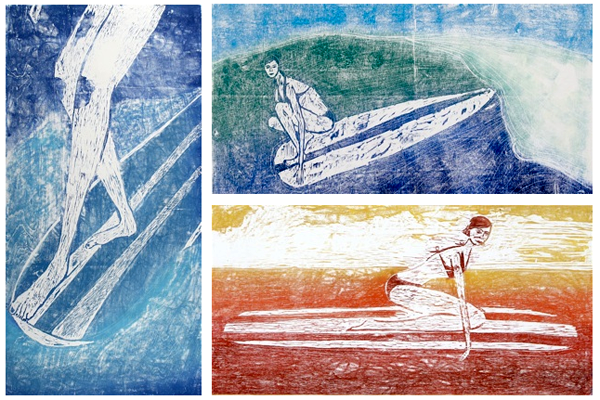
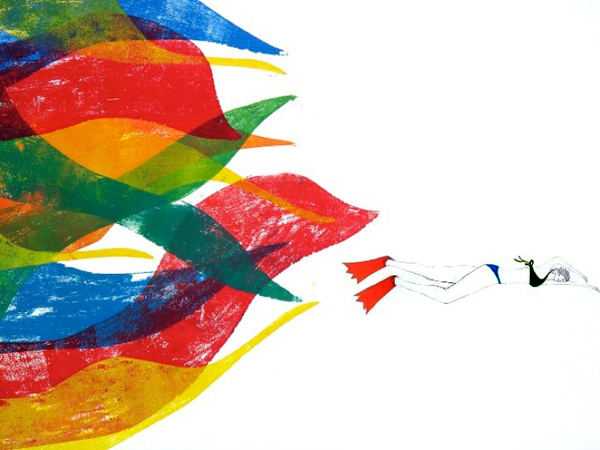
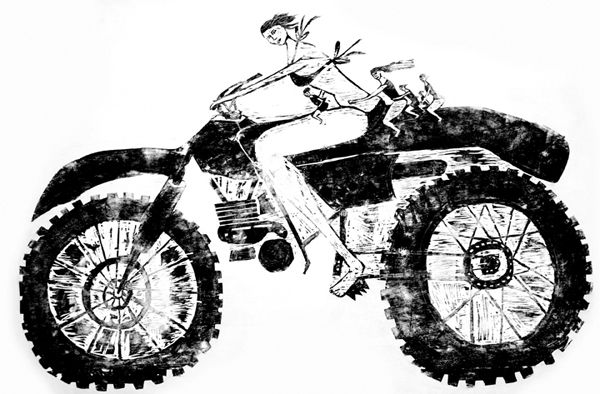
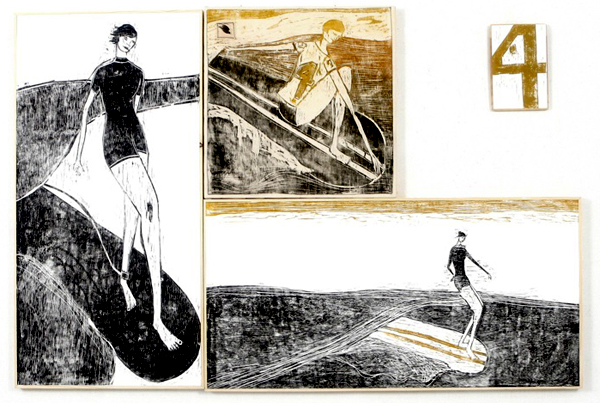
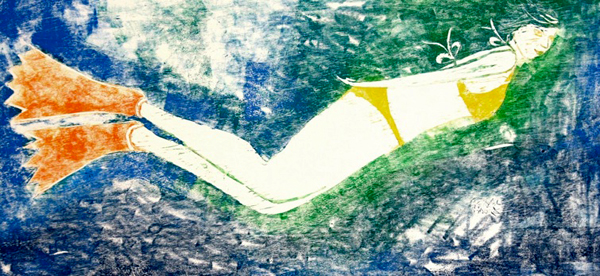
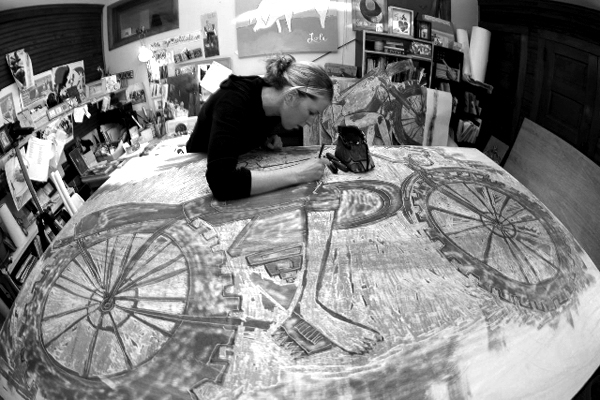
Nick Cocores Interview
Nick Cocores is a California surfer and owner of Thalia Surf Shop in Laguna Beach. His unique vision has brought many talented artists and shapers to the forefront and has positioned his shop as a design leader. Nick shares with us his journey.
What was it like growing up in California?
It has been the best thing ever. I have had lots opportunities and many friends. California has lots to offer; many connections and good surfing keeps me going everyday.
When did you get your first surfboard?
1986—I was about eight years old. My first wave ever was in Hawaii at Canoes in Waikiki. I have a picture, that was taken by Bobby, on the first wave I stood up on. I can’t remember his last name, but Bobby was the first guy I saw doing stand up surfing with a camera that was not water-resistant.
What was the feeling you had when you first stood on a surfboard?
I was so amazed. It was such a big deal that all I wanted to do was do it again and again. Ever since then, I have been hooked.
Who did you look up to and admire when you were a young man?
My dad got me surfing and took me on trips to Hawaii. He was the one I wanted to be like. After surfing for a while and looking at Surfer mags, I wanted to surf like Joel Tudor and Rob Machado.
Of all the interesting places you have traveled to, what place in particular stands out? And why?
For surfing, the Mentawai Islands are the best. It was such an amazing trip. The waves were perfect and really fun. We had a good crew of people that made it the best surf trip I have ever been on. The waves pushed my surfing ability and opened my eyes to how good the surf can be in other places/countries.
Where were you educated?
I went to school in Mission Viejo and Fallbrook. After that, I went to Mira Costa and took business classes.
Explain how the idea for Thalia Surf came about.
Well, it was kind a deal that has slowly evolved over time. In 2001, I took over an old Hawaiiana shop that my family had opened. It was next to Toes on the Nose surf shop (which my parents owned at the time). They helped me get the spot and all I did was stock it up with surf stuff. My original plan was to just do what everyone else was doing and get all the major names. Little did I know surfing politics were in Laguna and we could not open anyone because of other competition. So this is how it all began.
I knew I could do something really cool with out any of the mainstream brands. I really wasn’t even into them anyways. So I made a few phone calls, made some tee shirts and ordered a few boards. The rest is history, and today it’s cool to look back and see how far we have come. None if it would have been possible without my family and friends.
How do you go about choosing the artists and designers you feature in the store?
We choose people that are like-minded and get what we are all about. Its not really anything you can explain; we just know when we meet or see something we like. It all started from a few friends—Andy Davis, Thomas Campbell, Joel Tudor, Malcolm Campbell, John Frasier and lots more. From these people, the whole shop has transformed into what it is today and has opened eyes for lots of people. We were not the first to invent anything. We were just the first to showcase and display this whole scene of surfing—surfers and artists doing what they love.
What is it that makes you such a nice person? What code do you live by?
I guess just being me and not trying to be cool. I treat everyone how I would want to be treated. I don’t care if you suck at surfing or if you have other interests. I am into lots of things myself and I just want to be treated good.
Who/what inspires you?
My family inspires me to do the best job I can do. All my customers make me love what I do every day. I also have a great team I work with: Corey, Josh, Paul, Shesh and Dave. Without them, we would not be here. My vendors inspire me as well. Every time we see new product, I am stoked to sell more rad stuff.
What is the greatest thing you have learned in your life?
So far it’s business. I have learned how to make living off of doing what I love.
Do you have any regrets or wish you had done something differently?
Yes and no.
What are you most proud of?
Keeping business going through these past few years has been the biggest challenge. We have made some big changes and they have all started to pay off.
What meaning does surfing hold for you and how has it changed your life?
Surfing is just surfing. It’s riding waves and sharing them with your friends. To me, it’s not about competition. It has changed my life in a few ways. I will never leave the coast and, second, I will always share the aloha spirit.
What brings you the most happiness in the world?
My family, surfing, riding dirt bikes, traveling, and being successful at work.
Who are some of the individuals you feel are shaping the path for surfing today?
Lots of kids are really stoked on surfing and are very open to riding all types of equipment. I feel Thomas Campbell, Joel Tudor and Andy Davis, the Malloys, Alex Knost and so many others have changed surfing to what it is today. New people are taking it to another level. I am stoked to see Robbie Kegel, Chris Del Moro, Tyler Warren, Josh Hall and so many others take surfing into what is going to be next.
What is in your current quiver? What is your favorite board?
My quiver is this: 9’6” Randy Rarick Cali Model; 7’2” Thalia Model shaped by Sean Tully; 6’0” classic fish by Rainbow; 6’1” Bonzer egg; and 6’0” 80’s thruster from Pavel. Oh yeah, a 6’10” mini gun from Linden.
What’s your favorite meal?
Mexican food.
What are you currently listening to on your iPod?
I do not have an iPod. I am listening to The Mattson 2, The Growlers, The Seeds, Earthless, Tommy Guerrero, the 1990’s, The Dead Weather—the list goes on forever.
What causes/projects/organizations do you support?
We support all of our friends and family, which, in return, supports us. Our vendors are mostly independent artists and companies, so we invest lots of time and money into them. In return, they get to make more rad stuff, go on surf trips, make more rad boards and the cycle continues year after year.
What’s next for Nick at Thalia?
I think, next, we are focused on the Web and will try to grow that to be its own profitable business. We would like to keep on moving forward. We have lots of competition these days, so we are never sitting still—always pushing to do the next project and find the next movement.
Find out more about Thalia Surf Shop here.

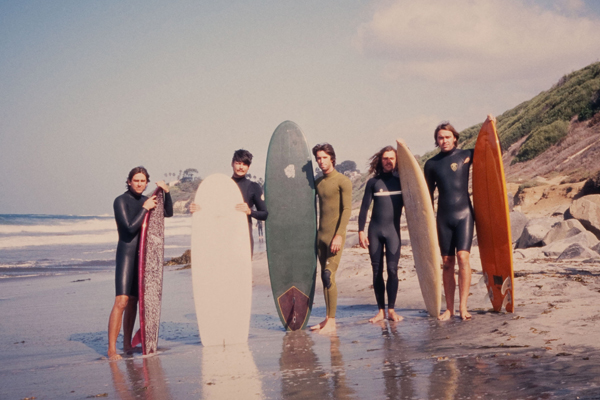
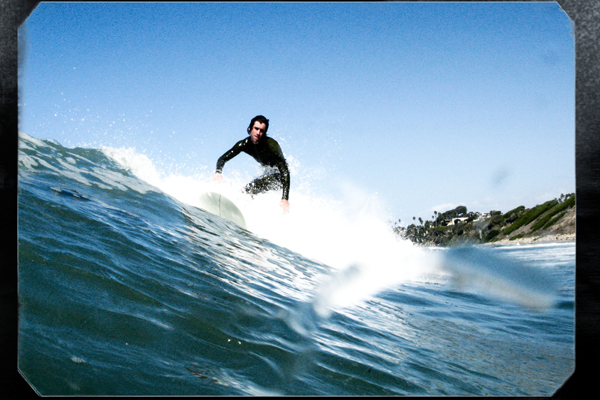
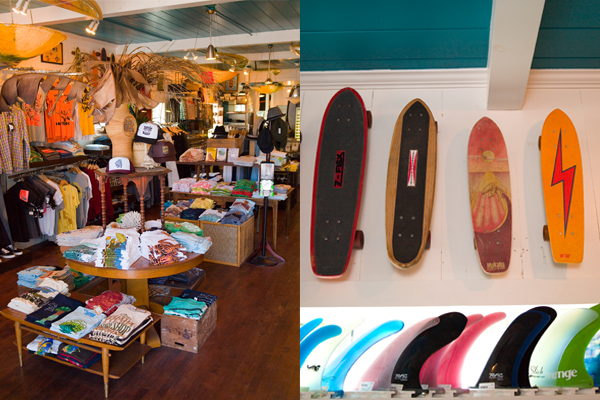
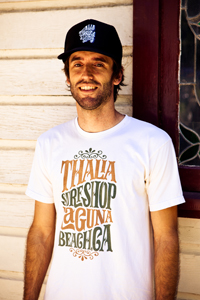
Luke Taffe Interview
Luke Taafe is a talented young Australian artist who spends his time painting and designing for the clothing company Roxy/Quiksilver when not enjoying a day in the surf. We catch up with Luke and ask him about his life and inspirations.
What was life like growing up?
I grew up in a small town in between Sydney and Newcsatle on the NSW Central Coast, Australia. It was an exciting place to be as a kid as we backed onto a golf course which was also under a kilometre to the beach. It was a really exciting time for myself and everyone around. Me and my friends would build shitty skate ramps, walk to the beach and surf all day, build fires in winter on the beach, hang with girls and generally enjoy the unpopulated area that it was.
Who did you look up to and admire when you were a young man?
It always changed depending on what I was doing at the time. Locals like the late, great Mark “Sanga” Sainsbury, Ross Clarke Jones and Shane Powell were always heroes of mine. I remember my first day at high school in 1990 and seeing Ross in a school boy’s surfing picture and going, “Wow! He’s so rad!”
I loved the Powell Peralta Bones Brigade team as well (like Hawk and Cab), and my dad was someone I always looked up to and admired.
When did you get your first surfboard?
I think it was around 1984—one of those foamies wrapped in nylon and had a rubber single fin. Gave me terrible rashes but it didn’t bother me cause I was having so much fun.
What was the feeling you had when you first stood on a surfboard?
I just remember going straight all the way to the beach and doing it again and again ‘cause I loved it. I was probably in “sluggoes” and had white zinc on my face as I was in the local surf club.
Where did you interest in art come from?
My interest in art came from being exposed to album covers my father had in his record room. Lots of Zeppelin, Hendrix, Black Sabbath, etcetera and I was always amazed by the art that these bands and artists used. Later on, it was graphics I was seeing on clothing, surfboards, skateboards—artists like VCJ and Jim Phillips, Mambo artists like Richard Allen and Reg Mombassa.
What is your process when creating your art?
I am kind of spontaneous in my approach to a piece. I am constantly drawing in my scrapbooks, collecting images that I like and taking photos that have some sort of personal connection. I build all my frames and half the wood I collect for bases comes from rubbish tips or on the side of the road. I find it rewarding to see a scrap piece of wood with worn colour and texture, and often wonder where it comes from and if it has a unique past or story. Recycling is fun.
Of all the places you have traveled to, what place in particular stands out? And why?
I really love the California coast especially, from Santa Barbara to San Francisco. It’s an amazing coastline with great waves, interesting landscapes/people and a rich past in surf culture. Big Sur National Park is a real standout for me—the kelp beds, the marine life, the cliffs and waves and all the little overnight stays were memorable.
What is it that makes you such a nice person? What code do you live by?
Never been asked that before but I try and give the same respect to everyone I meet. I am generally interested in what people have to say and I like to see people happy.
Who/what inspires you?
I am inspired by so much: graphics in both surf and skate culture, the ocean and the environment, vintage furniture, photography, old magazines and postcards, antiques, other artists, feelings, stickers, girls and colour.
What is the greatest thing you have learned in your life?
I lost my father to multiple sclerosis four years ago, which was hard to see as it was a degenerative disease. In the end his mind was 200% there, but his body was 1% so he gave himself in so our family could have a better life. The greatest thing I have learned in life would be to enjoy every day like it was my last. When I’m down, I think about this and it makes me feel better.
Do you have any regrets or wish you had done something differently?
I wish I hadn’t smoked so much weed as a kid. I feel as though I wasted many years not being as productive as I should have. Making up for it now though. Sleeping has taken a backseat.
What are you most proud of?
Most proud of sticking to what I have loved in life from an early age. I am now at a stage of making a living being creative so I’m naturally stoked.
What meaning does surfing hold for you and how has it changed your life?
Surfing has a special meaning for me. It has given me a great bunch of friends (and continues to do so), memorable barrels, experiences and perspectives that people who don’t surf wouldn’t know and a healthy look at life. It is a great escape which has helped me out at times.
What brings you the most happiness in the world?
Family and friends, waves, art and design, good food and new experiences.
Who are some of the people you feel are shaping the path for surfing today?
Dane Reynolds, Taylor Steele, Robin Kegal, Slater, Dustin Humphrey, Thomas Campbell, Joel Tudor, Rasta, James Cheale, Dain Thomas, Andrew Crockett and Ryan Heywood—all for different reasons.
What is in your current quiver? What is your favorite board? Your favorite surf spot?
I have collected a fair few boards over time that sit in my garage, but boards that I ride are: a 9’4 Shaun Wilde log; two 5’10” twins; a 5’6” G&S single fin; and a 5’10” Al Merrick Pod. When it’s big, I pull out my 7’2” Hot Buttered single. Favourite board would be my 5’10” Crème twinny I picked up in the States in 2004.
Favourite surf spot would be my local—Wamberal Beach. It has a variety of reefs up the northern end and the beachies are always fun.
What’s your favorite meal?
Mexican, seafood and beer
What are you currently listening to on your iPod?
Bowie, Beach Boys, Hall & Oates, Justice, Joy Division, Zeppelin, Tortoise and Coltrane.
What causes/projects/organizations do you support?
Australian Multiple Sclerosis Society and The Stop Shark Finning Society.
What’s next for Luke Taaffe?
I have a few exhibitions and dates booked for next year, including a combined February show in Byron Bay with Mia Taniaka, which will be fun. Working on organizing a collaborative show for late next year and continuing my role at Roxy in graphics and traveling a bit more. So many countries and people to meet. Eventually I would like to exhibit more overseas.
Find out more about Luke Taaffe and his art here.
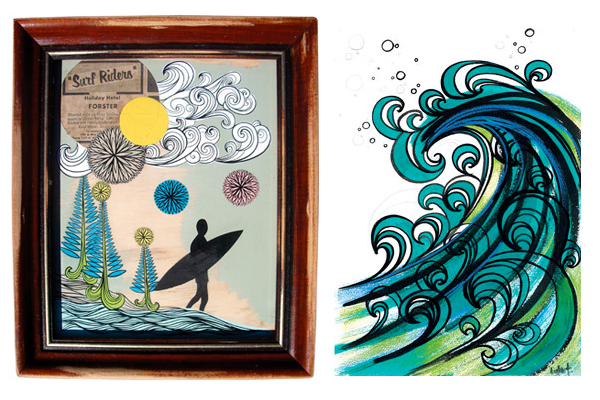
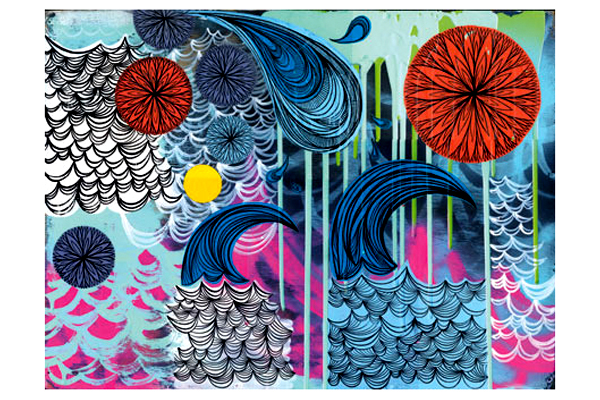
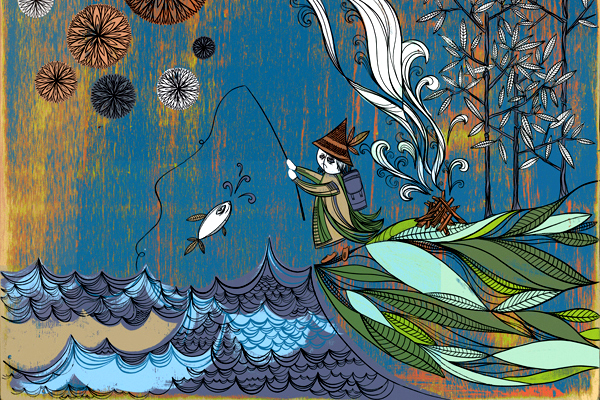

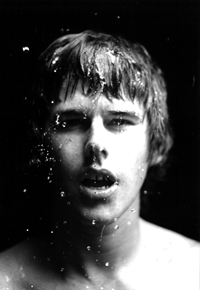
Kevin Short Interview
Kevin A. Short is a talented California surf artist who paints in the “plein air” style. His lush colors and expert use of light is evident in every dynamic brushstroke. Kevin’s work has been shown internationally and has published a book of paintings on Trestles.
What was life like growing up?
Life was good—pretty normal 1960’s family: my brother, two sisters. We were a happy family up in Santa Barbara/Goleta. We were water people: swimming, sailing, bodysurfing, and snorkeling. We never noticed that money was tight. Mom was always trying some alchemy on the zucchini from our garden, not realizing she had invented the veggie burger. And, of course, fried bologna was a big treat.
I grew up with a father who was, and still remains, the smartest man I have ever met, a rocket scientist who shared with us his love for the ocean, science and life—the opposite of the nerd image.
It turns out that, these days, having good parents who love you and each other is no longer normal.
Who did you look up to and admire when you were a young man?
Easy. Rick Griffin
When did you get your first surfboard?
It was Christmas 1973 after spending months—MONTHS!—of trying to talk me out of surfing. My parents got me a Greenough Wilderness! My head exploded!
In the 70’s, most surfers seemed to my parents to be drug-hazed misanthropes. And it didn’t help matters that my hero was the acid-dropping Rick Griffin. It took them decades later to admit that, in the late 50’s, they had a surfboard.
What was the feeling you had when you first stood on a surfboard?
Man, that was pure joy. Wow! I still remember it and I can still see it. Gliding on a glassy day. College Point. Goleta, California. On a borrowed board. It was all the best of everything I knew of the ocean all at once.
Where did your interest in art come from?
I always had it. Born with it. In our family, it was considered part of being a well-rounded person—math, science, literature, art. I had planned to follow in my father’s footsteps and become a chemical engineer, but I had a high school chemistry teacher who was so foul and bitter that I wanted nothing to do with it, and decided the next most appealing thing was art. Besides, at the time, we had moved to New Mexico, and art took me back to the sea.
What is your process when creating your art?
First is inspiration — a color or a shape. Something triggers the moment. I see AND feel something. The image and a vibe gets burned into me. Then I just start “blapping” paint down. I will sometimes divert into printmaking if the image strikes me in that direction. But 95% it is color painted and smeared onto the canvas.
Of all the places you have traveled to, what place in particular stands out? And why?
Highlands of Central America. It is a different world from Coastal California, and a different value system. A lot of my worldview hinges on the work my uncle has achieved teaching basic farming to families on volcanic hillsides. One man changing the well-being of thousands (yes, thousands!!!) of people one compost pile, or one anti-erosion technique, at a time.
What is it that makes you such a nice person? What code do you live by?
I never think of myself as a nice person. When I am not behaving somewhat shy, I am pretty bored with small talk, so I usually keep quiet. However, sometimes at my museum openings or gallery openings, I meet a lot of people who are really interesting. They are probably trying to leave for the rest of their evening, but my curiosity gets a hold of me and you can’t shut me up.
My code — don’t brag, don’t exaggerate, don’t lie. Turns out that truth is a rare commodity, but easy to remember.
Who/what inspires you?
The smile on my boys’ faces. And my wife has a smile that absolutely wrecks me.
Do you have any regrets or wish you had done something differently?
Why ruin today regretting yesterday? Learn from your mistakes and move on.
Life is a complex system. How would I have known, after growing up at the beach, that (in high school) moving from the beach would make me a more of beach person? I have friends that live near the beach but never go anymore. They take it for granted. Being near the ocean is awesome.
What are you most proud of?
Fifteen years of happy marriage and three crazy, happy boys.
What meaning does surfing hold for you and how has it changed your life?
Surfing has been the access to the rhythm of the ocean. The ocean calms me, brings me joy, restores my perspective. It is a source of stability. Surfing makes me happy! And, ironically, it provides a life for us. I don’t paint surf-influenced paintings to sell them. I paint them because I am inspired. I have to sell them because I can’t afford to keep them myself. That is as odd as it is cool to me.
What brings you the most happiness in the world?
Being in the ocean with my wife and kids.
Who are some of the people you feel are shaping the path for surfing today?
This is a great question, but I can’t narrow that down to less than 100 people, not even that.
If I left out the so-called “has beens” from the old days, I’d be missing the true point. I recently saw one of the old guard from the 50’s and 60’s driving by my house with a trailer full of surfboards to the beach where he runs his surf school, giving a whole new generation of surfer his “stoke”. That is a huge lifetime of influence.
And just so that I don’t sound like I dodged the question… whatever Laird’s next hare-brained experiment is. Laird seems to be the face put on the crew who introduced tow in, and then his shooting the Malibu pier on a stand up paddleboard has created a whole new version of surfing.
And, of course, all the surf stars for sure, for good or bad, and whether they want to or not.
What is in your current quiver? What is your favorite board? Your favorite surf spot?
My fav board is this Patterson custom swallowtail Timmy made me after we surfed together down at Capo beach. He was disgusted at what I was riding at the time, so he made me this amazing board, best I have ever owned, something that is between his BFS and twinner. He is a genius!
My current quiver is: 6’1” Tom Whitaker Fish; My magic Patterson 6”11”; 9’0” Phil Edwards Velzy board (probably not supposed to ride it, but what is the point of surfing if it isn’t to have fun?); Patterson 9’0” (the best kept secret is that Timmy is a freakishly good longboard shaper); Dave Johnson 9’2” (very fun to ride); Town & Country 9’3”; Patterson 11’3” fishing surfboard (that on small surf days is fun to paddle from San O to Trestles and surf back).
I spend most of my time surfing Trestles (especially Middles), some Cottons, and then I like State Park and North Beach (granted all in San Clemente). I pick the spot on a crowd/quality ratio. I’d rather surf smaller waves with no crowd headaches. I surf to go have fun, not to star in my own surf movie.
What’s your favorite meal?
Gotta be my wife Amy’s spaghetti. It is “delish”—laughing family and friends are essential ingredients.
What are you currently listening to on your iPod?
My iPod is jammed with Jamaican 45’s that my cousin, Pete, digitized for me from his collection of rare recordings: Desmond Dekker, Ethiopians, Kingstonians, Lee “Scratch” Perry, et al. And I am a sucker for Linkin Park, the Chili Peppers, Van, Petty, Neil, and Jimi.
What causes/projects/organizations do you support?
Boy, that is a tough one. There are some projects, a few causes. Clean water is number one. I can’t surf in a few of my favorite places anymore because of the pollution levels. MiOcean seems to be getting more things solved locally, so I see them as very successful—just a hardcore getting things done. The Save Trestles group has done well so far. I have donated to Surfrider in appreciation to getting a mass of people to the California Coastal Commission hearings. And I really like everybody I have met from Surfrider.
What is the greatest thing you have learned in your life?
It is the simple things that hold the most value: love, life, joy, family, eating Pedro’s burritos on the beach with my family. I am the richest man on earth.
What’s next for Kevin A. Short?
More travels around the world painting. I have to get going on my next book.
More information about Kevin A. Short and his art can be found here.
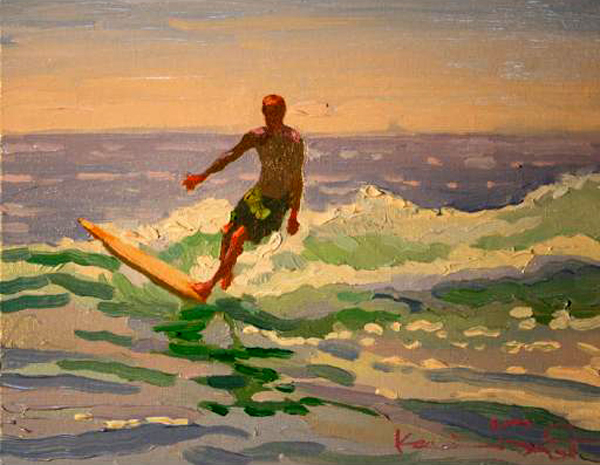

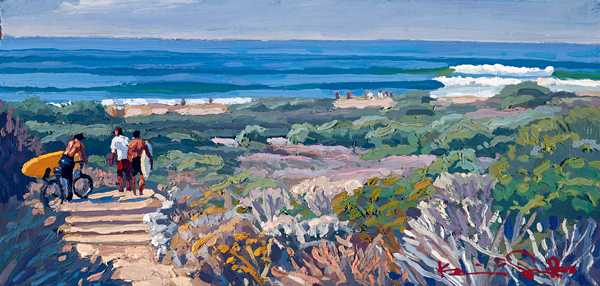
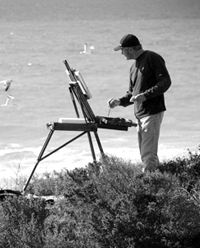
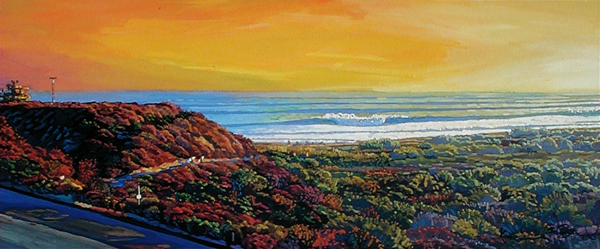
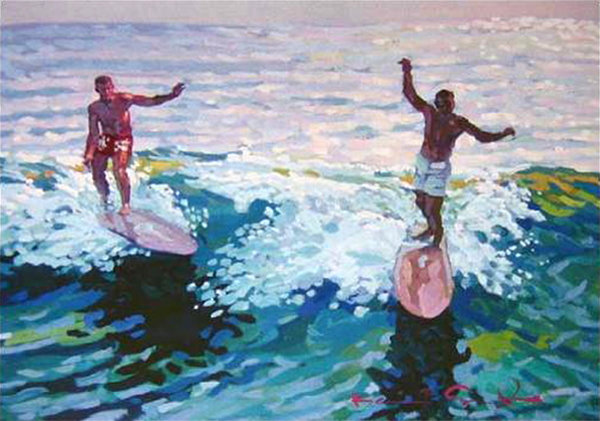

Jamie Budge Interview
Jamie Budge is a California filmmaker who created The Living Curl. Virtually ignored because of its small 8mm frame size when it first released, the film has become a surprise hit to a new generation of surfing fans – 45 years later. Dora, Fain, Weber, Martinson, Peck, and Carson were amongst the film’s many stars.
What was it like growing up in Southern California?
Life at that time had a Tom Sawyer / Huckleberry Finn feel to it. Boys were expected to be boys. I’d take off in the morning with a friend or two and not come back till dark. Go hiking. Climb down the cliffs to the beach. Jump in the ocean. We made soap-box skate scooters, flew kites, climbed trees. Climbed on the school roof. Got into the classrooms. We didn’t take anything – it was just for the free spirited mischief of it all. Rode bikes. And later on: go carts and motor bikes. Totally unsupervised. It felt free. I miss that.
When did you get your first surfboard?
It was sort of prophetic really. I didn’t go, to go surfing. I went down to try a paddle board because I wanted to put a sail on it like the one I had seen in Popular Science or Mechanix Illustrated. On the way in I caught a wave and stood up. My friend was yelling “Great Left!” “Shoot the Curl!” The next day I got my first surfboard. It was my 16th birthday. 1960.
What was the feeling you had when you you first stood on a surfboard?
Up until that wave on the paddleboard, all my surfing experience had been on inflatable mats. I’d paddle with the swell until it pitched me over the falls and ride straight off in the white water on my knees until I hit the beach. At that time, a wave to me was something that was mostly whitewater. So that “shooting the curl” thing had me a little baffled.
But I remember shooting it at Malibu and looking down at all the rocks under the water and thinking, “This is like flying! I’m flying over the surface of the water and all the rocks and other obstacles are far beneath me.” Sort of like an analogy for life, I guess. I was stoked. Because after that, all I can remember about my life is that I went surfing,
Who did you look up to and admire when you were a young man?
When it came to surfing – it was Miki. Because by the time I got there, he was already, “Mr. Malibu”. A bigger than life figure. There he was, right there on the beach. Where you could walk up and talk to him. But I never played the Miki “game”… double speak, tongue-in-cheek, innuendo. I just never knew him like everybody else did. I just admired his surfing.
Dave Sweet was like a father figure. Everybody called him “Uncle Dave.” He was doing his own thing and got a ton of crap from the “established” surfing community for making “pop outs.” Later, it was verified that it was Dave (not Hobie) that was the originator of the commercial foam surfboard. Now, everything from surfboards to boogie boards, kite boards, windsurfing to wake boards are “pop outs”. Dave had that quality of independent innovation that I admired. Like I said in “The Living Curl” narration, I always liked him ‘cause he was a rebel who didn’t do what everybody else did.
And anybody who made surf films: Grant Rolhoff, John Severson, Bruce Brown.
What gave you the idea to film California surfing?
It seems like everything that everybody did in the ‘60’s… didn’t come from an idea. There was no, “Aha! What a great idea I have.” We just did it. Sort of like one of those beach movies of the time, where a party would just break out. At some point, the camera came out and we were filming. I remember shooting 8mm films of my friends and them shooting me so we could see how we looked surfing. If I wanted to see how we looked compared to Miki Dora or Johnny Fain, then I would shoot films of Miki Dora and Johnny Fain. And anybody else we aspired to surf like.
What challenges did you encounter when filming?
Well, the obviously biggest challenge was that I was filming in 8mm. Unheard of for surfing at the time; only used for home movies of the family. So I did a lot of concocting to get 16mm telephoto lens to fit on my 8mm camera. Screwed a gun sight to the side of the camera to “target in” (with cross hairs) on what I was shooting because there was no thru-the-lens viewfinder for my 8mm camera.
Showing it in “auditoriums” was an even bigger challenge. There just wasn’t enough light coming thru those tiny frames to make it all the way to the screen with the projectors available at the time. So I mounted a huge blower on the side of my 8mm projector to cool the oversized 16mm bulb I installed. And I could still only show it in Women’s Clubs and VFW Halls to a hundred or so people at a time.
So, “The Living Curl” has always been sort of the runt of the litter. I mean, who’d go see a surf movie at a Woman’s Club, when all the great films were showing at the Santa Monica Civic?
But I had sort of a cult following. John Milius (who later produced the Hollywood surf classic, “Big Wednesday”), was a fan of “The Living Curl.” He said I was the first kid on the block to really be in the motion picture business. And Craig Stecyk (before he was Miki Dora’s groupie and biographer), was my groupie. He’d come into Dave Sweet’s surf shop where I worked in the showroom, and hang and talk surf. His mom would call me to see if I could steer Craig in the right direction. I guess I did a good job.
What was surfing like back in the sixties?
I guess that’s the whole point of “The Living Curl”. And it’s re-release. It’s surfing in the sixties and how it really was. Like a typical road trip up and down PCH. How it looked, how we surfed, the music that was “surf” music to us – before there was surf music.
What’s uncanny, is that it feels like surfing in the sixties. It took me months to edit it on the computer, and to put all the parts together digitally. That whole process was like a time tunnel for me. The surfers I played with, the music we listened to, all right there in front of me on the computer. It sort of gave me the creeps… to be so caught up in 45 years ago. But at the same time, it made me realize how different, and the same, everything is from today.
How so?
Crowds I guess are the big difference. Malibu was always ridiculously crowded. But hey, (in the ‘60’s) let’s drive an hour up the highway where we can get every wave all to ourselves. Not any more. If you want waves to yourself, you have to take planes and boats to a different country or continent.
Like it says in the film, “In the early sixties, surfing was all brand new.” Southern California was like one big Mardi Gras or Brazilian Carnival-type beach party. The attitude was, “Hey, come join the fun!” There was aliveness and discovery in the air. Every new maneuver or surfboard design was fresh off somebody’s imagination and being put to the test.
And there was an innocence. If you came up with something really off the wall (a 7ft “thumb” board, for instance) it wasn’t really a target of ridicule (most of the time). Because it was all so new, nobody knew what would work or what wouldn’t. Or what place a new board or weird looking maneuver would find in the history of it all. There was an openness to it all. If you were walking anywhere with a surfboard, cars would stop and ask you if you wanted a ride. Join the party.
By the late sixties, early seventies, there was a mood shift to it all. Surfing was turning into a hard core sub-culture of drugs, localism and tire slashings. A harder feel that matched the political and economic mood of the times. Like in the film Big Wednesday. There was a pre-occupation with war in Vietnam, hard financial times and all around social disorientation.
Now that it is re-released, what has been the reaction to a younger generation?
When my partner in this project (surf and skate historian) Scott Starr first approached me about turning “The Living Curl” into a DVD, I thought nobody’s going to want to see this old slop. It was only 8mm (I used to have to talk the audience into not leaving once they saw the projector), it was only 16 frames per second, which would look like ridiculously sped up when turned to video. It would be a lot of work. And outrageously expensive. I’d done some research over the decades, and it would always cost too much and not look very good.
But Scott did a good job of catalyzing me to resurrect it. When I saw it on the monitors during the transfer, I was amazed at how good it looked. Technology had done the impossible. And later on, on the full size theater screen at La Paloma, I was dazzled almost beyond belief. My little “home” movie gleaming out on the full size silver screen, looking as good as “Endless Summer” or “Gone with the Wind.” Where was this technology in the sixties when I needed it?
So it’s better the second time around. I was totally surprised. I thought I’d show it once or twice as a good goof for old surfers. But when everybody applauded their way through the re-release “Première” at Duke’s Malibu and then lined up for autographed copies of the DVD afterwards. It was like shock and awe for me.
And then the emails and phone calls just started coming in. And just kept coming. It was everything I always wanted for it – 45 years later.
Most of the shops that have been buying the DVD’s, have been the younger generation of surfers. It amazes me when they actually gasp at the (sometimes standard) maneuvers we did on longboards back then. In the ‘60’s, the longboard was the only game in town. And the surfers of the day put everything they had into those planks we rode. Some shops consider it an instruction video for longboard surfing.
What meaning does surfing hold for you and how has it changed your life?
It seems like surfing never changed anything in my life. It just seems like I’ve always surfed. It was the norm. It’s not what meaning surfing holds for me, it’s just how little meaning life seems to hold without surfing or similar exaggerated experiences of life (adrenaline junkie?) that I get (got) from surfing and other pursuits.
What brings you the most happiness in the world?
If I get in the “zone” from whatever I’m doing: surfing, filming, skating, skiing, boarding, dancing, whatever – and then I’m done doing it and I realize I’ve been having sort of an “out of body” experience in the process – becoming one with what I was doing. Sounds corny, but that’sIT! Hours have just evaporated. The exhilaration of doing whatever and the feeling of having done it – is the most happiness I’ve ever had on this plane of existence.
Who are some of the people you feel are shaping the path for surfing today?
Miki Dora, Lance Carson, Jim Foley… just kidding! But they are the ones who shaped the path of surfing for me. Today… Kelly Slater? Tony Hawk? I dunno. Something about most of the surfers today – they all look the same to me. Surfers like skaters, skaters like surfers. Same maneuvers, same styles. X Games. Maybe that’s just me, observing contemporary surfing from the outside.
It used to be if you were driving up PCH by Malibu and Miki Dora was taking of at 3rd point, you could tell from hundreds of yards away that it was Miki. Sort of like when I saw Mick Jagger take the stage at the Rose Bowl from a hundred yards away. I just knew the instant he hit the stage: That was him. No doubt. His style. His body language. In the ‘60’s, in the day of “The Living Curl”, surfers were known up and down the coast by their individual styles and body language.
I don’t know if that exists quite the same today. Surfers are performing almost levitating type maneuvers on waves today. Defying gravity and common sense. Incredible to see. But the forms their bodies take in the process is almost irrelevant. You don’t notice it in all the mayhem they are making of the wave.
Maybe that’s part of the appeal of “The Living Curl”: the styles the surfers of the ‘60’s had. Everything that the surfers of today do, is a spin-off from the generation before. In the ‘60’s, there was not really anything before it to spin off of. So it all had more unique, individualistic looks to it.
I saw some footage of Kelly at Jeffery’s and Tom Curren (I seem to remember) at Sand Spit. It was Magic. They had the style and grace of the ‘60’s with the unbelievable maneuvers of today. Best of both worlds. But I don’t see it that often – the maneuvers with the grace and finesse. Agile, yes. But not the style. Arms and elbows and knees sticking out in all directions. We would have considered that out of bounds.
What is in your current quiver? What is your favorite board? Your favorite surfspot?
I made a 7 foot “thumb” board in the very early ‘60’s (after seeing Jim Foley at Steamer Lane in Bruce Brown’s “Barefoot Adventure.” My surf buddies of the time put it in a burning trash can. So I went back to a standard longboard to “fit in.” Probably the last time I did anything anywhere to fit in.
So I’ve always bounced back and forth between the long and short of it. But I’ve always tried to retain my old school roots: whip turns, drop knee cutbacks, nose rides, side slips. But with the looseness to shred up and down in the curl similar to contemporary short boards (which I’ve never ridden. They always seemed too much work to paddle out to the line-up, duck diving and all that.) My favorite boards are a 7’5” and an 8’6”. Both shaped by Robbie Dick with sort of a ‘60’s Penetrator or Performer shape. I’d ride the 7’5” if I could. But I get run over by too many longboarders and SUP’s that are already in the wave by the time I can drop in. So I’ve settled for the 8’6.” I can almost be as loose as riding the 7’5” and still get into longboard waves early enough to take possession.
I was born and bred in right point break waves. And not always perfect. And I like it that way. More variety to keep me on my toes. I like Topanga as well as Malibu, Stables as well as Rincon. Swamis as much as Trestles. For the flat spots, sections, bowls, and time to set up as the next section approaches. Moderately steep as opposed to draining hollow (except for the bowls). Mixed up, longboard stuff.
What’s next for Jamie Budge?
Sometimes I think I’m through doing everything I’ve ever wanted to do. All I did from 16 to 24 was everything surf. I felt I was old at surfing by 24. By the late sixties, it all seemed to be turning to tire-slashing locals and hard drugs. I kept surfing, but dropped out of the scene. Now, between my WindSkate toys and my photo career, I’ve hit all the targets I wanted.
Usually, some unexpected tangent grabs me and I’m off and running in a new direction. Like with WindSkate. Or even “The Living Curl.” I never expected to be doing that. All over again.
I’ve got a second film: “The Californians.” The most advanced longboard surfing ever (in 1967) that was almost obsolete (with the short board transition) by the time it came out. Then I picked it up “Four Years After” with many of the same longboard surfers after they had made the transition to shortboards: David on a Fish. Dewey on a Strato. Corky on his shorter signature model. Mini guns. Cutting edge, transitional short board riding. Up and comers like Jay Riddle and Clyde Beatty Jr. It will be a comparison of longboard — shortboard surfing. I want to put that all together for digital release.
I’m enjoying my newfound niche as historian of California surfing in the ‘60’s. I was never that social with it back in the ‘60’s. I was too busy trying to do all of everything all at once that I didn’t have time to enjoy any of it.
Now it’s all for fun.
More information about Jamie Budge and The Living Curl can be found here.
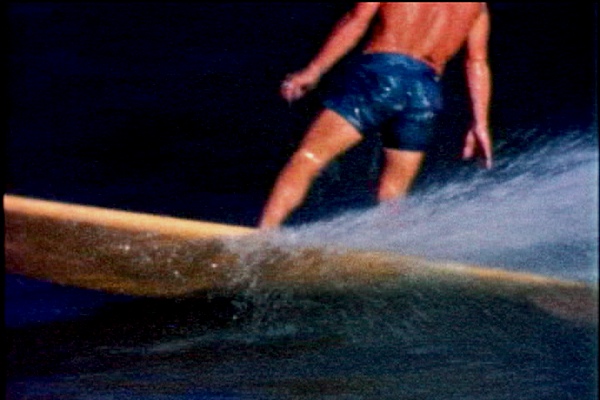

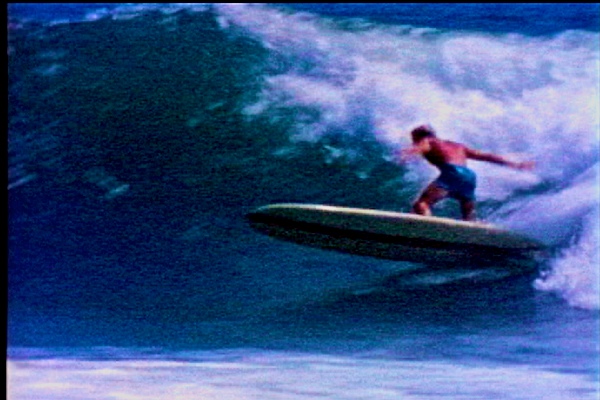
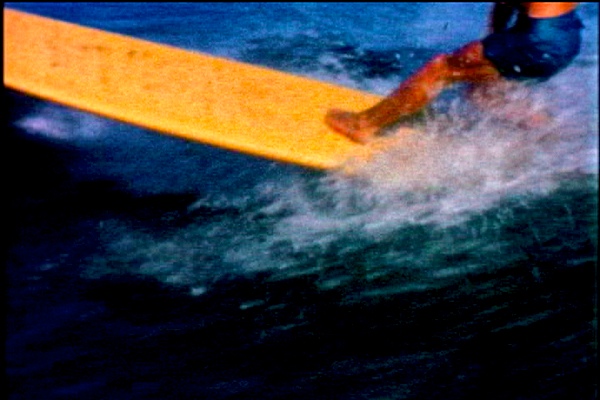
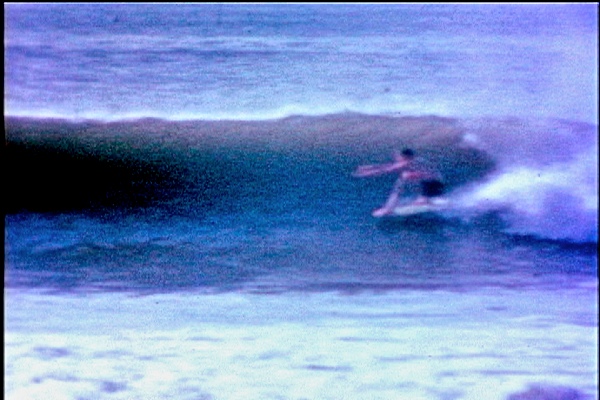
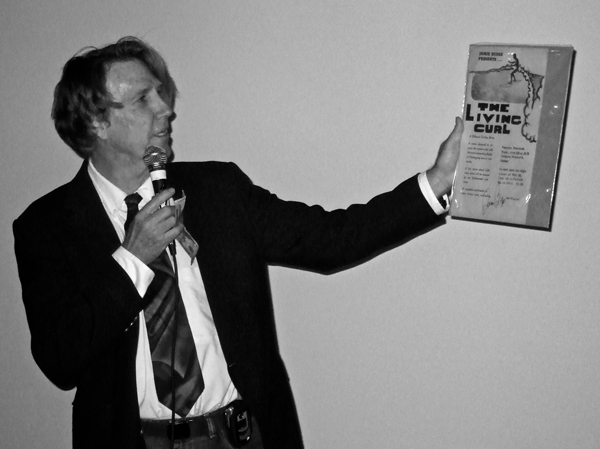
Eric Soderquist Interview
Eric Soderquist is a California surfer, who along with photographer Chris Burkard, created The California Surf Project book. In addition to being a talented surfer, he is also a writer and painter. We spend a moment to tap into his vivid imagination.
What was it like growing up in California?
California as a kid was epic. I was born in my house atop the Village of Arroyo Grande. I had creeks to both sides of my house and my brothers and I were constantly exploring. It was a simple, natural life.
When did you get your first surfboard?
When I was maybe six, we were coming back from the lake when we found two bodyboards on the side of the road. We began a game of riding them down our grass hill. Our uncle saw us and gave us a 7’0″ Hout single fin. It had a black widow painted on it. I’ll never forget it.
What was the feeling you had when you first stood on a surfboard?
The first time I stood up was awesome. I was real young and my brother dragged me out. He pushed me into a wave and I remember riding up a shallow creek and under a bridge. I think he would run behind me pushing me and that’s how I would go so far. It was along time ago so it’s a little vague.
Who did you look up to and admire when you were a young man?
When I was young I looked up to my brothers, Hugh and Loch. They were the gnarliest stunt kids in our neighborhood. We loved forts, bikes, skateboarding. We always had half pipes; it was a blast. Oh yeah, I was really amped on Lance Mountain. Oops! Just read the “young man” bit. At that point, the Momentum thing was amping my brain.
Of all the interesting places you have traveled to, what place in particular stands out? And why?
Traveling the world is a great experience. The raw and natural places always stand out: Canada, West Sumatra, Maine.
Where were you educated?
I went to A.G. high and that was that. I began traveling and developed interests in art. I was a part of a working art studio in San Luis and through that I was mentored by some amazing artists and that’s a lot of that’s in a answer.
What was the inspiration for “The California Surf Project”?
The book we did stemmed from early morning road trips. Chris and I would talk a lot about photography and art (contrast, color, lighting, etc.). It was a simple time for both of us and I feel we were a product of our environment. California is ever-inspiring and the book seemed to fall in place quite naturally.
What were the challenges in producing the book?
For me, the challenges were getting used to the computer thing. I wrote the book on paper, so typing, editing, e-mailing … made me feel like a dinosaur. Other challenges were staying on top of the edits and making sure everything flowed artistically. Luckily, our publisher had faith in us, so it made the experience a lot easier.
What has been the reaction?
The reactions have been great. The book made it into some random places worldwide. I get some classic overseas e-mails where you can tell they hit the translate button. So the e-mails read, “I like car bus en California big air surf I like you do.”
Tell us about your artwork/painting.
I paint large oil landscapes and find myself feeling like an old man. I study the early California artist more than anything. I love William Wendt’s confident color, Guy Rose’s warm, distant landscapes and Georgia O’Keefe’s skull studies. Actually, Georgia inspired me to do a series of surfboard sculptures named “Rest Upon the Prairie”. For mainstream stuff, I did the Nike 6.0 Trestles Pro poster. It was a fun water angle.
What is it that makes you such a nice person? What code do you live by?
I try to live simple and that helps for how I approach things. There’s an underlying vibration to life and I try to live accordingly.
Who/what inspires you?
I feel most inspired when I’m artistic. Which for me is when I’m able to slow down and drift deeper thru the layers of what I’m doing, whether it be painting, sculpture, surfing… People that inspire me are the teachers that help me along the way. Even if its just there captured actions, I appreciate the keen eye.
What is in your current quiver? What is your favorite board?
My quiver is pretty diverse. I have a 5’8” Clyde Beatty Rocketfish; I rode it a lot on my book project. Just got a mental 6’0” single bump single fin from Dave Parmenter. Actually, I have few of Dave’s boards that are great for Central California—mostly unique shapes and some guns. Then I have my shortboards that PJ Wahl shapes. He’s a humble, quiet guy who’s seen a lot. He shaped me a 5’7”, 5’9”, 6’0”, 6’4”, 6’8”—all amazing boards. I’m stoked to ride boards that are shaped by such fine-tuned craftsman. It’s a lot of work for little money and I’m very appreciative.
What are you currently listening to on your iPod?
I like jazz, dub and lots of Neil Young.
What project are you currently working on?
I’m loosely working on a short film, painting and surfing a lot.
What’s next for Eric Soderquist?
For the future, I want to stay creatively in tune while not falling off the face of the planet.
Find out more about Eric Soderquist and his art here. The California Surf Project book is available here. Photography by Chris Burkard.
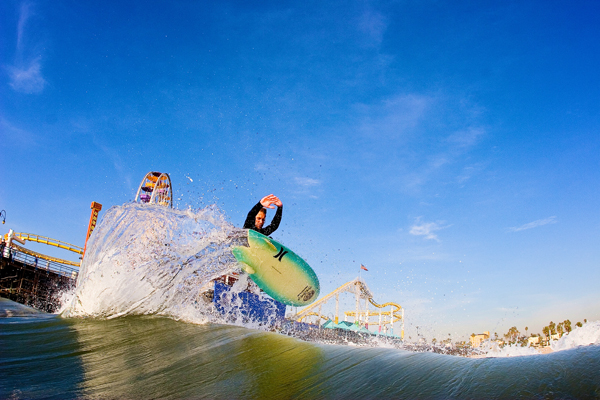
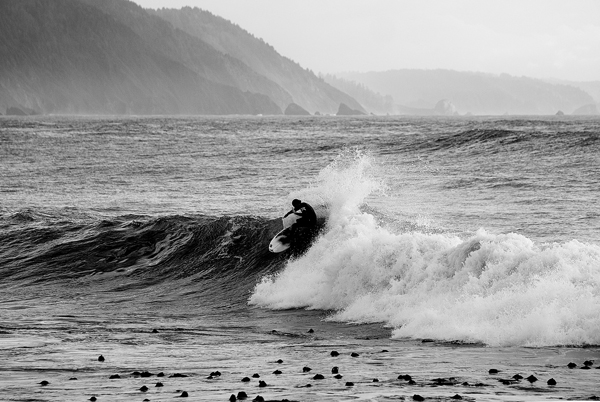
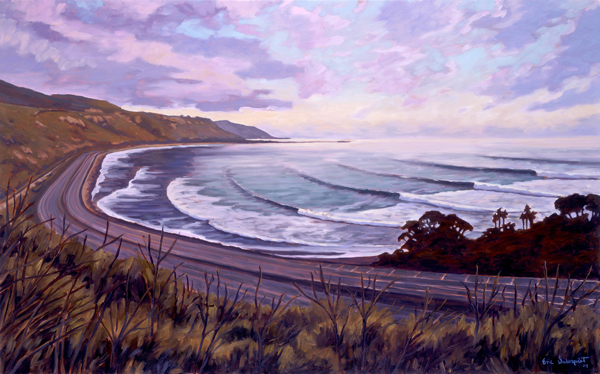
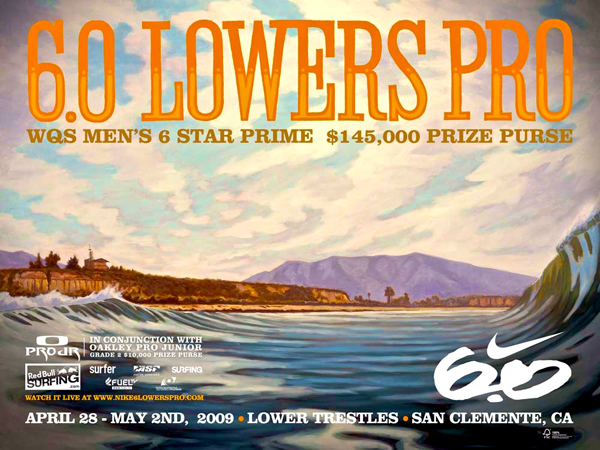
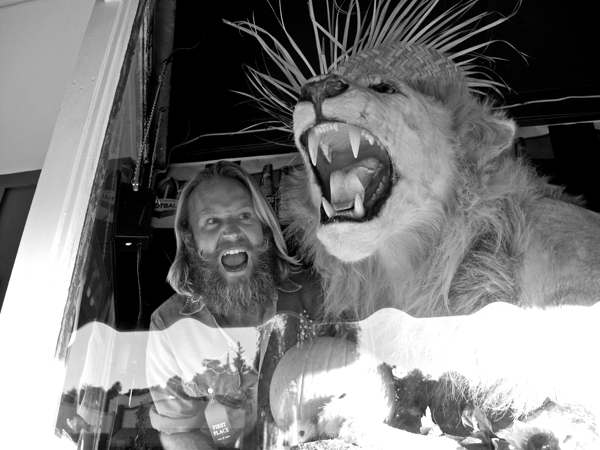
Tom Veiga Interview
Tom Viega is a Brazilian graphic designer and poster artist with a flair for vibrant colors and shapes. His modern and vintage-inspired designs beautifully evoke every surfer’s dream – the perfect wave. We join Tom and ask him a few questions about his work and his life.
What was life like growing up?
I had a very good childhood. I was born and raised in Curitiba, the capital of Parana state, a place with a good quality of life in Brazil. It was a city with no beach, but with lots of nature. A great place for growing up.
Who did you look up to and admire when you were a young man?
My dream was to be a football player. I played for 4 years in the youth team from the capital, but ended up hurting myself. When I stopped playing football did not know what I would do in life, but I was inspired and encouraged by my brother who is an illustrator Dirceu Veiga. I knew nothing of creation, communication, but he was helped me get started working in design.
Where did you interest in surfing art come from?
In 2003 I became interested in surfing after I stopped playing football. Even before surfing I began to delight in the surf culture, the lifestyle of people living in that environment. Life on the beach, travel, and always close to nature is something that had begun to intrigue me.
What is the Serie Waves?
The Waves series name comes from the idea Serie, something still is not something that has an end, is something that is always in motion. A surfer dreams of a series of large waves breaking and tubular, and Serie Waves has this idea and concept. It is a series of waves in various styles, colors, features. It is something that always has something new – a wave, a new work of art coming. It is also something moving – a new swell of creativity.
What is your process when creating your art?
My creative process varies widely, drawing inspiration for a wave can come on a trip with his family to the beach, watching a surfing magazine, watching a DVD of surfing, drinking coffee, walking down the street, anywhere or even doing anything. I always walk around with a pencil and paper, because when it comes to the idea. I’ve already spent the time to put it on paper. I scan the sketch and start to trace the basis of art in illustrator. Finally, I work out the colors, shadows and details in Photoshop to finish the design.
Of all the places you have traveled to, what place in particular stands out? And why?
I traveled a lot, but not outside Brazil. Here in Brazil I have encountered fantastic places, the best was Garopaba, located on the coast of Santa Catarina, a fishing village with a quiet beach for family, a beautiful place and made a big difference. I had a lot of inspiration in those days seeing all those beautiful beaches, waves and landscapes. I do have this idea of traveling with the family to see such as JBay, Mentawai, California, Pipeline, and Fiji.
What are you grateful for?
I very much appreciate the family that God gave me and my family. I am inspired by God who fills our lives and made us, and that also in the motivation to help people who are around us to make life more beautiful.
Who/what inspires you?
My inspiration comes from what God has done – He created waves perfectly, each with a different feature, different colors, different shapes. Also the surfing community has inspired me. Waves, travel, magazines, dvds, surf sites, anything resembling a wave inspires me.
Do you have any regrets or wish you had done something differently?
I wish I had known more of surf culture before I started with football.
What are you most proud of?
I am blessed and proud to have a family.
What meaning does surfing hold for you and how has it changed your life?
Surfing has many benefits to a person, it brings us closer to nature, the beauty that God created, everyone who gets involved with a sport, a culture like this creates a change in lifestyle. Leave an urban center to go to a beach, either to rest or to ride or spend a weekend and just stop and admire the sea – It’s so great, so full of waves, it makes you appreciate your life.
Who are some of the people you feel are shaping the path for surfing today?
I have people I admire very much in the world of surfing. They are the artists, surfers amateur and professional photographers.
What’s your favorite meal?
Baked fish.
What are you currently listening to on your iPod?
At the moment I just listened to POD, Tom Curren, and Dominic Balli.
What causes/ projects/ organizations do you support?
I now work for a digital agency, working as art director, and in his spare time do freelance design work and also in WAVESSERIE. I am also involved in social work at an orphanage and also other social project that helps people have more hope in life. I work with people who have done drugs, have addictions and help them so they might have a better life.
What’s next Tom Veiga?
I want to be more involved with the surfing world. Partnering or even work with surf brands, work with my Surfarts for events, and being in art exhibitions. Also working on the project Surfarts to doing that which is inspired by the waves of the WCT. And my dream its someday live on the beach with my family.
More information about Tom Veiga and his work can be found here.
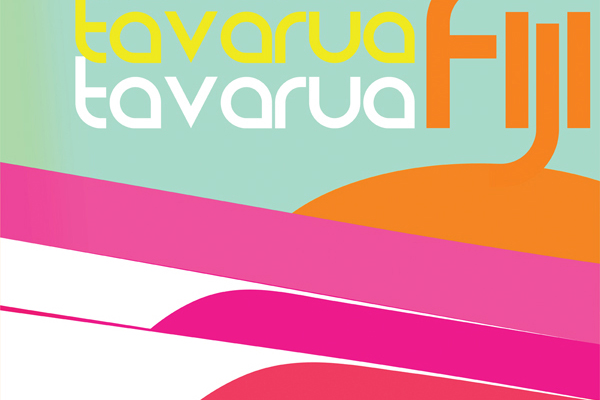
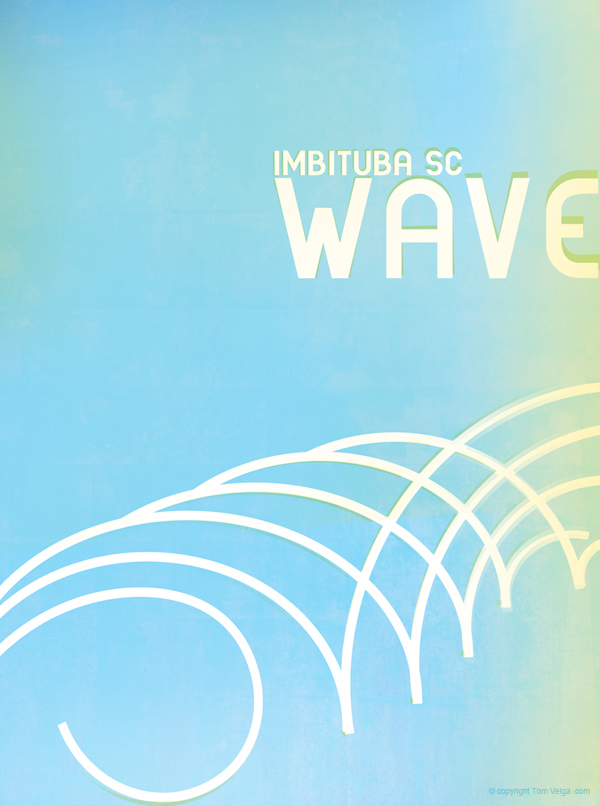
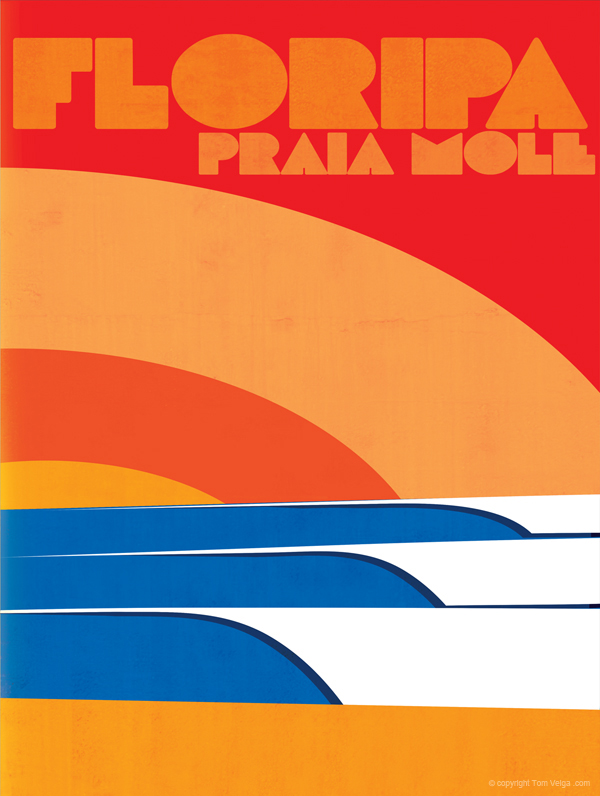
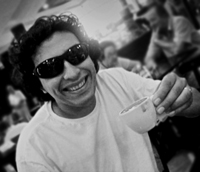
Felipe Siebert Interview
Felipe Siebert is a Brazilian surfboard maker who creates his shapes in wood. Choosing to be a part of the longboard community sets him apart from the rest of his fellow surfers. Felipe explains what it means to pursue his passion and create a different culture.
What was it like growing up in Brazil?
I had a good structure, both financially and with family, so it was easier for me to develop myself. I began practicing sports like football and only really started surfing at 19 years of age. In this period, I was doing a technical course which helped me a lot in the preparation for doing surfboard projects. After I graduated in biological sciences, I steered in the direction of wooden boards.
When did you get your first surfboard?
I made two or three experiments in foam. In 2004, inspired by Grain Surfboards and Tom Wegener, I decided to make a longboard (9’0″ and hollow) to see if it was possible. It worked. It was very thick—but I surfed a lot with it.
What was the feeling you had when you first stood on a surfboard?
When I was young, I was able to stand on bodyboards. But the big event for me was the first time I stood up on my first wooden board. It felt amazing to work for so long on a project and then to be able to enjoy it.
Who did you look up to and admire when you were a young boy?
In my youth, I only knew football. My idols were the players. Then I took a different path that took me to some interesting places. Originally I surfed shortboards because where I live everyone surfs shortboards. Longboards hardly existed and were only used by beginners and people with poor physical conditioning or those who couldn’t surf a shortboard. Later I began to surf with longboards and tried to market them in my area, but there was much consumer resistance. I ended up selling to all of the other areas of the country who appreciated the culture and other forms of surfing.
What inspired you to own your own shop?
After doing my first longboard, I made some for some other friends, and so it began. There is nothing better than working on something that brings joy to people and nothing better than working on what we like to do—making boards the way we think they should be done. I just can’t work sitting eight hours a day wearing a suit in an office.
What is your process for shaping a board?
The boards are made with different types of low density wood in different colors. The project starts on CAD software. All the boards measurements are defined: thickness, width, rocker, V-bottom, concave, etc. The molds are then printed on a 1:1 scale. These molds are then transferred to the wood which then is sawed. This stage requires the most in terms of time and hard work. After being sawed, the parts are positioned and glued on a pre-leveled table so it has the desired rocker. The board begins to present it’s look and has its sides glued, finally followed by the finishing.
Of all the places you have traveled to, what place in particular stands out? And why?
I have not traveled much, but I have several trips planned for the coming years. I’ve been to theUSA (Florida), Argentina and Mexico. Next year, if all goes well, I’m going to California to some events. It will be my dream to see a region that has had such a strong influence on my work. I also want to go to Portugal, Spain and Australia in the coming years. But nothing compares to a special place where I have a beach house. It is called “Farol de Santa Marta”.
Who/what inspires you?
I have admiration for many shapers that led me to do what I do today: Paul Jensen, Tom Wegener, the staff of Grain Surfboards, shapers of the 50’s and 60’s (Greg Noll, Bing Copeland, Rich Harbour, Hobie Alter, Dale Velzy, Hap Jacobs, Dewey Weber, Gordon & Smith) and some of the new generation (Robin Kegel, Dave Allee, Paul Jacinto and others).
What is the greatest thing you have learned in your life?
The work I do has many moments of idleness of mind, so I have enough free time to reflect on many things. I have lived a very quiet and happy life and I try to pass this peace and joy to people. Life is too fast to waste time with bad things. I believe that each person should be able to find a balance for work and enjoy his time doing something he really enjoys—in my case, surfing.
Do you have any regrets or wish you had done something differently?
No. I believe that my life is excellent. I have chosen the right path and I have devoted much time to my boards, skateboards and alaias. I enjoy it because I like to see the results and I’m happy people are also enjoying it. I want to be able to grow my business and I expect to do this in the coming years.
What are you most proud of?
Producing something that makes people happy.
What brings you the most happiness in the world?
Being with people I like, in my beach house in Farol de Santa Marta, with good waves.
Who are some of the people you feel are shaping the path for surfing today?
There are many innovative surfers like Alex Knost, who, with his peculiar style, is admired by some and criticized by others. Joel Tudor has also done much in recent years.
Surfing is so much more than the WCT. It is art, feelings, creativity, experimentation with new sensations. There are always many people working in this direction—shapers, artists, photographers, writers. I think the common goal is to take our focus away the championships and the mass production of products for surf to a more personal side of the trade. There are many people, either famous or unknown, who share this goal. These are the people who do things for the love.
What is in your current quiver? What is your favorite board? Your favorite surf spot?
I have a quiver with a wide variety of models: an alaia; a 5’6″ Siebert fish; some single fins (about 7’0″ from the 70’s); a 9’4″ longboard made by photographer Jair Bortoleto; a regular shortboard; and a 9’4″ Siebert longboard. Soon I’ll get my new Siebert 10 footer! It’s almost ready. I’m as excited as I used to be when I commissioned boards from my shaper.
What’s your favorite meal?
Basic Brazilian food—rice, beans, salad and farofa and a little meat (but not much). I also drink juice every day and, on special occasions, have some good beer and caipirinhas! All foreigners love caipirinhas!
What are you currently listening to on your iPod?
A lot. I love music—Mat McHugh, Tom Jobim, Mattson 2, Oliver Nelson, Ray Barbee, White Buffalo, Will Conner, Piers Faccini, Bedouin Soundclash, Mensajeros, Alexi Murdoch, Soft Pack, Japanese Motors and Zee Avi. These are some of groups on my iPod. I listen to all sorts of styles.
What’s next for Siebert Surfboards?
Now that I have reached a certain level of success with the boards and can develop my work at the level that I believe is good, I can market to people in various places around the world. I want to meet other shapers and explore other possibilities because I feel a little isolated here in my town. We (Brazilians) do not have our own surf culture. We haven’t developed anything. We just buy from and give profits to the large surf corporations.
Anything else?
Surfing began as a form of entertainment, but it took over my life and made me happier. I am often asked, “Why do you love surfing? Why do you spend five hours in the water?” I honestly do not know, but after a good day of surfing, it seems that life is perfect and that I took the best path possible.
More information about Felipe Siebert Surfboards can be found here.
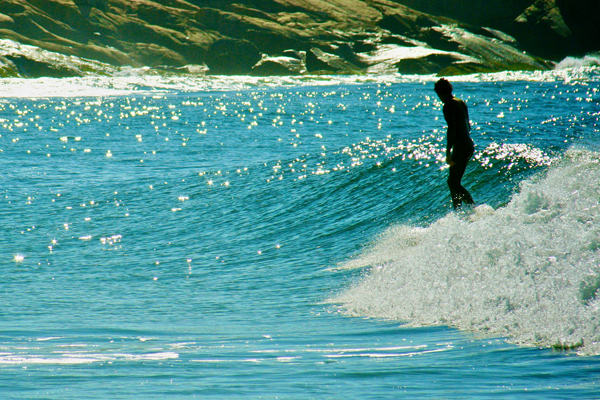
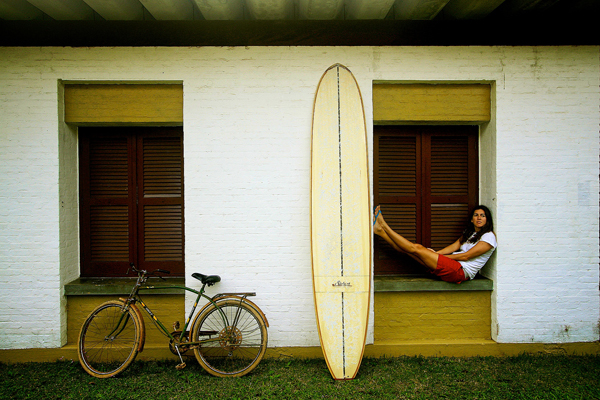
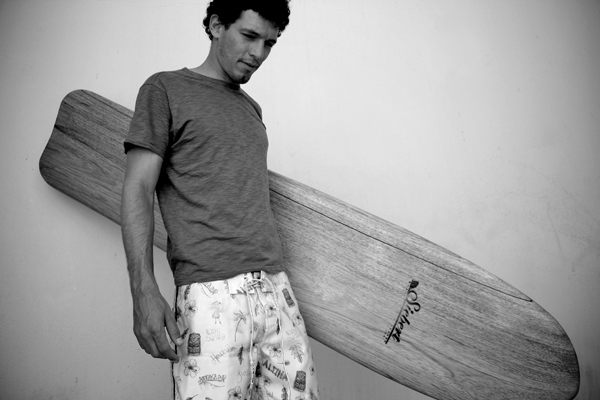
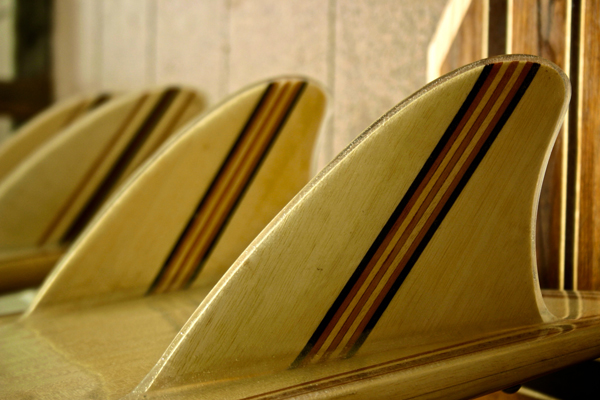
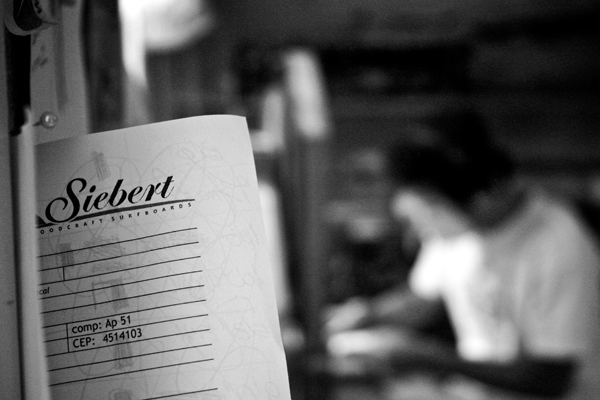
Ed Fladung Interview
Ed Fladung is an American Photographer living in Mexico. He left his job and hectic lifestyle in LA to pursue his passion for surfing, design, and photography. There he fell in love, married, and had a child. We catch up with Ed and ask him a few questions.
What was it like growing up?
I grew up in suburban Westchester, New York in the 80’s. Two things occupied my mindshare as a kid: skateboarding and graffiti. I practiced both with innocent abandon. My family were very supportive of my artistic endeavors. They never went to any of my Little League games but I had a never-ending barrage of art supplies and a new pair of sneakers or skateboard when the old one was on its last leg.
Croton-on-Hudson, the town that I lived in, was quite small. I was the only skateboarder for miles. At different points of my childhood, kids would pick the sport up and we’d become friends, and then seasons would change and I’d find myself amongst a new group of recent converts. To feel connected to the larger skateboarding culture, I devoured skate/surf mags consuming the latest trends.
I was also very into scuba diving as a kid. On a trip to Turks and Caicos, my father and I got certified. I was 11. My father tells a story of me on my back at 110 feet with the regulator out of my mouth blowing air rings as they float towards the surface, slowly expanding. Going on a few trips a year (scuba diving) really connected me to a water lifestyle.
When did you get your first surfboard?
2004. I bought my first surfboard shortly after my 30th birthday, two days before I moved to Nayarit, Mexico after having lived in Hollywood and the LA area for 10 years (and never having learned to surf!). It was a 7’6″ Roberts funboard. It really taught me to use the entire length of the board. A few months later, I upgraded to a slightly used 6’2″ Al Merick Flyer II and a few months after that I bought 5’7″ Zippy twin keel fish. Those boards taught me how to ride the tail. They took good care of me.
In August of ’04, I had spent two weeks in Mexico, deciding whether I wanted to stay long-term. Our family friend, Michael, was visiting and, coincidentally, he took me out to what is now my local break and taught me to surf over the course of a week. In a large part, surfing was one of the main factors in my decision to make the move. I was hooked.
What was the feeling you had when you first stood on a surfboard?
My body instantly understood the glide. It took a few sessions to get the technicals, but my body knew it was home. Surfing just felt so right. But more so than just standing up, I identified with the entire experience—the paddling, the wait, the environment, the view, the water, the sea life, the waves, the glide, the solidarity and the solitude. That last combo is a big factor in why I really love surfing.
Who did you look up to and admire when you were a young man?
For my internal compass, I looked up to my parents and various family members, all interesting individuals. For cool factor, definitely Gonz (Mark Gonzalez), the Bones Brigade, all the bands whose music I devoured. For art, Keith Haring, Warhol and Basquiat. And later on at CalArts, I admired all of my teachers and fellow students. For professional graphic design practice, I identified with the work of Milton Glaser, David Carson, Vaughn Oliver, Rudy VanderLans, Phil Baines and The Designers Republic.
What inspired you to begin shooting images?
While growing up, my dad dutifully documented our family in photos, but he also used photography as an art form; he was always into abstract forms and composition. I was aware, from a young age, that the camera could be just as much an art form (like a paintbrush) as it is a documentary medium. In high school, my dad bought me a Pentax and for awhile I studied photography and the photo printing process. My photos essentially got me into art school, but I elected to study graphic design instead. I took photos on and off through school, but for the most part let it go.
When I moved to Mexico, I bought a cheap little point and shoot and a Lomo. I pushed the boundaries of that point and shoot, and soon after I upgraded to a DSLR. At first, my photography was more to visually complement the stories I was writing on my blog about my new experiences in Mexico. After a few years, my writing started to take a backseat to the stories I was telling with my camera.
What do you look for in a good photograph?
I don’t really concentrate on technical aspects: surfing ability, digital vs. film, focus. I’m more looking for a feeling. Very rarely, with my own photos, do I know what I have when I’m shooting. A good portion of magic happens in the editing process. It took me years to be able to edit with restraint, showing only the most crucial bits, telling a story in a compact sequence or group of images.
Lately, I have been trying to tell a story in one photograph, and sometimes that story comes out of the photograph itself rather than the scene the camera was capturing. Something unexpected and random—trying to find a feeling, playing, pushing photography as a documentary medium, but also something with more of a personal voice.
Of all the places you have traveled to, what place in particular stands out and why?
I’m relatively new to surfing, so I haven’t had the chance to make too many surf mecca hajjes. Bali was amazing. My wife and I went on the off-season twice and though the waves were smaller, I enjoyed the bukit spots so much. Nusa Dua kicked my ass and the locals were calling it three feet (overhead in my terms). Bali is the most beautiful place. Ubud in the rainy season … I could live there easily if my wife ever gives the green light. My wife and I traveled throughout Southeast Asia and India. India really blew my mind. For a photographer, it has endless inspiration. The Caribbean side of Mexico has one of the most special qualities of light I’ve found so far.
Who/what inspires you?
My wife Marcia and my son Luca both inspire me in so many different ways and keep me grounded. My whole family—I’m fortunate to be part of a very eccentric, funny, sweet, artistic, loving, tight-knit family. Without them, I’d be a Wall Street banker.
Surfwise, I started surfing very late in my life, in Mexico, so I naturally gravitated to the internet for inspiration and found it in all the really cool surf-related blogs and websites that have been blossoming over the past five years. I still look towards all these really awesome people putting out daily stoke and inspiration. For that, the internet is a beautiful thing.
Somewhere along the way, Michael, the same guy who taught me to surf, gave me a copy of publisher Tom Adler’s Surf Contest photo book by Ron Church. It blew my mind into tiny pieces. It was the first proper surf photography book I owned and it started my surf photography education in earnest.
I also draw heavy inspiration from art, art culture, technology, architecture, futurists, curmudgeons, music, politics, buddhist philosophy, graphic/web design, psychotherapy, fashion and just about anything that combines any of these different disciplines.
What is the greatest thing you have learned in your life?
Compassion and empathy.
Do you have any regrets or wish you had done something differently?
I’m not sure I’ve lived enough to have major regrets yet. I think, if I could do it differently, I’d love to have been in my late teens during the early 60’s in Southern California and in my early twenties in the early 70’s in Hawaii on the North Shore. That’d be an ideal life.
What are you most proud of?
My son, Luca. I’m a new dad!
What meaning does surfing hold for you and how has it changed your life?
The act of sitting out in the water staring at the horizon for long periods of time … waiting. The hairs on my neck standing up as the set waves roll in. The moment the wave’s energy and board’s energy connect and synchronize to catching a wave and sliding. For me, surfing is as much a meditational practice as a physical event. It equalizes me and not necessarily in some blissed out way; it’s often more subtle. A stressful couple of days and after a trip to the local break, my mind has less static. Surfing is largely responsible for helping me make the decision to move to Mexico; without it, I’d probably have a very large therapy bill.
What brings you the most happiness in the world?
Every day I get to wake up, play with my boy, kiss my wife, do some work, create some art and go surfing. What else could be better?!?
Who are some of the people you feel are shaping the path for surfing today?
I’m a bit removed from surf culture’s core by way of geography. I’d have to say the surfy bloggers, of course. They are who I’m connecting with. People from all over the world—from Southern California to Brazil, Peru and Cornwall. People that are surfing, snapping photos, making art, shaping boards, traveling, putting on art shows, surf contests, planting gardens, rescuing sea life, thinking about the future, helping the less fortunate and doing it all while sharing it selflessly online. Never before has stoke been so widely accessible. There are constantly new pockets of surf culture that are coming online every day. It’s a very exciting time to be a surfer and surf-inspired artist, I think.
What is in your current quiver? What is your favorite board? Your favorite surf spot?
9’0″ San Miguel noserider, 6’2″ Al Merrick Flyer II, 6’2″ Michel Junod single fin egg, 6’0″ ATLSurfboards potato chip and, my newest acquisition, a 5’7″ ATL twin keel fish which I’m head over heels for. I alternate a lot between the fish and the log. We get long patches of flat here in Nayarit, so I ride the longboard a lot of the time. I love that board. It’s a total water log but it has really nice noserides. My favorite surf spot is called Dinosaurs. It’s a ledgy, fast, right point break. It only really breaks during the summer southern swells, and when it gets above head, it gets hollow and heavy.
What’s your favorite meal?
I’m a total foodie; I love eating. But if I had to narrow it down. I’d probably say Indian food or Vietnamese Phở. I am a Phở addict. When I go back to Los Angeles, I camp out at Phở Café in Silver Lake. The irony is that neither can be found within a thousand miles of where I live.
What are you currently listening to on your iPod?
Edward Sharpe and the Magnetic Zeros, Discovery, The Very Best, Girls, Beirut, Sufjan Stevens, Miike Snow, Passion Pit, Justin Hines, The Dodos, Cass McComb.
What are you most grateful for?
To never have to commute in traffic ever again if I can help it.
What’s next for Ed Fladung?
Working on cool design projects, collaborate with awesome peoples and clients. Try to get my photographs more widely seen—into shops and galleries. Continue trying to get my book published (collection of stories and photos from my blog). Watch Luca get older too quickly. Read more books. Shape my first alaia (waiting for the wood to dry!). Take a sojourn down to Michoacan for some waves and spend a night or three in a sleeping hammock.
More information on Ed Fladung and Quality Peoples can be found here. Ed also writes for the surf publication Drift.
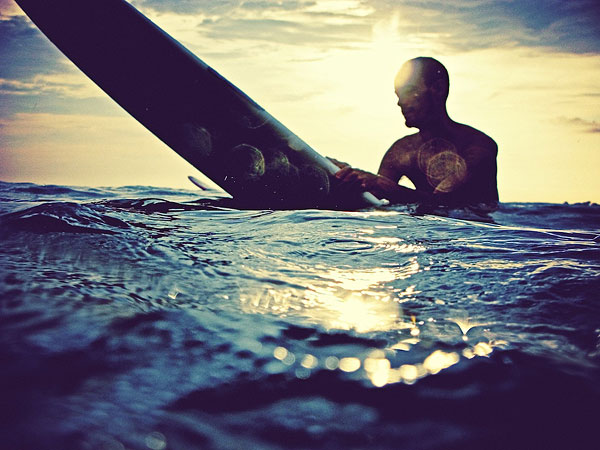
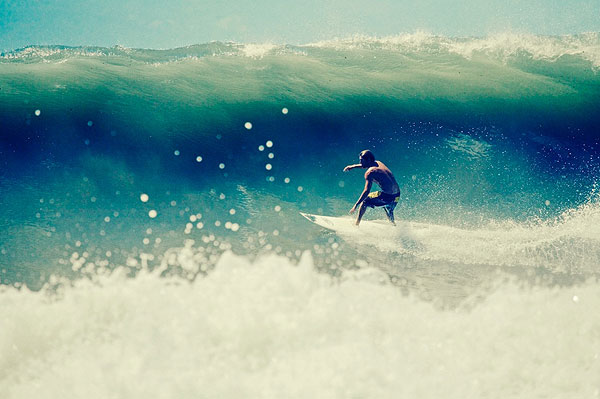




Cori Schumacher Interview
Cori Schumacher is a young California surfer who just happened to win the Pipeline Pro. But just below the competitive surface, she is a profound and deep individual. We got the opportunity to talk to Cori and take a closer look at that amazing energy.
What was it like growing up in California?
Growing up in California—after being born at home on California Street in Huntington Beach, CA—was all flip-flops, bathing suits and long hair. My parents, my sister and I were constantly at the beach. There was rarely a time when my bed did not have sand in it. We’d pack my dad’s truck full with surfboards, long and short, wetsuits, skateboards, umbrellas, submarine sandwiches and Doritos and hang at the beach all day on the weekends. We would surf, skate, surf—then walk to 7–11 to buy Slurpees, Charleston Chews, Snickers and Butterfinger when we would surf Cardiff. When we would make the summer trek to San Onofre, my sister and I would build forts in the bamboo and search for treasures in the bushes. During the weekdays, if we didn’t get to the beach, my sister and I would play outside, challenging the neighbor boys to games of street hockey or hide ‘n’ seek. One of our favorite games was pretending to surf down the cul-de-sac on our skateboards. I got in trouble quite often for not making it in before the streetlights came on.
When did you get your first surfboard?
My parents bought me my first board, a blue and yellow single-fin softboard, when I was 5 years old.
What was the feeling you had when you first stood on a surfboard?
I remember feeling very comfortable on my first couple of waves. The first time I caught a “green face wave,” I felt pure exhilaration. I still get this feeling occasionally. I can’t predict when it will happen. It has happened during contests and during random surf sessions.) But it is a feeling that rises in pulses from the base of my spine and curls up over my head. It’s like runner’s high on steroids.
Who did you look up to and admire when you were a young girl?
When I was a young woman, the female surfers I admired most were Rell Sunn, Lisa Andersen and my mom, Jeannette Prince. I also had a thing for Jane Austen, Helen Keller and Mary Lou Retton. I loved and looked up to my father, Craig Schumacher, as well and soaked up everything he said and did, whether it was construction, philosophy or surf-related.
As my world expanded beyond school and surfing, I began to incorporate role models from outside of surfing, women like Gloria Steinem and Maya Angelou, who rose above societal barriers with their own unique recipes of grace and courage. I had, and still have, a weak spot for tortured artists, so I ravenously consumed books by and about Sylvia Plath, Anne Sexton and Arthur Rimbaud. I found Walt Whitman and The Beats satisfying beyond recompense and devoured, over and over, their shared dharma—bums though they were.
To this day, women and men who challenge the status quo, and dare to step beyond the limitations established by their peers and society-at-large are those I admire most; specifically those who understand that black and white vision eclipses the rainbow of diversity that is the promise of change. What can come of embracing change but knowledge? Those who dare embrace change, or who are themselves change, are those I want at my hearth, sharing stories with me when the night falls.
What was it like to win Women’s Pipeline Pro? How did you prepare for it?
Winning the Pipeline Pro was a tremendous moment in my life. There are a lot of nerves going when you have to surf a contest. Multiply this by a wave like Pipe and the tension was nearly too much to bear. Every morning we would wake early to surf before the event started, only to be told that the contest would be held off. The waiting period seemed to go on forever. The tension would build, then I would have to find some way to release it. Running, yoga, rock climbing—anything to release the buildup of energy.
There have been few moments in my life where I have committed so utterly to something outside of myself. I trained for months before this event, harder than I have trained in my life. Donald Takayama shaped me a special board that I ended up loving. I surfed a bunch in Australia before heading to Hawaii and was lucky enough to get a couple of really large days under my belt before they ran the contest. I also had a good crew of people surrounding me (Maria Cerda, Ashley Lloyd and Leah Dawson) who were integral to the health of my emotional and mental landscape.
Of all the places you have traveled to, what place in particular stands out and why?
The one place that stands out the most is Tahiti. My dear friends, Kelly Sloan, Jaime Lagardere and I went on a surf trip when we were 17, 14 and 16, respectively. This was our first big trip away from home. We went to Tahiti first and stayed with local host families who had kids who also surfed. While Jamie had it made in a home with windows, doors and hot water showers, Kelly and I ended up being lodged in homes that had no windows, mildewy mattresses and cold bucket-showers. But it didn’t matter. We surfed in the rain, ate bizarre chunks of meat and avocado the size of our heads. We drank too much Tahitian jet fuel (giving me the first hangover of my life but not the worst—that would be a week later in Indo), got stung by sniper mosquitoes and met our first transsexual.
It was the best trip of my life. Not only was I with my two dearest friends, but we were embedded in the lives of these people for nearly a week and a half. No one could speak each other’s languages, but somehow we managed to learn the worst possible Tahitian and French words in either language. Jamie, Kelly and I still sometimes greet each other using profane vernacular from that trip. Everyone cried when it was time to leave. It didn’t matter what we did or didn’t have in the homes we stayed in; it was about the relationships we formed while we lived with our Tahitian families.
Who/what inspires you?
I just met a woman today who described herself as terminal. She had me laughing so hard my sides felt like they were going to split. We got to talking about love, respect and admiration. Why is it that those who know how short life is, because they or a loved one is brushed with death’s shadow, are the ones who have the courage to say that LOVE is more important than anything? I am inspired by those who reach beyond their own personal comfort zones to stand up for LOVE.
LOVE is still a revolution, regardless of our evolution.
What is the greatest thing you have learned in your life?
The time will come
when, with elation,
you will greet yourself arriving
at your own door, in your own mirror,
and each will smile at the other’s welcome,
and say, sit here. Eat.
You will love again the stranger who was yourself.
Give wine. Give bread. Give back your heart
to itself, to the stranger who has loved you
all your life, whom you ignored
for another, who knows you by heart.
Take down the love letters from the bookshelf,
the photographs, the desperate notes,
peel your own image from the mirror.
Sit. Feast on your life.
—Derek Walcott
Do you have any regrets or wish you had done something differently?
I regret waking late upon the day my heart felt safe enough to return home.
What are you most proud of?
Waking from a 10 year slumber.
What meaning does surfing hold for you and how has it changed your life?
I don’t remember a time when surfing and the ocean haven’t been in my blood. My mother surfed until she was 8 months pregnant with me. I have joked that “I just don’t understand land people’s ways.” I have taken some hiatuses from surfing, but even in these times, I could feel the ocean moving deep within me, directing my thoughts, my emotions, my perceptions. Riding waves, understanding in my sinew and bone how energy moves, being able to tap into the momentous emotional/mental/physical unity that surfing demands is my worldview, my ideology.
The act of surfing is, in itself, a dance of union, a human act that binds, for one moment, finite individual with infinite energy. My father’s father used to say that using “a surfboard was for pussies,” that real surfers were the ones out in the water riding waves like dolphins. He used to take my father out into the ocean when he was a boy, in the pitch black of old Mexican nights. They would surf blind to all but the feeling of the energy of the ocean and waves on and around their bodies. I walk through life feeling energy around my body like water, blind and deaf to the surface of things, conscious of the rise and fall of human emotions, aware of the larger tidal surges that surround me in the sea of humanity. There is only ocean. There is only surfing.
What brings you the most happiness in the world?
Some days it’s good music, good food, good friends and laughter. Other days I am most happy immersed in thought, reading or writing nothingness to nobody.
Who are some of the people you feel are shaping the path for surfing today?
I definitely see Linda Benson shaping a path for women longboarders. I am really paying attention to Kelly Slater these days. I am interested to see what comes of his new tour ideas. On the other side of things, guys like C.J. Nelson and the CityFog Surfboards crew are pushing noseriding beyond. And never count that Tudor cat out; he’s always got something up his sleeve.
What is in your current quiver? What is your favorite board? Your favorite surf spot?
My current quiver consists of three Donald Takayama boards, one Ashley Lloyd design and one Simon Anderson thruster. My current favorite board is buckled in five places. It is a superlight epoxy comp board that Donald shaped. It is one of his rounded pintail, 2+1 noseriders with a little extra rocker. I have ridden it to death, from Hawaii to Oceanside Harbor. My Ashley board is a dead even tie with this one. It is a single fin, biofoam log she calls “The Speedsticle Series I”. I am in love with this board. My favorite surf spot currently is O’side Harbor, though I surf the campgrounds in Encinitas just as often.
What’s your favorite meal?
A huge, homemade tossed salad. I throw everything I can find over a bed of organic greens, including, but not limited to: artichoke hearts; corn; green onion; beets; carrots; broccoli; bell pepper; sprouts; garbanzo beans; quinoa; chicken or tuna; almonds; walnuts; cranberries; goat cheese or Tillamook cheddar; ranch and/or greek dressing. My salads are massive and could feed small countries.
What are you currently listening to on your iPod?
Right now, I have a bunch of PJ Harvey, Saul Williams, Tool, A Perfect Circle, The Knife, Ladytron, Doves, Metric, The Dead Weather and Grizzly Bear on repeat.
What are you most grateful for?
I am most grateful for what surfing has brought into my life. From perspectives on life and living to friends and experiences, my life would not be the richly diverse, vagabond road it has been if not for surfing.
What’s next for Cori Schumacher?
I’d like a nice cup of tea.
More information about Cori Schumacher can be found here. All photography by Maria Cerda with the exception of childhood photos by Jeannette Prince.
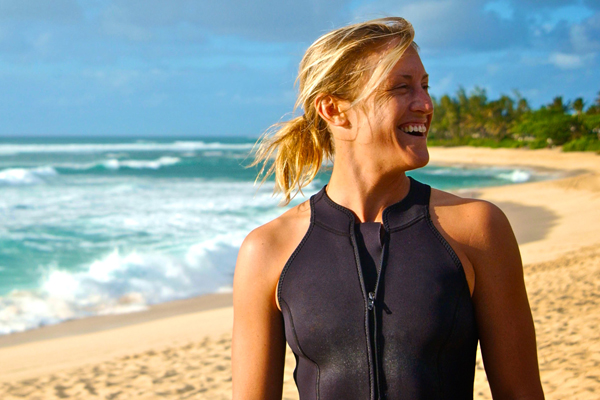


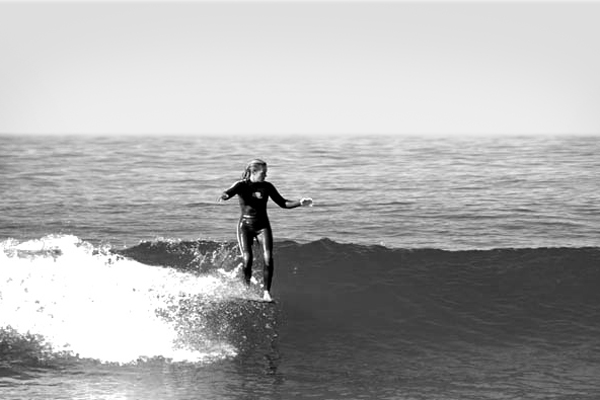
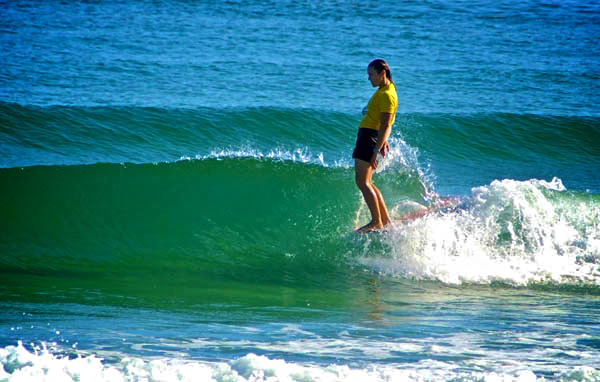
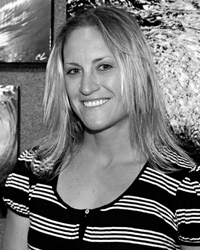
Sky Walker Interview
Skye Walker is a California artist and surfer who is devoted to living out his dreams. His creations are rich, dynamic paintings that are emotional, moving, and connected to the rhythm of the ocean. Skye shares with us his heroes and his unique perspective.
What was life like growing up?
My parents, Morris and Lynn, were entertainers and they performed all over theUSAand overseas (entertaining the troops in Vietnam) as well as singing and doing comedy. When my sister, Amoris, and I were old enough, they brought us into the show and we formed a family band called The Earth Walkers. We performed all over theUSAfor schools and community centers with a message of saving the environment. I played banjo, dad guitar, mom and sister sang and we did a bunch of comedy.
It was a different upbringing for sure, but one I’d never change. We moved around a lot before and after our tours of the States. This made it hard to be by the ocean all the time, thus making it hard to surf, but when I could, I certainly would.
Who did you look up to and admire when you were a young man?
I’d say Bruce Lee. I watched a lot of his films growing up and read some of his work and studied martial arts at times. Talk about a guy who
was purely devoted to his passions and dreams, and wasn’t going to let anyone stand in his way! One of my favorite quotes of all time came from Bruce, and it relates to everything including surfing: “Empty your mind, be formless, shapeless—like water. Now you put water into a cup, it becomes the cup. You put water into a bottle, it becomes the bottle. You put it in a teapot, it becomes the teapot. Water can flow or it can crash. Be water, my friend.”
When did you get your first surfboard?
I started surfing when I was 15, but didn’t get my first board until I was 19 because I was living in Oregon and didn’t get to go as much as I wanted to. It was an old
9′ 6″ Donald Takayama noserider that was beat up. It broke on an average size day of surf after having it for a month.
What was the feeling you had when you first stood on a surfboard?
I think it’s the feeling that everyone gets when they first stand on a board and ride a wave—stoked, completely stoked.
Where did your interest in art come from?
My dad did a lot of art and graphic design while I was growing up, but I always drew as a kid at home and in school. Whenever I was bored, or had a pen and paper, I would doodle.
I have boxes and boxes of drawings I did when I was a kid. I would sit in my room and just draw. Even in high school, I was perfectly content with sitting in my room with my music on and drawing and painting for hours on end. When I was nine years old, I sent a drawing to Garfield creator Jim Davis. He wrote me a letter back, saying “good job” and keep it up. That letter inspired me to pursue a career and lifestyle as an artist. Of course, I was an impressionable nine year old, but I haven’t lost interest in it yet.
What is your process when creating your art?
Lately I’ve been working pretty organically—meaning I’ll get an idea, and just go for it with minimal or no sketching … unless it’s a commissioned piece. Then I will do a detailed sketch first. But it’s been pretty liberating to just paint and draw and see what happens. I’ve been really interested in lots of layering and textures underneath the subject matter. It is appealing to the eye, both close and from a distance. Even if it’s just the pencil lines or the start of the painting that I didn’t like and lightly painted over, it creates an interesting depth to the piece.
This has also led me to not hang onto something that I’ve just painted too tightly; if I don’t really like it, I’ll paint over it. I never used to do that. I would get down on myself for not getting it right the first time. Art is all about change—you can always change it and make it better.
Of all the places you have traveled to, what place in particular stands out? And why?
I recently went to Panama on a surf trip, and it was such a lush, beautiful, tropical environment. Out in the country is so far removed from the city
and junk, and it’s just nature. The locals who live out there don’t care about technology, pop culture or any of the things we are inundated with every day. They farm and hang out with their families in a simple, country living lifestyle. Simple living equals less stress. I also just went to Big Sur. What a magical coastline that is. I hope it stays that way.
What is it that makes you such a nice person? What code do you live by?
My mom always said to live by the Golden Rule—“Do onto others as you would have them do onto you”—so I try and abide by that. And I try and make people laugh a lot. There is nothing better than making people smile and laugh.
Who or what inspires you?
Nature, surfing, music, the female figure, and artists who are doing their own thing and not worrying about what others think.
What is the greatest thing you have learned in your life?
That everything happens for a reason. And mom was right—eating your veggies is good for you!
Do you have any regrets or wish you had done something differently?
That I didn’t invest in energy drinks when they first came out. I’d be rich right now!!
What are you most proud of?
I guess that I’ve always known that I wanted to be (an artist) and I’ve stuck with it. I know a lot of people who are talented artists or have potential, but they let it slip away so they could get a job or they just didn’t stay focused. I’m not a great artist by any means. I will always strive to be better. However, I will always be an artist no matter what. I’m also very proud of my family.
What meaning does surfing hold for you and how has it changed your life?
Surfing is such a personal sport. You don’t need anyone else to do it with, and it’s all about just being in the water gliding along and enjoying yourself. You also have to push yourself to become better, but you do it at your own pace. Surfing is not how it looks to others. It’s how it feels to you. I have always loved the ocean and, like so many, have been drawn to it. If I’m feeling uninspired, sad, upset or just want to get some waves, it’s right there waiting for me no matter what.
What brings you the most happiness in the world?
Making others happy.
Who are some of the people you feel are shaping the path for surfing today?
Dang! Tough question. Off the top of my head, Kelly Slater is still unreal. Dave Rastovich is forging ahead with environmental endeavors and he’s not just being a “pro surfer” and Steve Barolotti is an amazing journalist who writes stories that help people understand the sport of surfing and its subtle qualities based off his travels and experiences. To understand where the sport is going, you have to look at its past, and Joel Tudor, aside from being an amazing surfer, has always been a big proponent of understanding the history of surfing and respecting it. But there are so many other surfers, shapers, artists and organizations that are doing so much for the sport. It’s hard to point them all out.
What is in your current quiver? What is your favorite board? Your favorite surf spot?
Currently I have a 10′ Hobie Vintage longboard, 6′ 6″ Hobie Retro Egg, a 5′ 8″ Hobie Circa 71 fish (currently my favorite board), a 5′ 10″KGTwinzer that I’ve beat to hell, a couple other fishes and three thrusters. I like to mix it up depending on the conditions, plus it’s fun to ride different boards.
I have a new 5′ 10″ quad Wood Custom Surfboard on the way. I think this will be my new favorite board. Micah Wood is a talented shaper and has a great future ahead of him. (Check out his boards at: www.woodcustomsurfboards.com.)
My favorite surf spot is Swamis. But as long as I’m catching some waves and having fun, that’s all that matters.
What’s your favorite meal?
Dang! Too hard to answer. So much good food out there. Lately I have become a huge fan of a good veggie breakfast omelette with a side of toast, butter and jam. It’s quite choice.
What are you currently listening to on your iPod?
The Black Keys, Junior Boys, The Black Angels, Stellastar, Band of Horses, Cut Copy, Ray Lamontagne, to name a few.
What causes, projects or organizations do you support?
Currently I’m working with Pro Peninsula andCERF(Coastal Environmental Rights Foundation). I think it’s really important to support non-profits that are trying to make a difference in, not only the surf world but, the world itself.
What’s next for Skye Walker?
I’m working on some new art and trying to figure out where to do the next show. I have to wrap up a couple commissions for some clients; homes, which is great. I also just started a small t-shirt line called Glide (www.glidecollection.com) with my friend, Mark Connelly. We donate a portion of the proceeds to Pro Peninsula, which is dedicated to strengthening individual and community efforts to protect the natural environment throughout the Baja California peninsula. They are doing great things for the environment down there and this is one way we can help out. We are currently working on some new tees which we hope to have out before the holidays.
And other than that, I’m just blessed to live where I live, be healthy and have amazing friends and family. Without these people in my life, I wouldn’t be who I am today.
To learn more about Skye Walker and his art, click here.
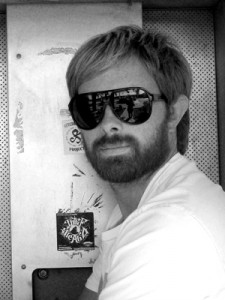
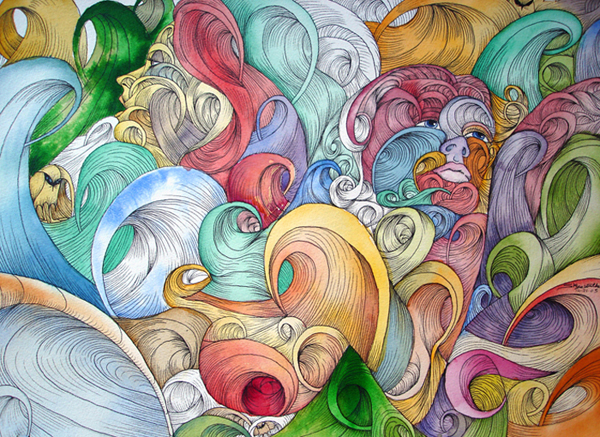
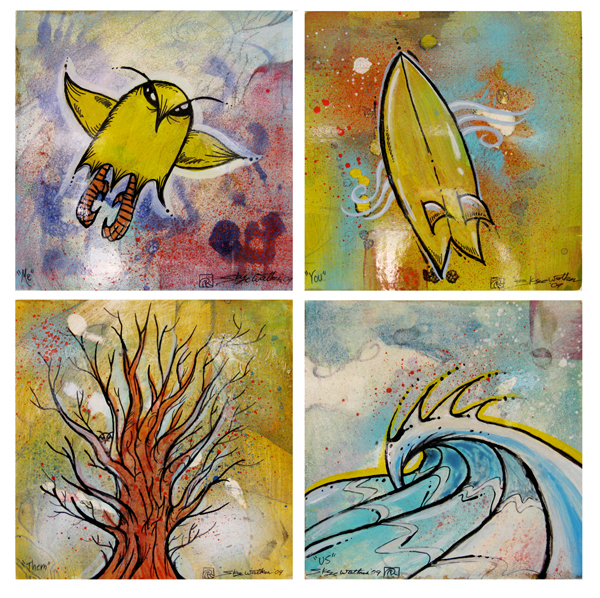
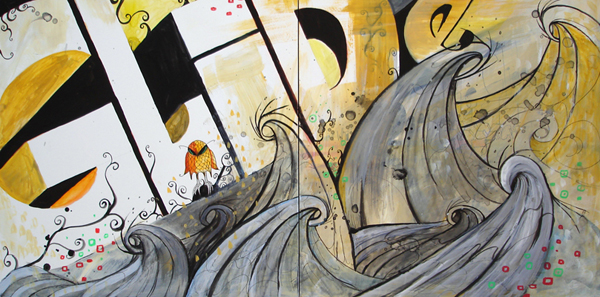
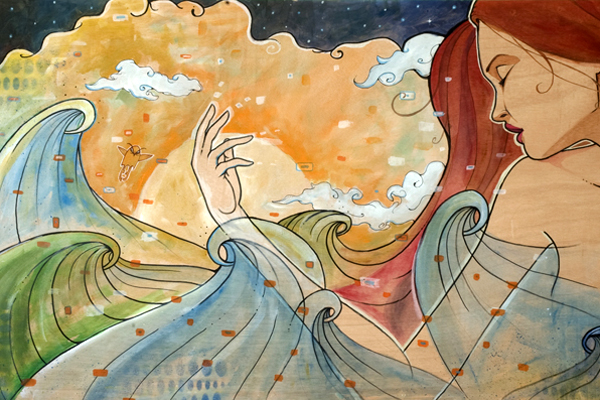
Dave Allee Interview
Dave Allee is the owner of Almond Surfboards in Newport Beach. At 24 years old, he represents a new breed of surfer/shaper/shop owner who is taking full control of his creative output. We interview him as he juggles the responsibilities of running a business and just having fun.
What was it like growing up in Newport Beach?
It was great. I didn’t really realize it was somewhere to be coveted until high school, when they started making movies and shows about it. Newport is rad because you can bike everywhere when you’re young, or even now, during the summer. Being a short bike ride away from the beach is something I hope to never take for granted. And Newport is interesting because so much surf culture and so much of the surf industry is here. RVCA, Hurley, Volcom, Quiksilver… it’s all right here in Orange County.
When did you get your first surfboard?
I don’t think I got my own surfboard until 7th grade. It was a 7’8 tri-fin. I surfed it for a few years, but I’m happy to have moved on to bigger and better surfboards.
What was the feeling you had when you you first stood on a surfboard?
I was in elementary school. I was probably filled with excitement and a little bit of terror. I wasn’t “hooked” on the feeling until years later.
Who did you look up to and admire when you were a young boy?
My Dad, for sure. The reason I got into shaping was because I wanted to have some creative projects to work on with him. That’s what inspired the solid balsa singlefin we made a few years ago. That’s where it all began.
What inspired you to own your own shop at such an early age?
To be honest, I was a bit opposed to starting a surfboard/clothing company because it seemed overly cliché. But I was really enjoying the creative outlet that shaping and art was providing. And it was a fun project to get friends involved with… so I kinda couldn’t resist. The shop came about in January of this year, when things were starting to grow and progress a ton for us, and I was feeling ready to quit my job and devote my time solely to Almond. It just seemed like a natural progression for us, with the direction things were heading. The shop has been incredible. It’s been no small task, but I’m thrilled with how it’s gone thus far.
What is your process for shaping a board?
We do all of our shaping by hand. I’m kind of old fashioned in the sense that I put value in doing things “the right way.” There are so many talented people out there, and I think it’s important to honor the craftsmen and excel in your field. Rather than machining our stuff when things got busy, we brought Griffin Neumann-Kyle onto the team to help share the workload. One of the best decisions I ever made. It took a few boards for us to get on the same page, but now things are going super smoothly and we’ve got a great system going. He’s such a talented shaper, I’m so stoked to have him around.
Of all the places you have traveled to, what place in particular stands out? And why?
Africa for sure. No matter how much you think you know what it’s going to be like, you will still be blown away. I don’t want to say too much, other than I would hope that most everyone could visit there at some point in their lives.
Who/what inspires you?
Wow, that’s tough… I draw inspiration from so many places. Obviously there are people in the surf industry who are incredibly talented who I draw inspiration from. Guys like Terry Martin, Andy Davis, Tyler Warren, Kyle Lightner, Cyrus Sutton, Nathan Oldfield, Thomas Campbell, Mitch Abshere, Tom Wegener, Nathan Adams, Alex Knost, Dan Forte, John Cherry, Levi Prairie,JJ Wessels, Mason Jennings. The list goes on and on.
There is inspiration everywhere though; so many aesthetics and attitudes to draw from. Many of the inspirations aren’t even visual. They’re musical or intangible. That’s the beauty of creativity, there are so many things to pull from and draw from and you get to take your own twist on it and make it your own.
What is the greatest thing you have learned in your life?
To recognize the important things in life, and to keep it all in perspective. It’s so easy to get caught up in the moment, and to get worn down by life. But it’s so important to be able to see the bigger picture. I have so much to be thankful for. There are days that are tough, and there are tasks that seem overwhelming, but being reminded of the important things in life helps keep it all manageable. There have been many great lessons in my 24 years of living, but I think perspective is a good overlying theme.
Do you have any regrets or wish you had done something differently?
There are always things we wish we had done differently. Conversations, mistakes, frustrations. But at the end of the day all of our mistakes are learning experiences. And they help us grow up into responsible, reasonable adults. So I don’t think I would go back and change anything.
What meaning does surfing hold for you and how has it changed your life?
Surfing is a really hard thing to describe. On a practical level, it’s just a great way to start the day. I like getting my day started early and getting in the water for a few hours. It’s a unique chance to be outdoors and active on a super regular basis. It’s fun alone, it’s even more fun with friends. It’s smooth and graceful. No wave is ever the same, so there is always opportunity for a new, unique experience and new challenges.
Surfing has been a huge creative and physical outlet and a means to meet a ton of really talented, really cool people. And there’s always that lingering desire to go back for more, no matter how frustrating or fulfilling it gets.
What brings you the most happiness in the world?
At the expense of sounding like a 3rd grader, friends and family, and experiencing life with them. There are so many exciting places to see and things to do in life. And it’s so much more fun to do them with people you love.
Who are some of the people you feel are shaping the path for surfing today?
Definitely all of the same people who I think inspire me, I would definitely say are inspiring the surfing would as well. It’s been great to see things shift away from the big corporation and theWCT and back onto some of the artists and craftsmen who most of the surfing community can identify with. There are a huge number of people doing some really great things in the surf world.
What is in your current quiver? What is your favorite board?
Right now, I’m surfing a 9’6 Almond Log Rhythm. It’s narrow and thick, like the boards they were surfing back in the early 60’s. I’ve been really enjoying it. Because of the thickness, it gets into waves easy and early; but because of the narrow template, it feels lively. It side slips right where you want it in the wave. I’ve also been surfing a 5’10 Kookumber a bunch lately, and having a blast on that. I like the early entry and smooth lines for a board that small. I want to surf a 5’6 version.
What’s your favorite meal?
Seafood. I really like fish and shrimp and most everything that falls under that category.
What are you currently listening to on your iPod?
Mason Jennings is at the top of my list right now. Ray Barbee too. The performance that Ray Barbee and the Mattson 2 put on for the premier of the Present was phenomenal.
What’s next for Dave Allee?
I’m not exactly sure. Plenty of exciting things I hope. We’ve still been continuing to grow and expand with all the different facets of Almond. It still feels like we haven’t even come close to reaching our potential. So, with that in mind, I just want to continue to have fun with all of the Almond stuff, and see where it takes us. I’m hoping to visit Australia at some point in the next year too. We’ll see, there are so many possibilities for the future.
More information about Dave Allee, his boards and his shop can be found here.
Principal photography by Cam Oden. Bottom photo by Kyle Lightner.
